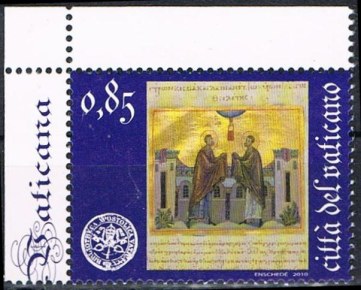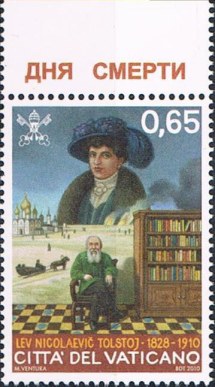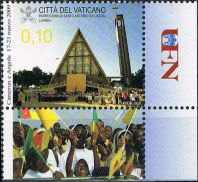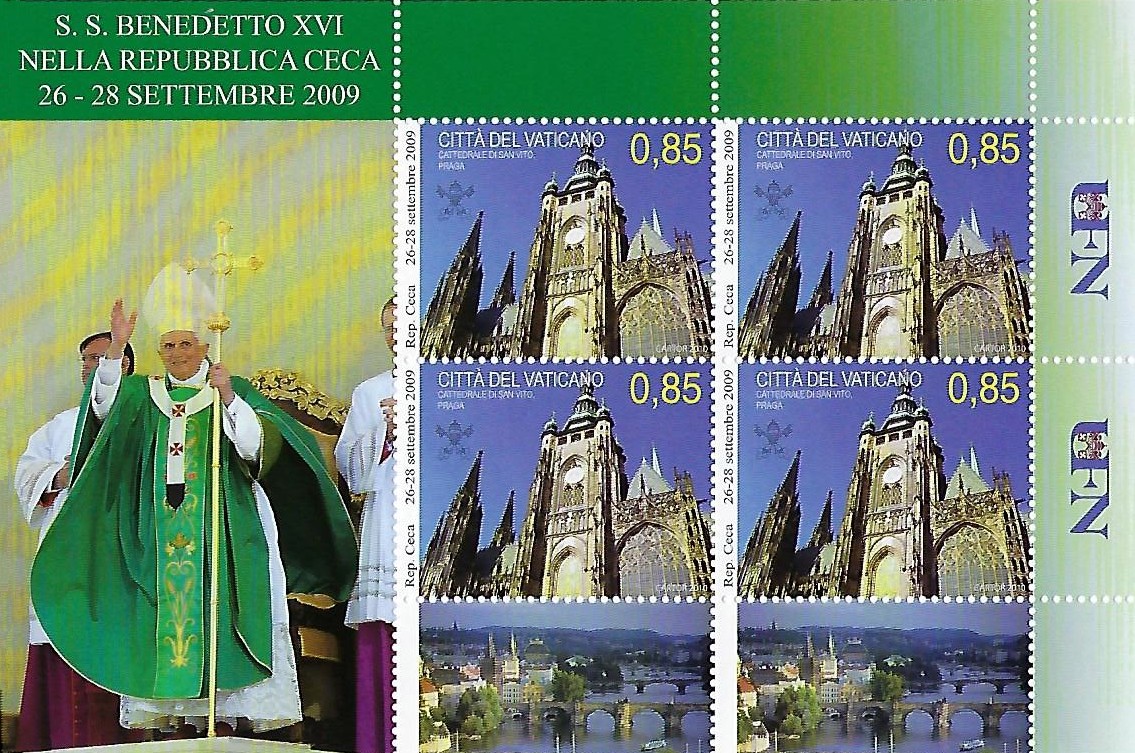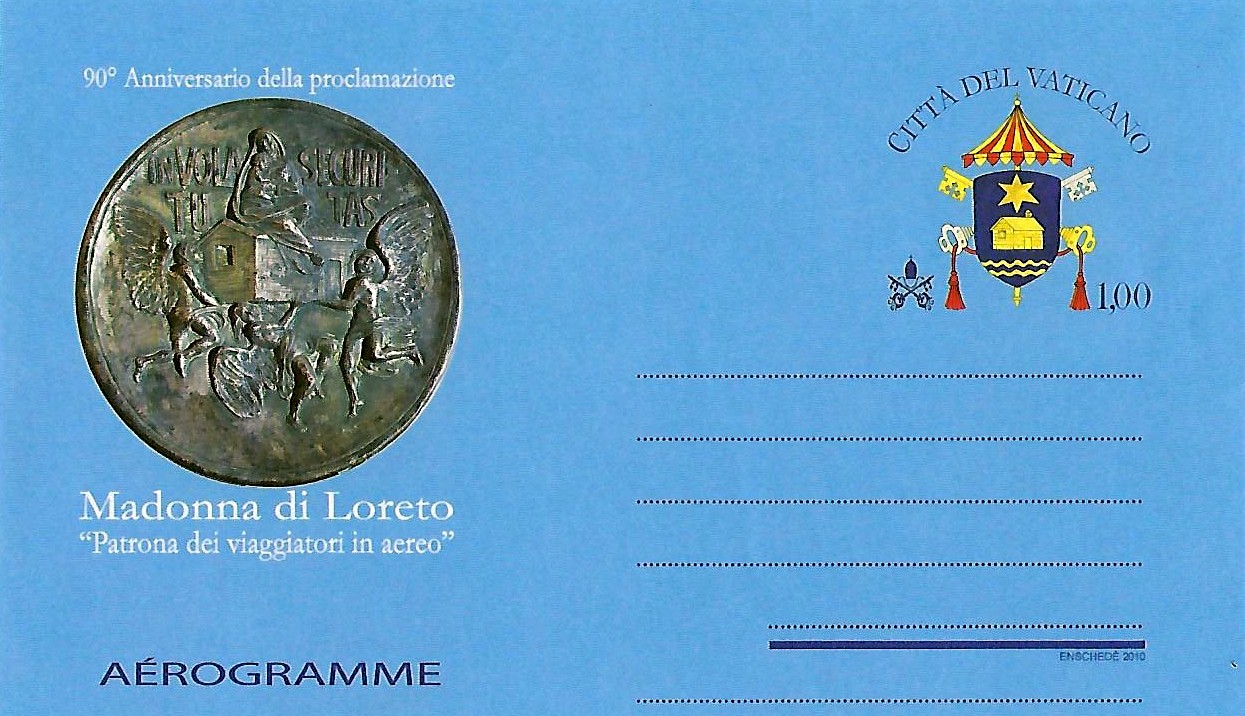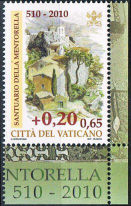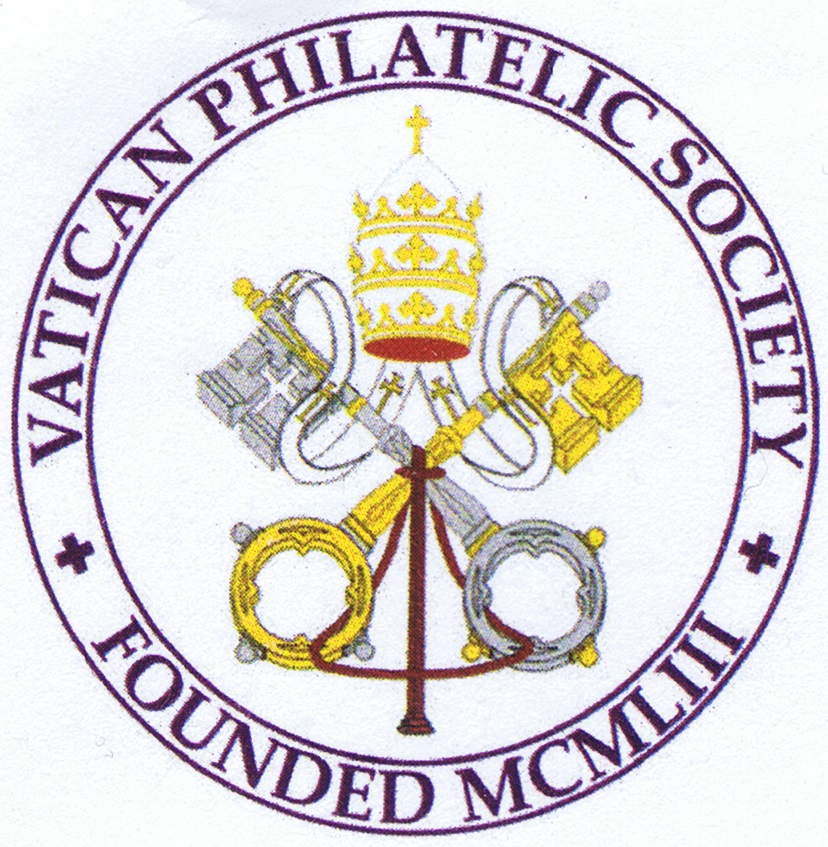
Member






The 1986 International Peace Year Onnibus Issue
On 24 October 1985, the United Nations proclaimed 1986 as an International Year of Peace. A resolution stated. the UNO "...Invites all States, all organizations within the United Nations system and interested non-governmental organizations to exert all possible efforts for the preparation and observance of the International Year of Peace, and to respond generously with contributions to attain the objectives of the Year? The UNO and member states were encouraged "to promote the ideals of peace and give evidence of their commitment to peace in all viable ways."
The Year of Peace effort was almost immediately caught up in international political turmoil associated with the Cold War (1946-1991), with member states reacting to the effort based upon their affiliation with super-powers (U.S.A. and U.S.S.R.), as well as regional conflicts in the Middle East or Africa. for example. The United Nations Educational Scientific and Cultural Organization (UNESCO). sponsored gatherings focusing on disarmament which "...would make it possible to redistribute vast material and intellectual resources for social and economic development and help to prepare the ground for equitable political and economic relations between the countries of the world." Other activities involved artistic works and cultural exchange through international travel.
Peace-related events during the year (and mostly unrelated to the UN resolution) included a meeting by US President Ronald Reagan and Soviet Union leader Mikhail Gorbachev to discuss limitations on missiles at Reykjavik, Iceland. 1986 was also the year of the "Hands Across America" charity campaign. and the first "Goodwill Games" held in Moscow. In contrast, U.S. bombing of Libya due to state sponsorship of terrorism, escalation of Northern Ireland violence, airline hijackings in Karachi, Pakistan and over Greece occurred in 1986. Natural or other crises such as the worst-ever nuclear disaster at Chernobyl, Soviet Union, the destruction of Space Shuttle Challenger by explosion. volcanic eruptions in San Salvador, and Mad Cow Disease represented some adverse events.
One international aspect of the 1986 Peace Year was issuance of stamps world-wide on the theme of peace. The United Nations issued a Year of Peace logo featuring hands supposing an laurel crown and a dove. The concept is somewhat similar to the United Nations emblem. Stamps followed no common design, however. Variations on the UN logo were incorporated into stamps issued in the world- generic Year of wide omnibus issue. Pace logo.
Vatican City issued a set of five stamps to commemorate the 1986 International Peace Year, Scott 768-772. The stamps included four designs based upon Old and New Testament passages and one design featuring Pope John Paul II releasing a dove. The stamps were designed by Luca Vangelli, printed in sheets of 40. perforated 14 x 14. in vertical format, each measuring 25 x 40mm. The Italian State Printing Works (IPZS) printed 650,000 sets. Neither the United States nor Great Britain issued International Peace Year stamps. but many other countries did so. Italy issued two stamps promoting peace through air travel, but with no peace logo proposed by the UNO. Vatican City, UNO, and selected stamps issued which incorporated doves into the design accompany this article.
This article originally appeared in Vatican Notes (Volume 66, Issue 377, Third Quarter 2018, Pages 24-26). It has been lightly edited to include the images of the stamps issued in 1986. Click on the article link in the references below to access not only the original article but images of international stamps not included in the article above.
Reference:








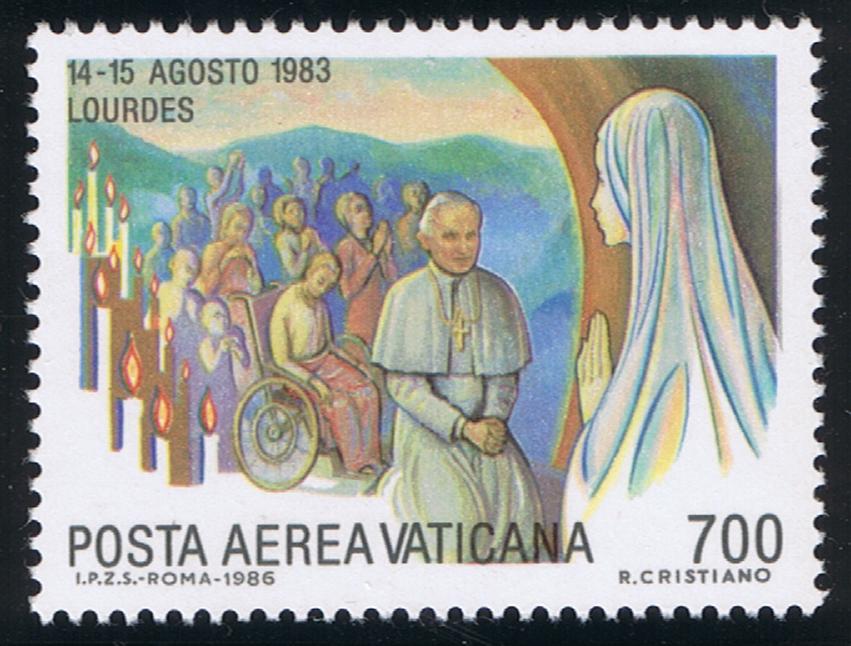






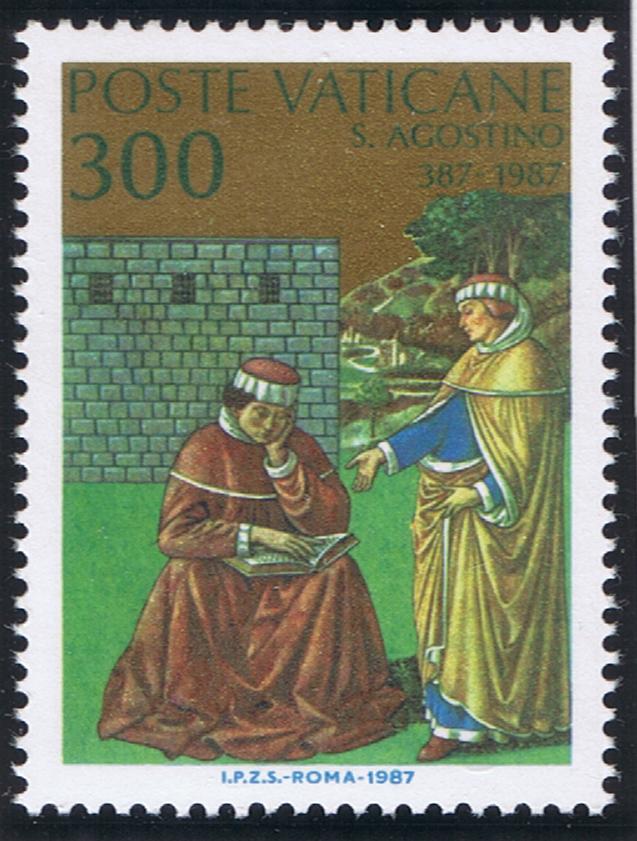
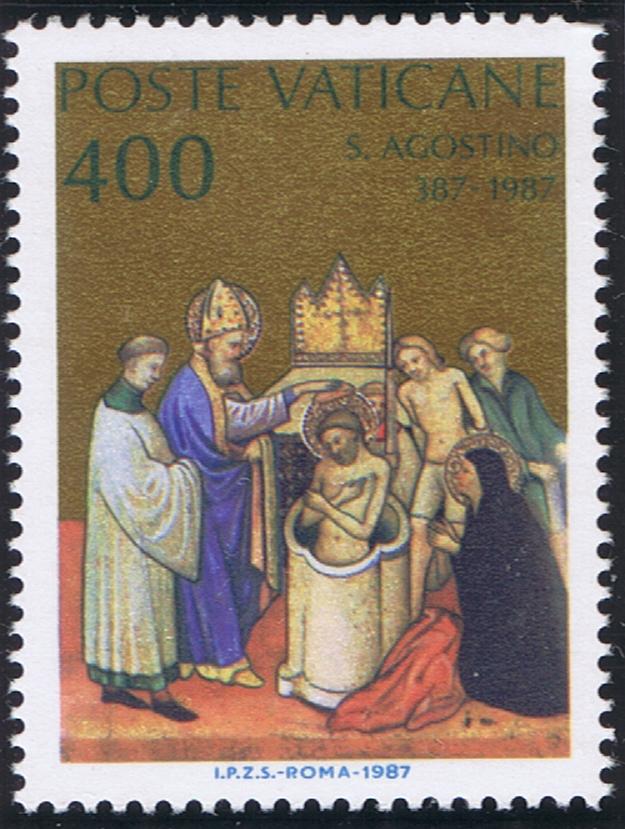
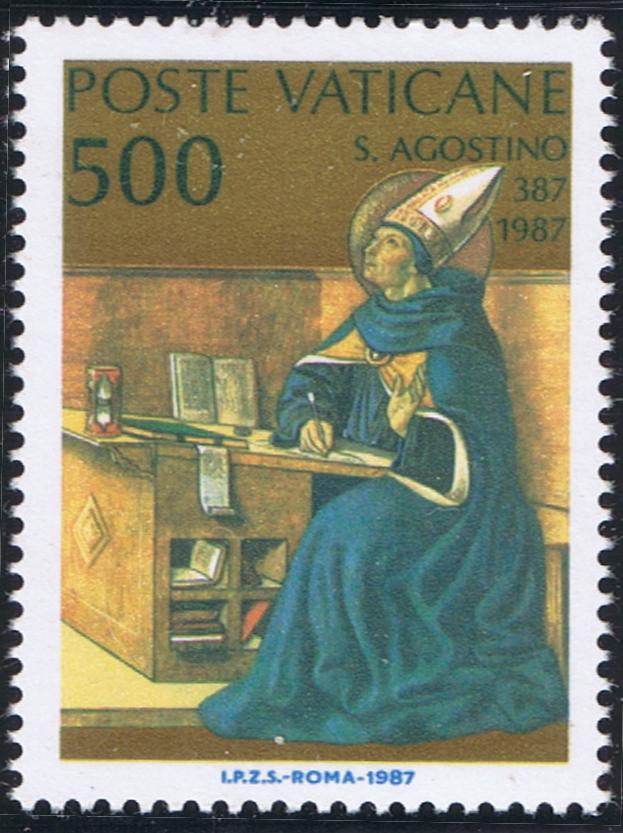
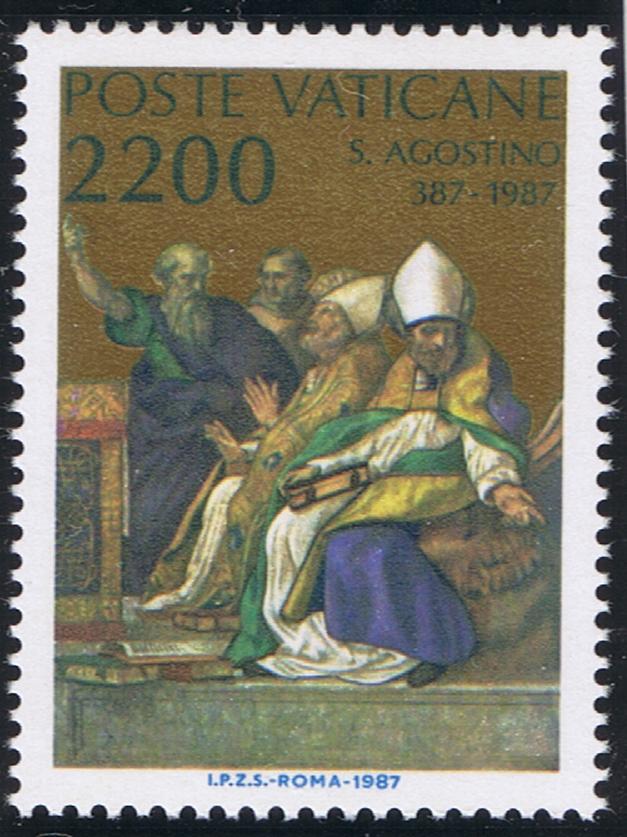








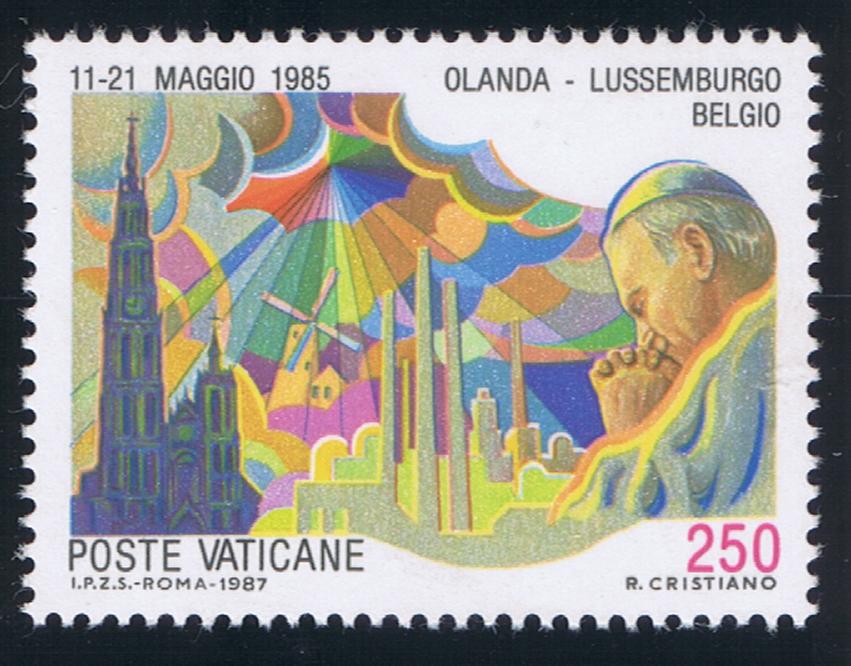

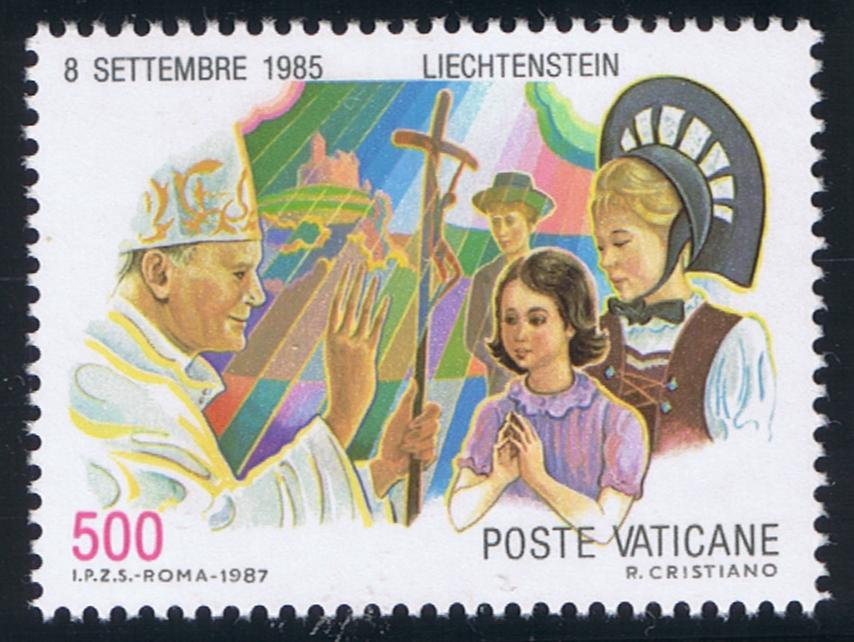





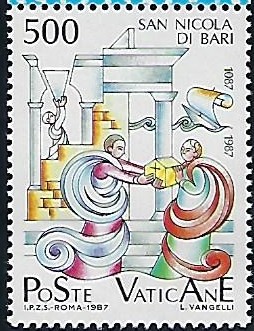
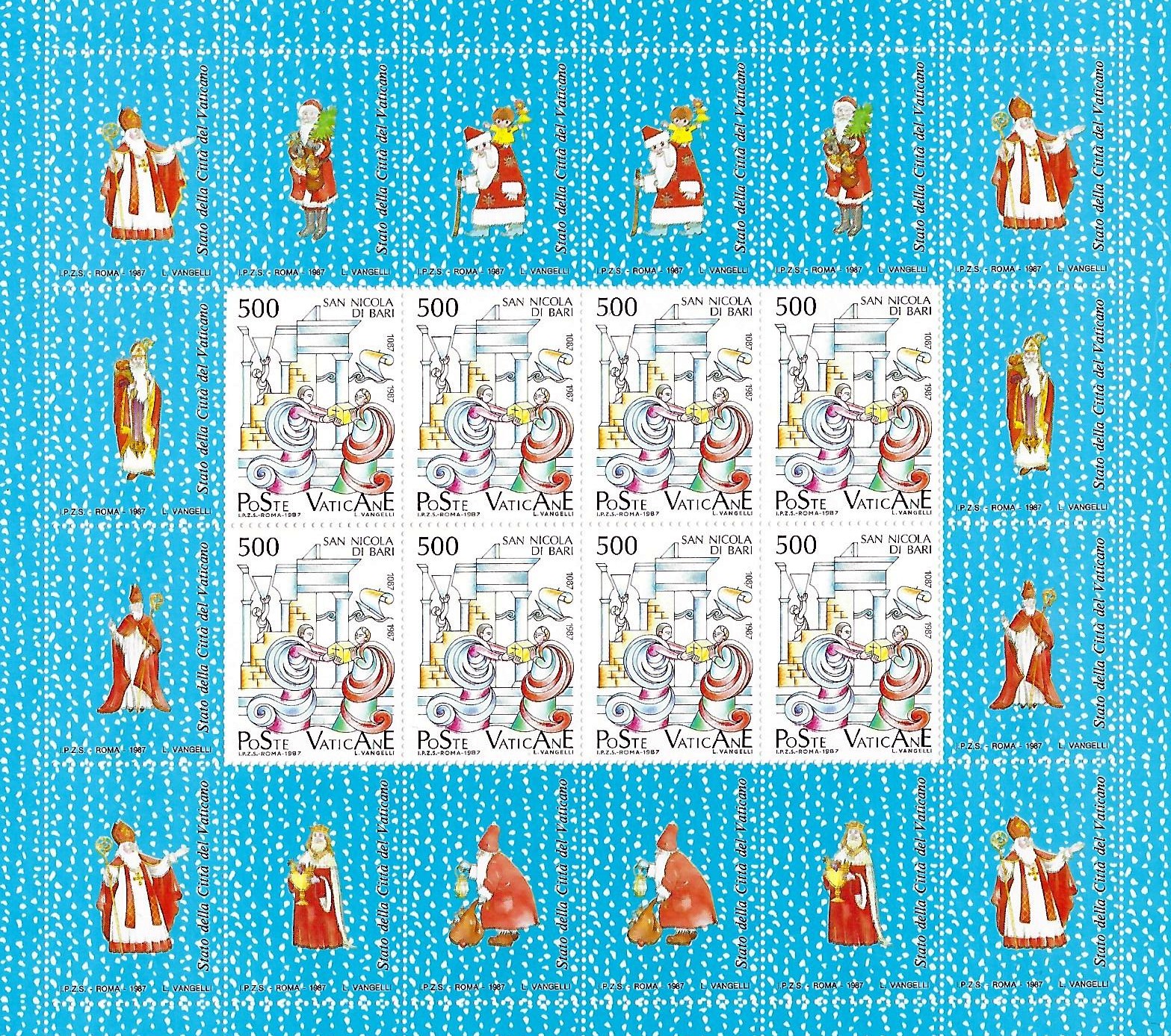
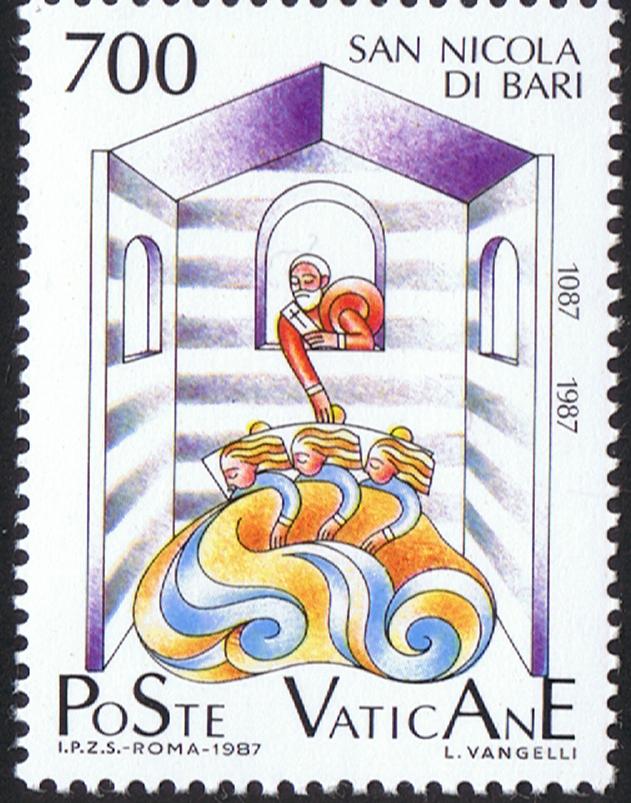
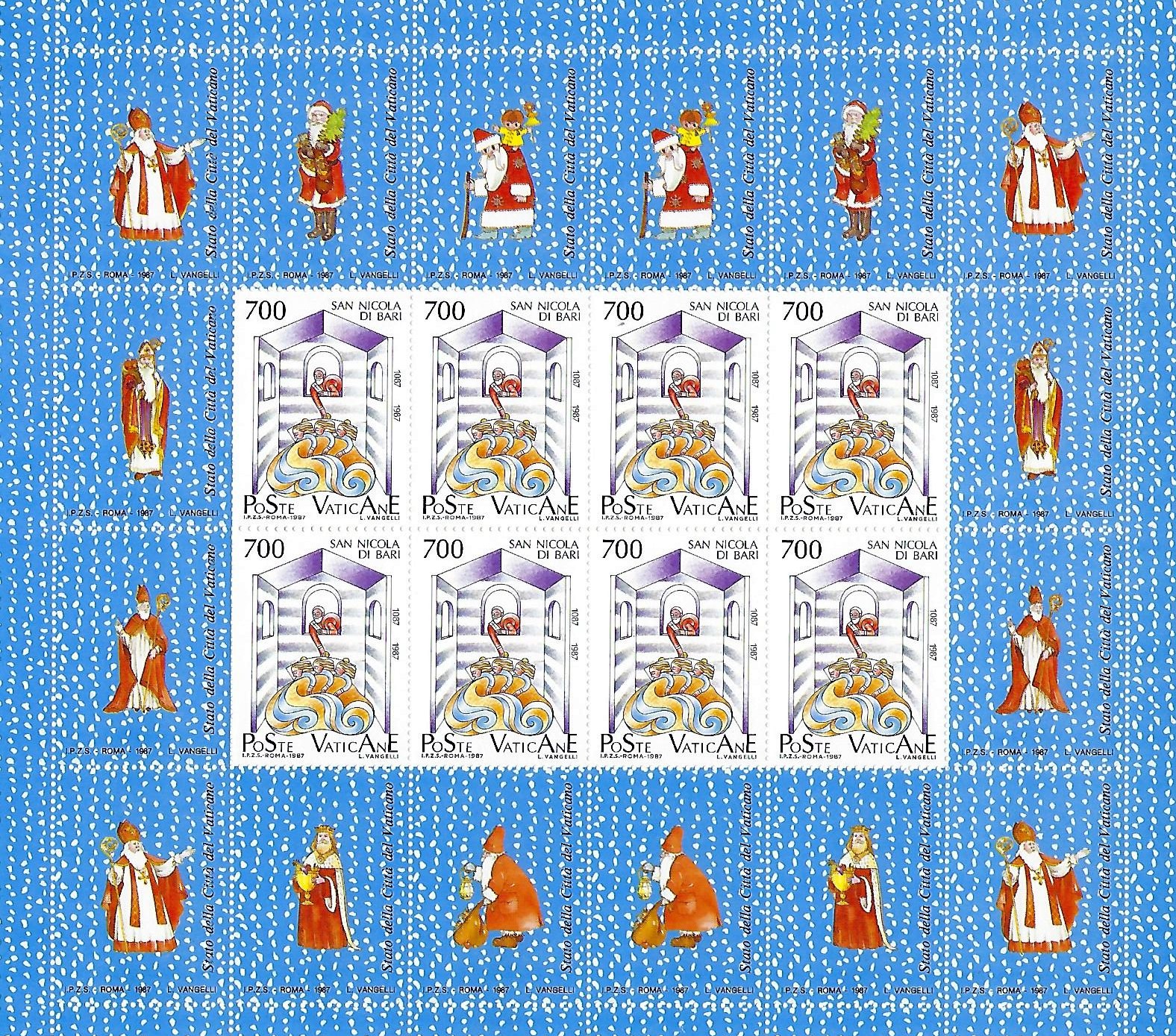
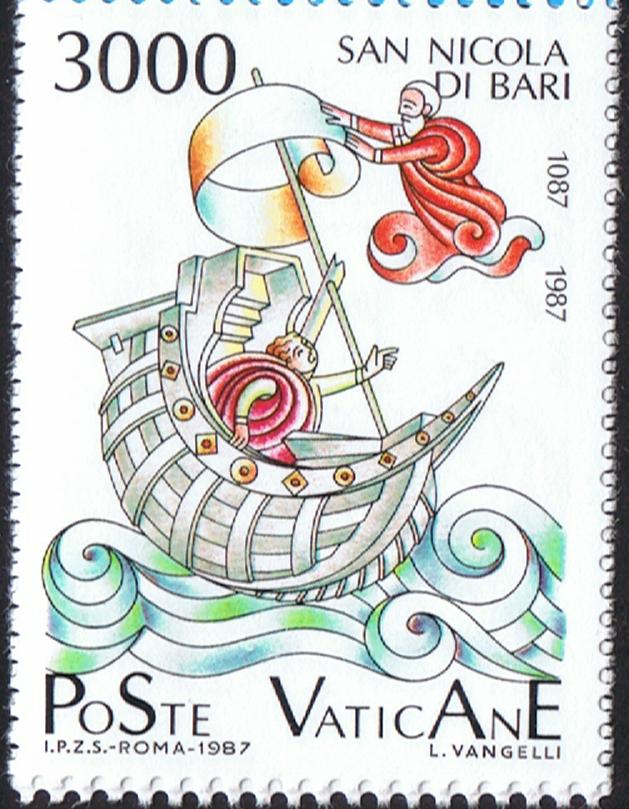


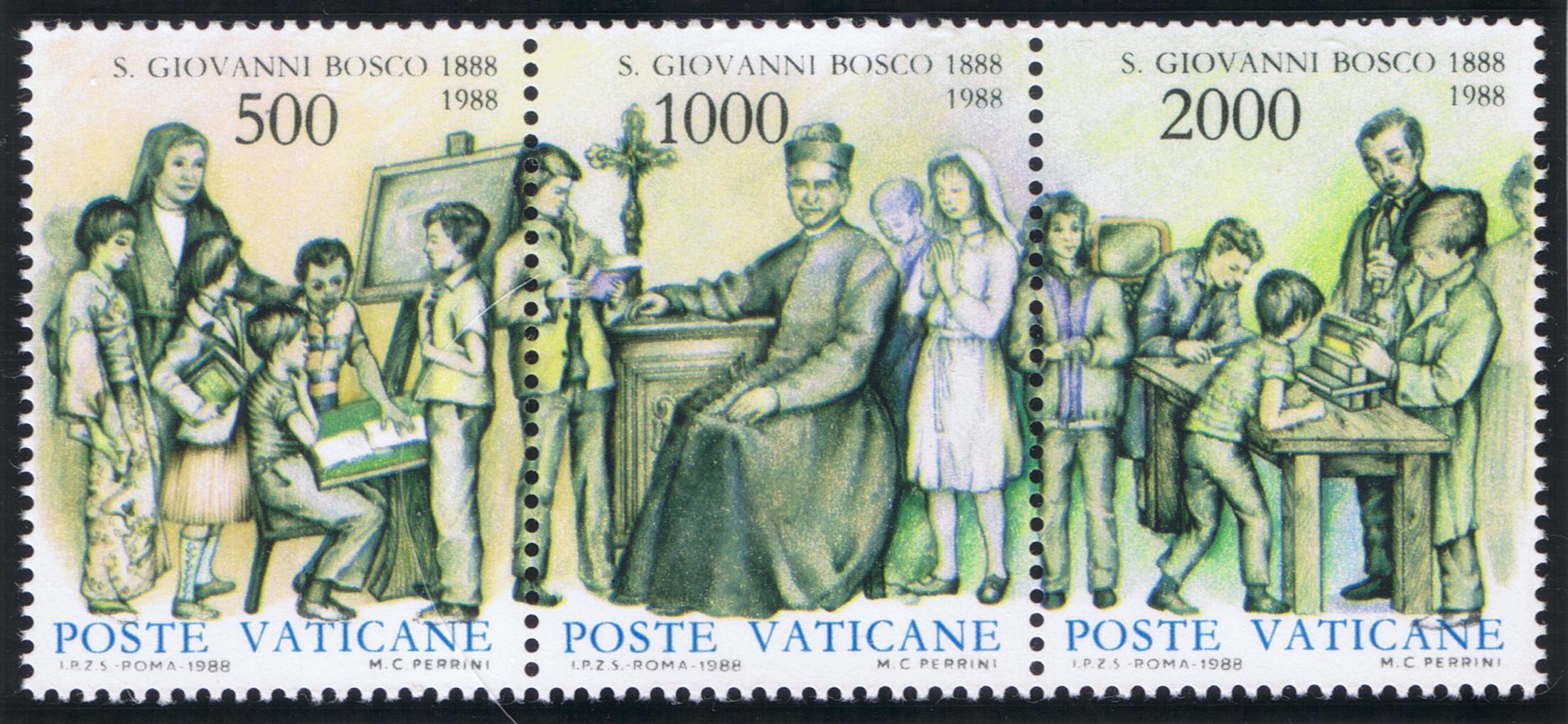







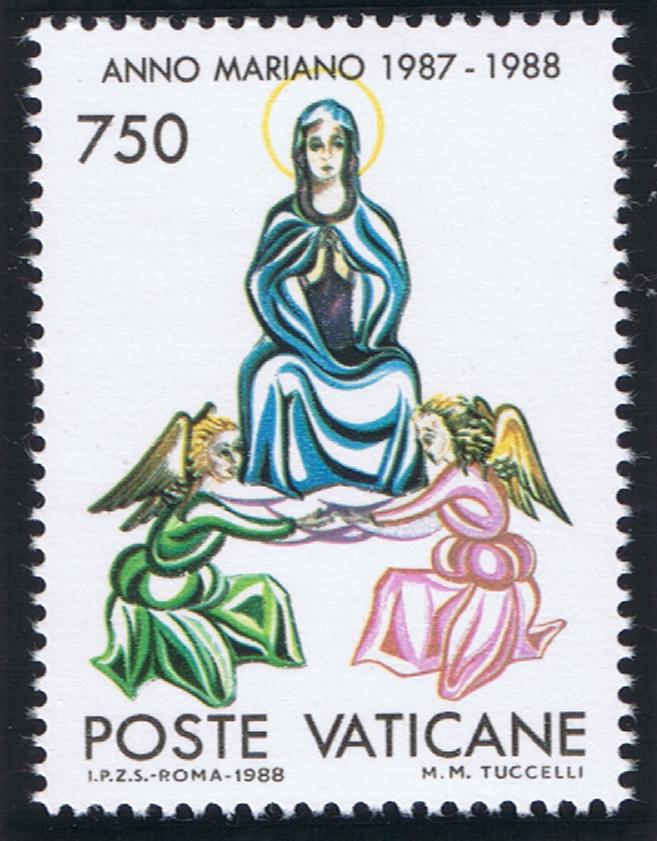

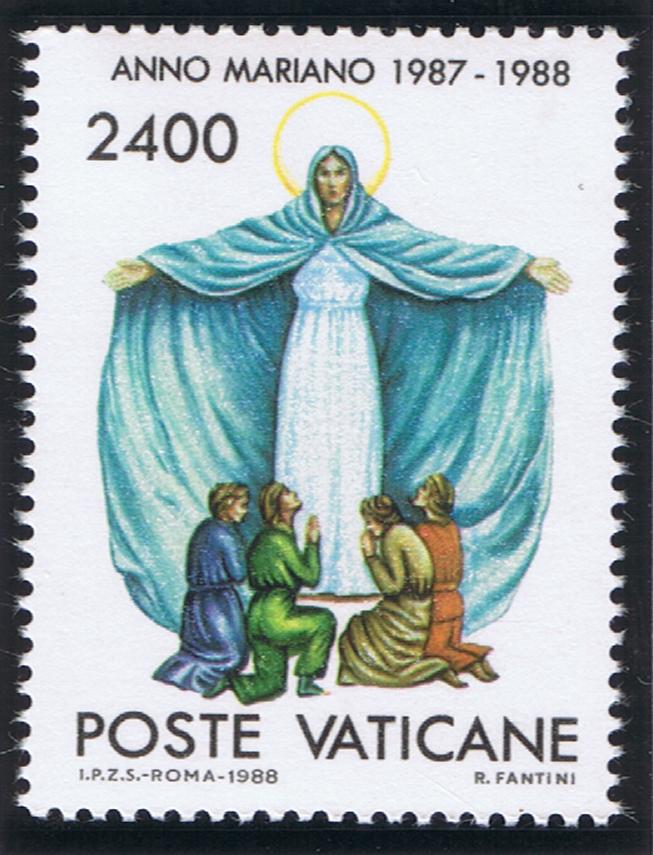





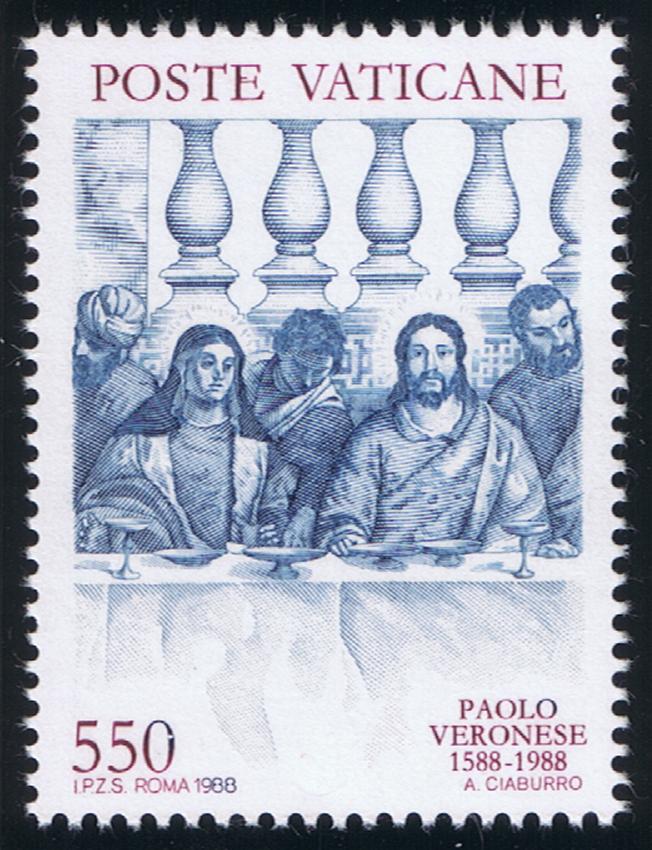

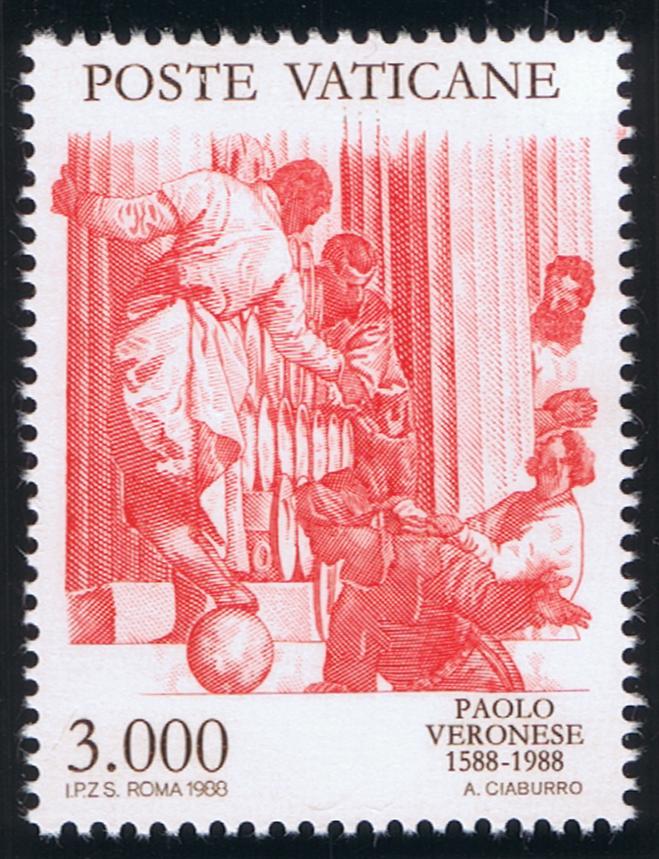








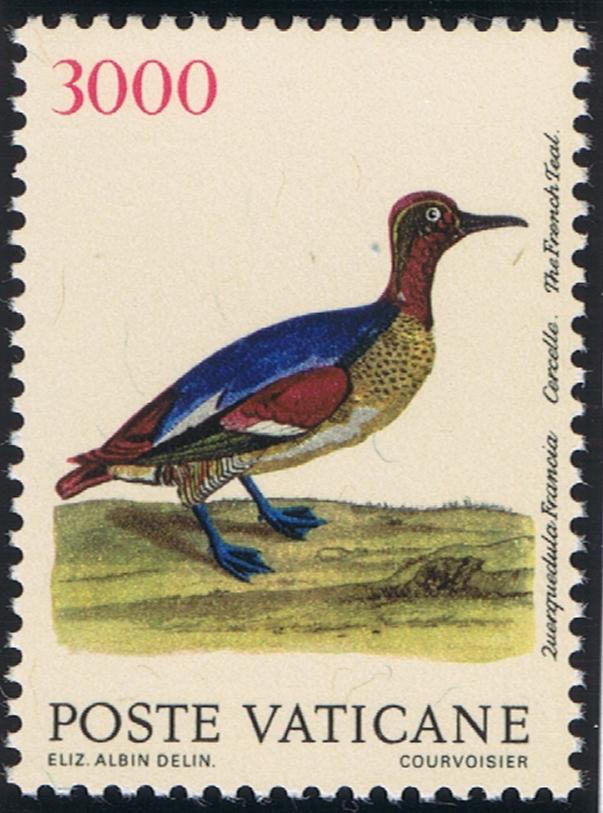






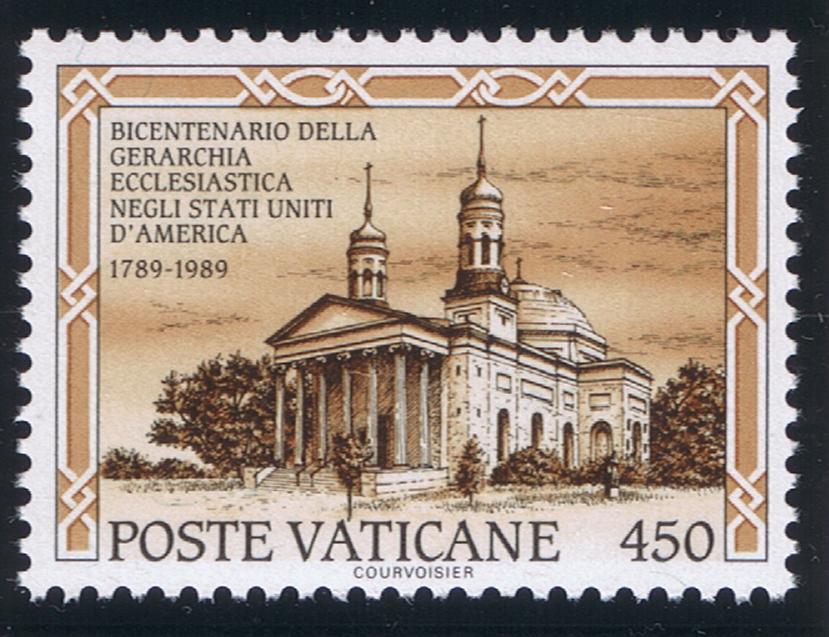
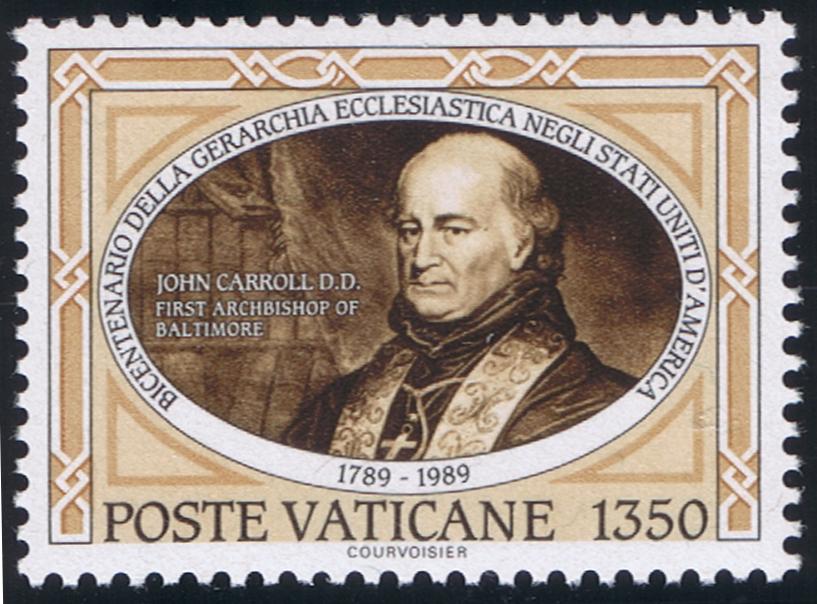
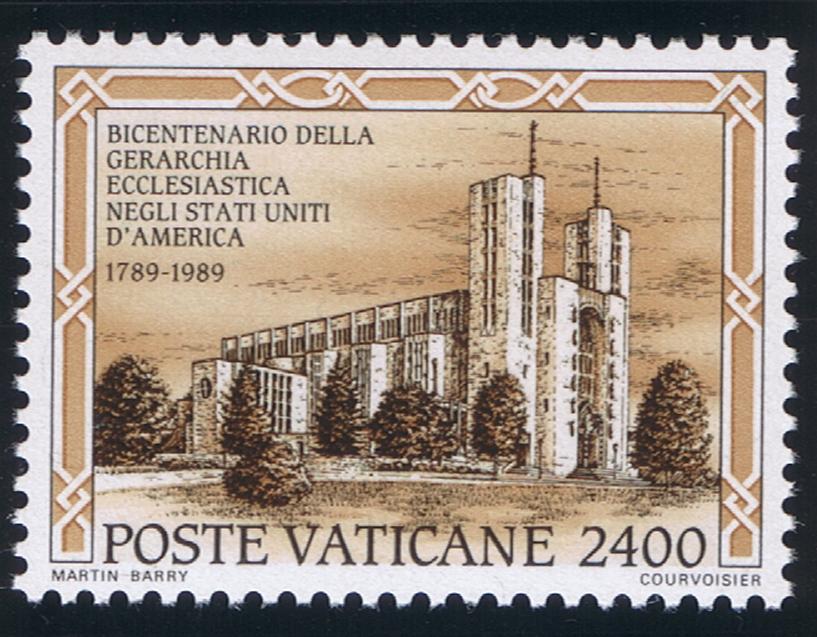




















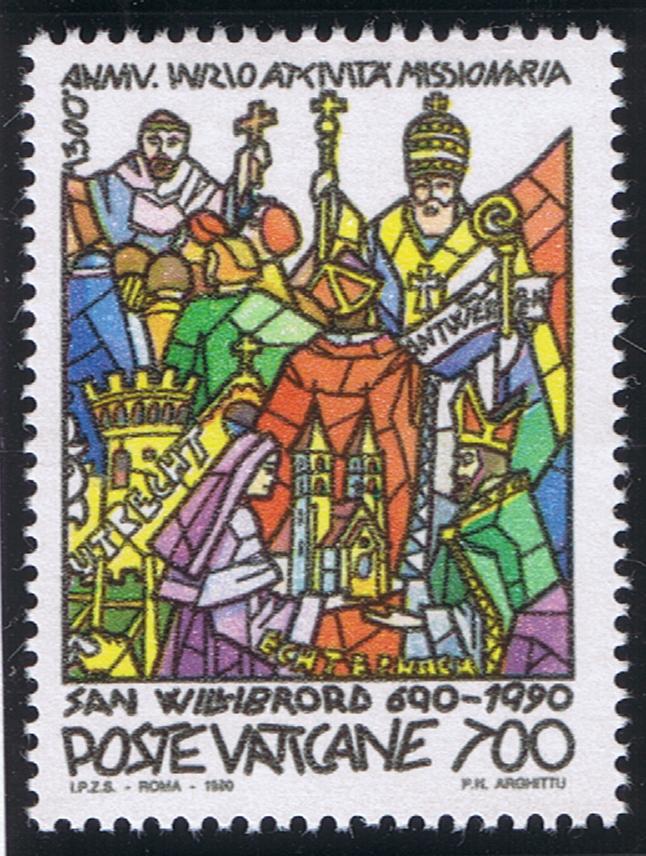
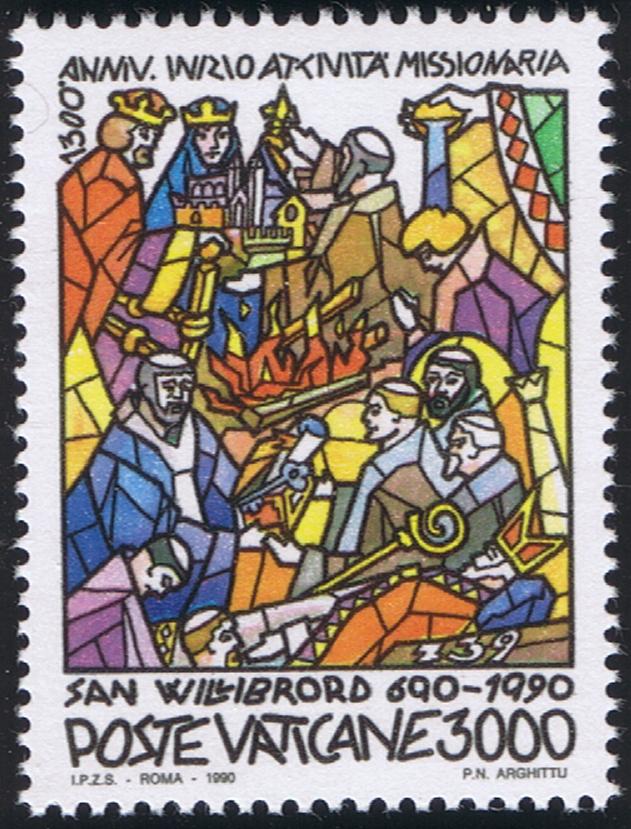




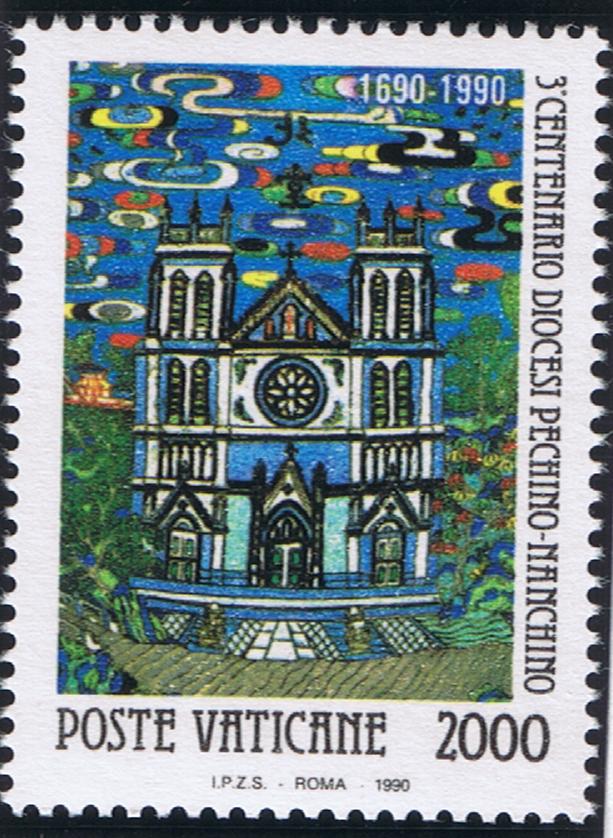









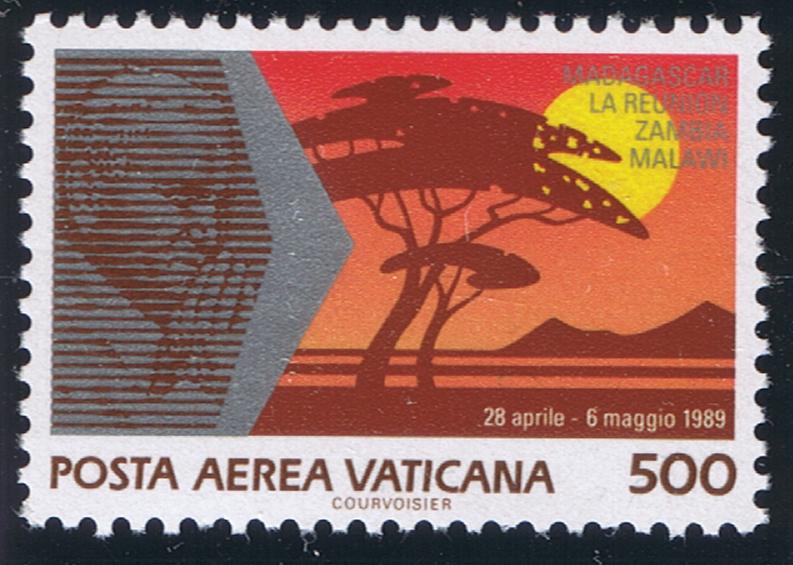

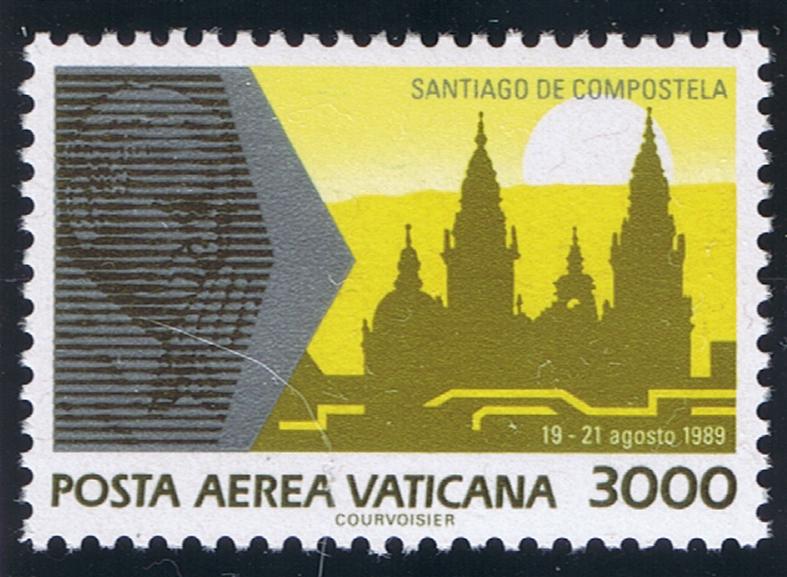

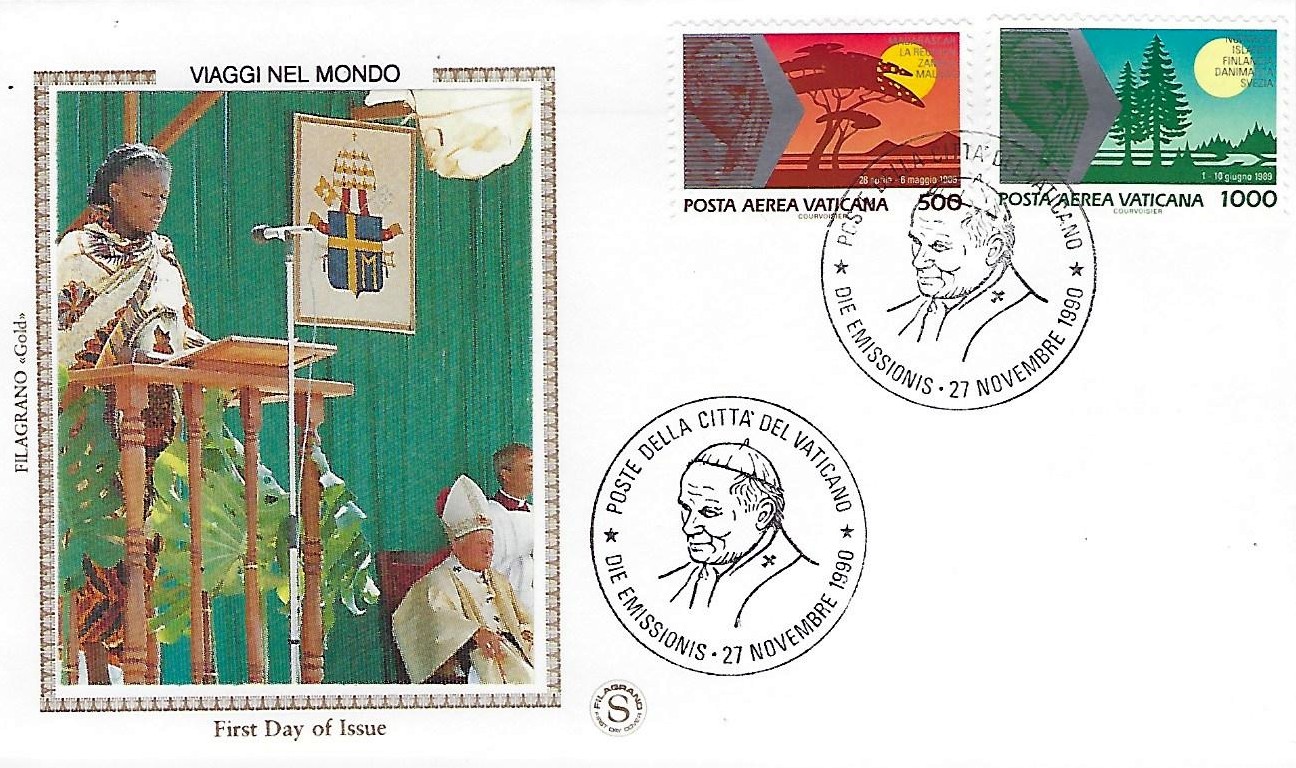
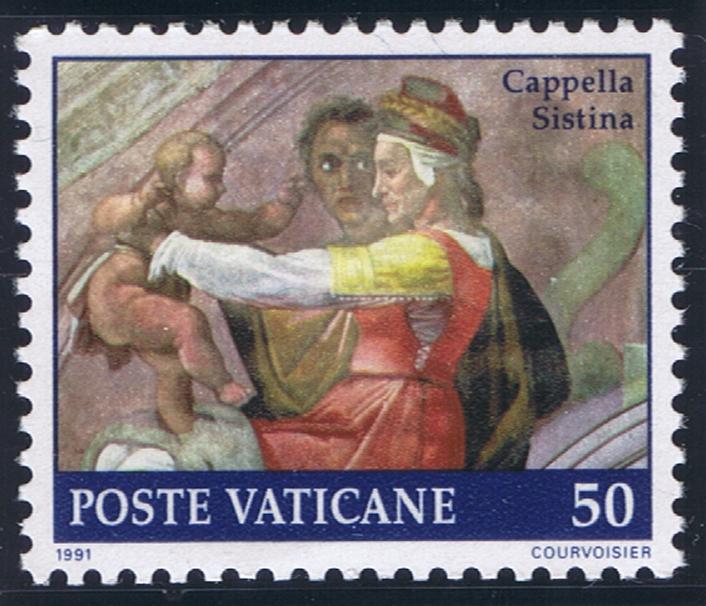
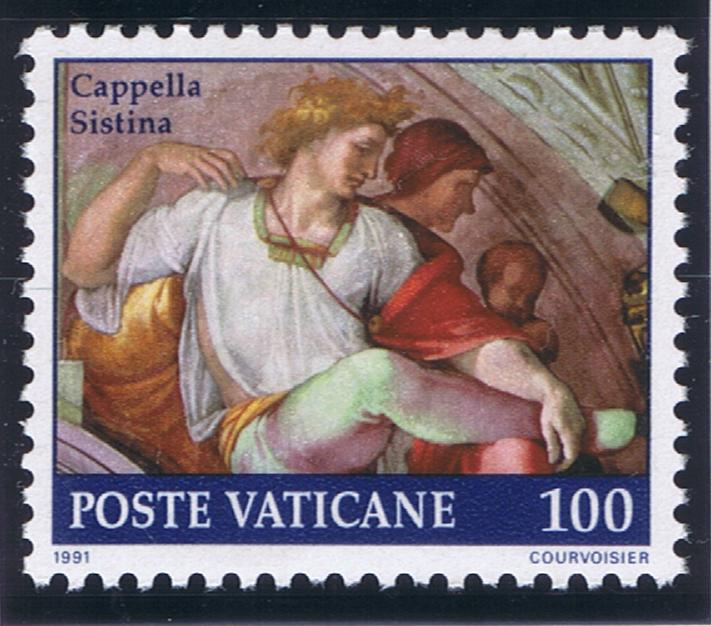
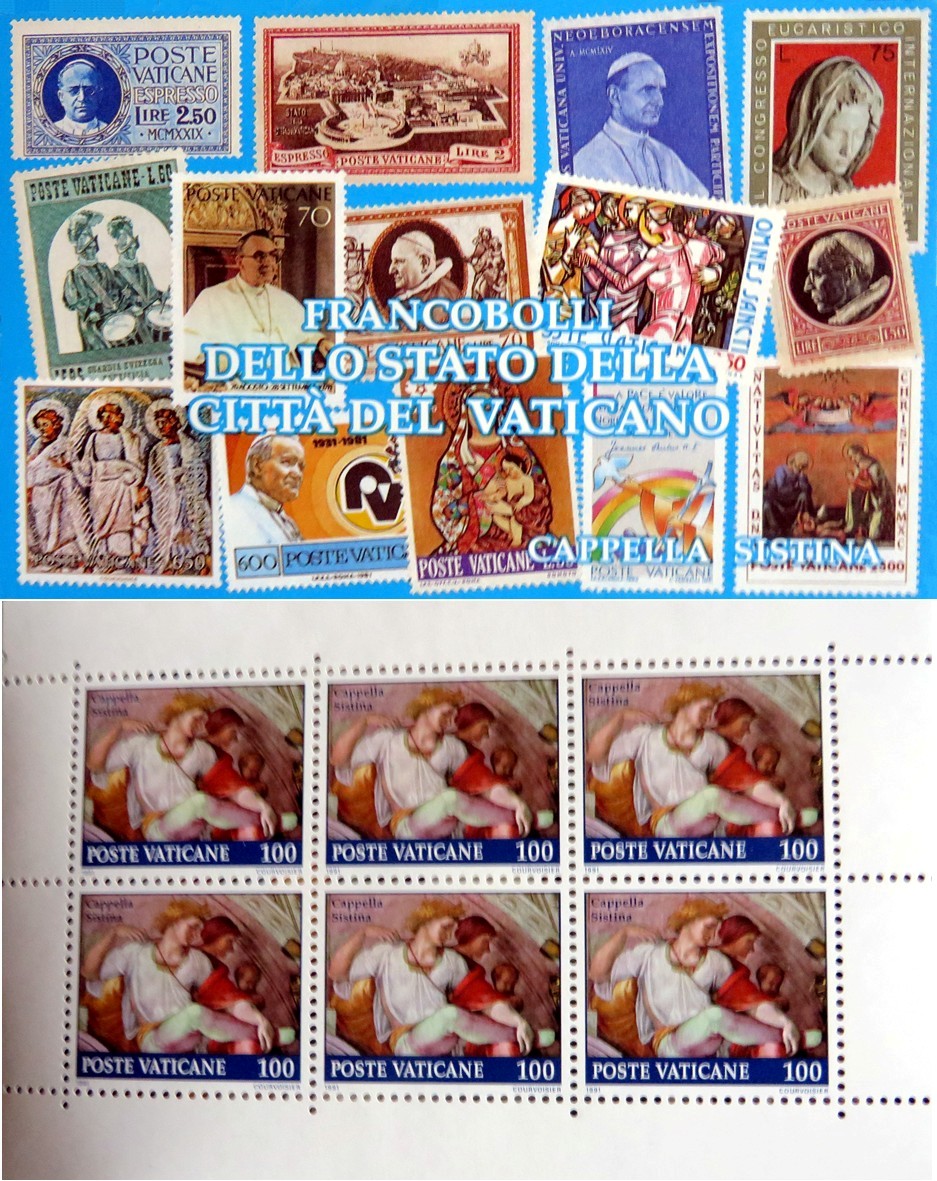


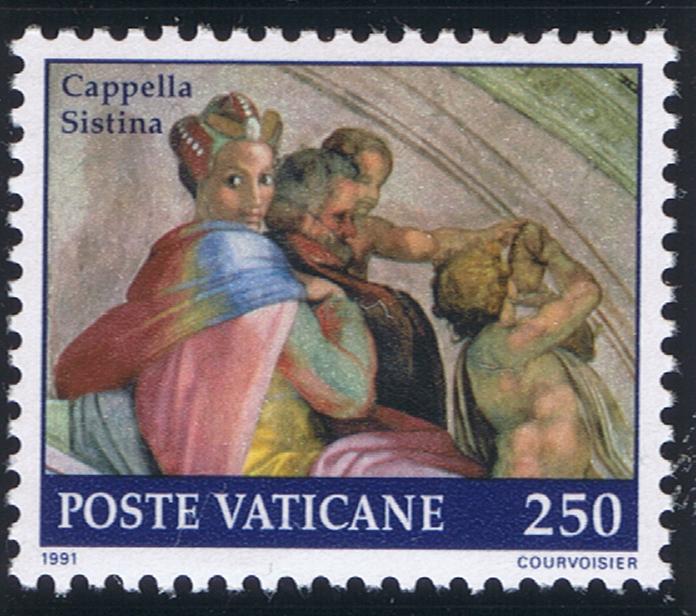
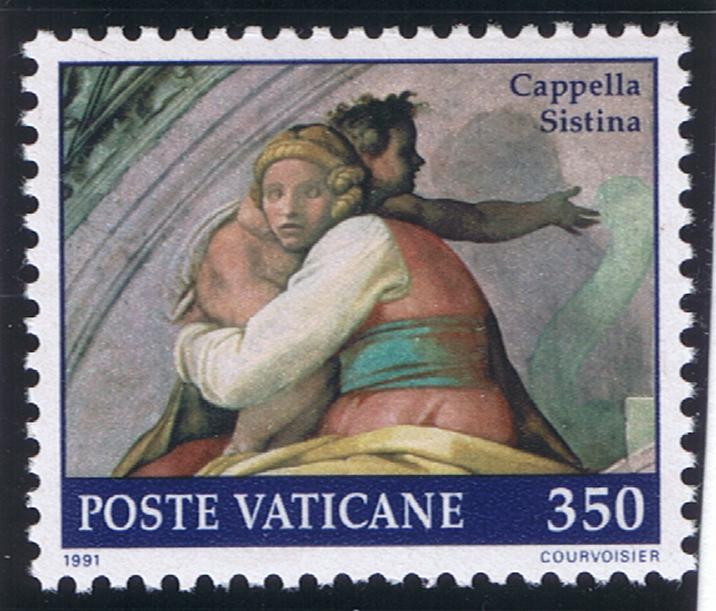
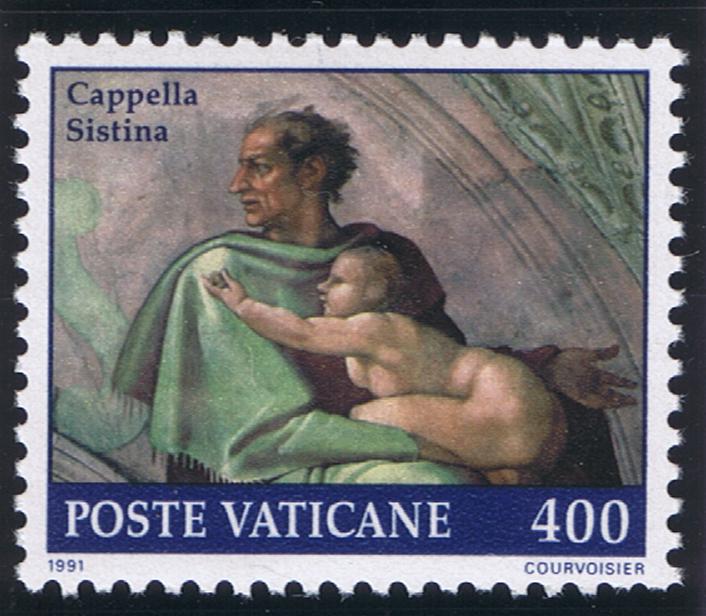
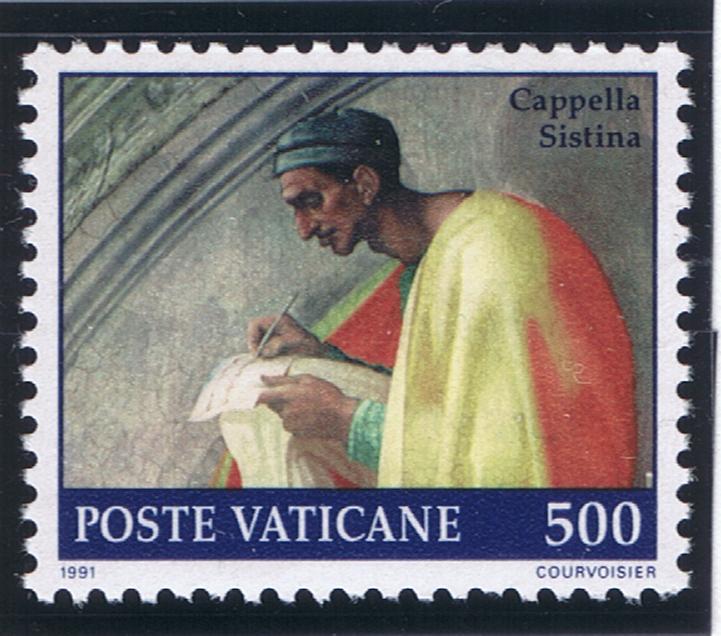
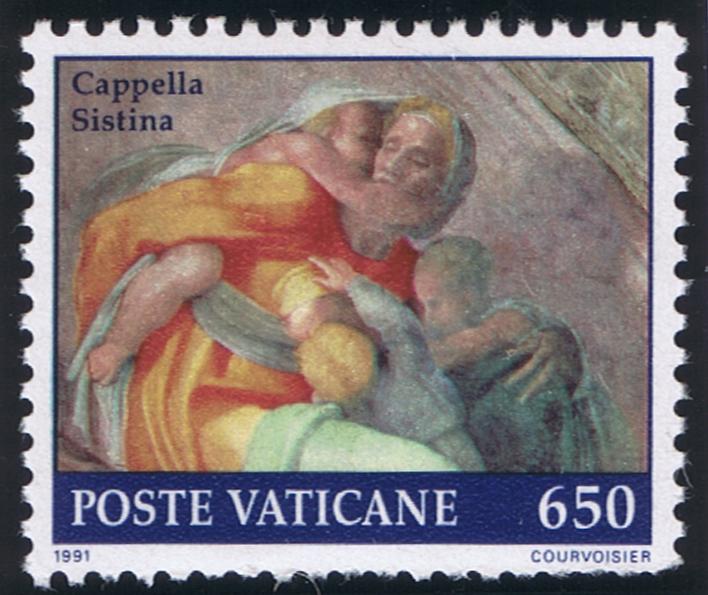

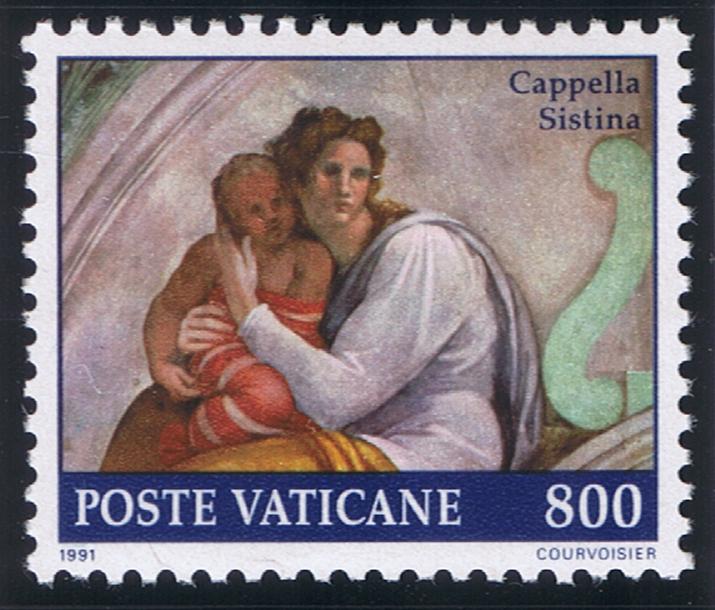
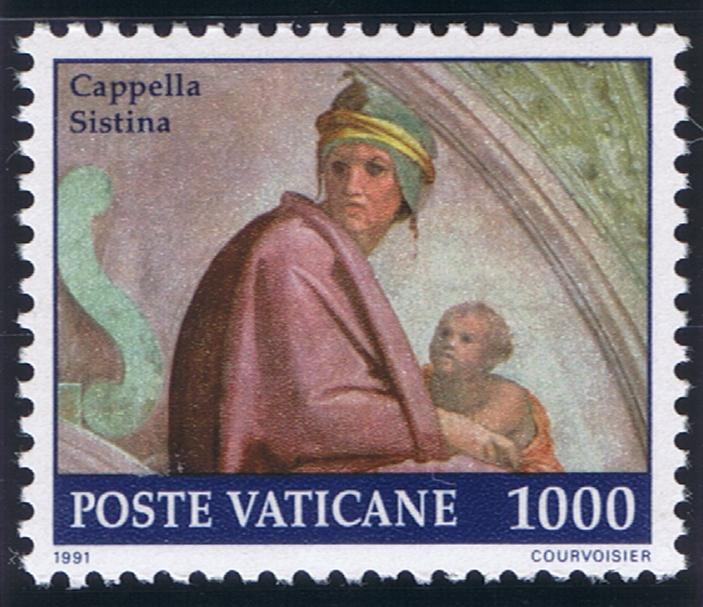
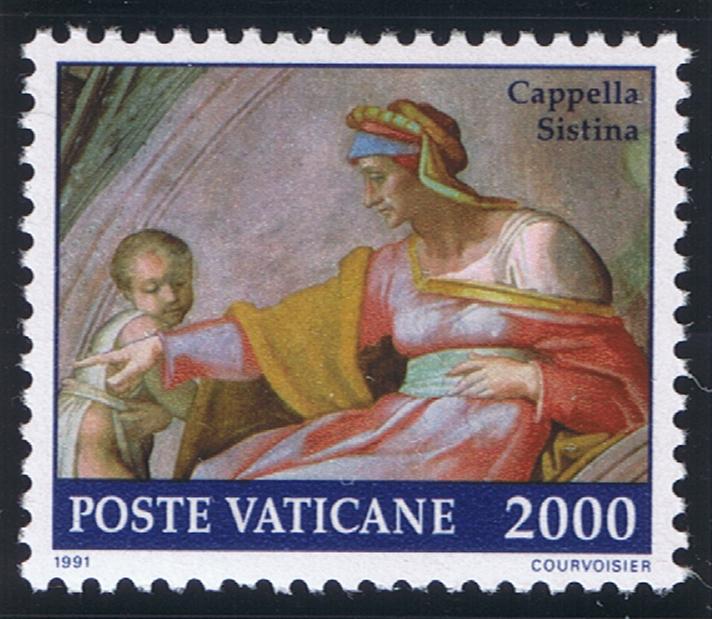
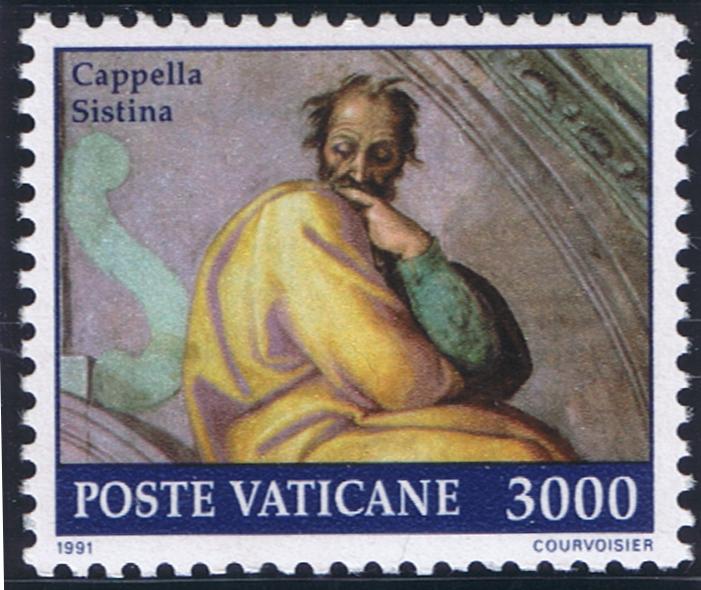









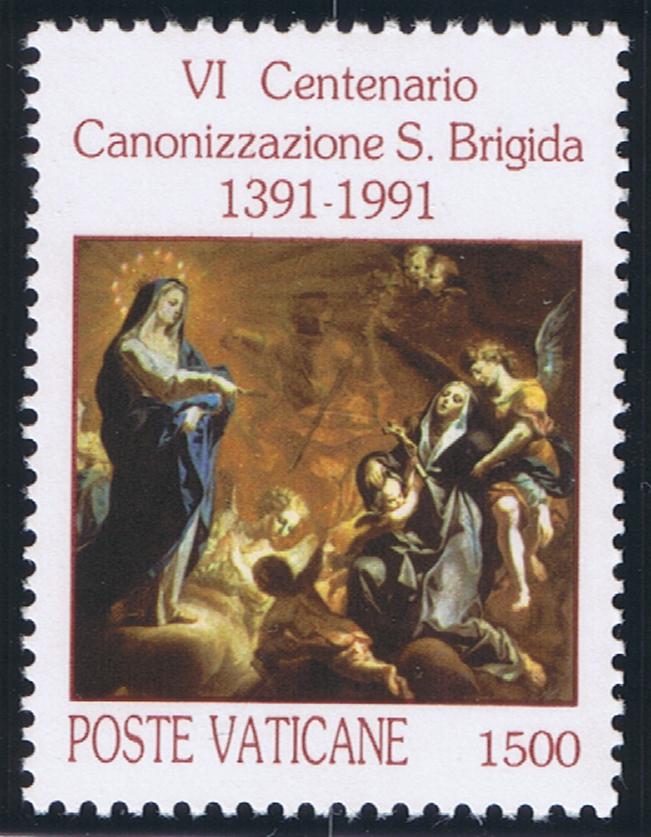


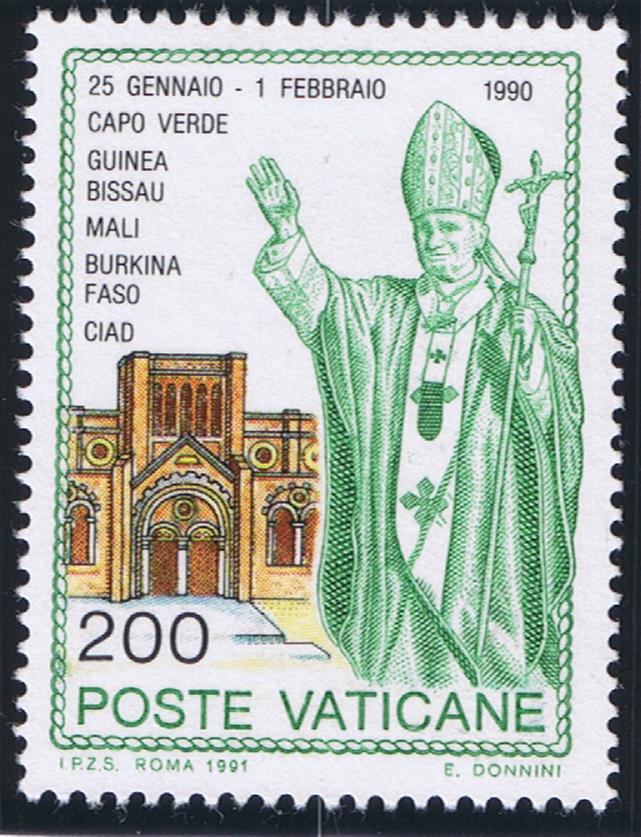



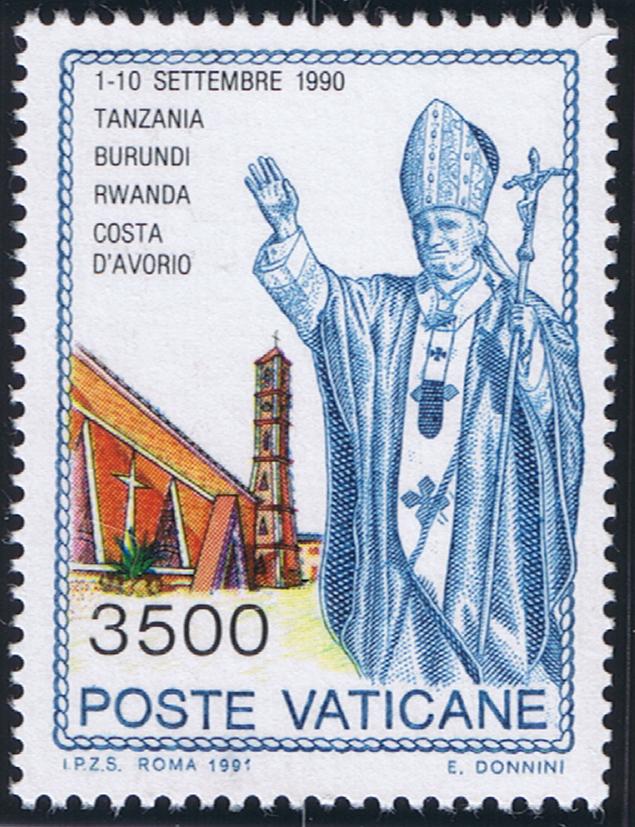





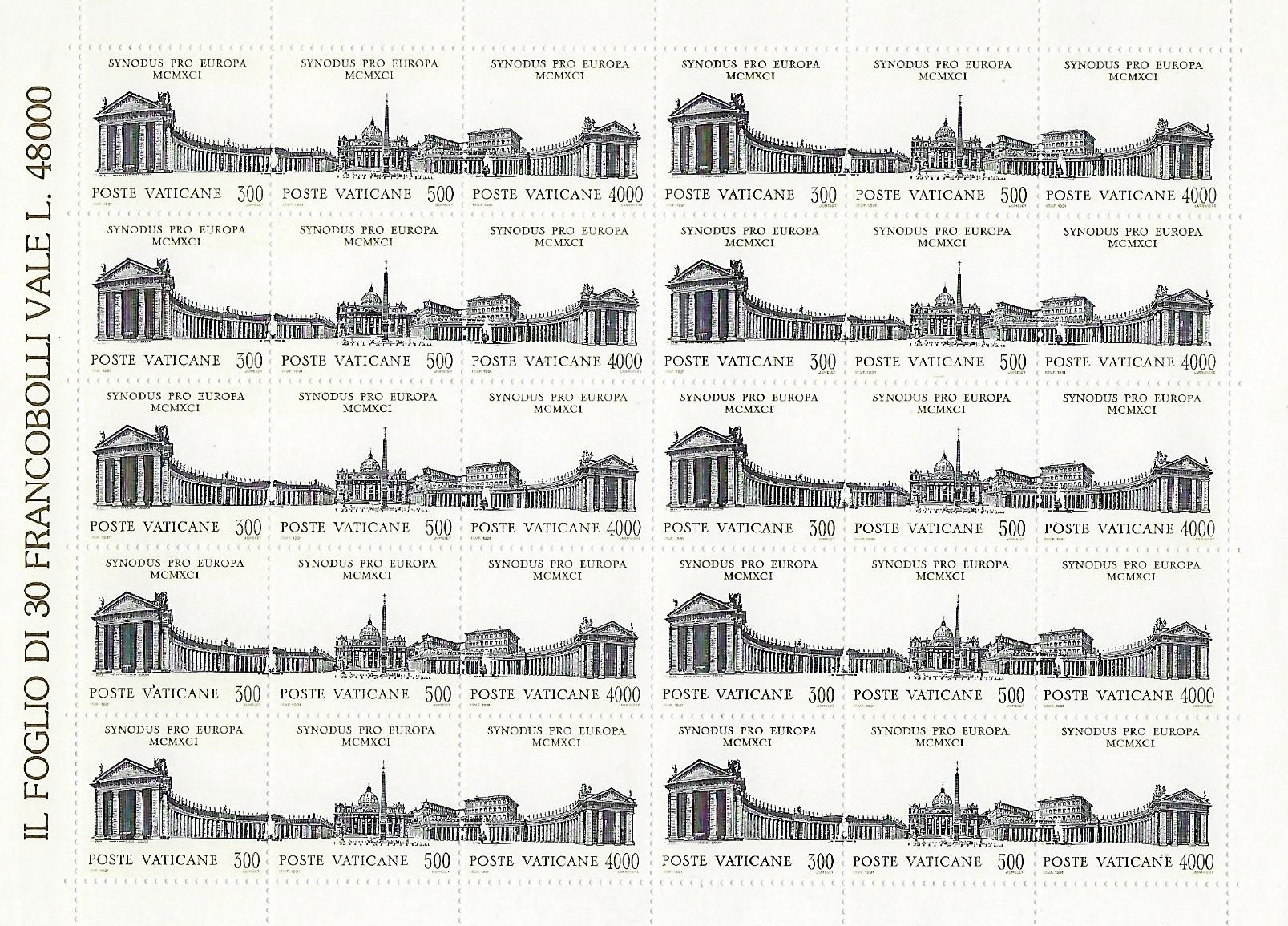



5th Centenary of the
Discovery & Evangelization
of America







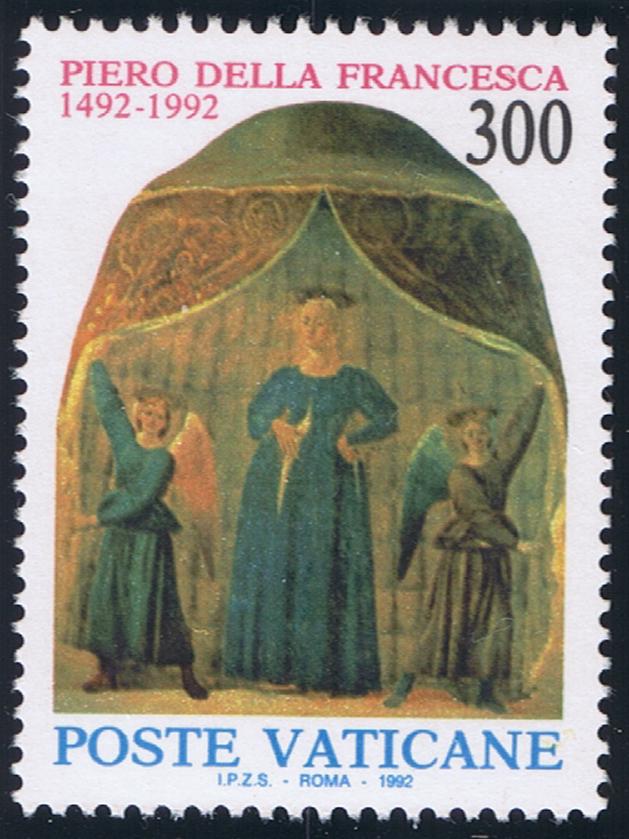
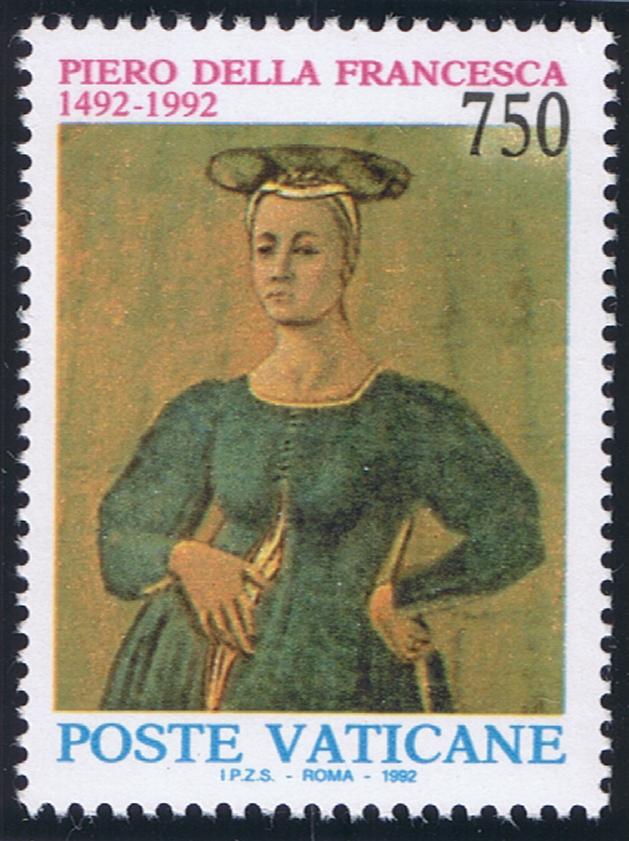
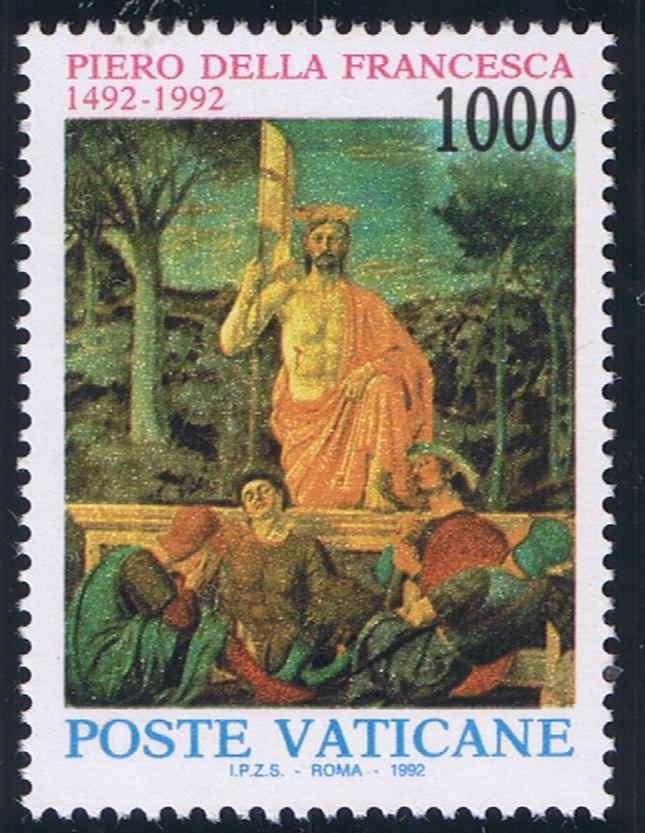
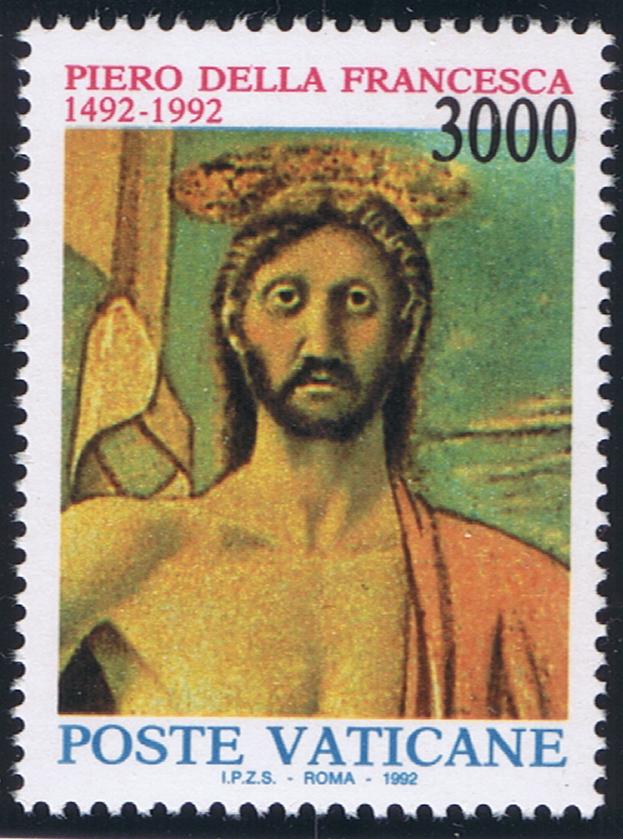





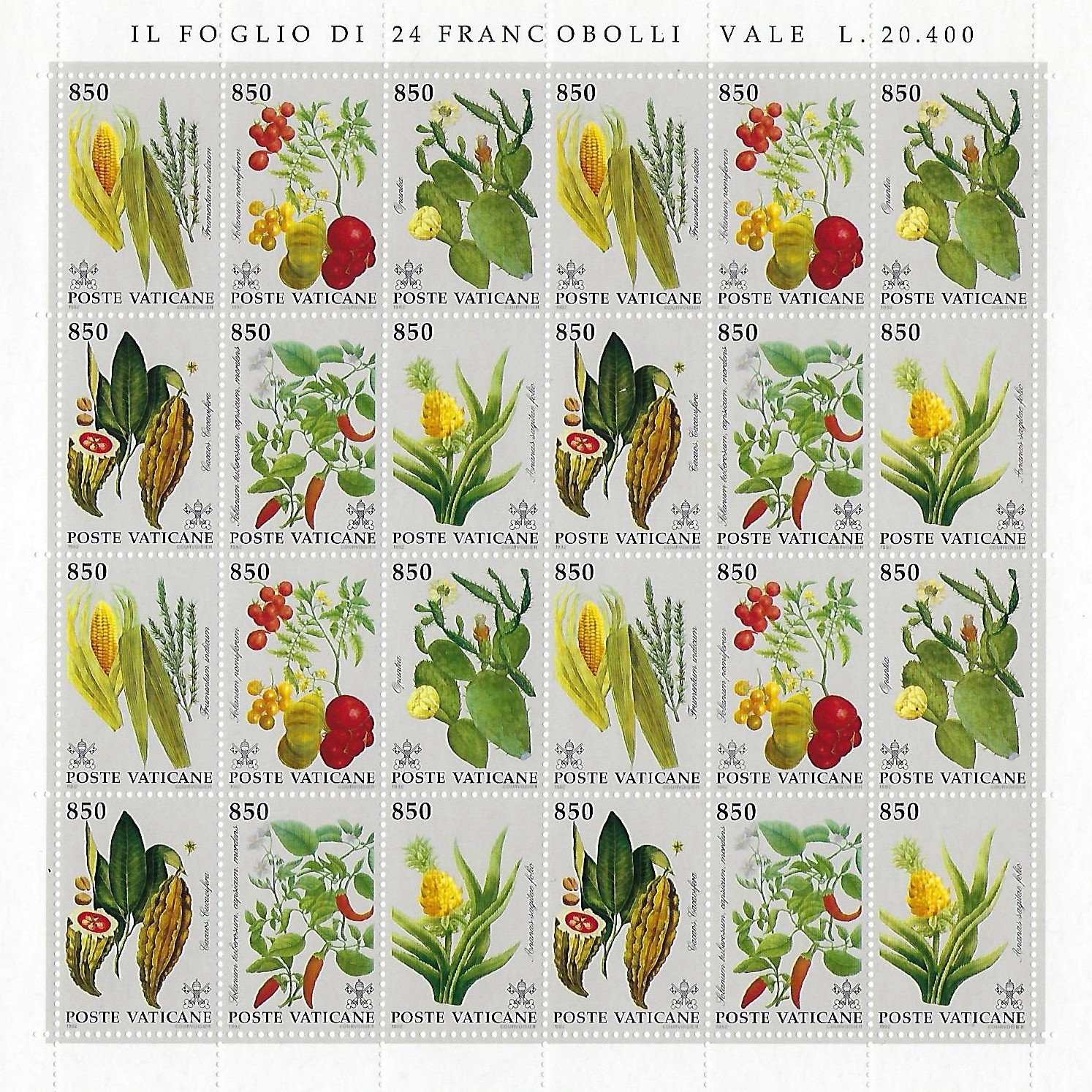

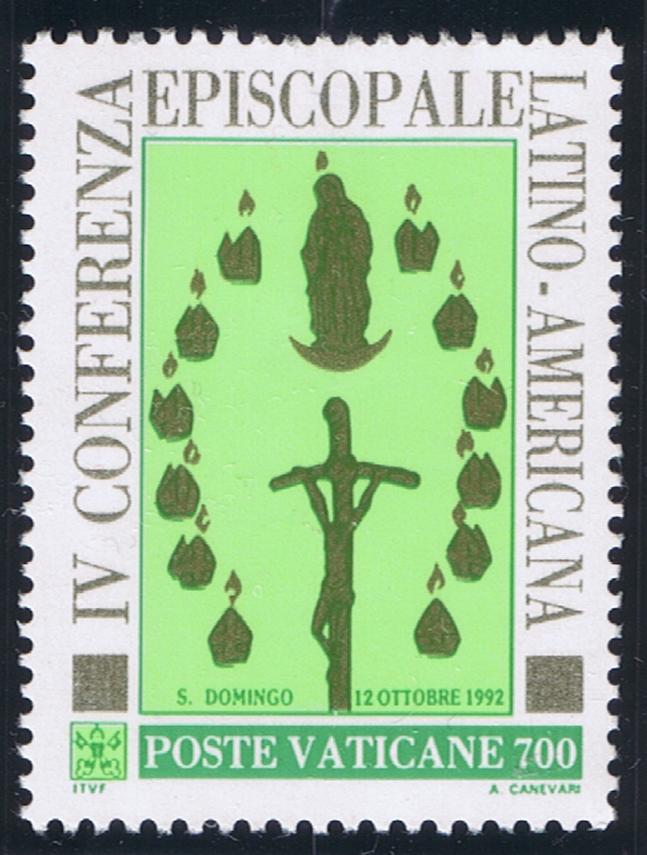

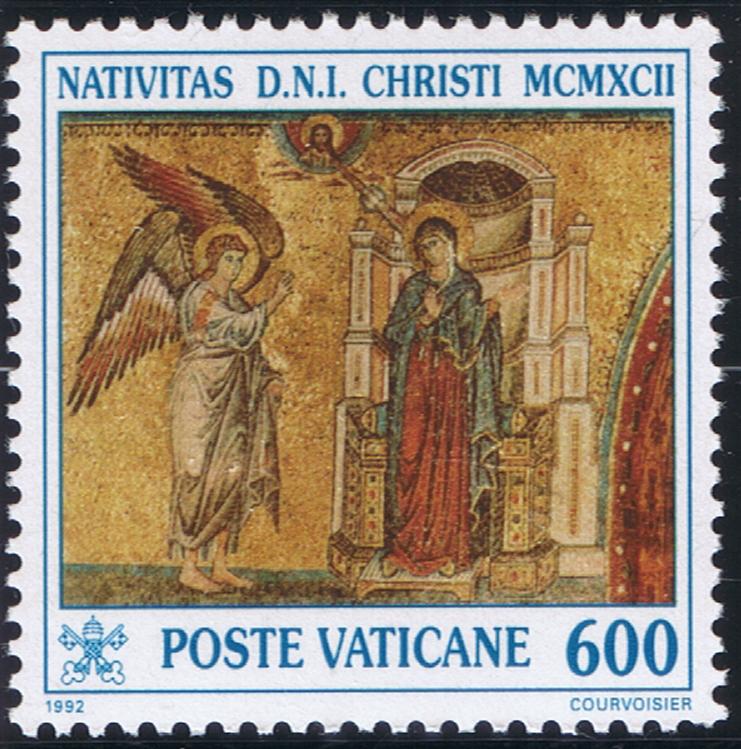












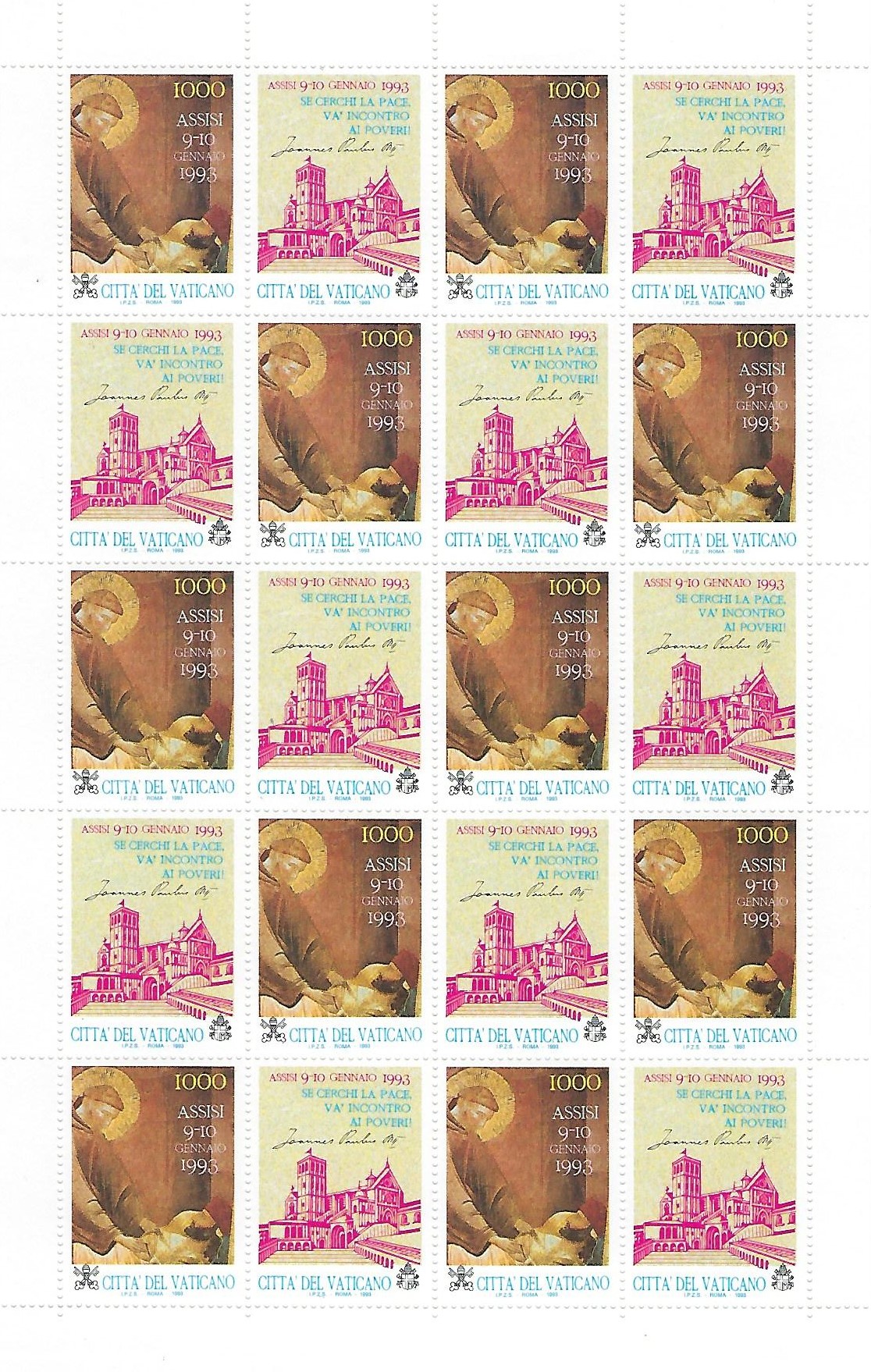

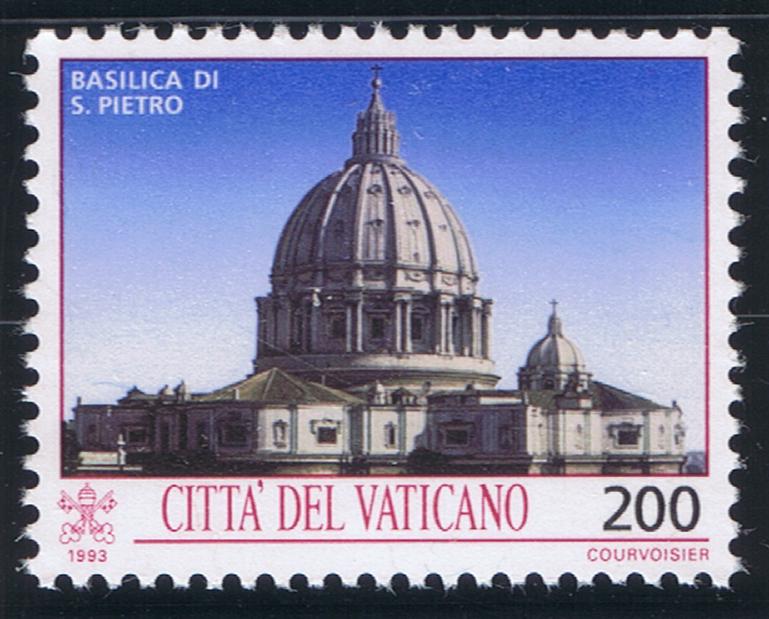





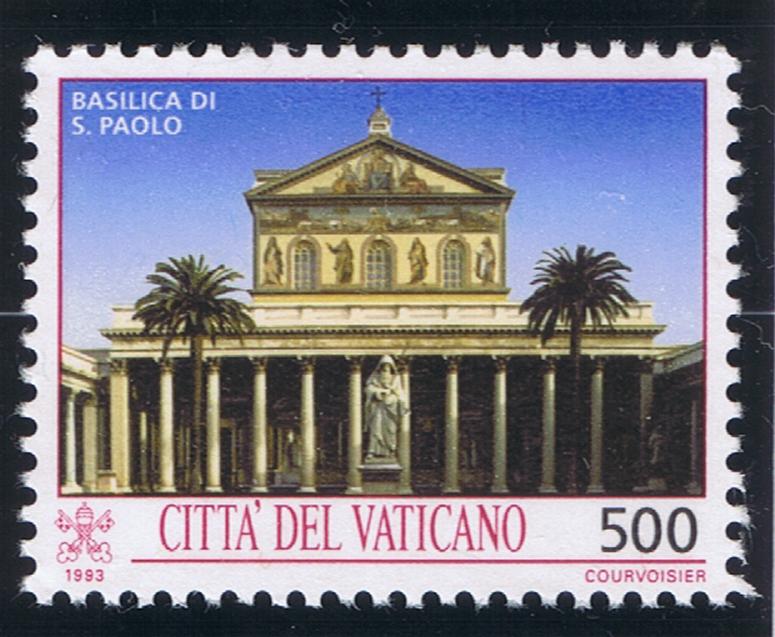


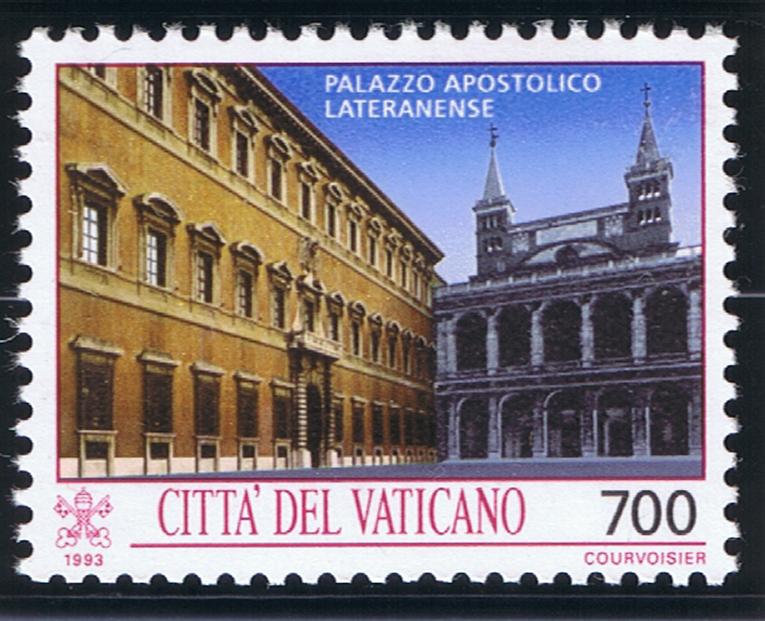

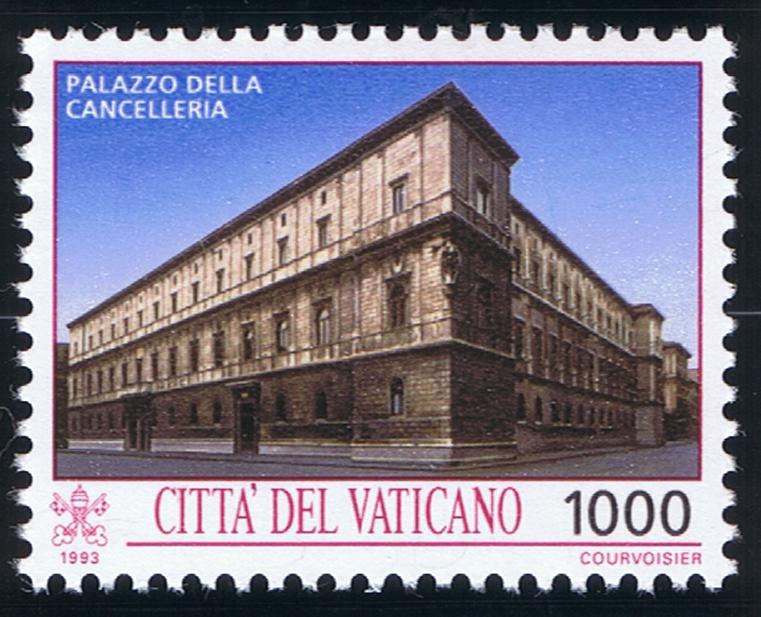

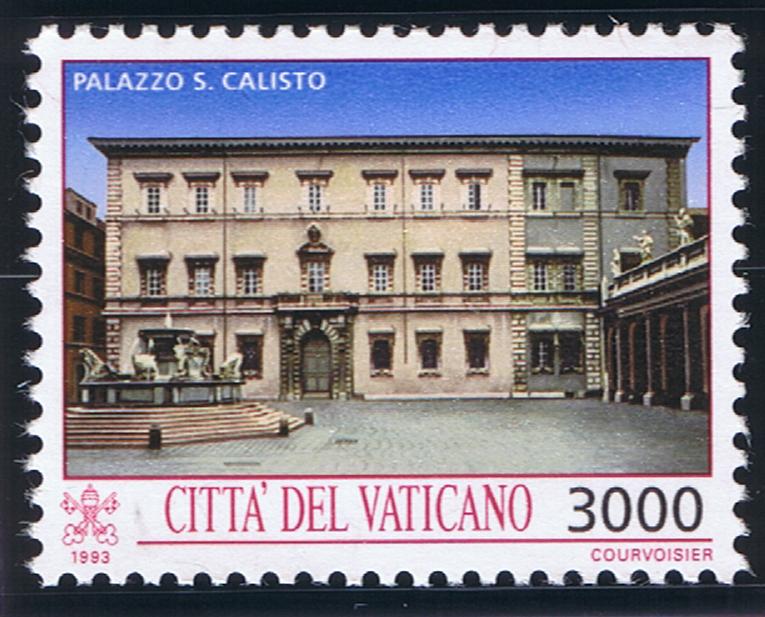























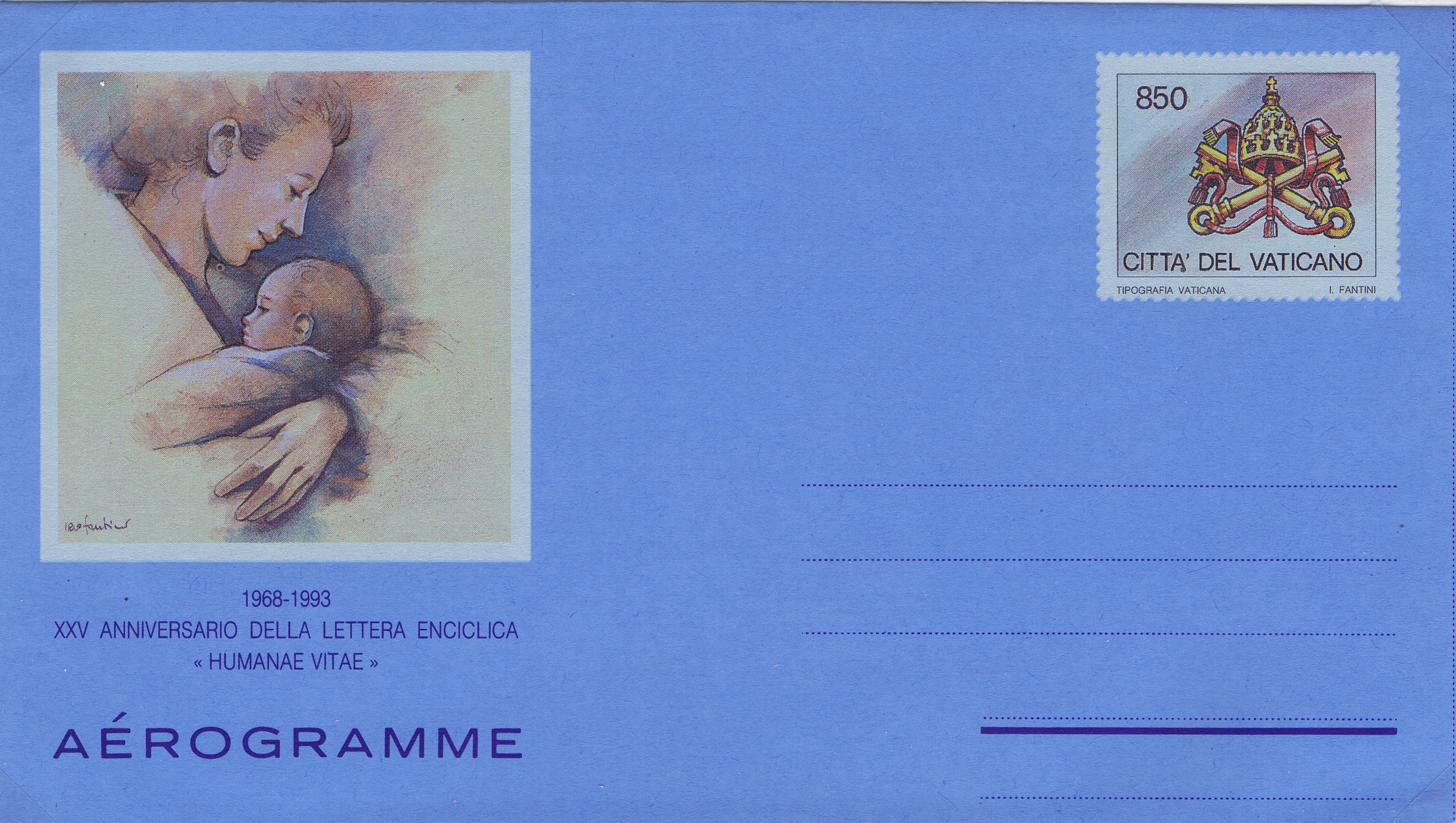






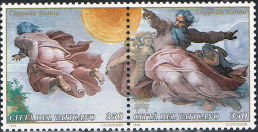

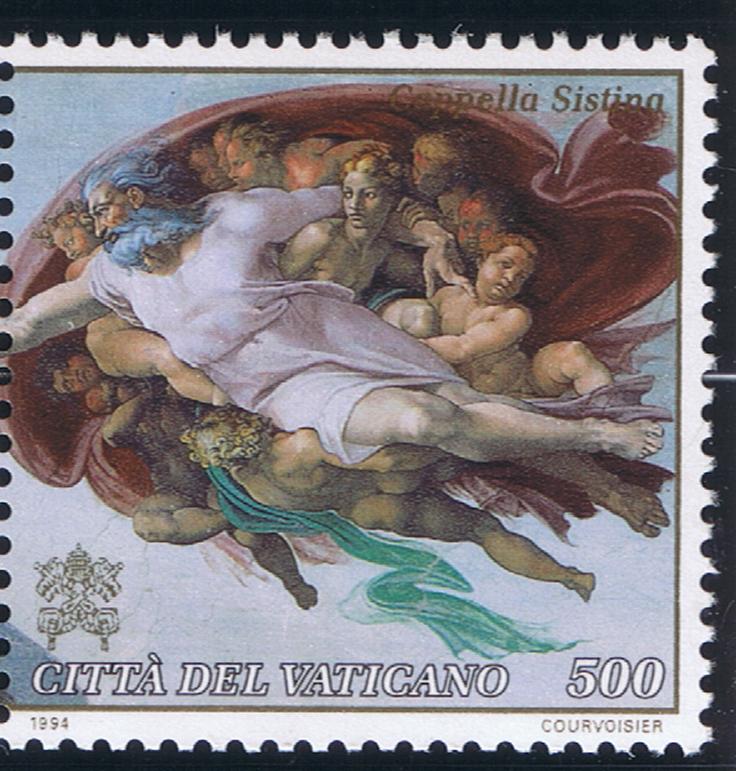
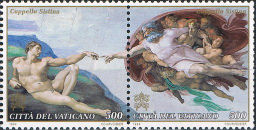

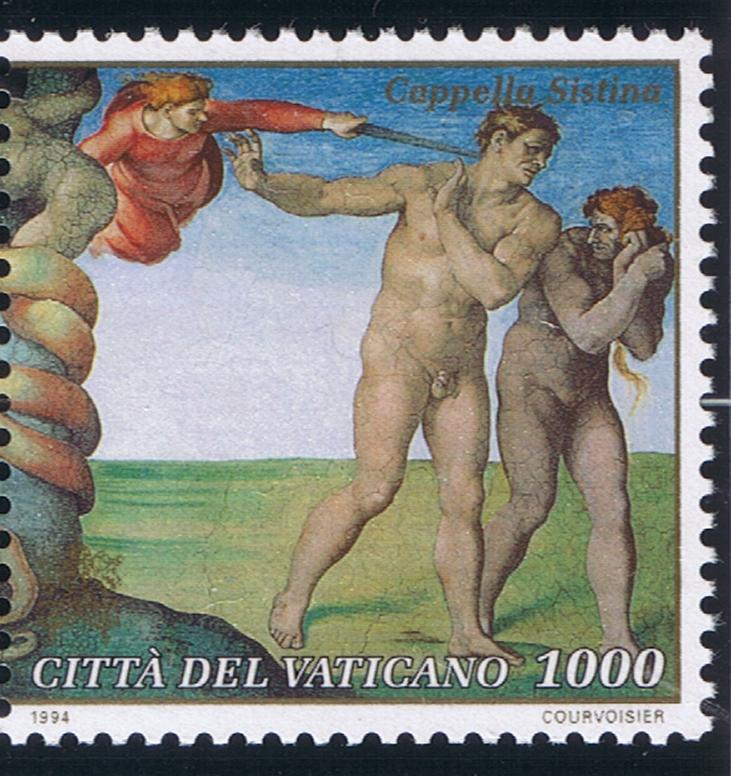
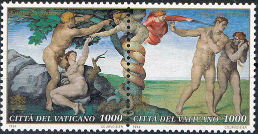


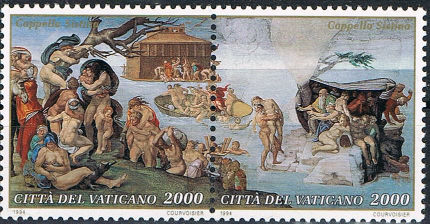






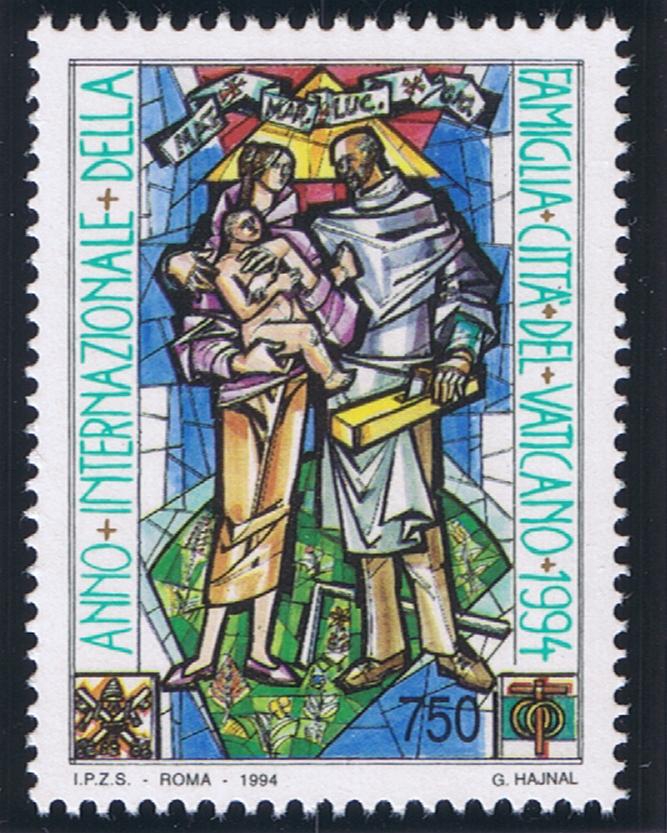

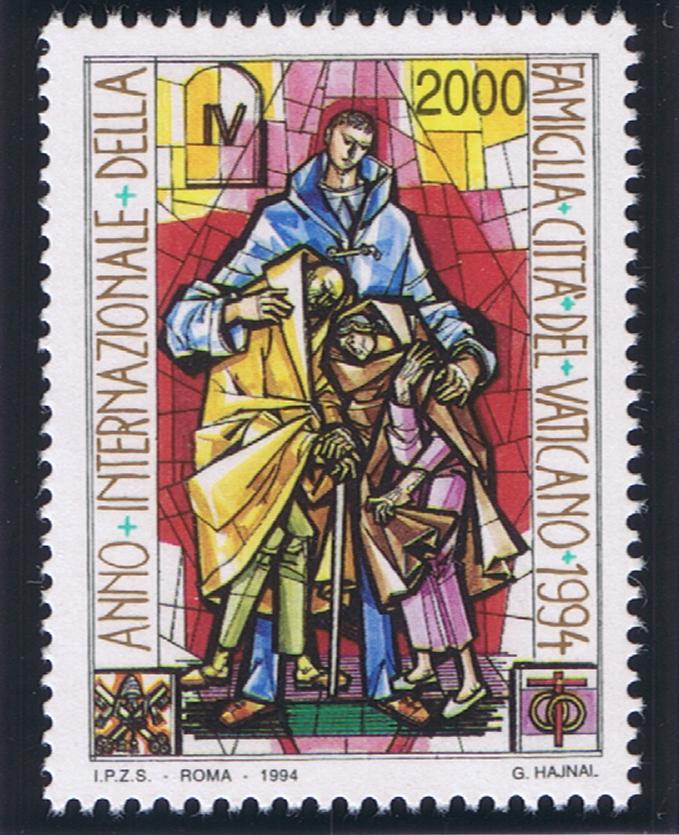







































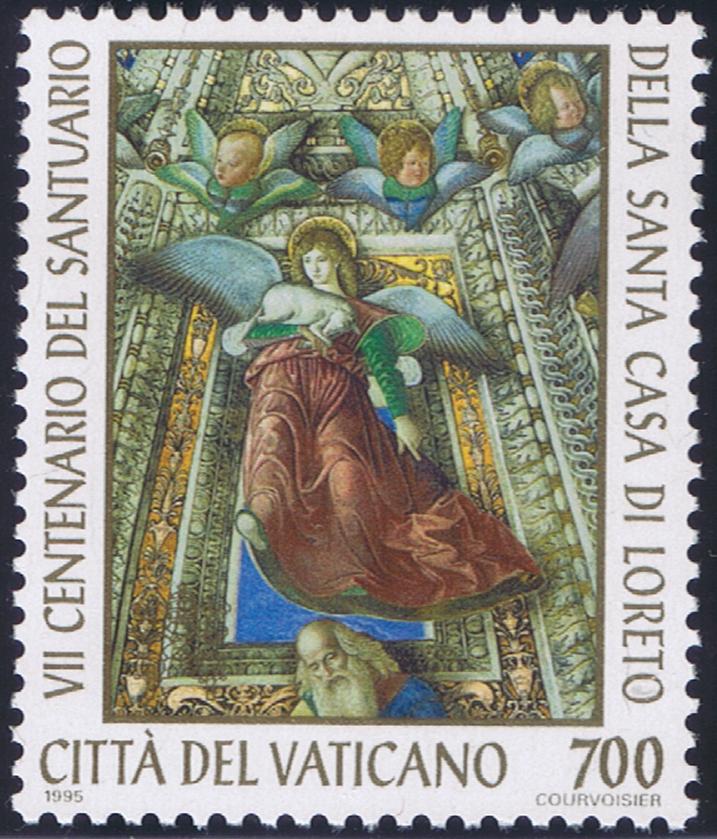
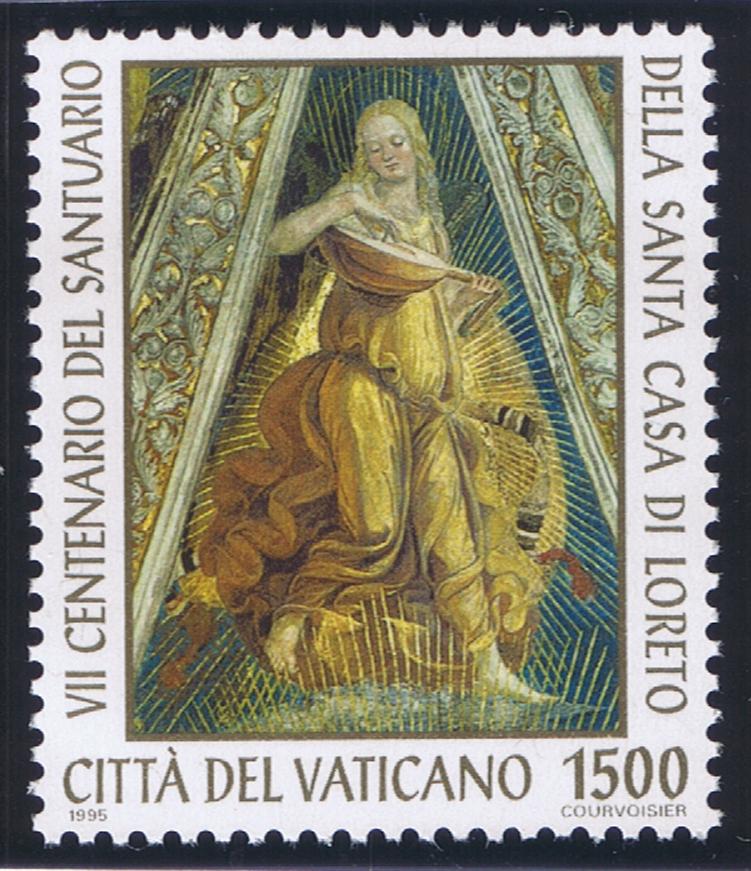
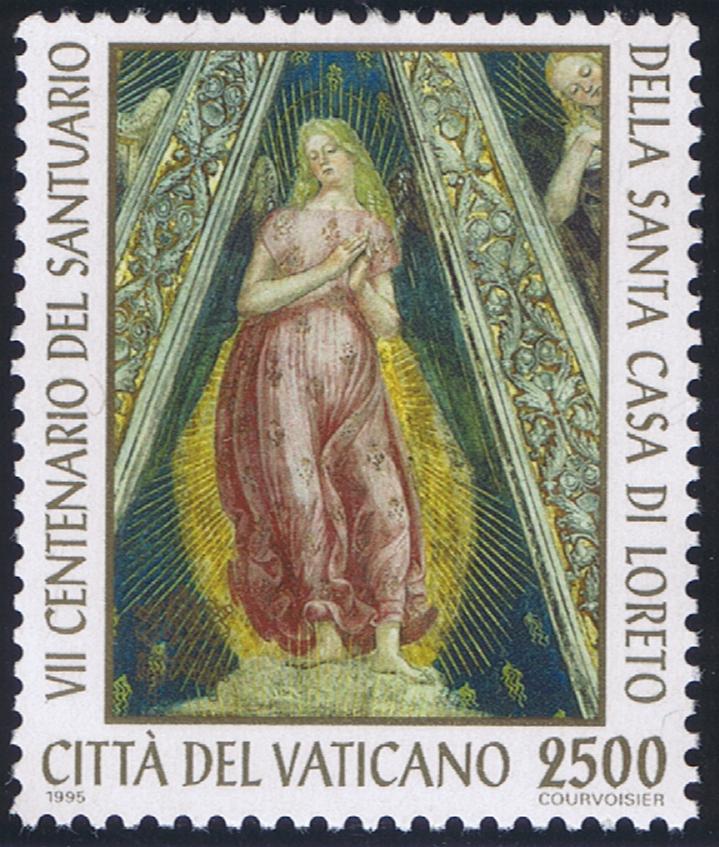
The Holy House of Loreto
On March 25, 1995 Vatican City issued two new series of stamps. One series consists of four stamps and a souvenir sheet that commemorates the Seventh Centenary of the Shrine of the Holy House of Loreto. The Stamps are vertical in format, measuring 34.45 x 41.10 mm., and have a perforation of 11 3/4 x 11 la. They were issued in sheets of 20.
Along the sides of the stamps is the inscription Vii CENTENARIO DEL SANTUARIO DELLA SANTA CASA DI LORETO, and at the bottom, C1TTA DEL VATICANO and the value. The Papal Tiara and Crossed Keys are in the lower left corner of the illustration. The designs feature artwork from the Shrine of Loreto:
• 600 lire - Angel with Chal-ice: detail from the vault of the Sacristy of St. Mark, painted by Melozzo da Porli (1438-1444);
• 700 lire - Angel with the Iamb: detail from the vault of the Sacristy of St. Mark, also painted by Melozzo da Forli;
• 1,500 lire - Music-making Angel: detail from the vault of the Sacristy of St. John, painted by Luca Signorelli (1450-1523);
• 2,500 lire - Music-making Angel: detail from the vault of the Sacristy of St. John, also painted by Luca Signorelli.
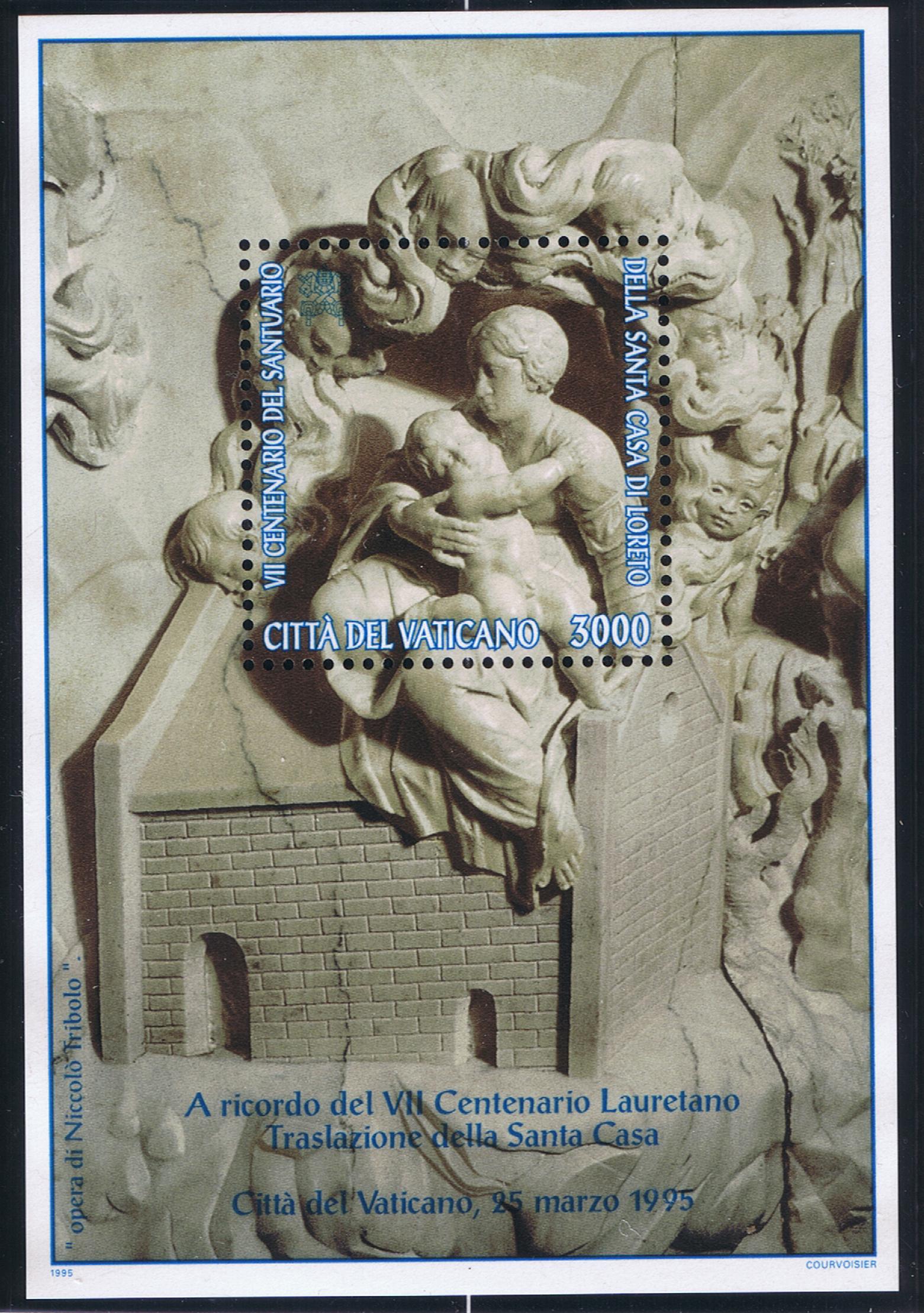





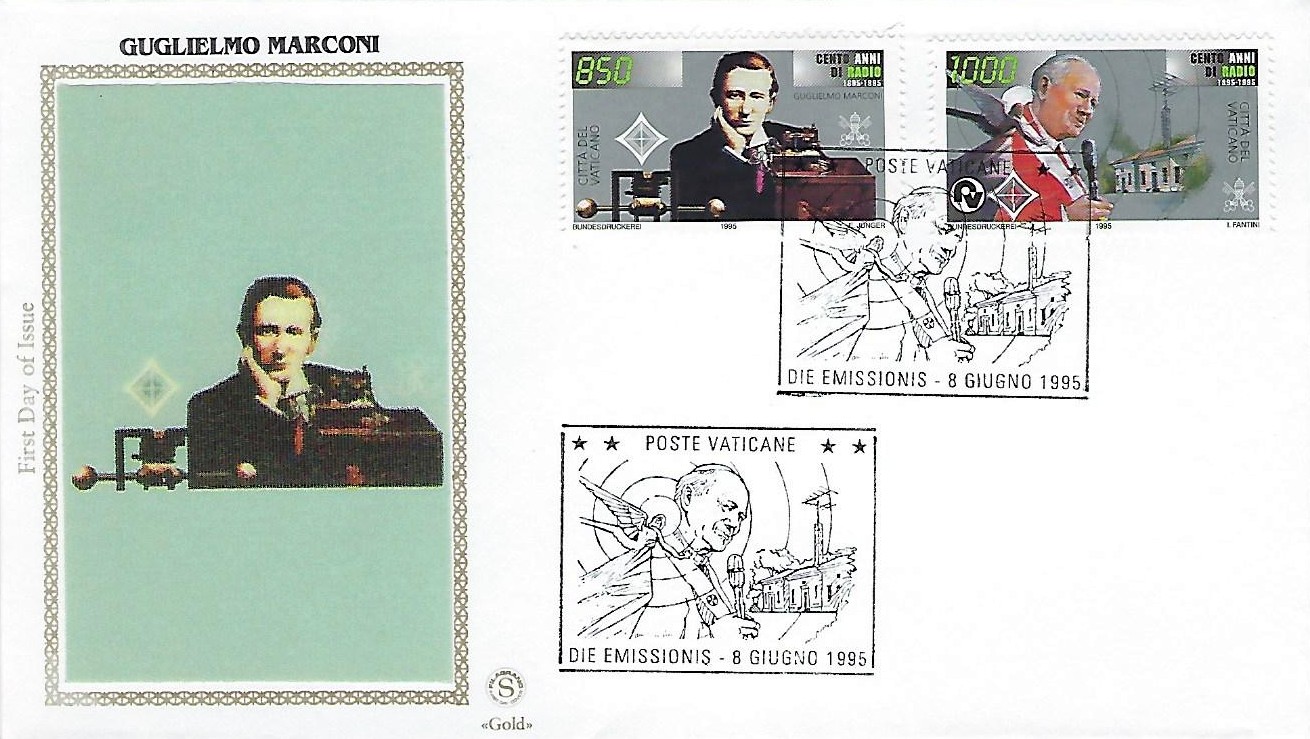





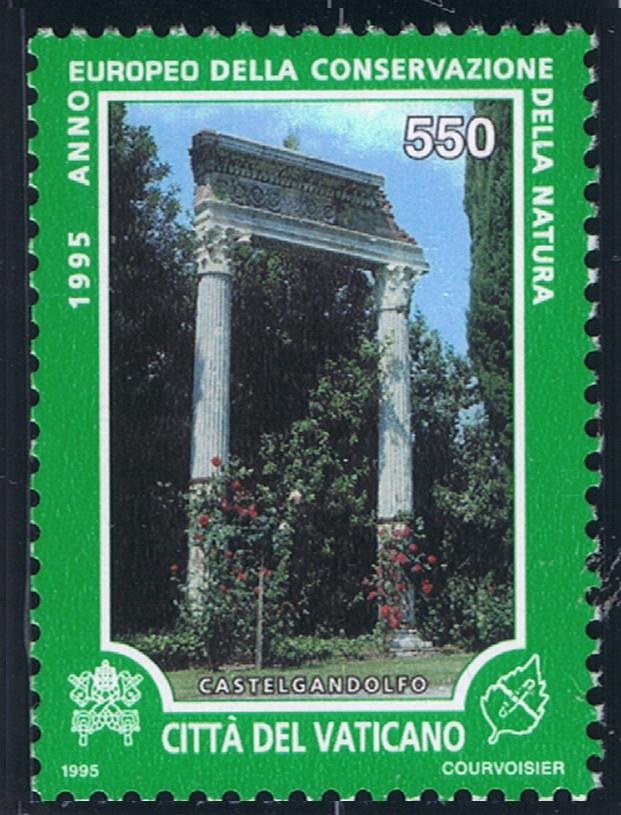

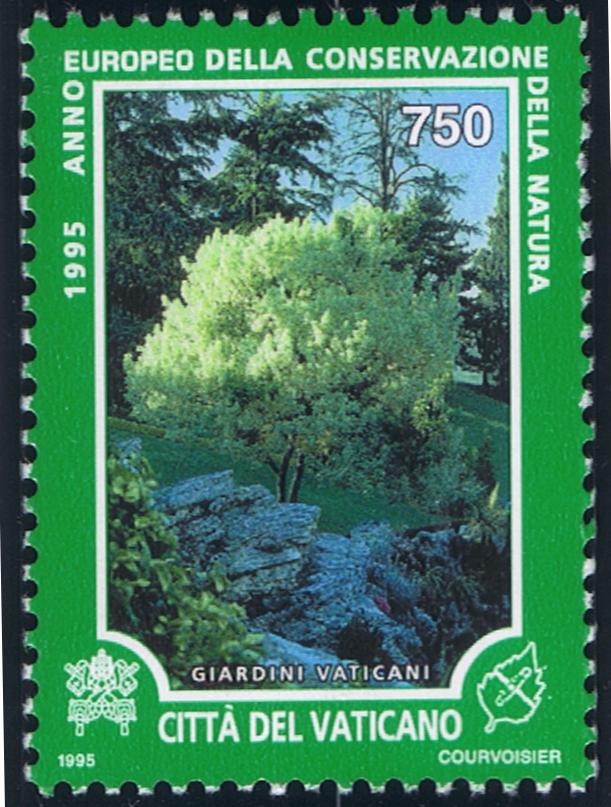





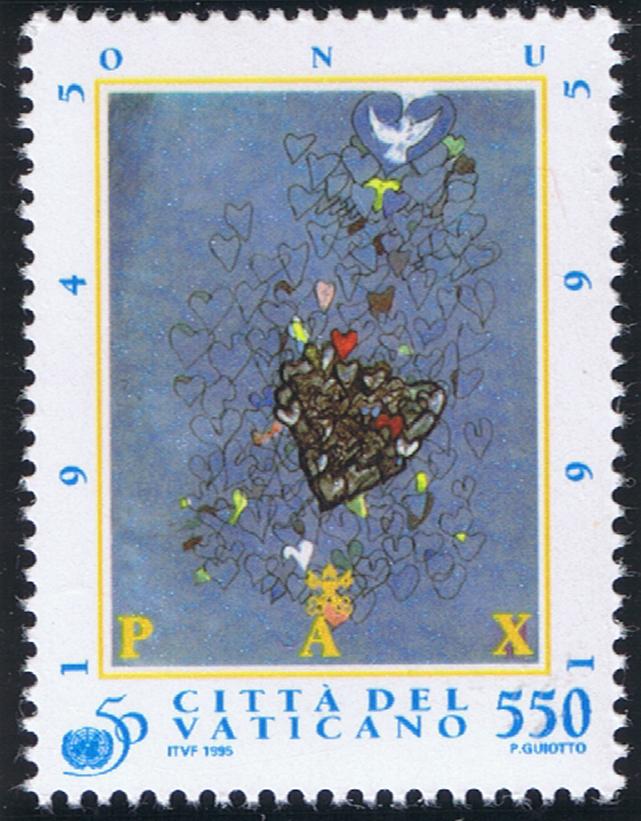
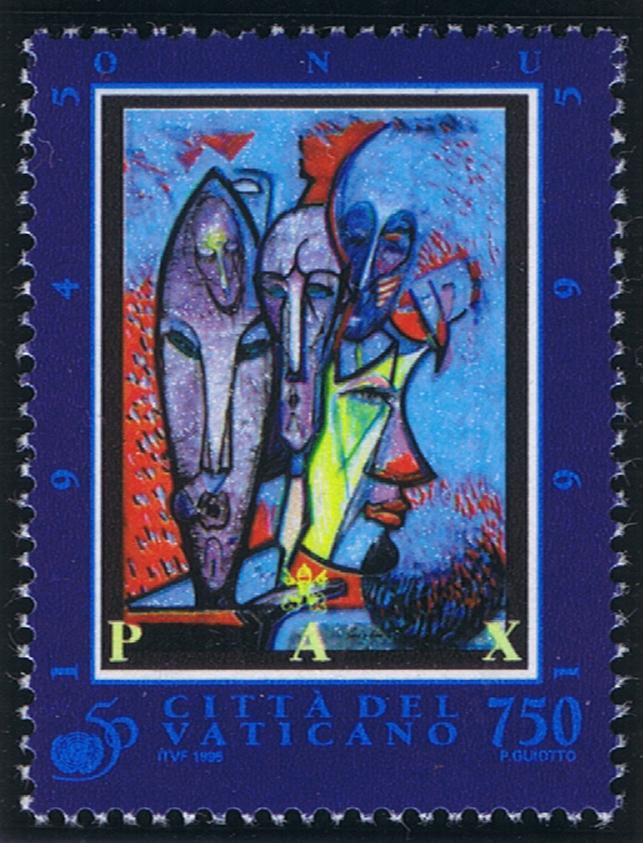
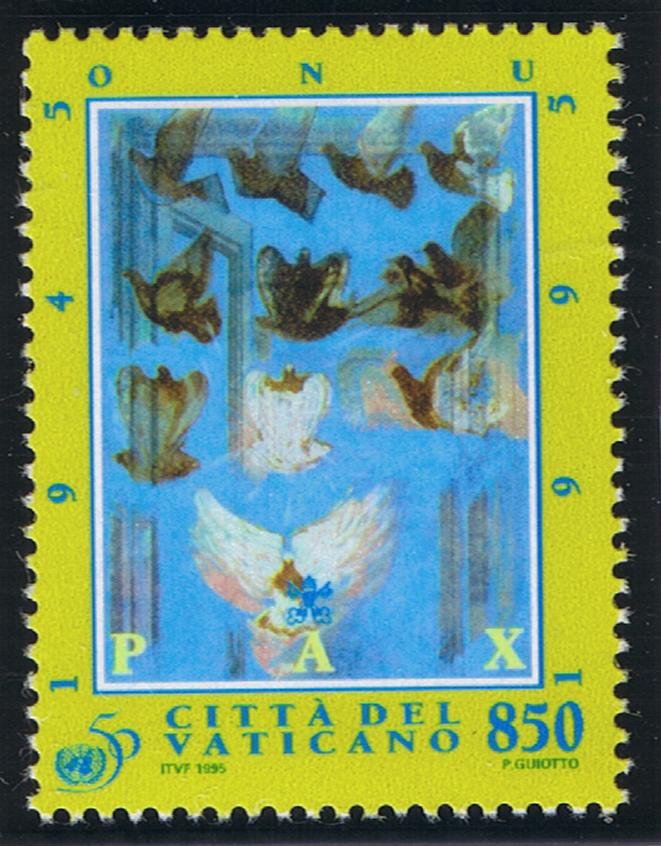
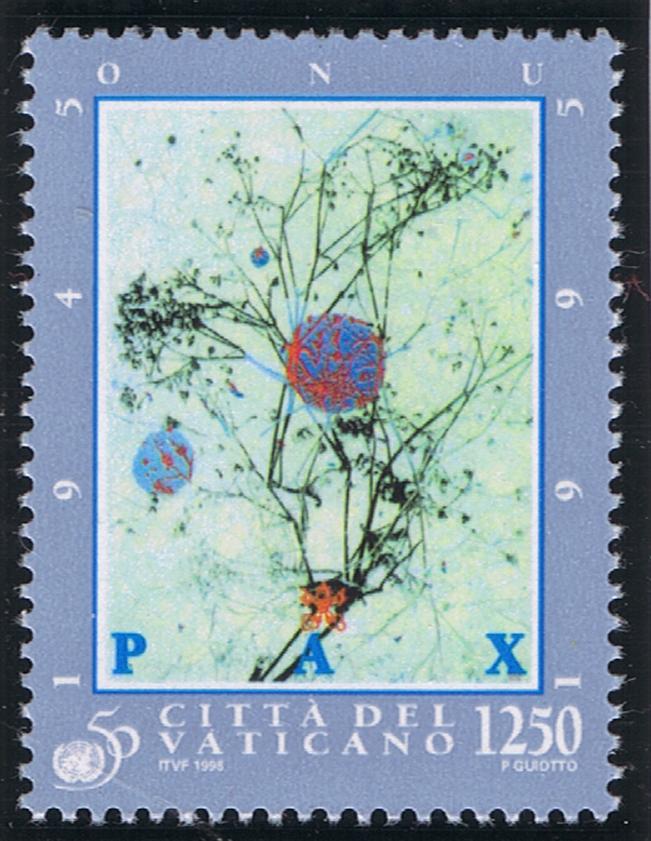
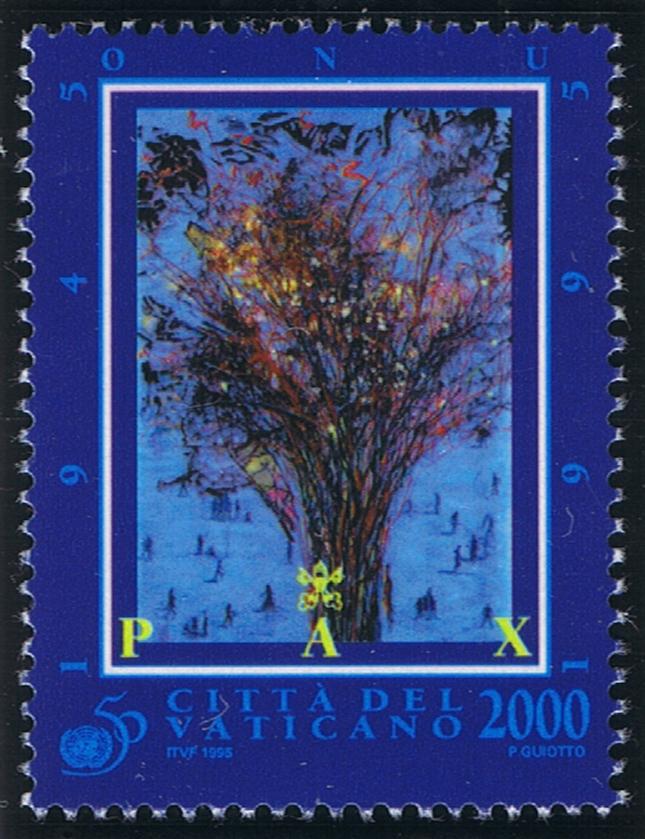


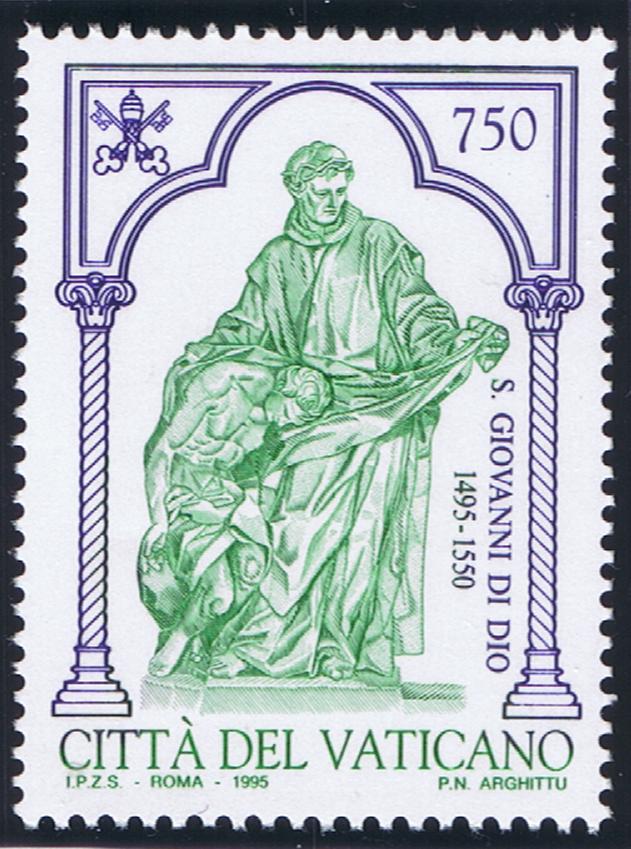







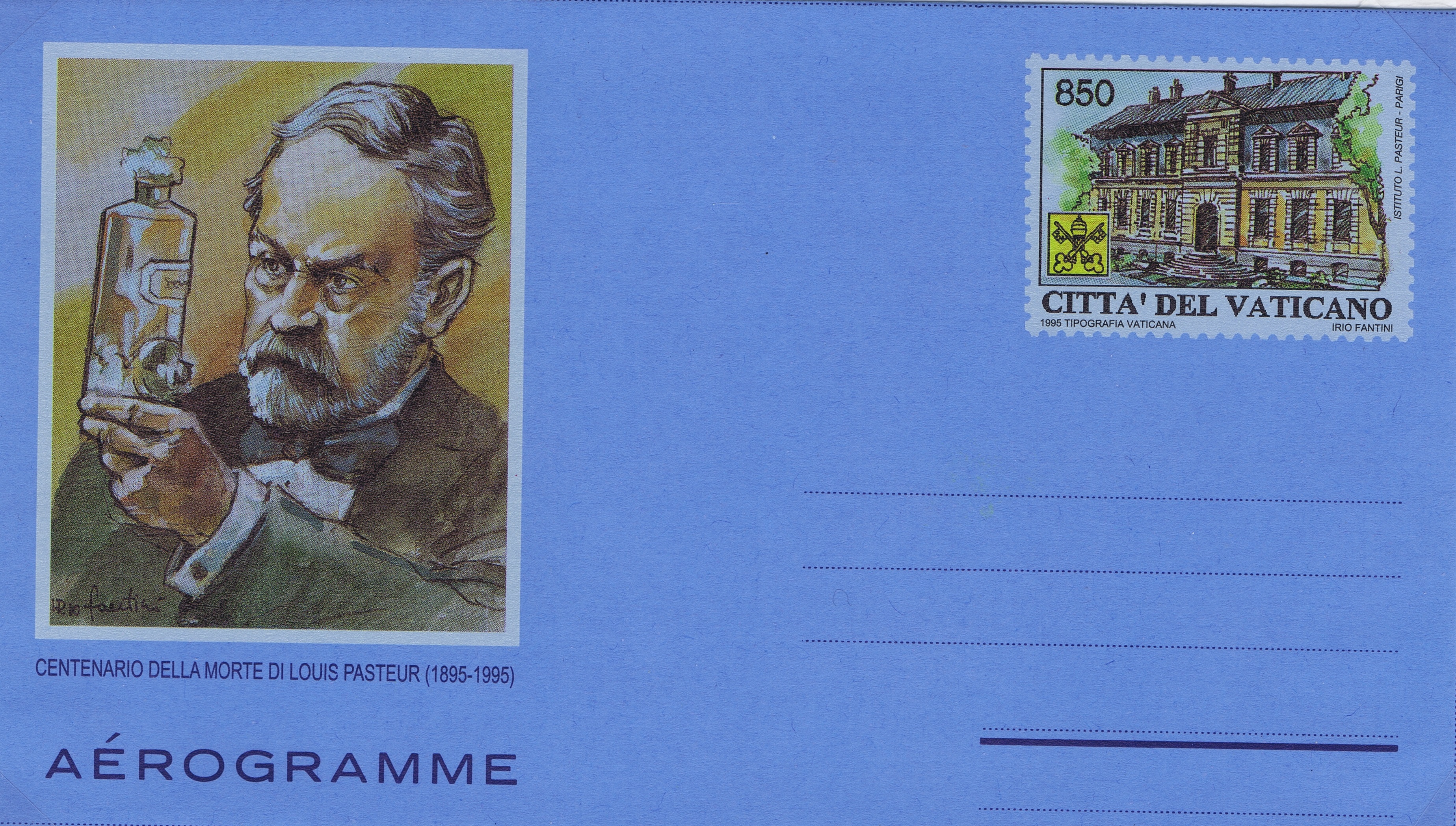




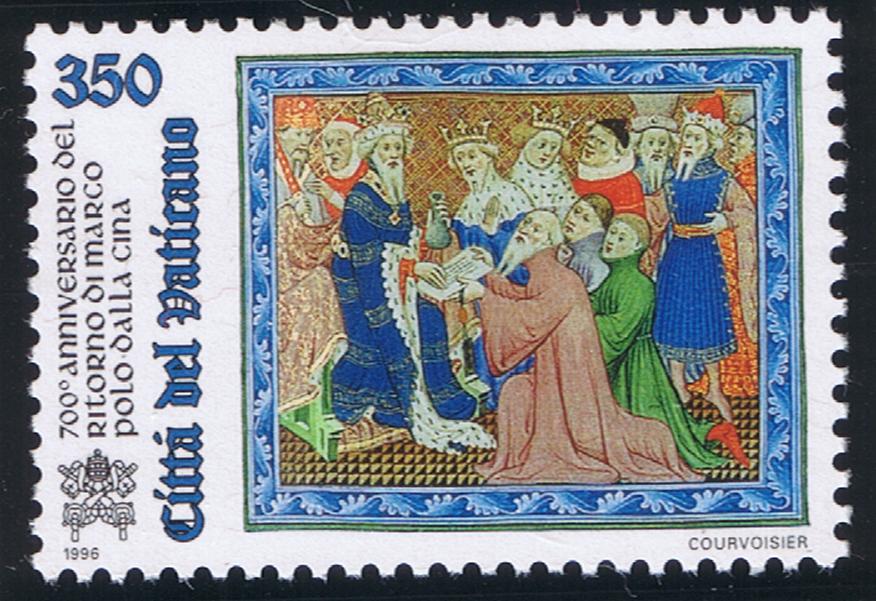
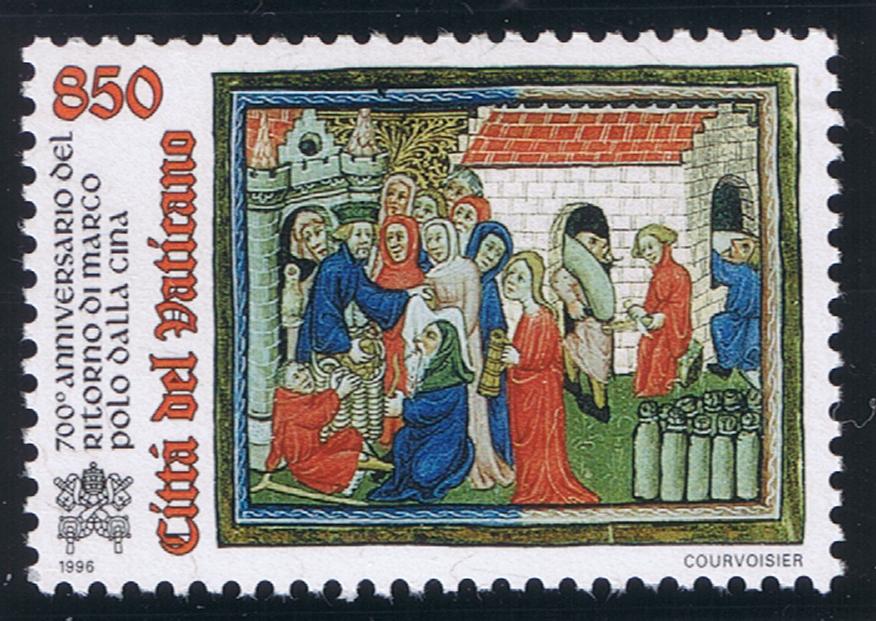

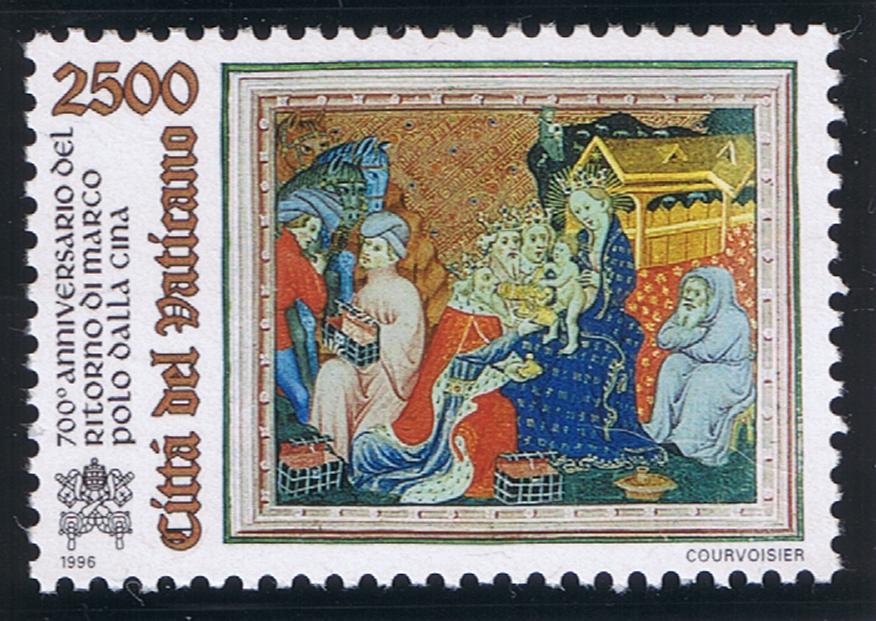
Marco Polo Issue
Souvenir sheet--1008
On March 15, 1996 Vatican City issued stamps and a souvenir sheet commemorating the 700th Anniversary of Marco Polo's Return from China. It is also intended to be a memento of Vatican participation in the International Philatelic Exhibition CHINA, which will take place in Beijing from May 18 to 24, 1996.
The four stamps are horizontal, measuring 41.10 x 28 turn., and have a perforation of I 1 1/2 x 11 3/ 4. They were printed on white chalky paper in color rotogravure and issued in sheets of 20. At the left side of each stamp are the value, the words 700 ANNIVERSARIO DEL RITORNO DI MARCO POLO DALLA CINA and CITTA DEL VATICANO, as well as the Papal Crown and crossed Keys.
The stamps feature illustrations from miniatures preserved at the Bodleian Library, Oxford:
300 Lire - Marco Polo receiving the golden book from the Great Khan;
850 Lire - the Great Khan dispensing alms to the poor in the city of Cambaluc (Beijing;
1250 Lire - Marco Polo delivering Pope Gregory X's letter to the Great Khan;
2,500 Lire - Marco Polo in Persia, listening to the story of the three kings who went to Bethlehem to adore Jesus.









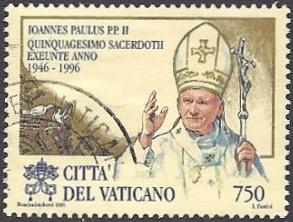
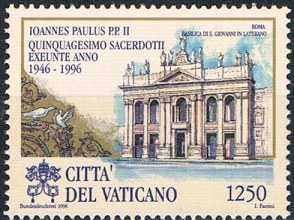








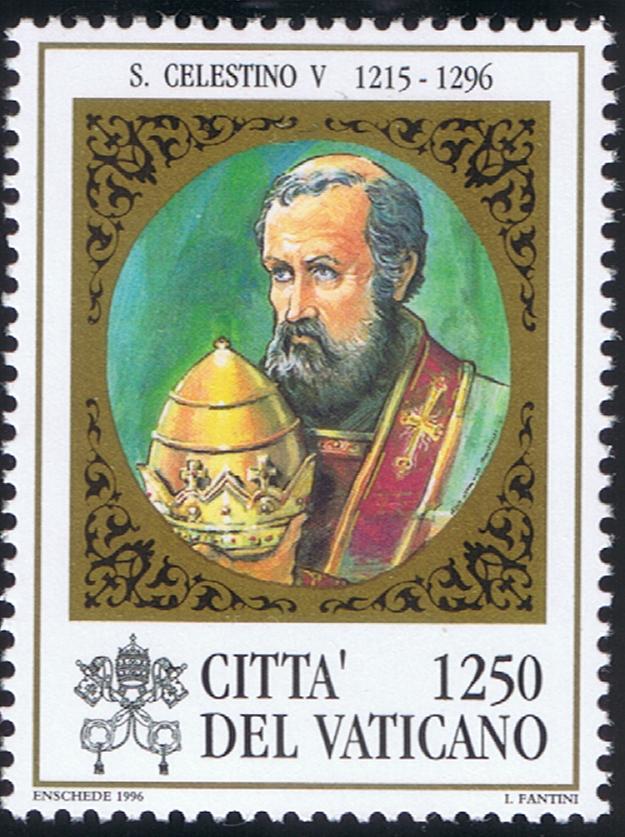


















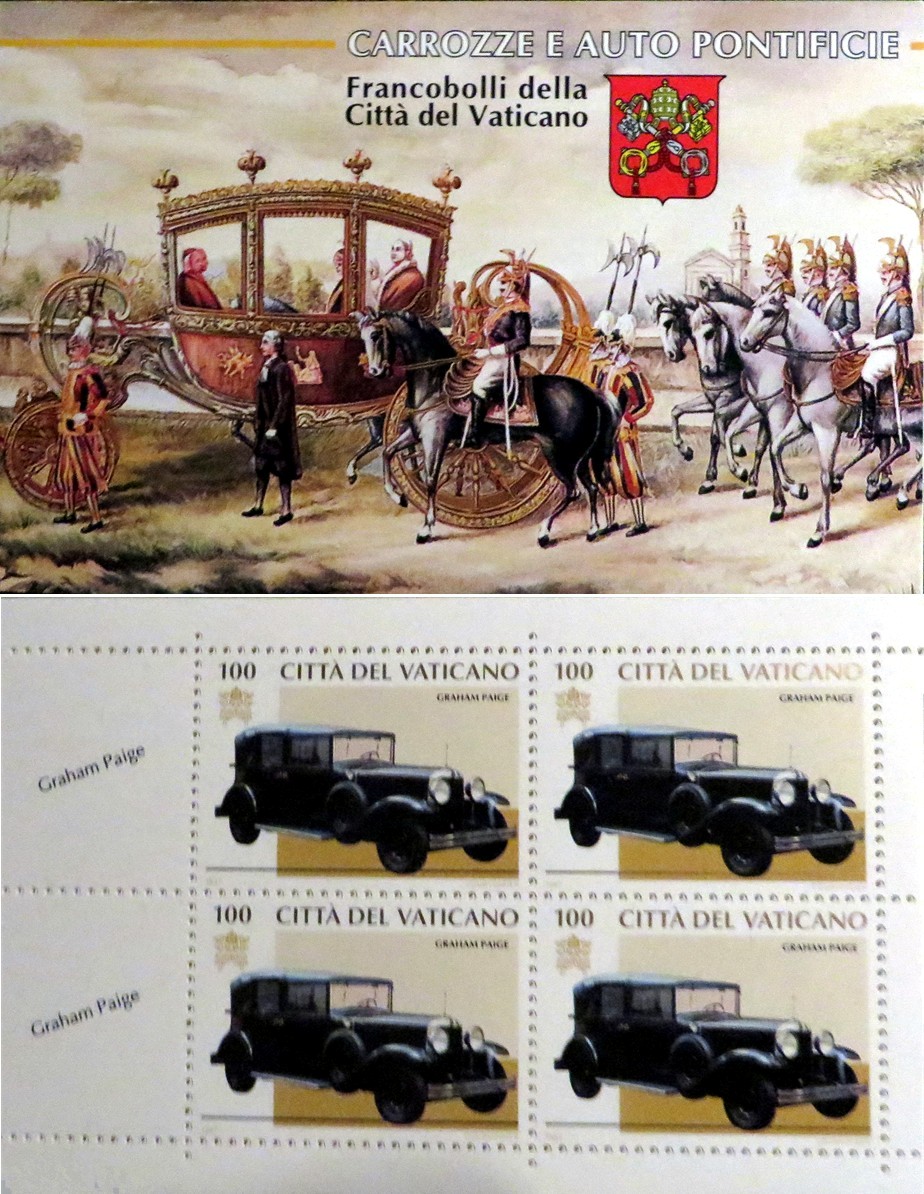

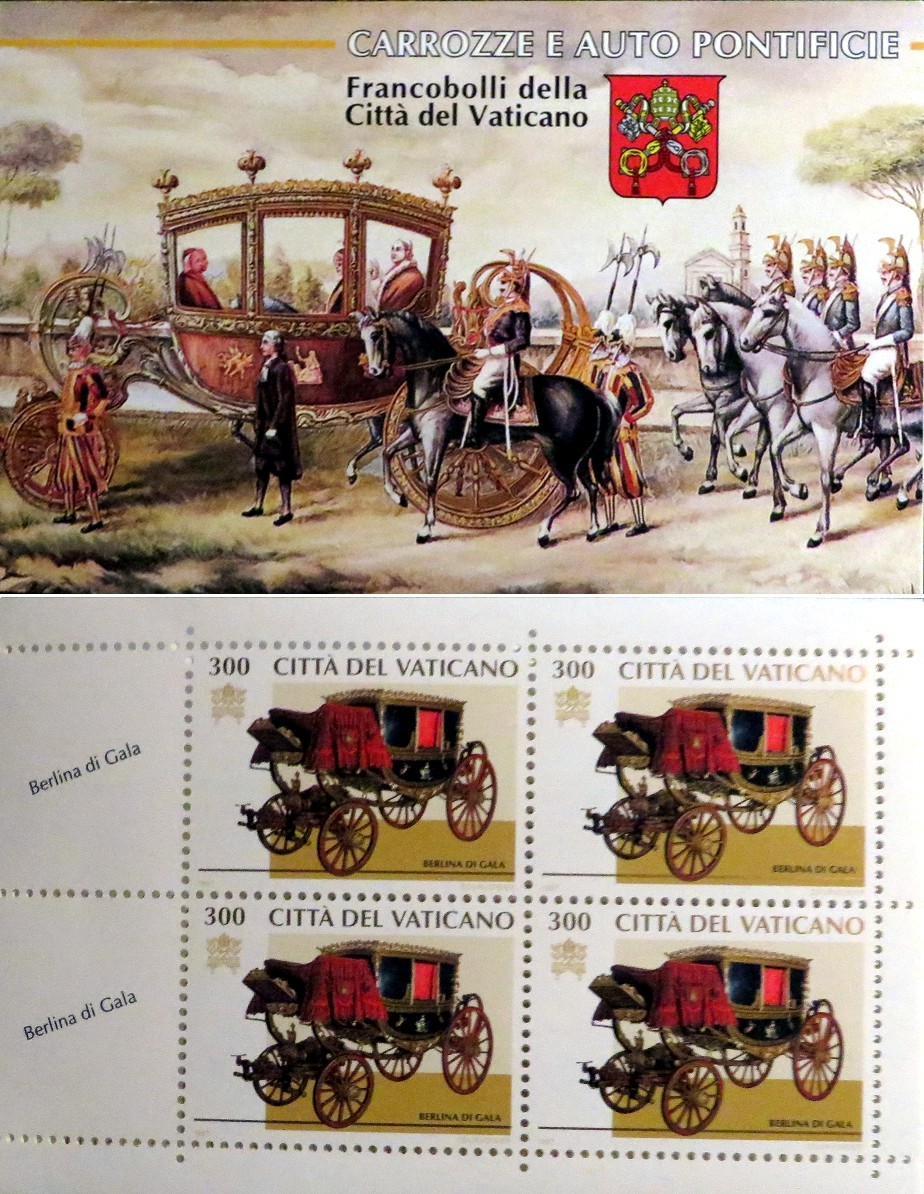




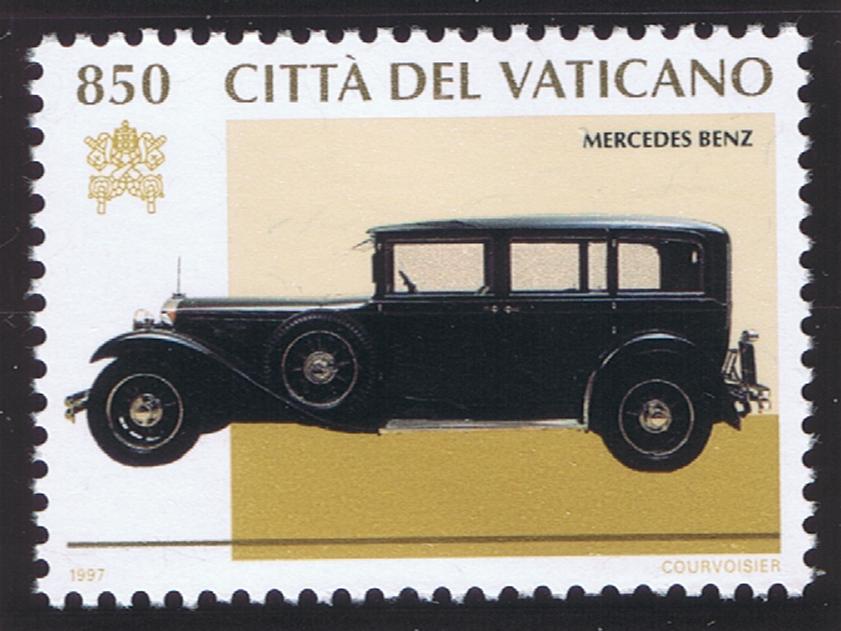

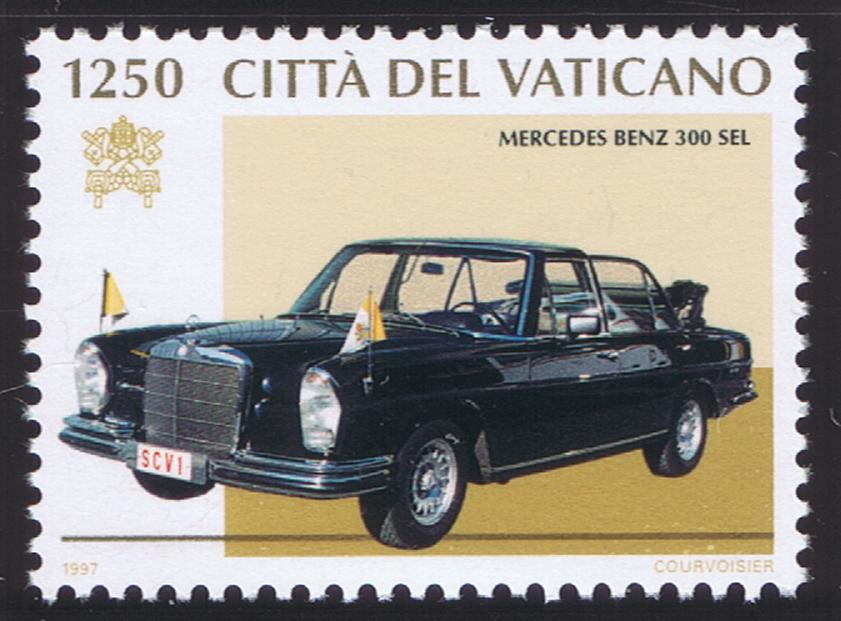








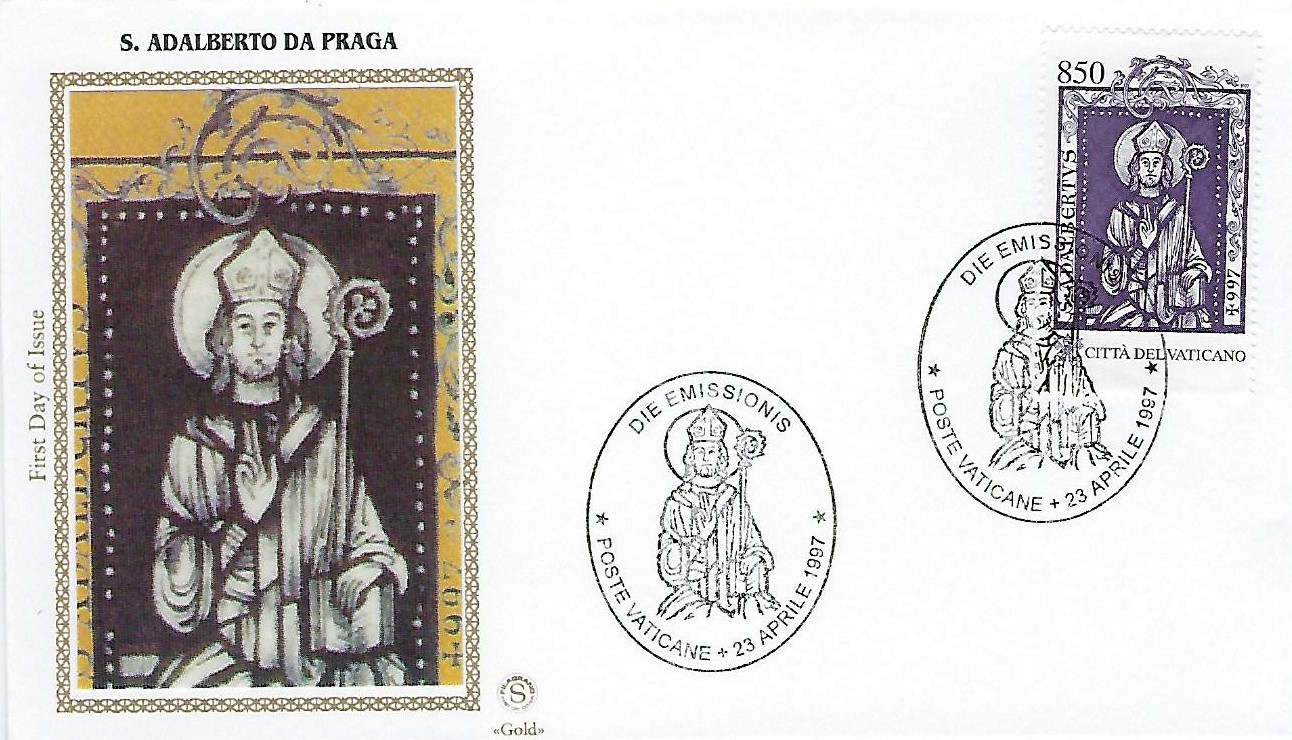

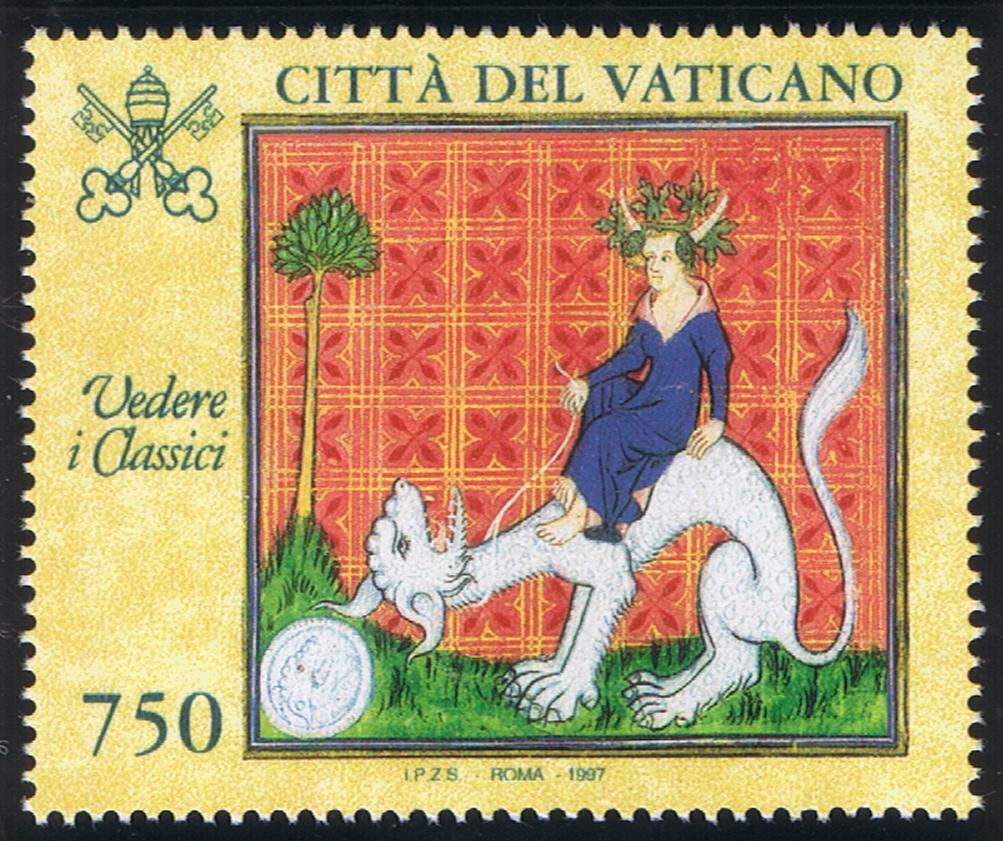











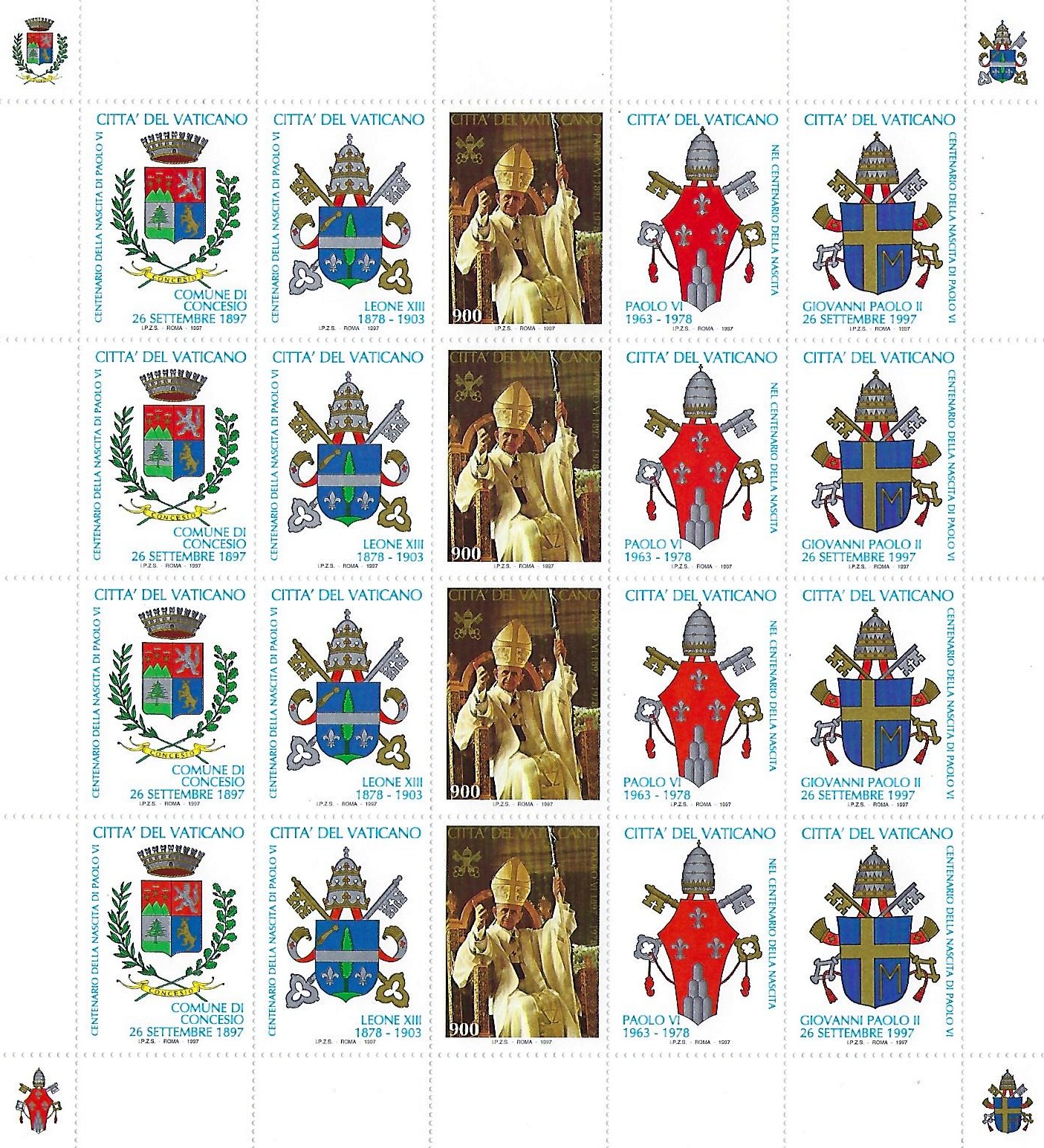








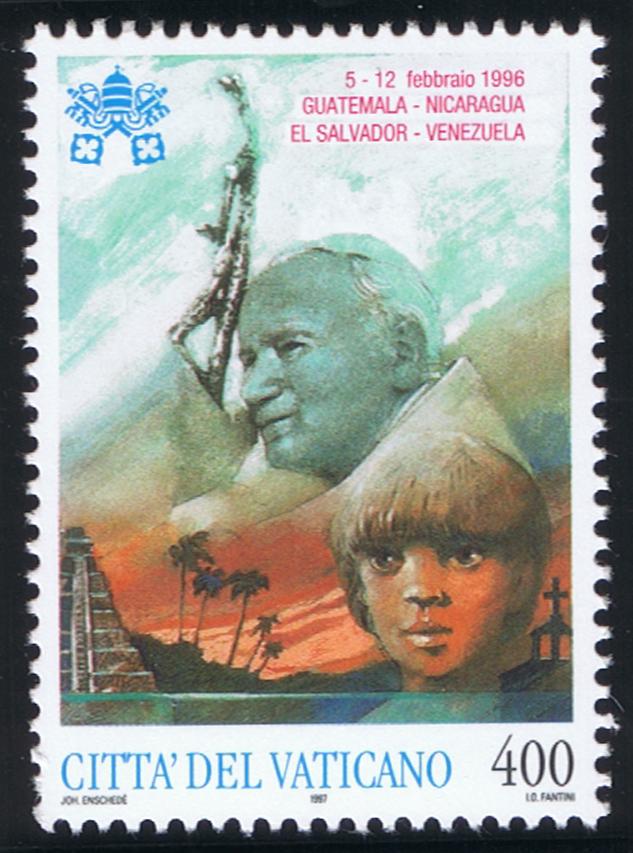








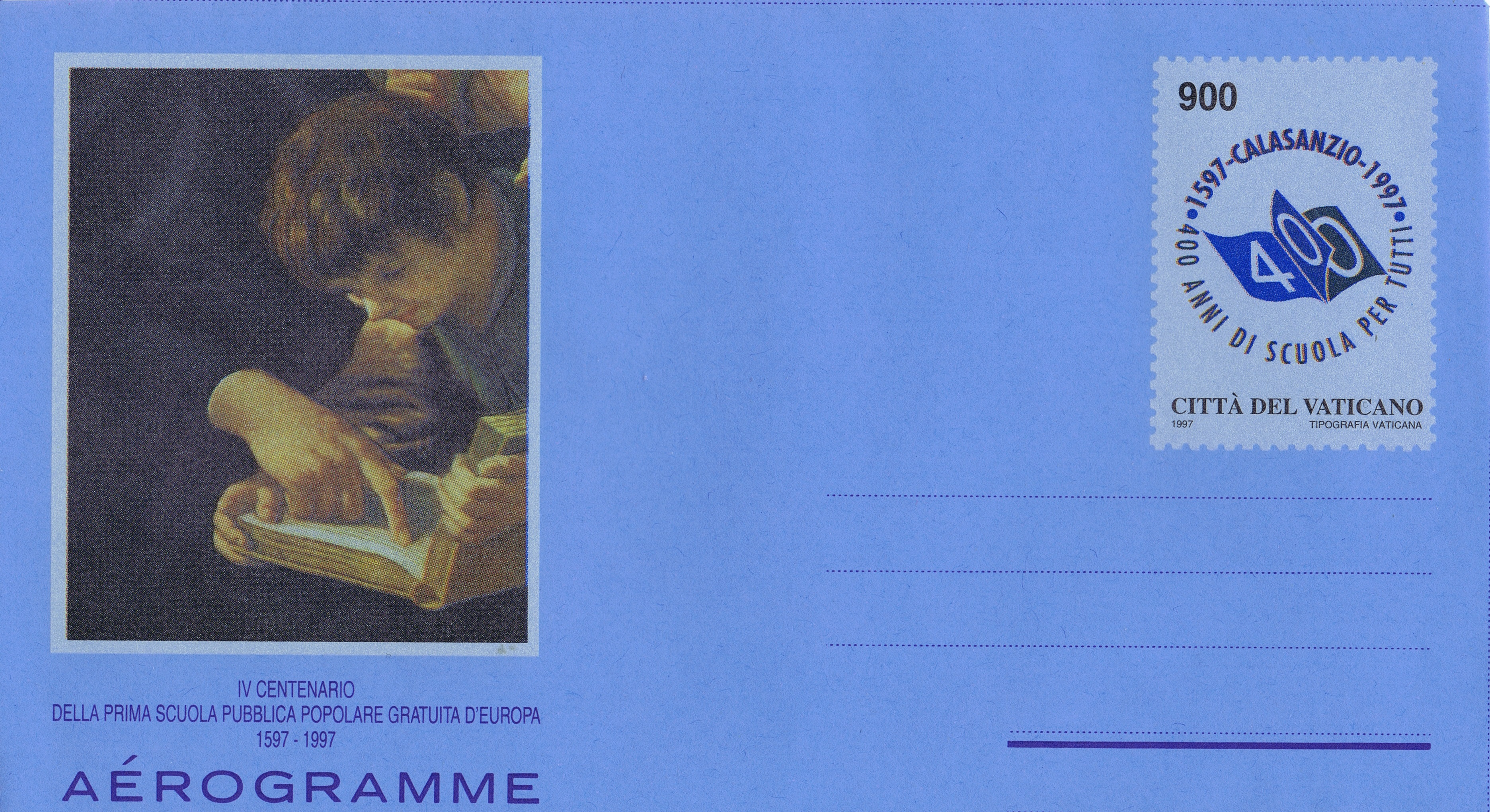





Popes of the Holy Years
1300-1525
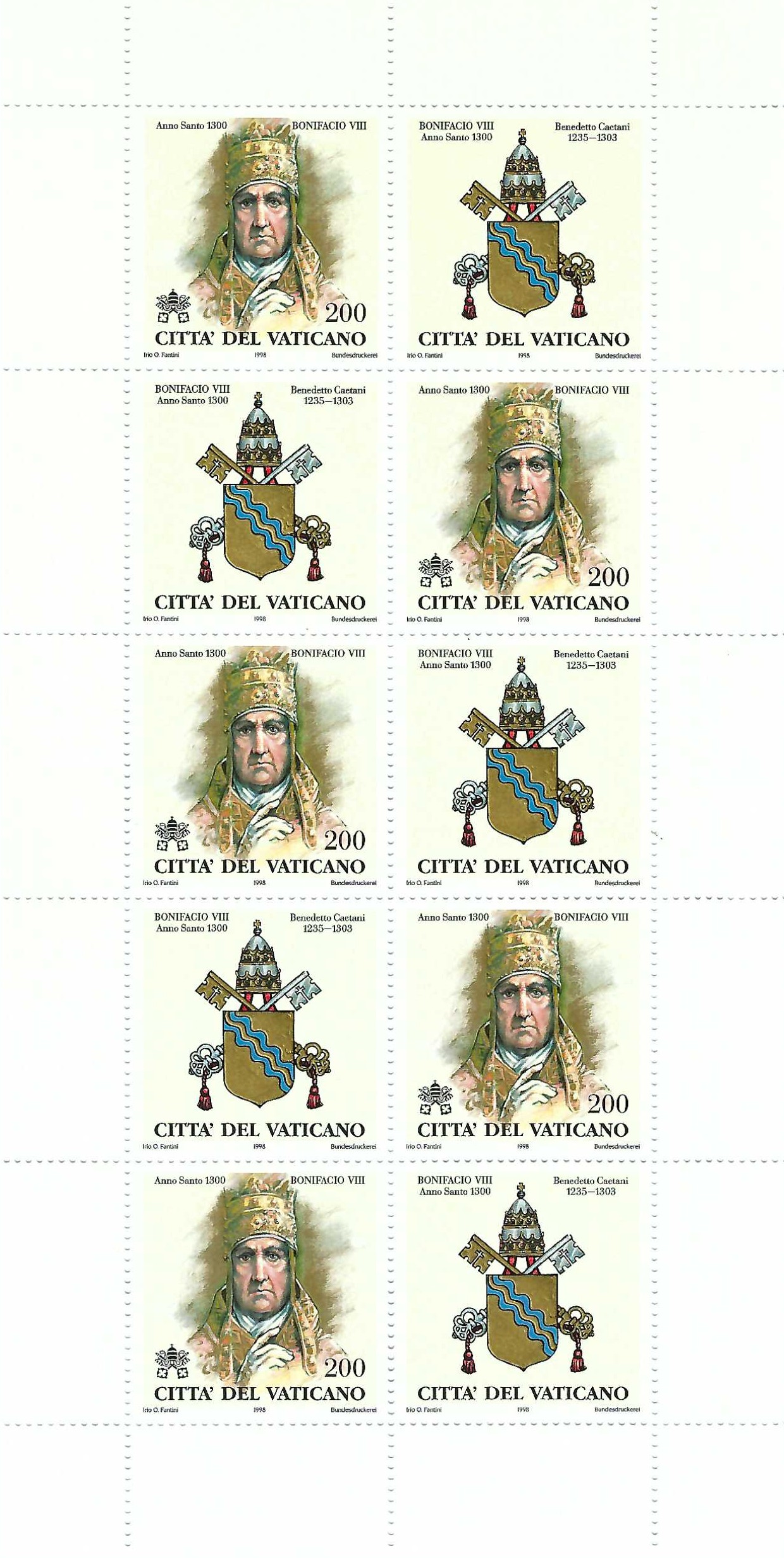

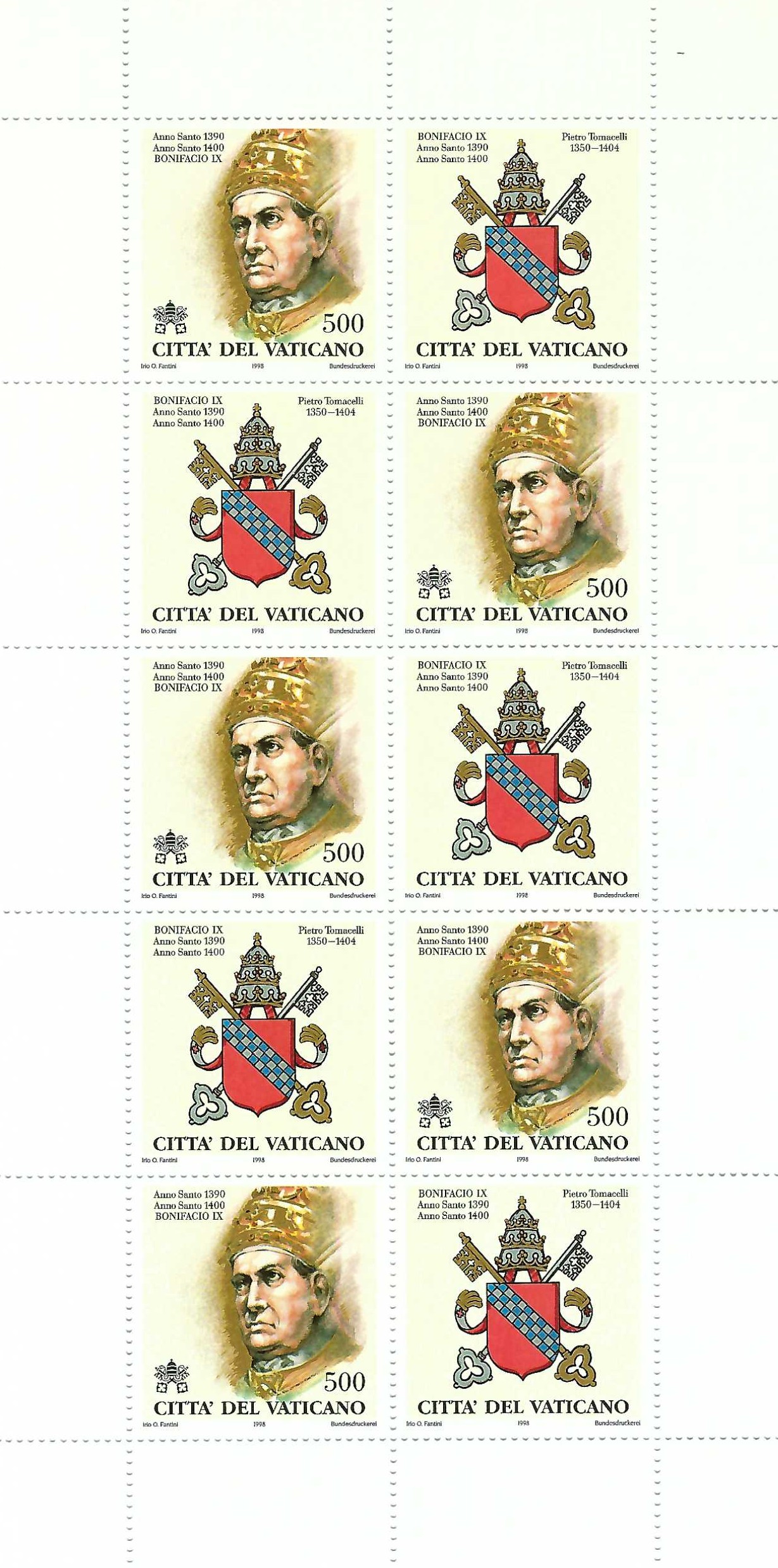
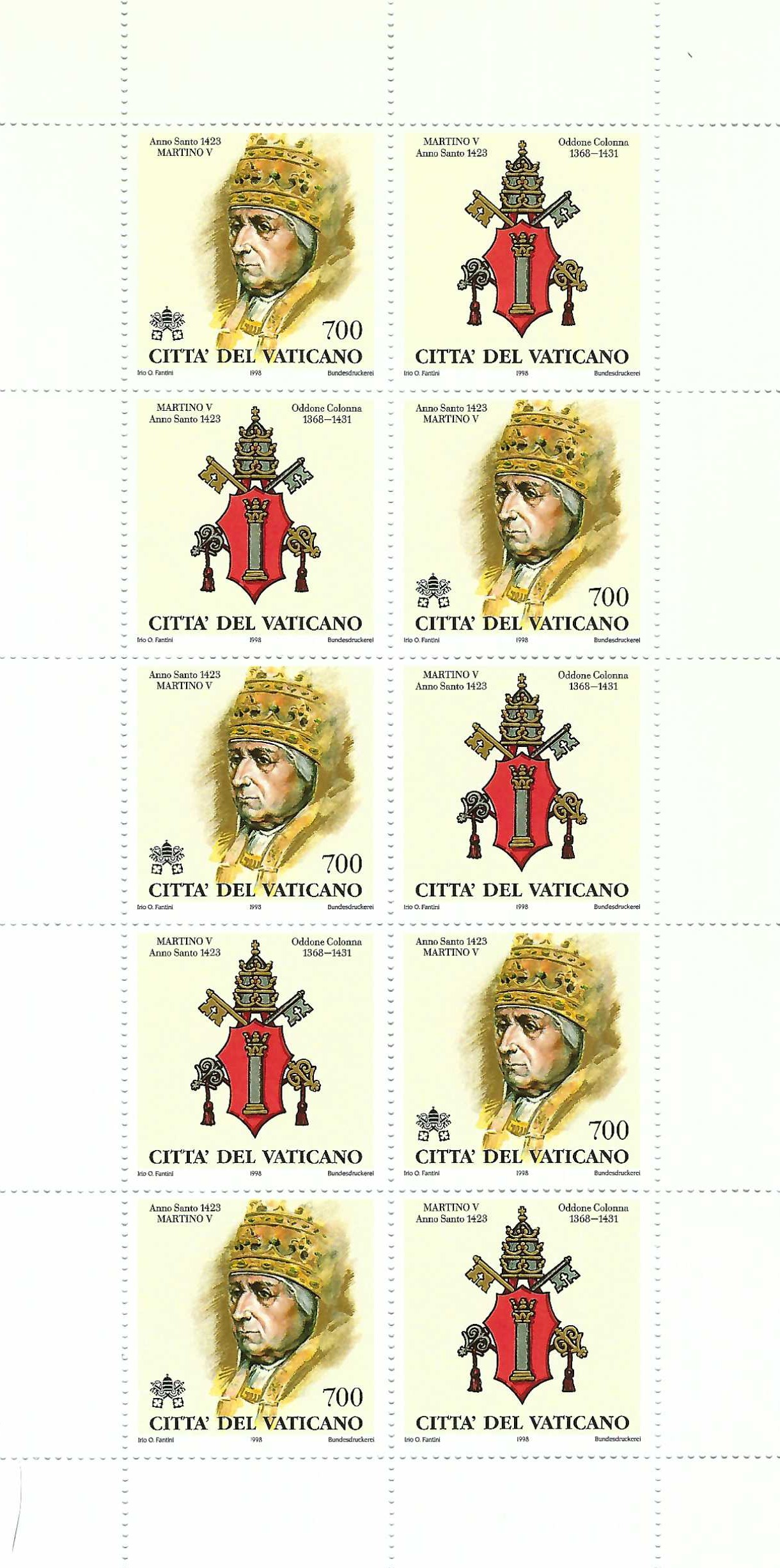
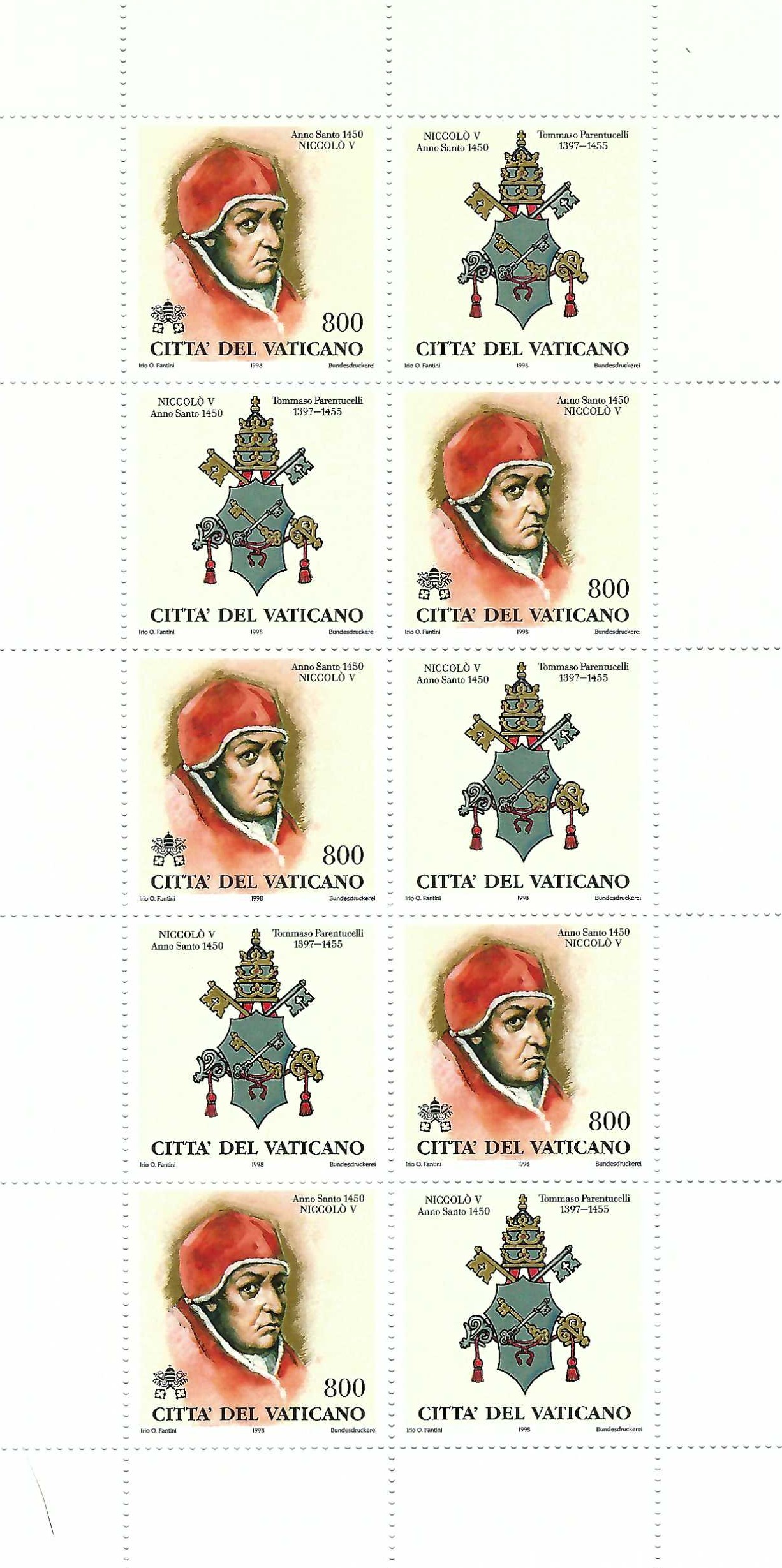
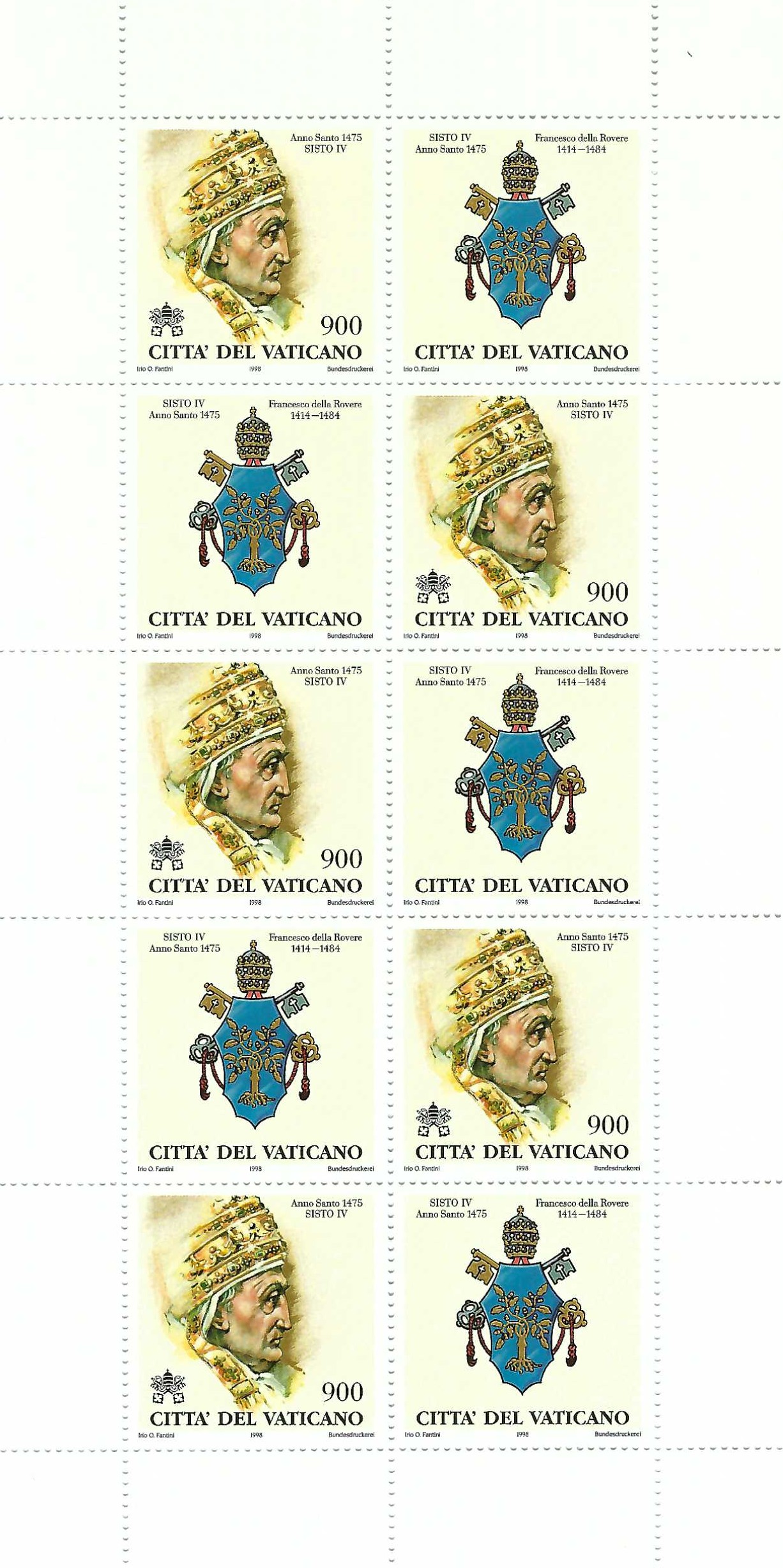
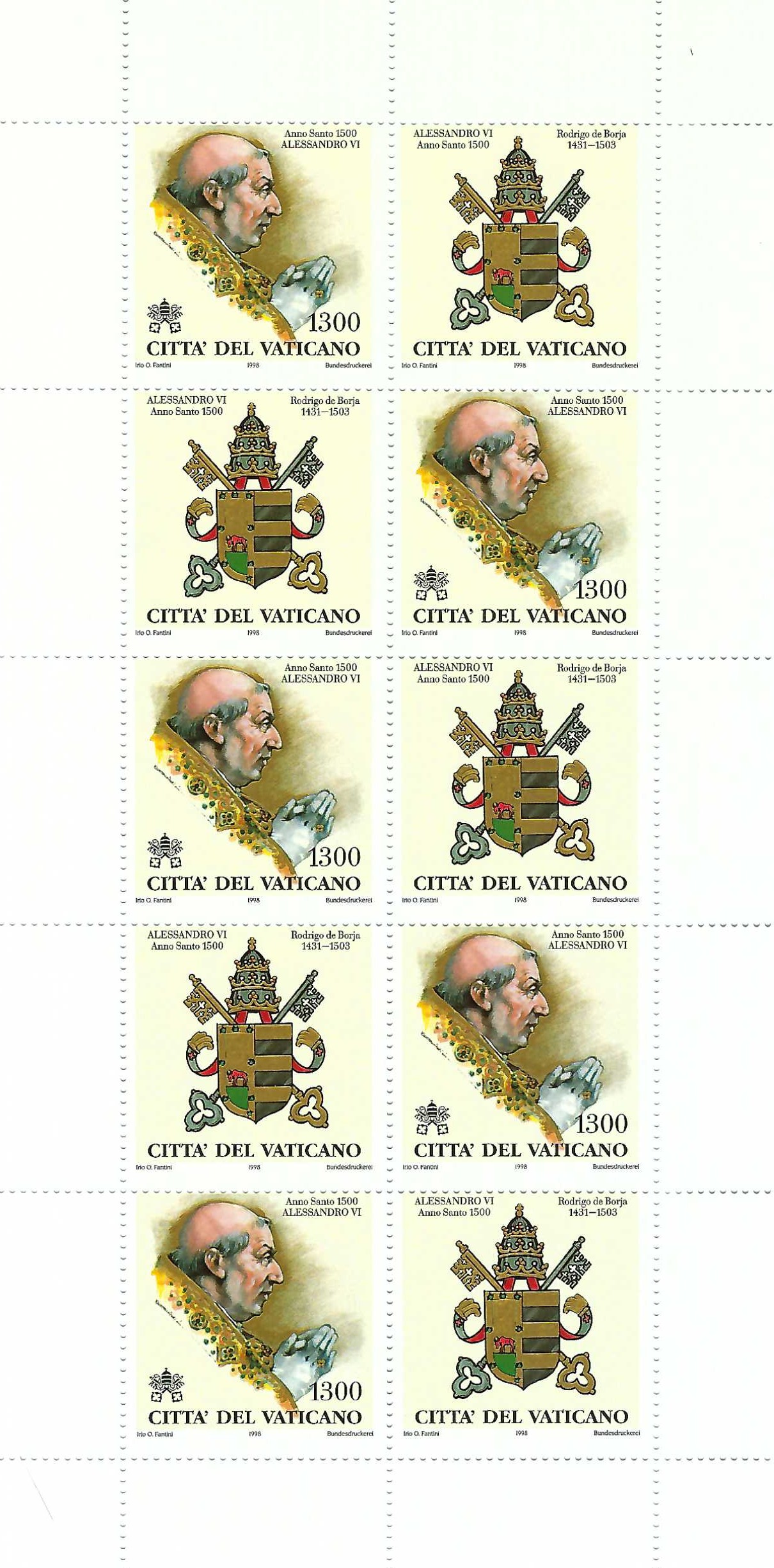

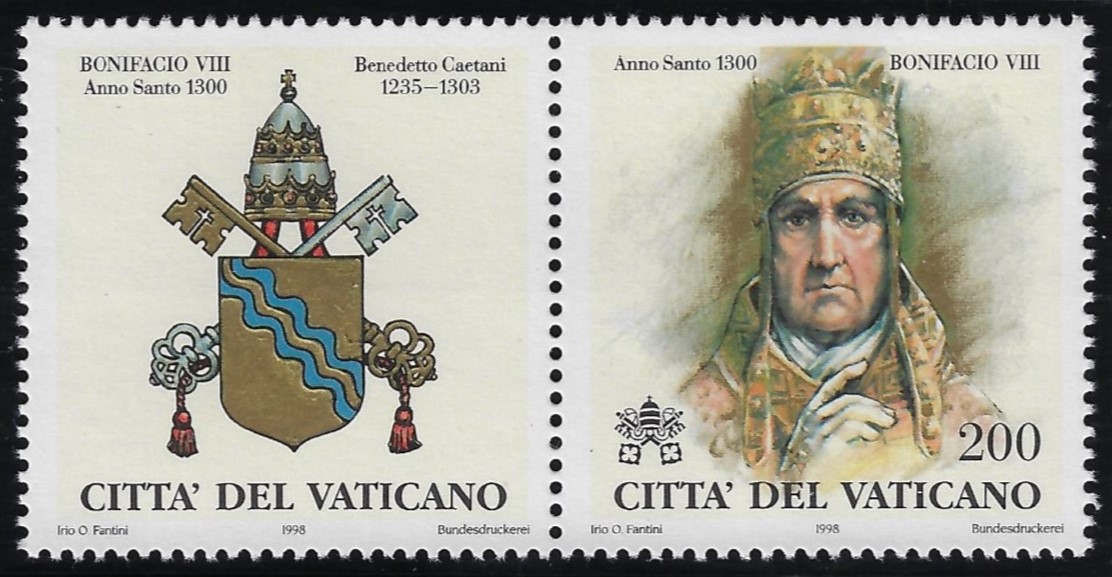



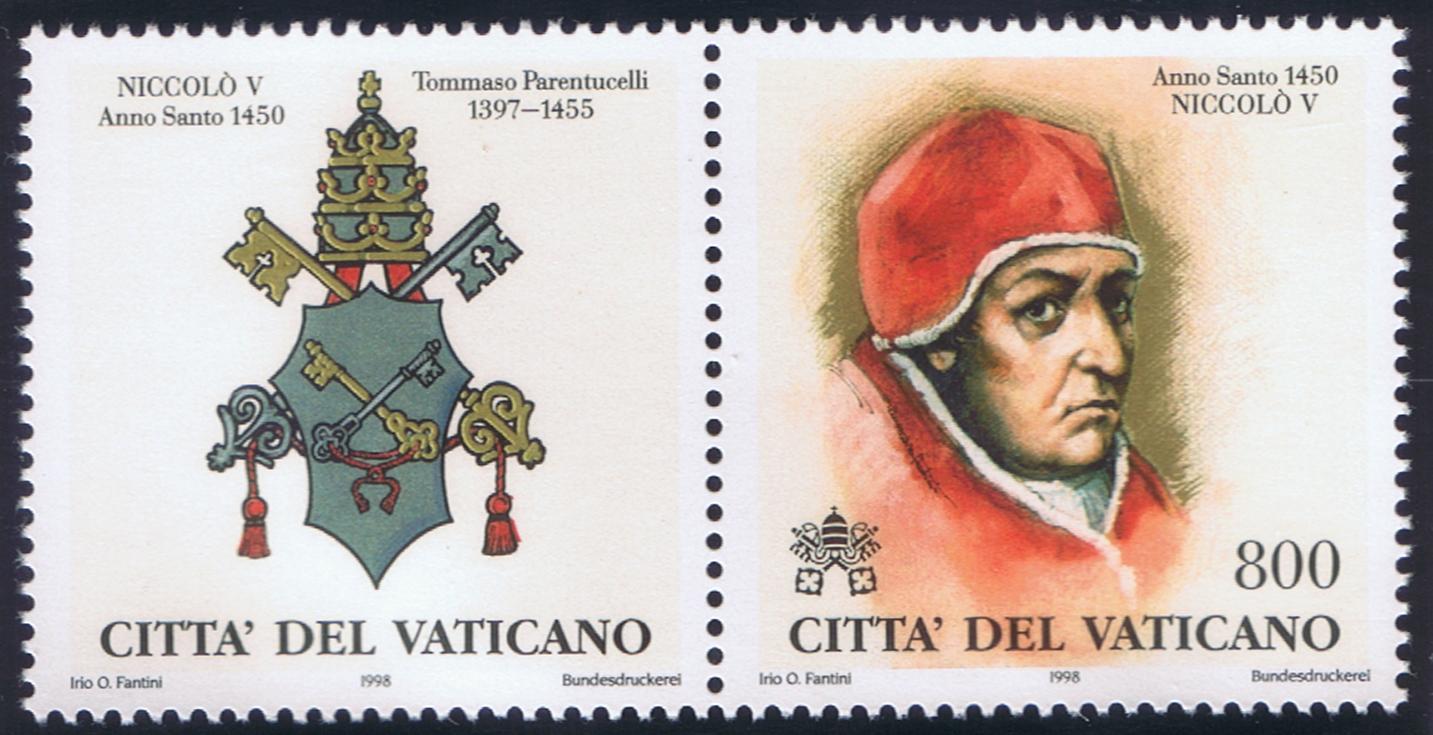




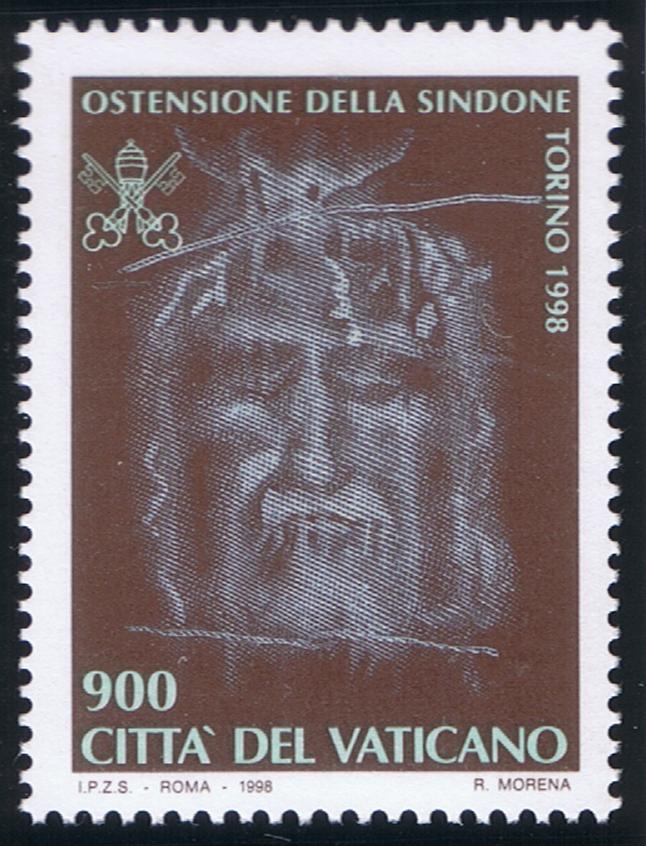
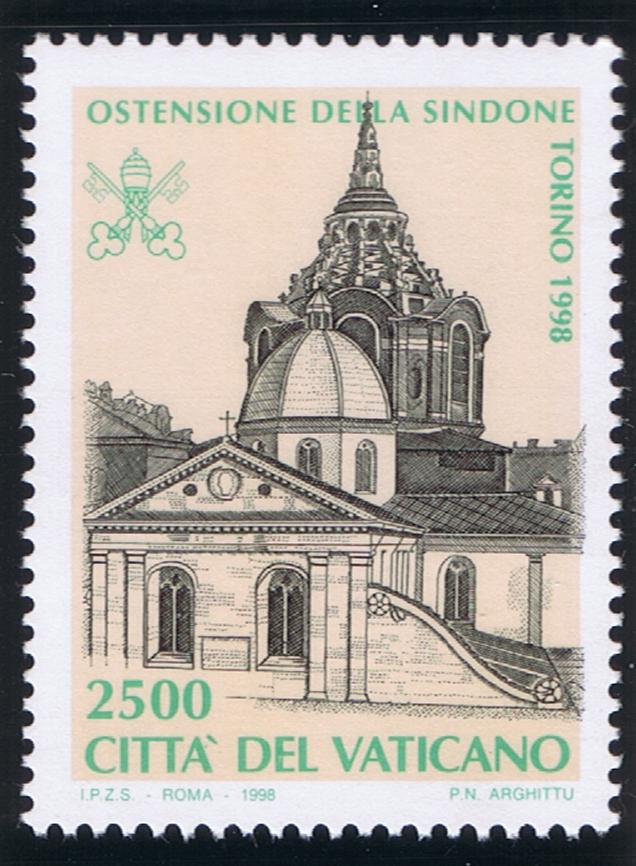

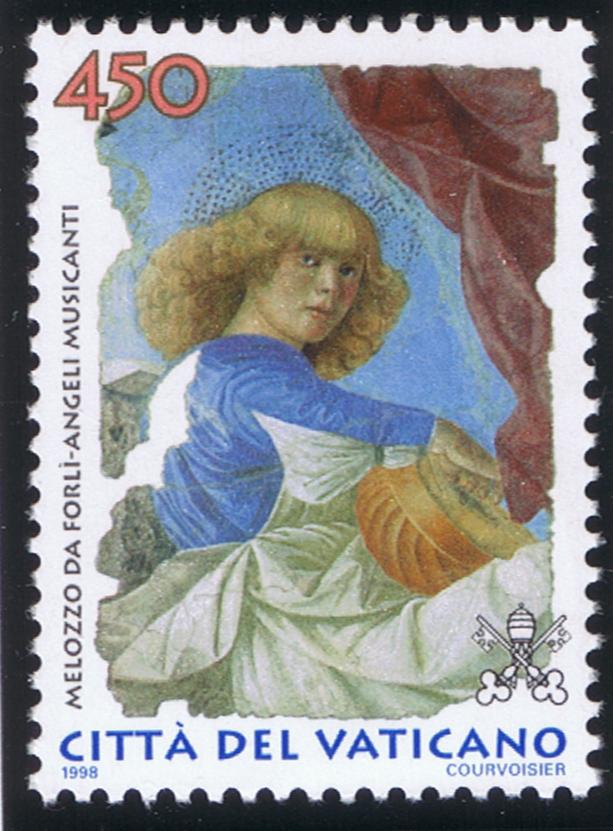
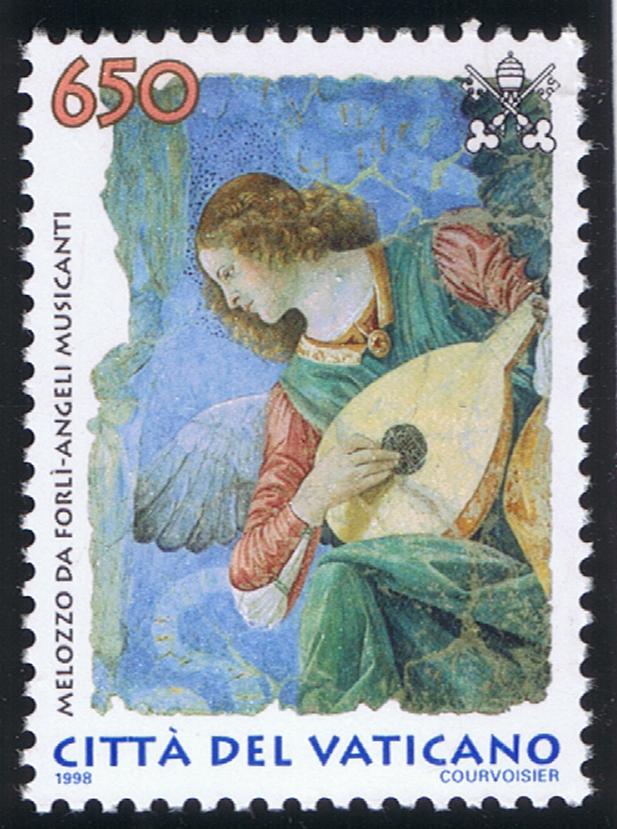
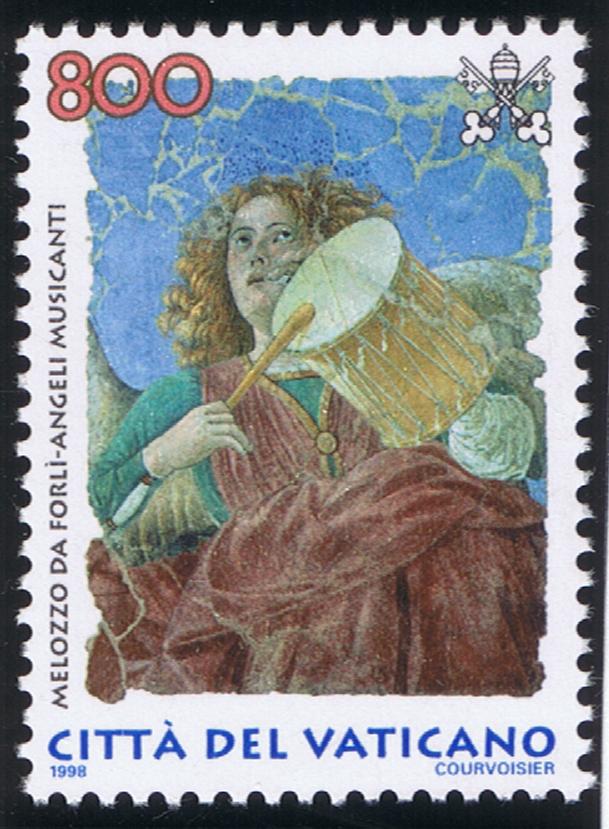











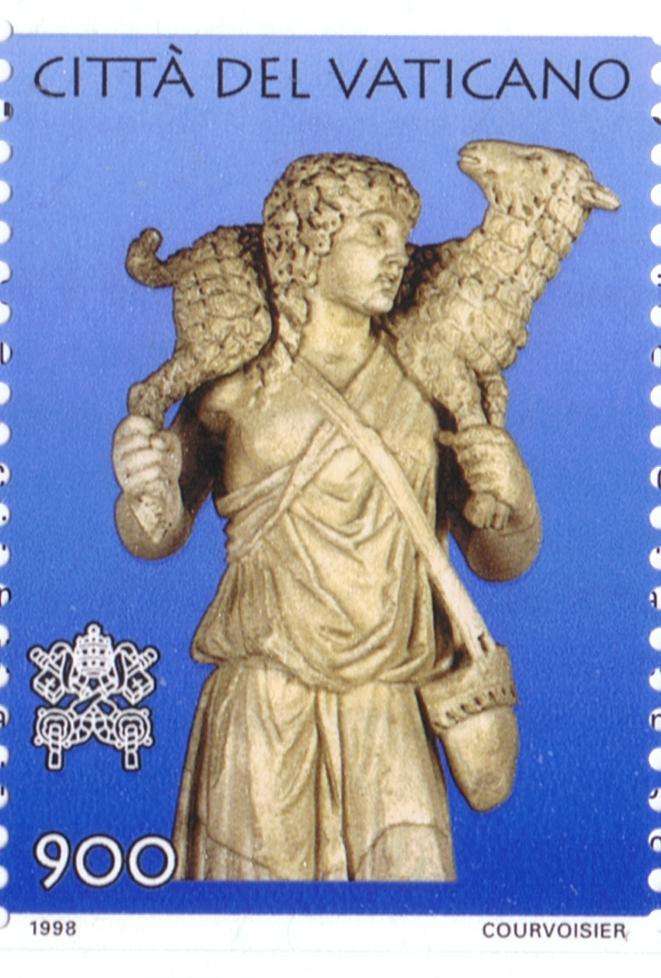













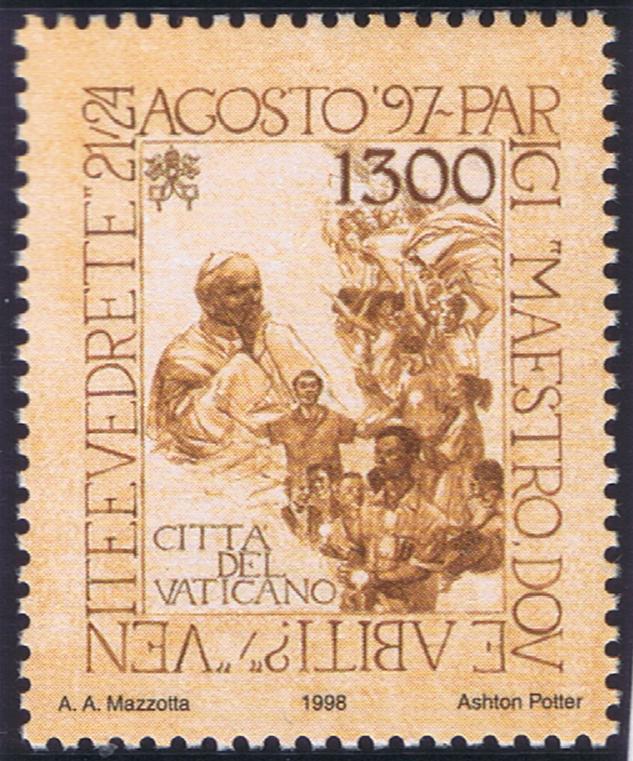


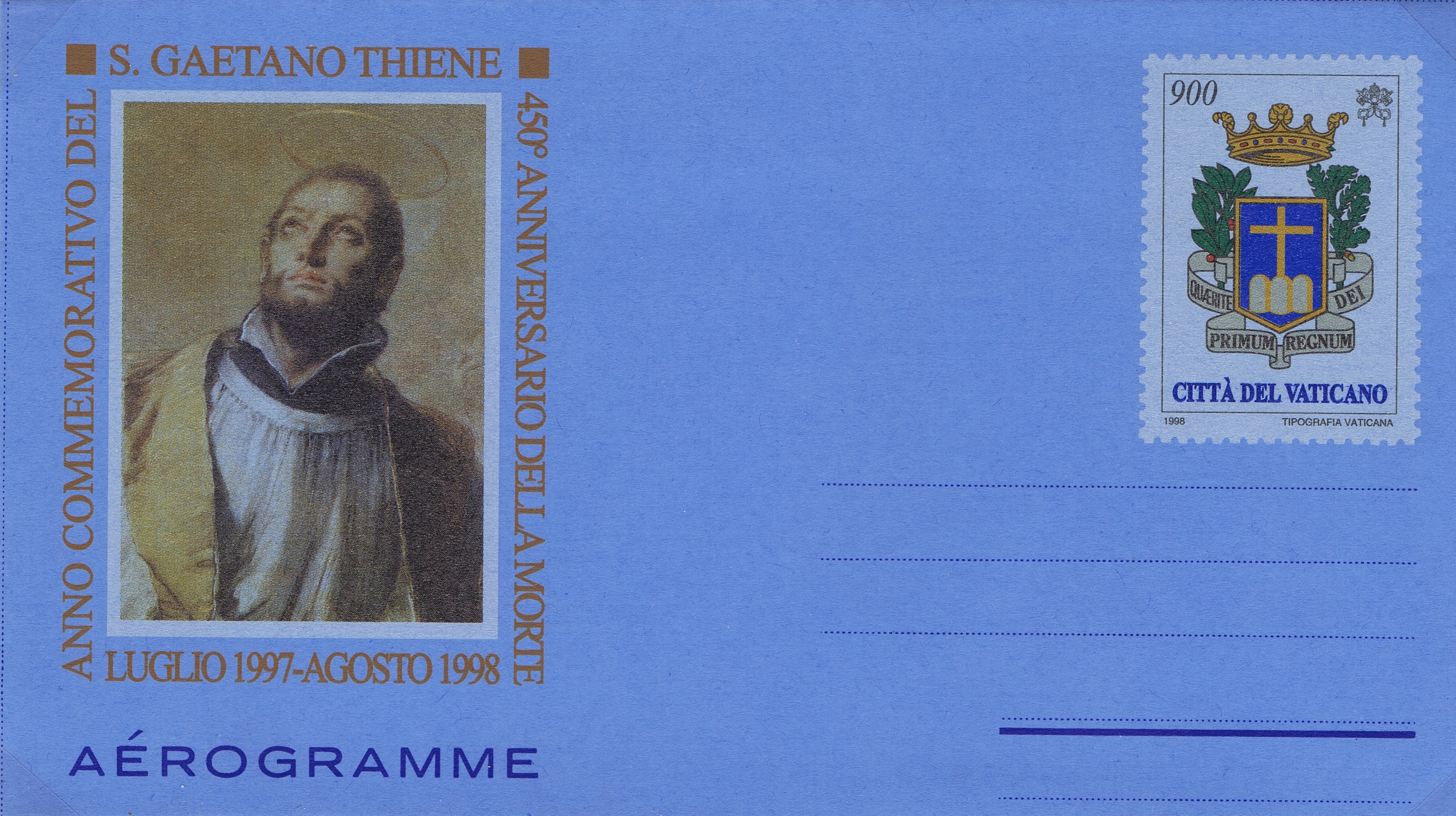

Popes of the Holy Years
1550-1725



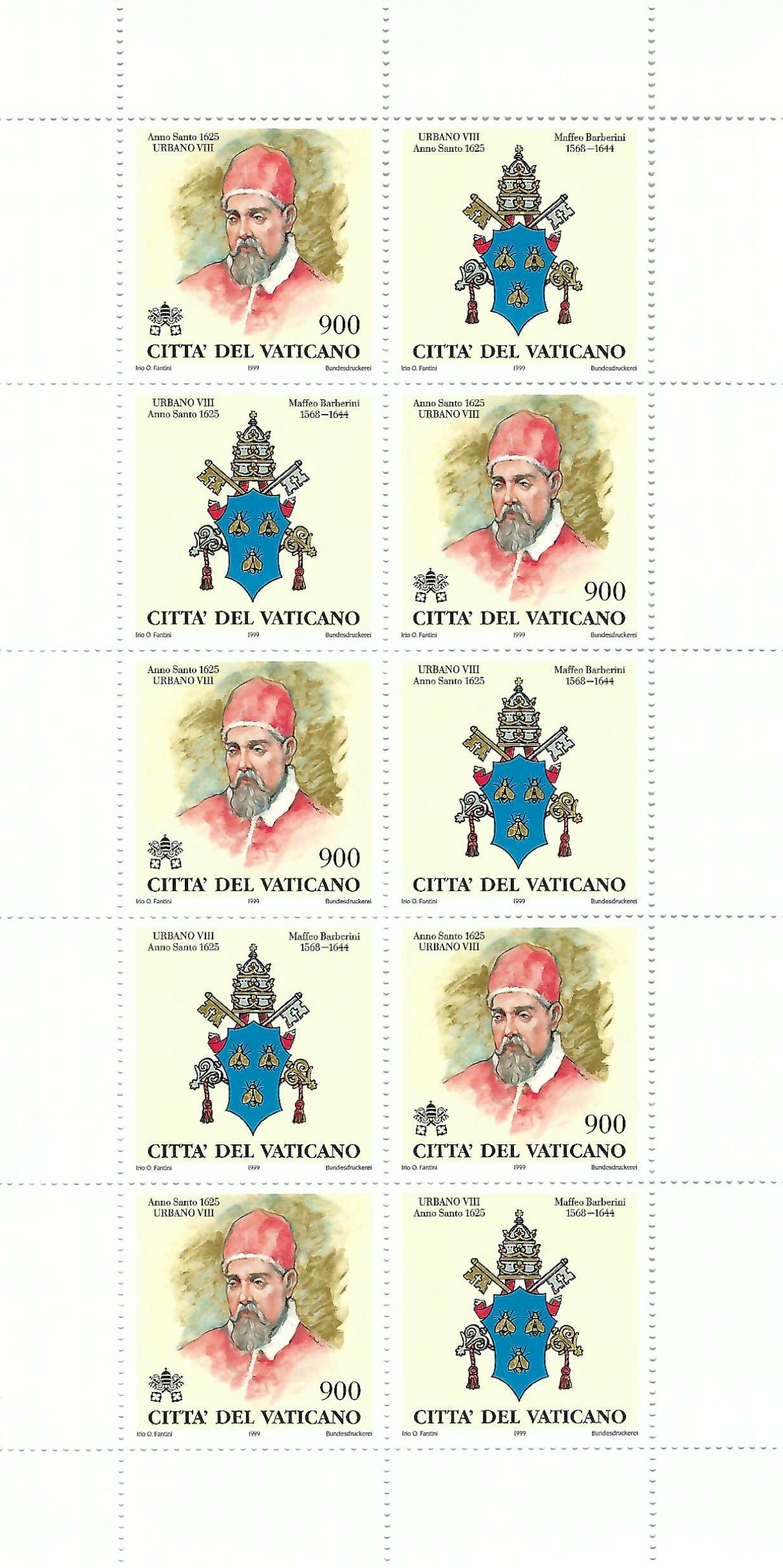

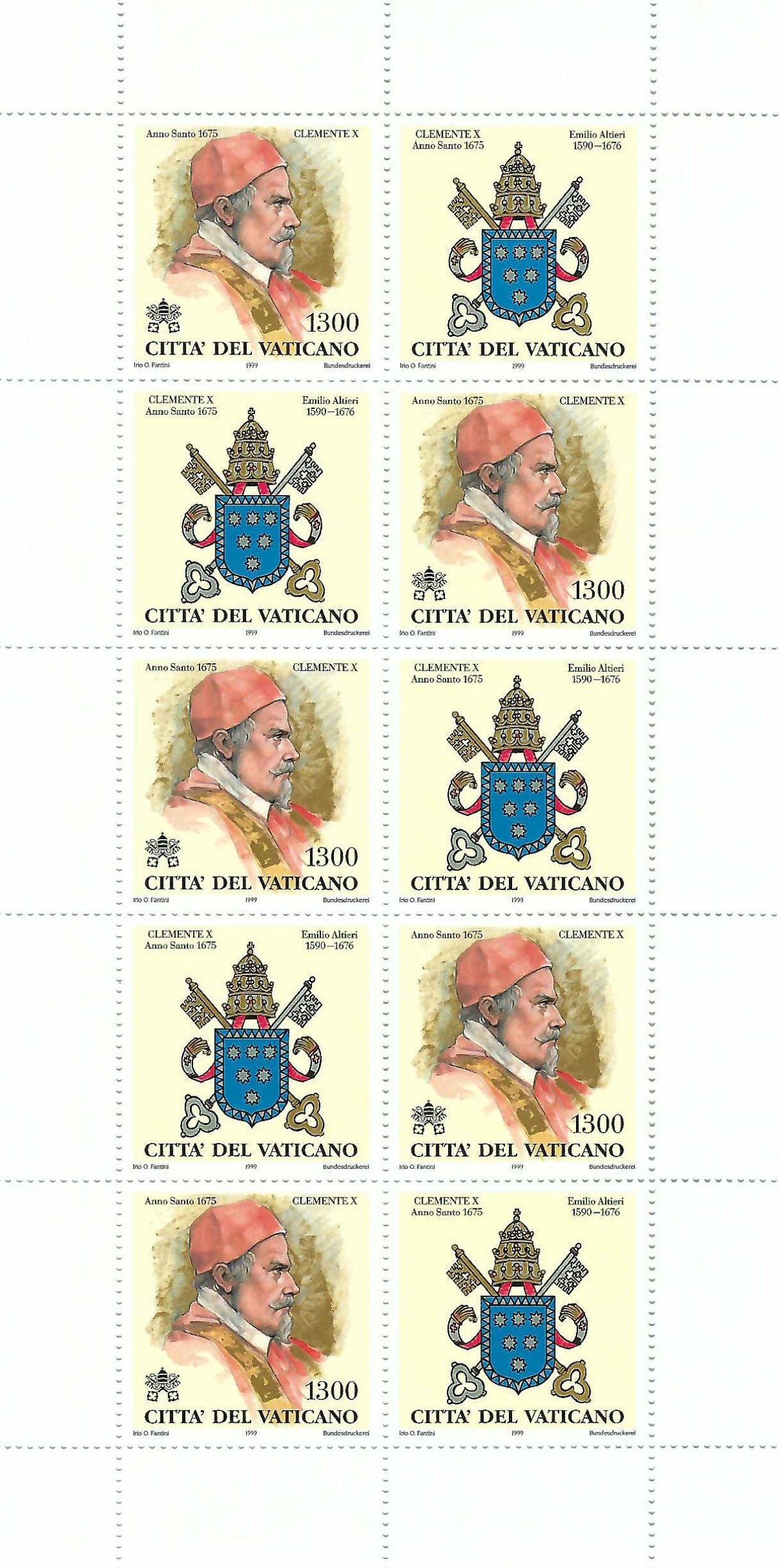

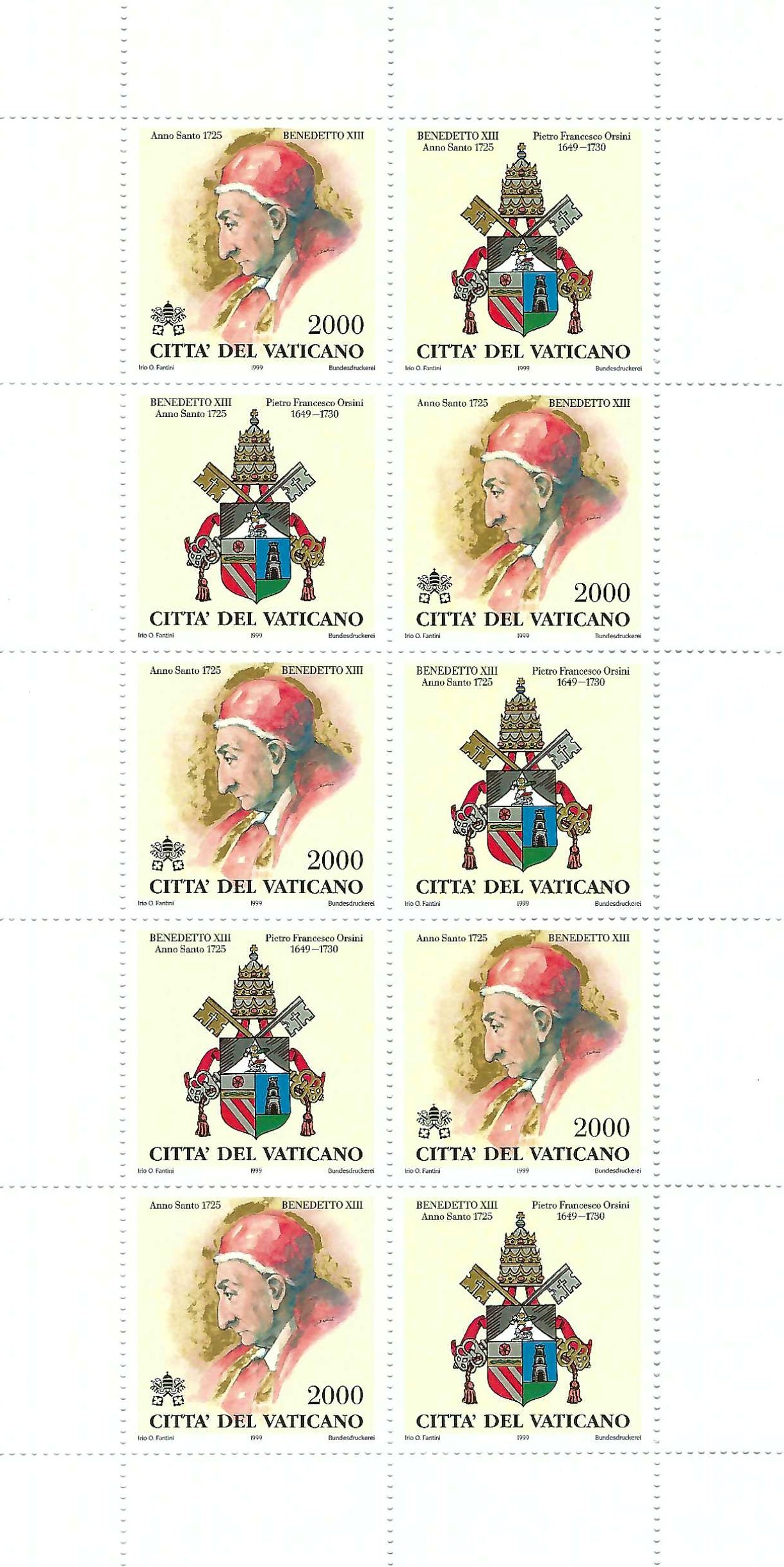
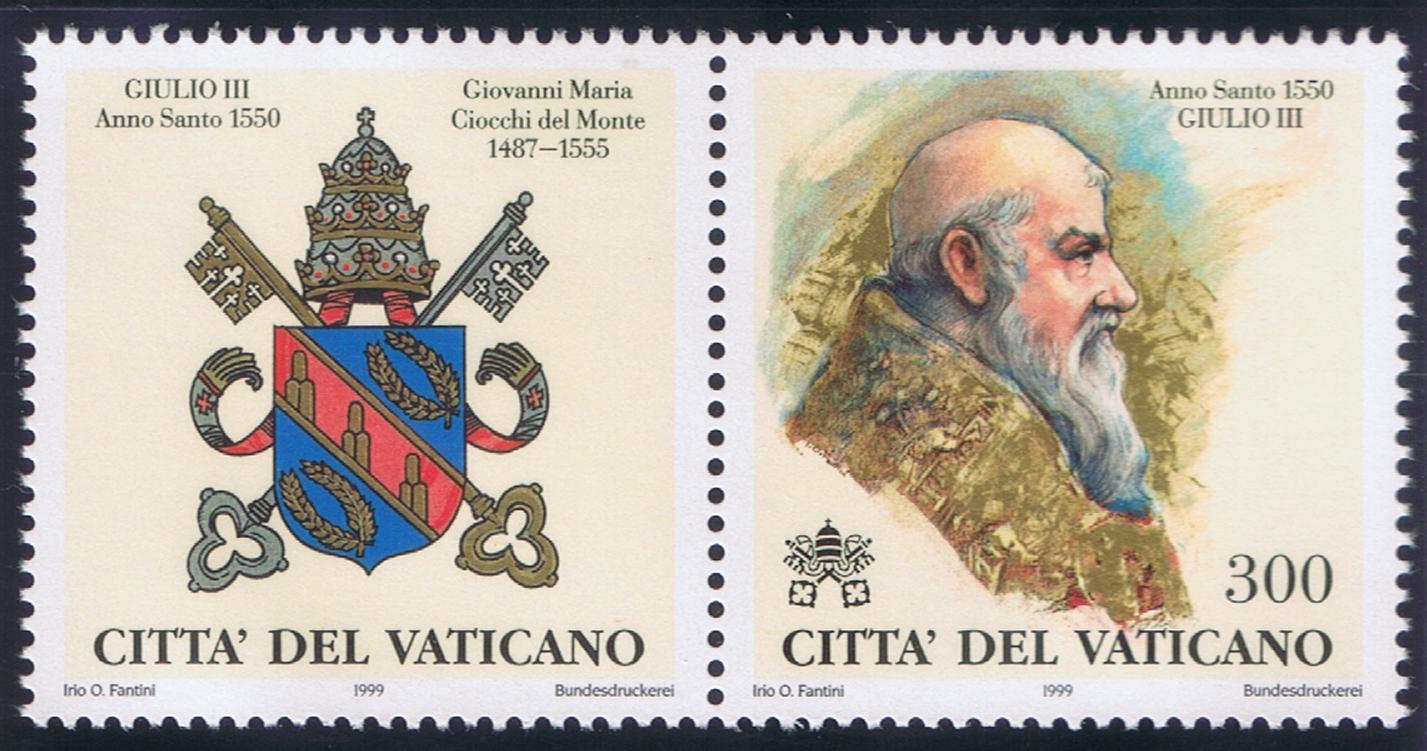

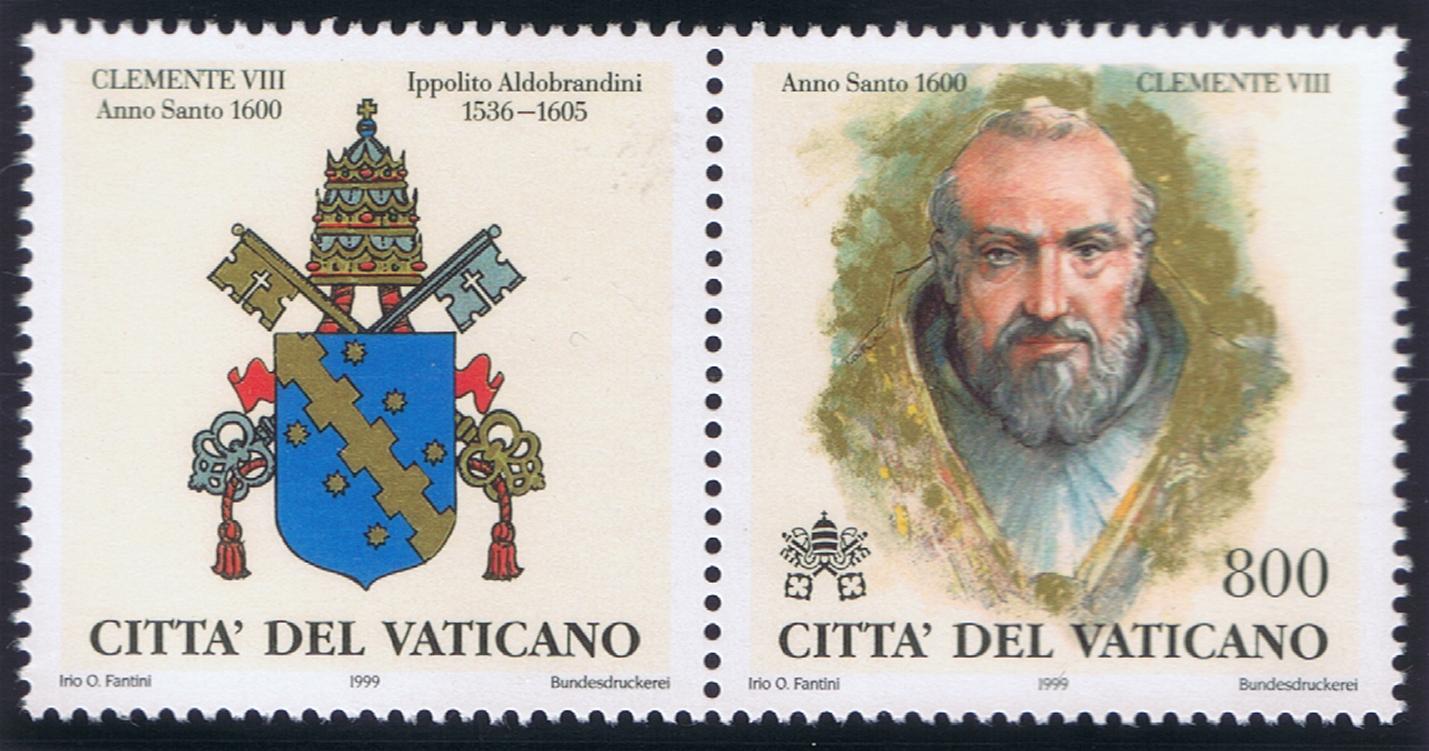


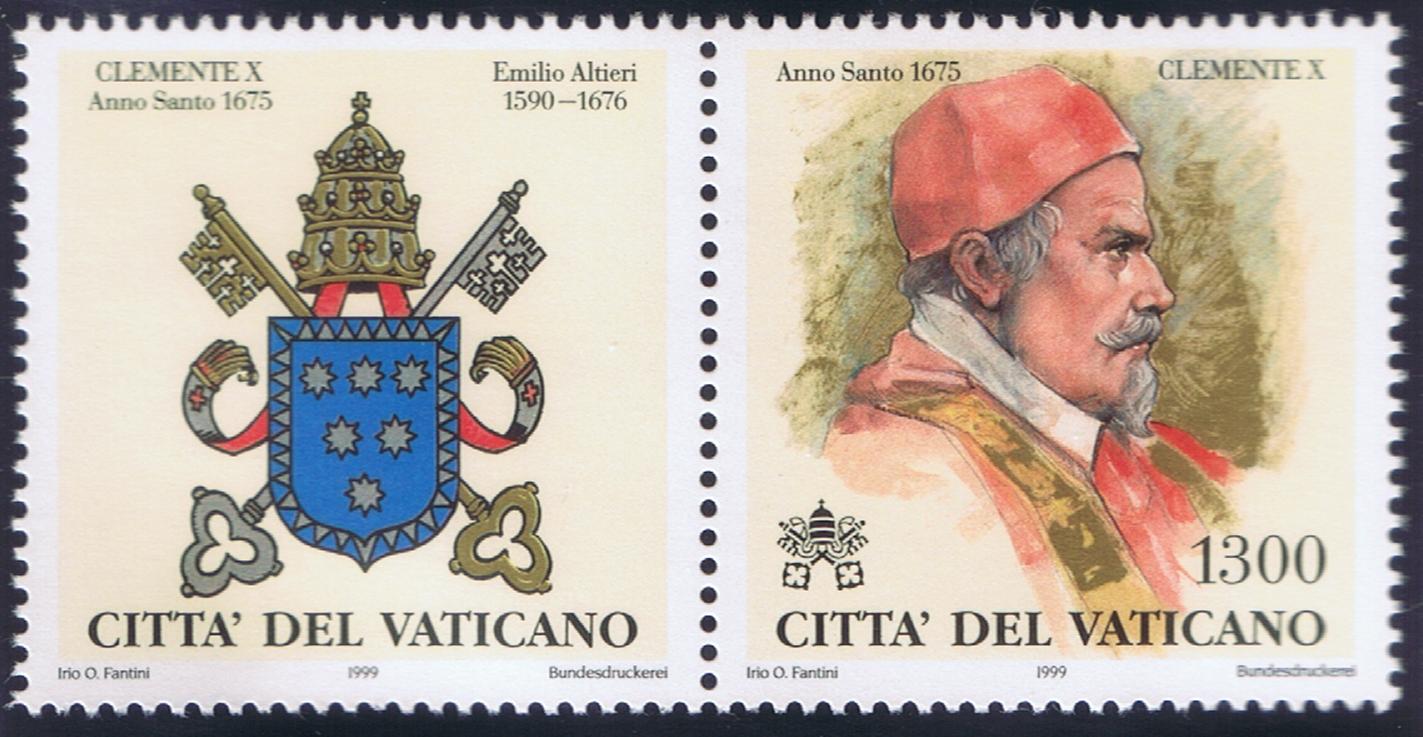
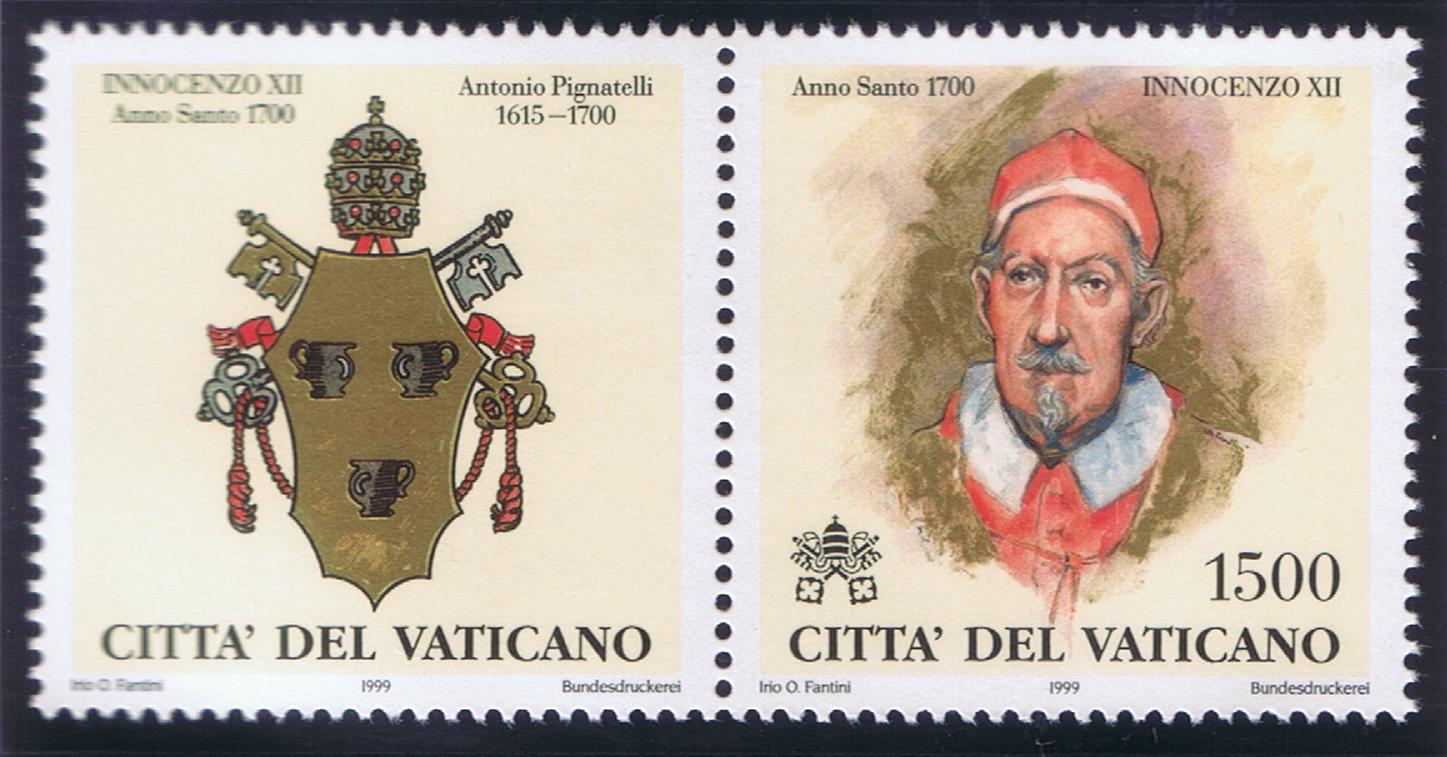








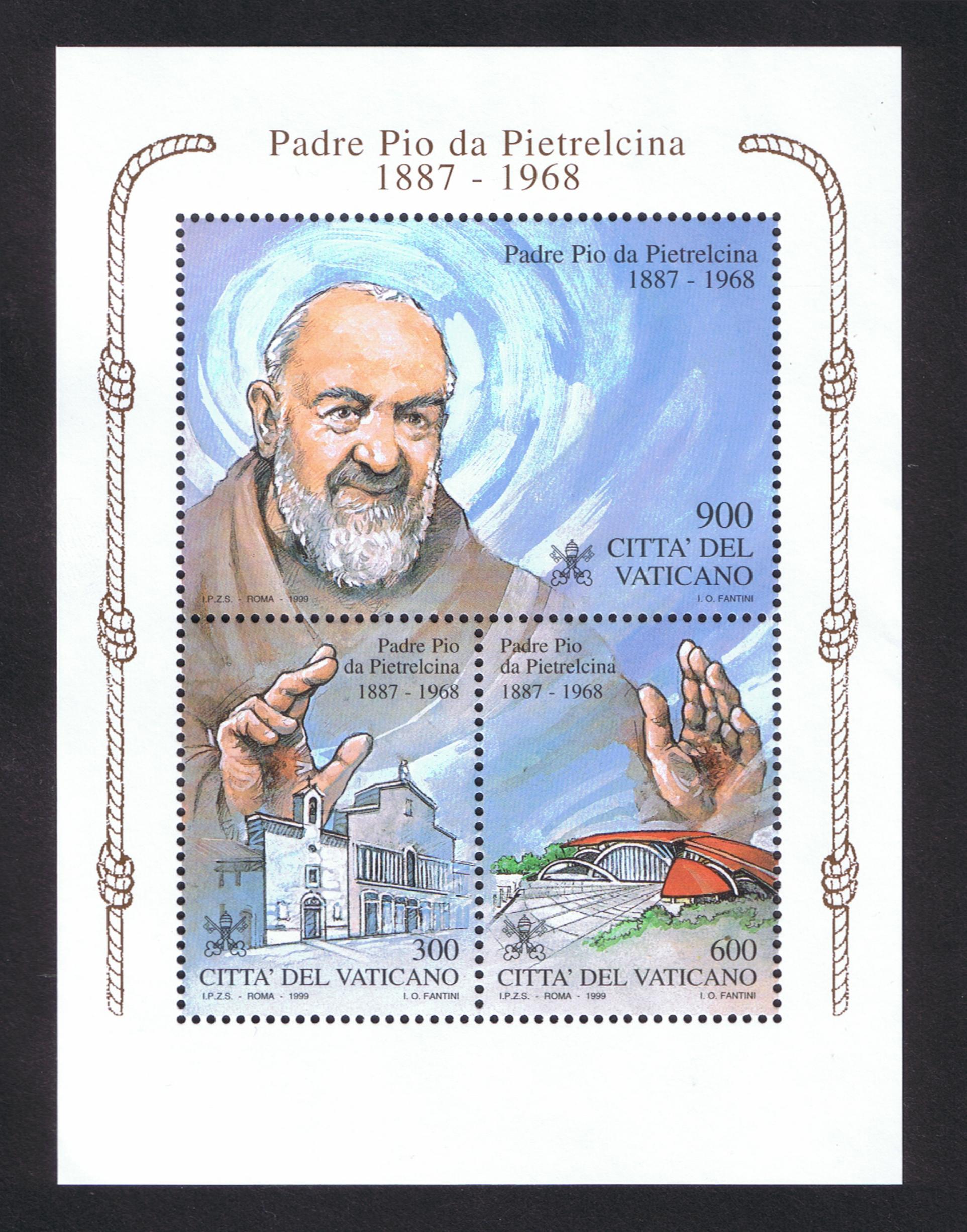






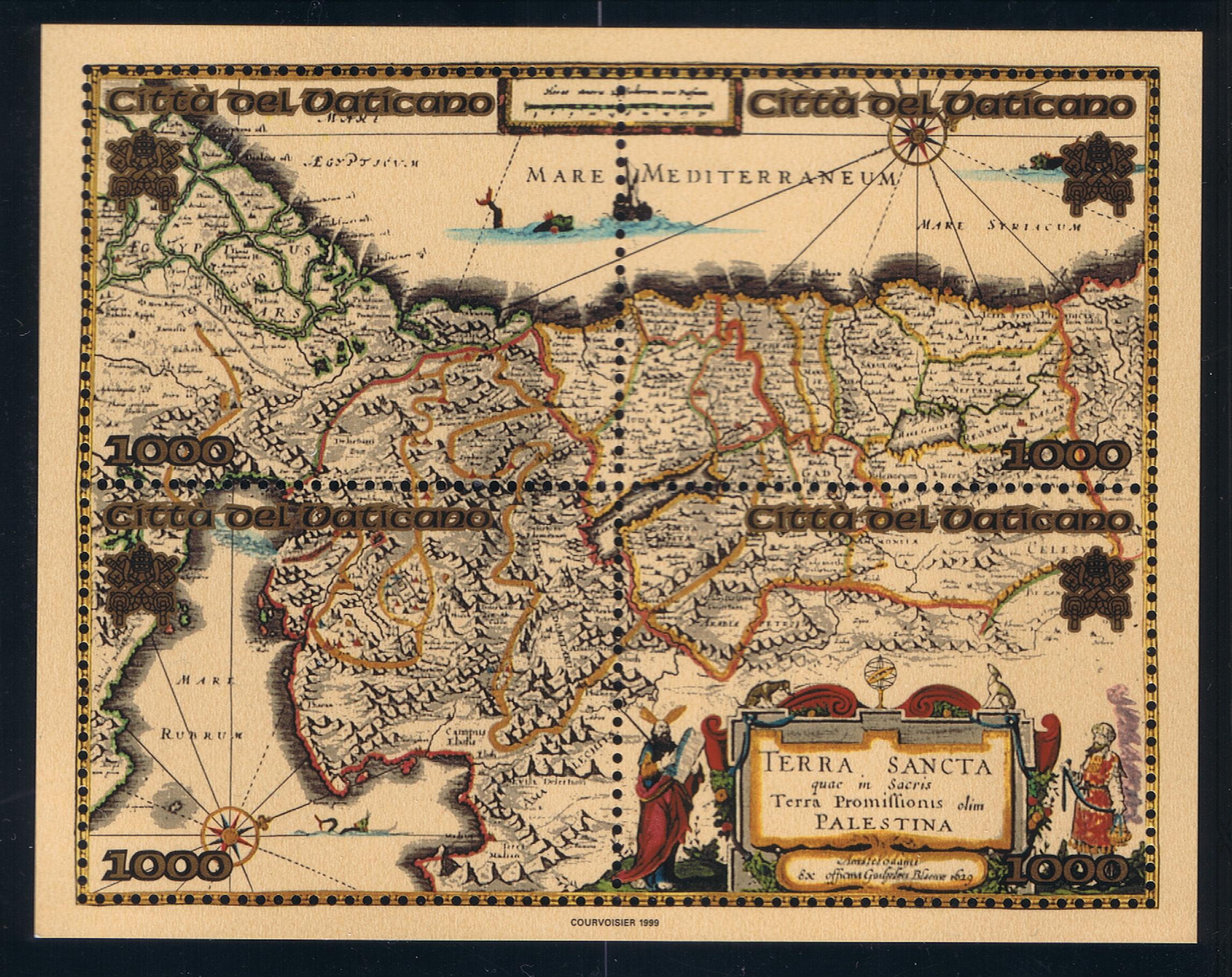










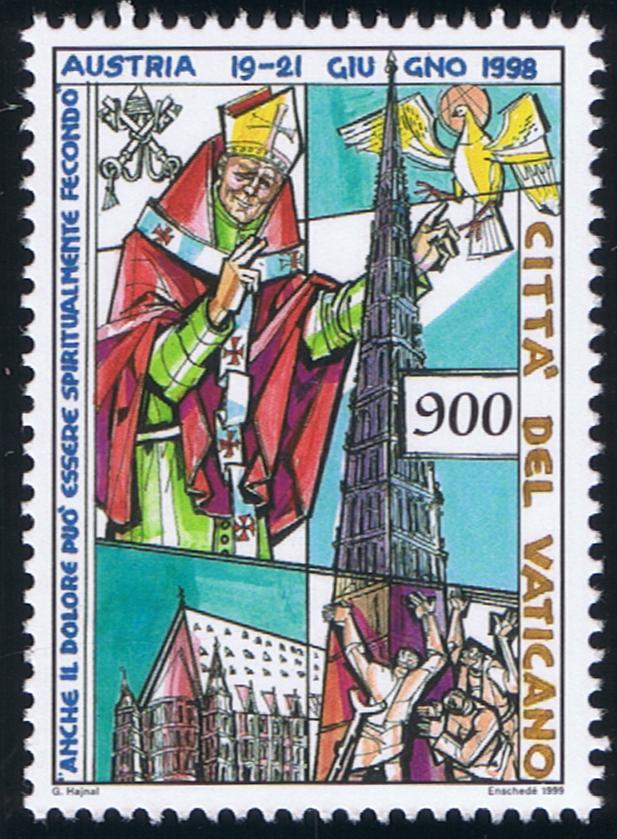

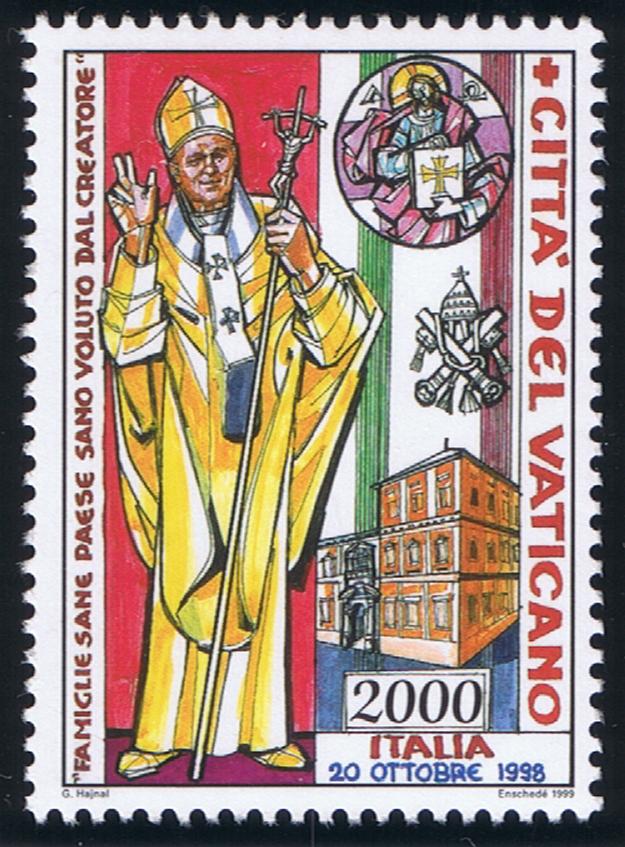

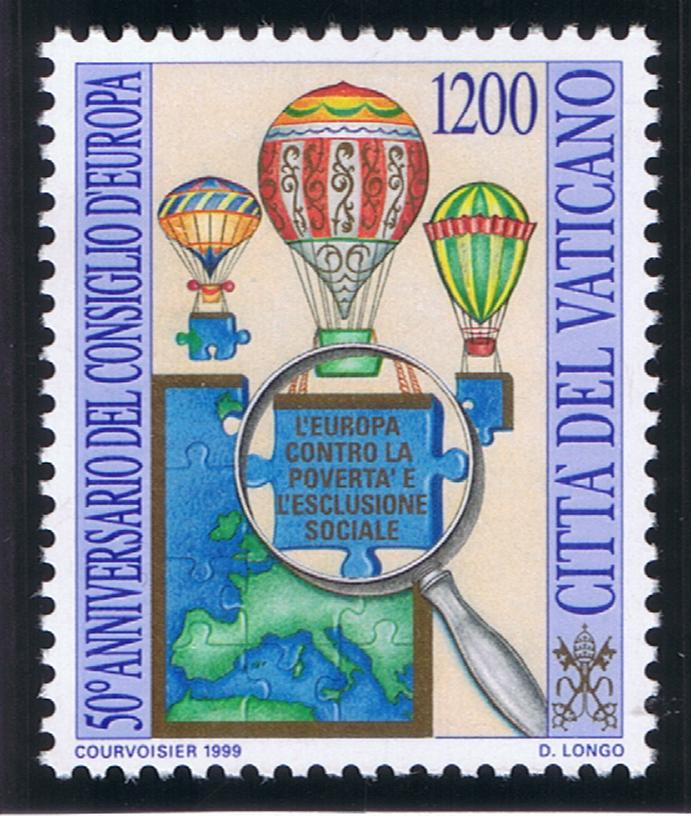







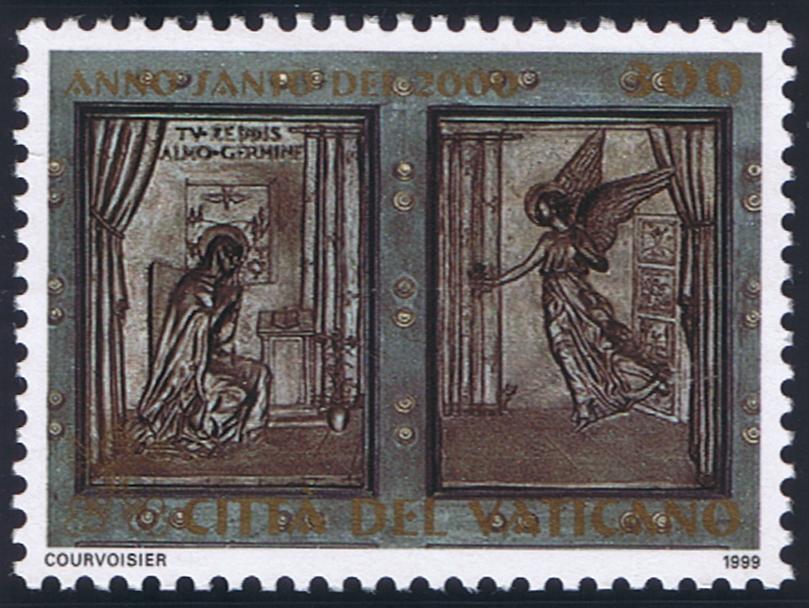
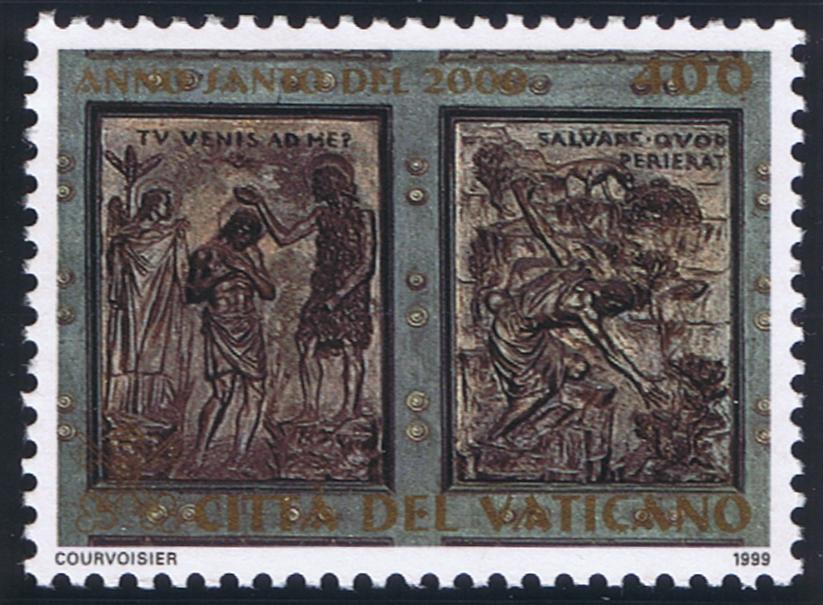




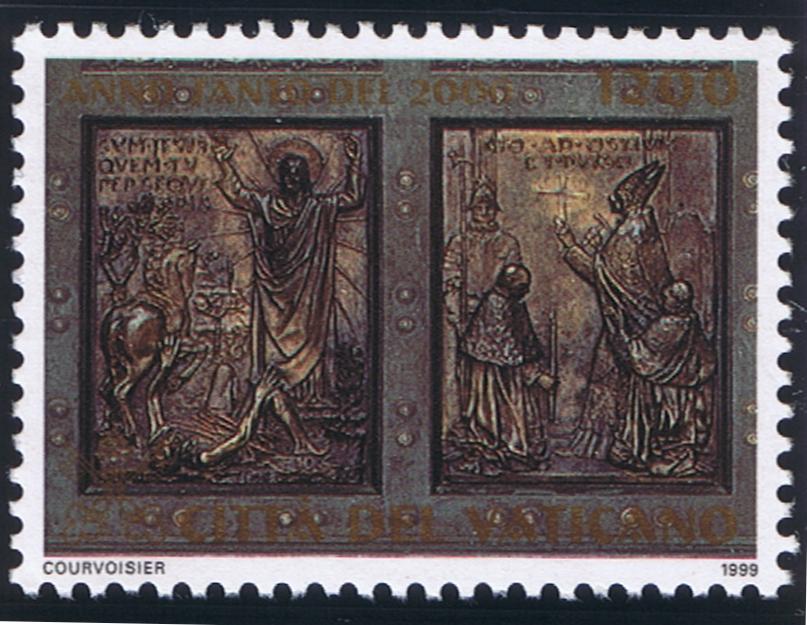




Basilicas of the
Holy Year 2000



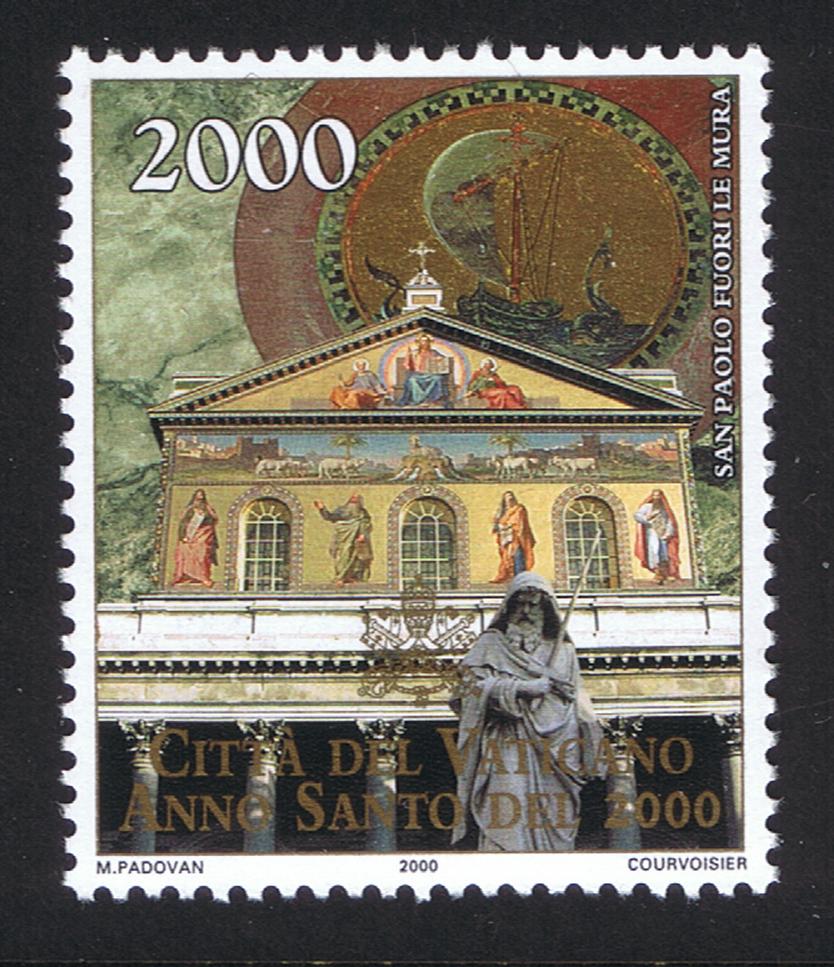
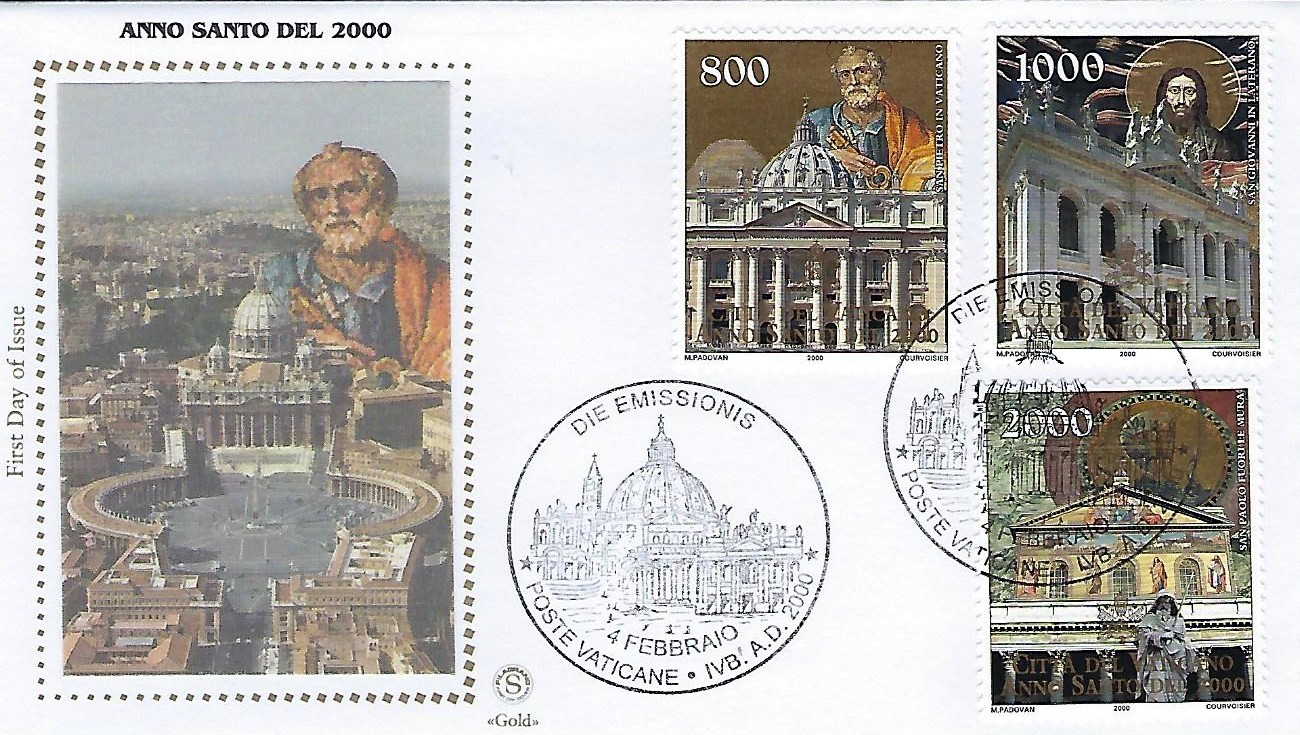
Popes of the Holy Years
1750-2000
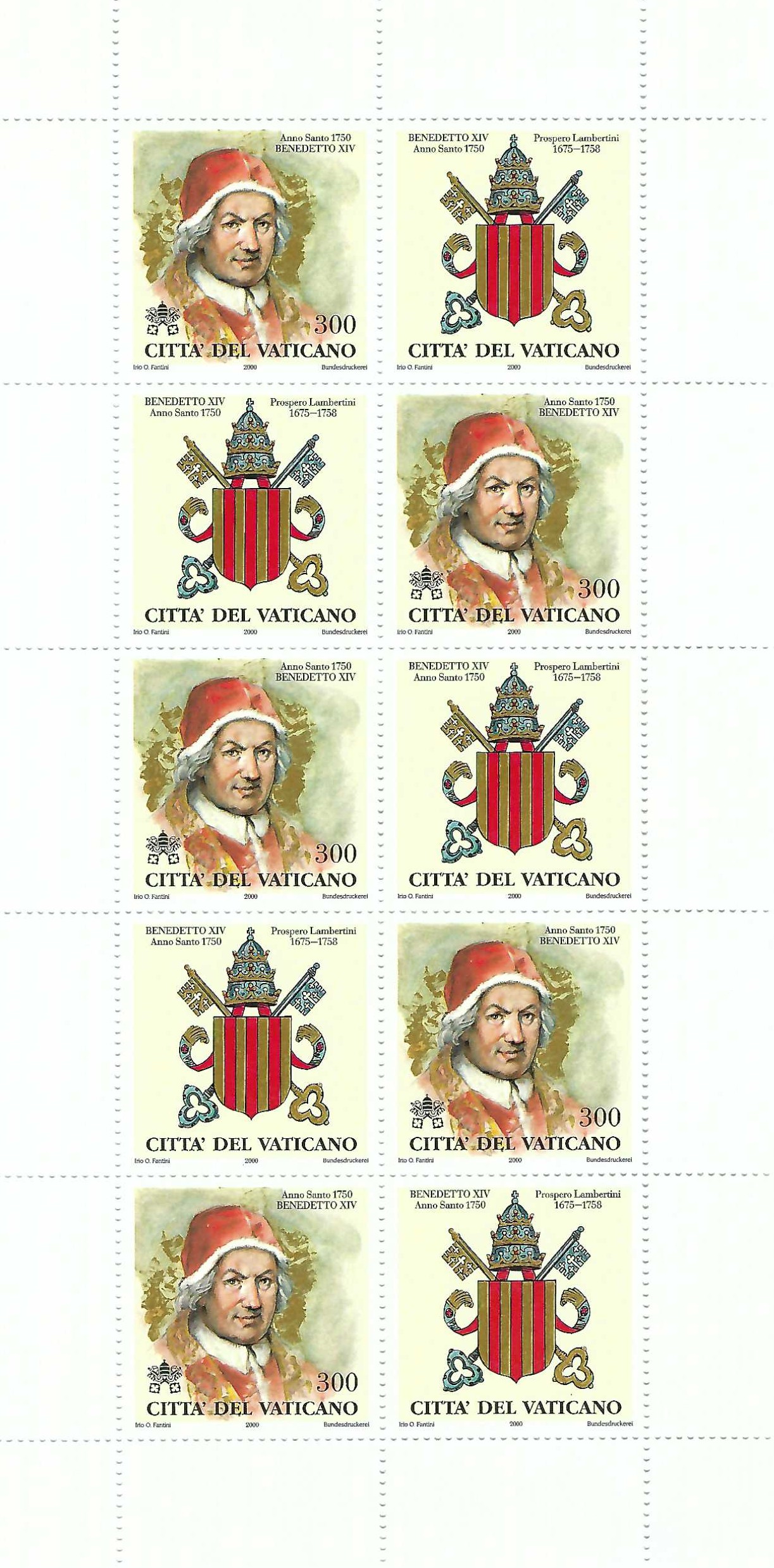

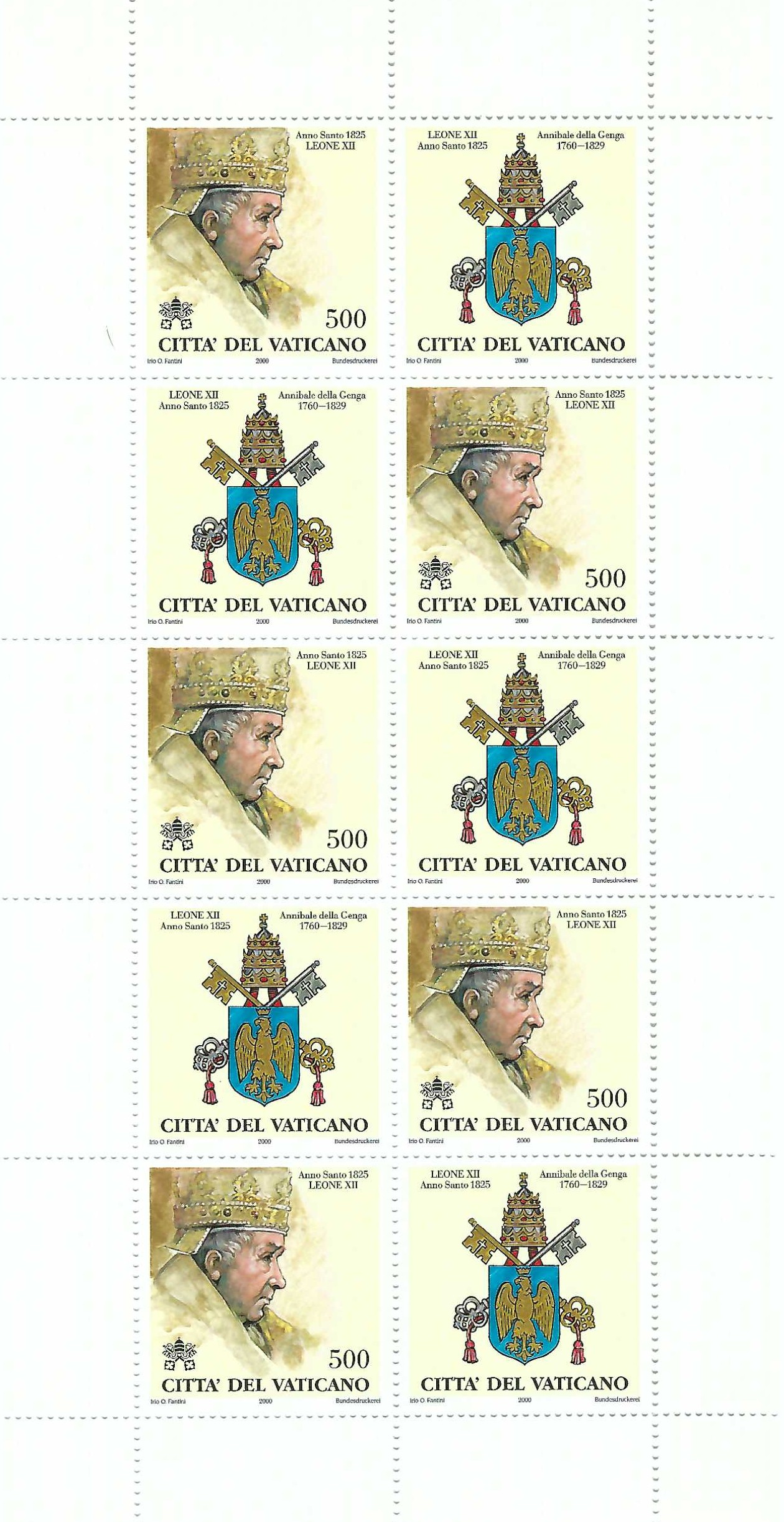
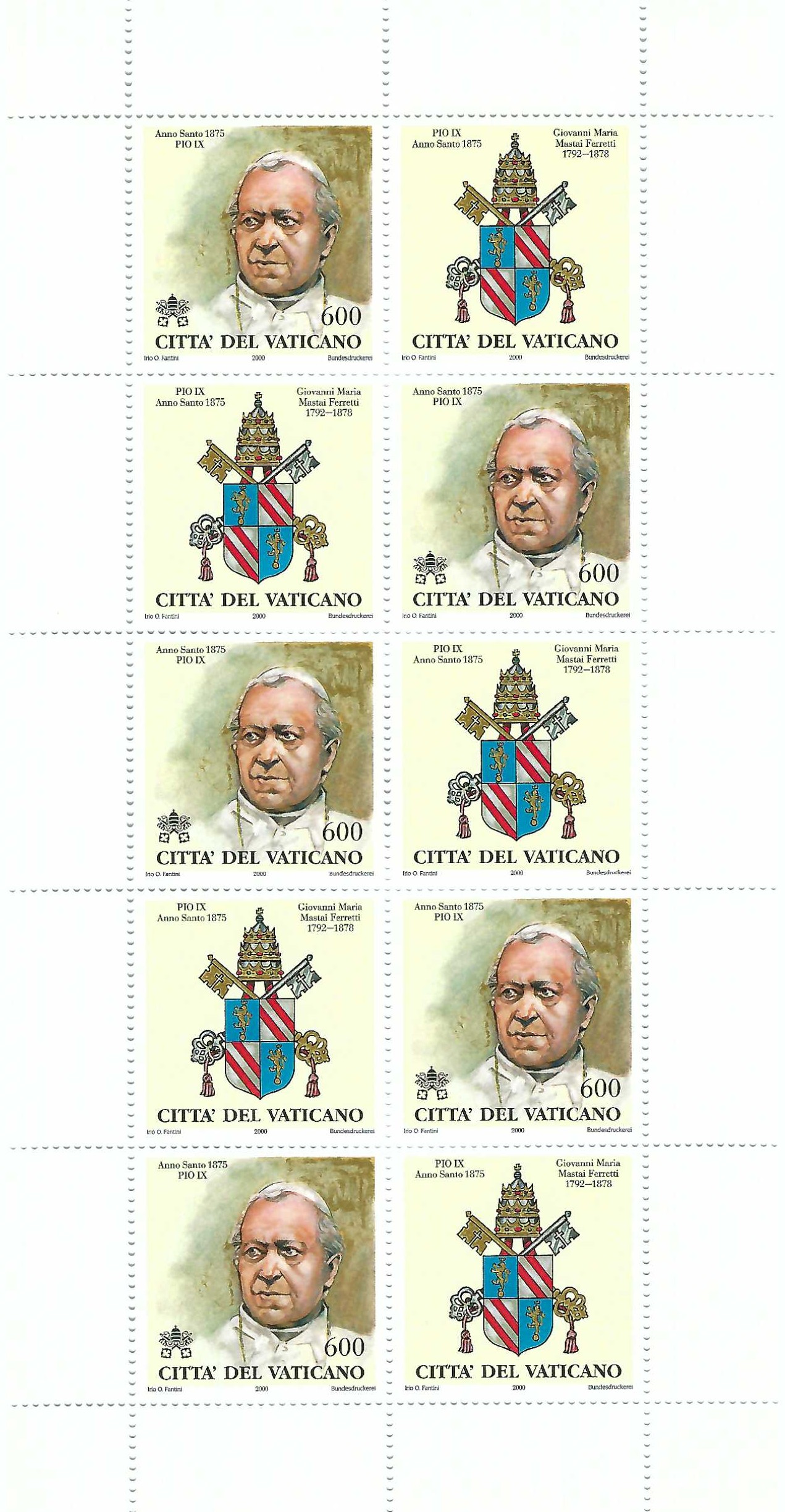

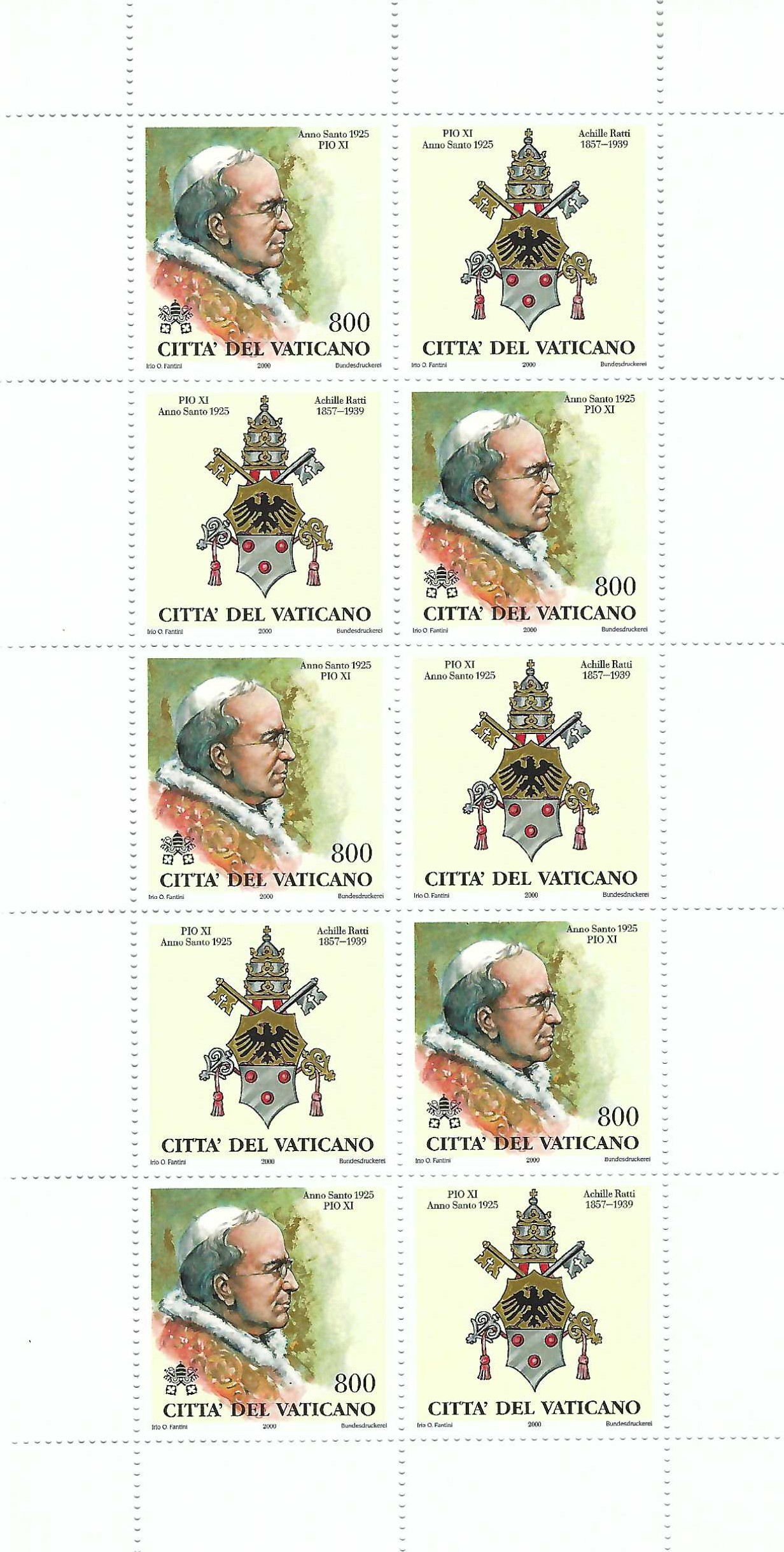
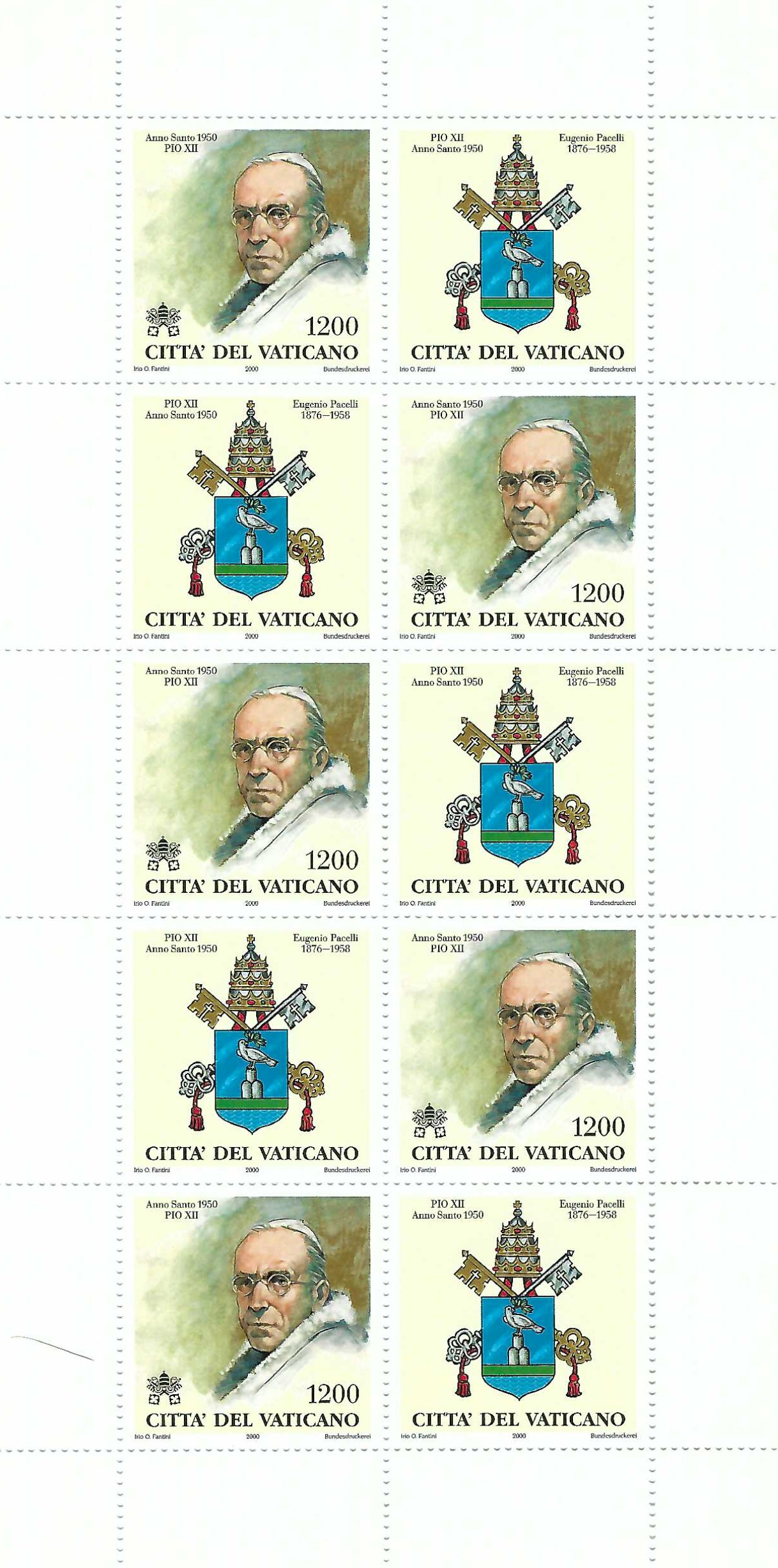
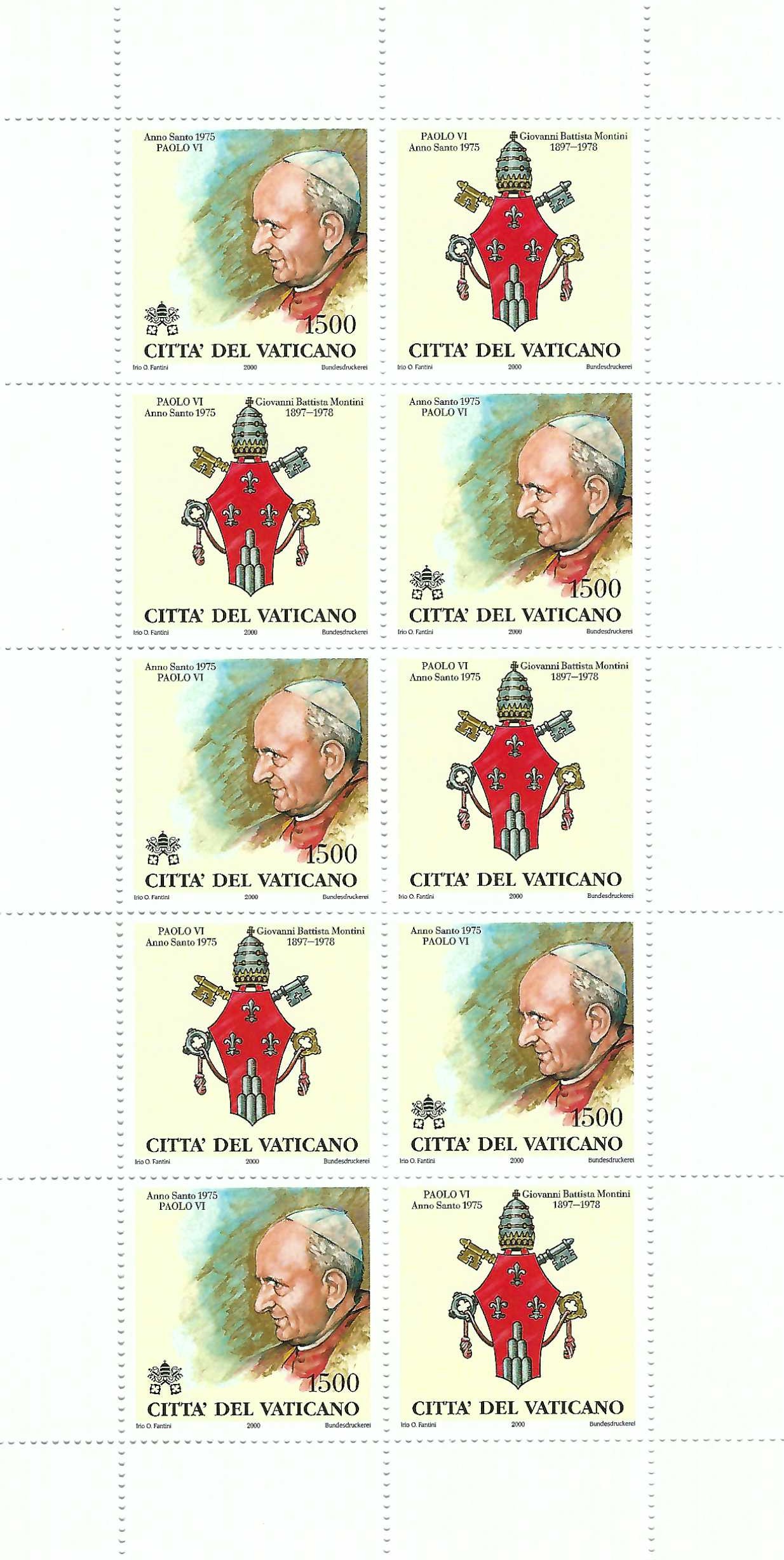


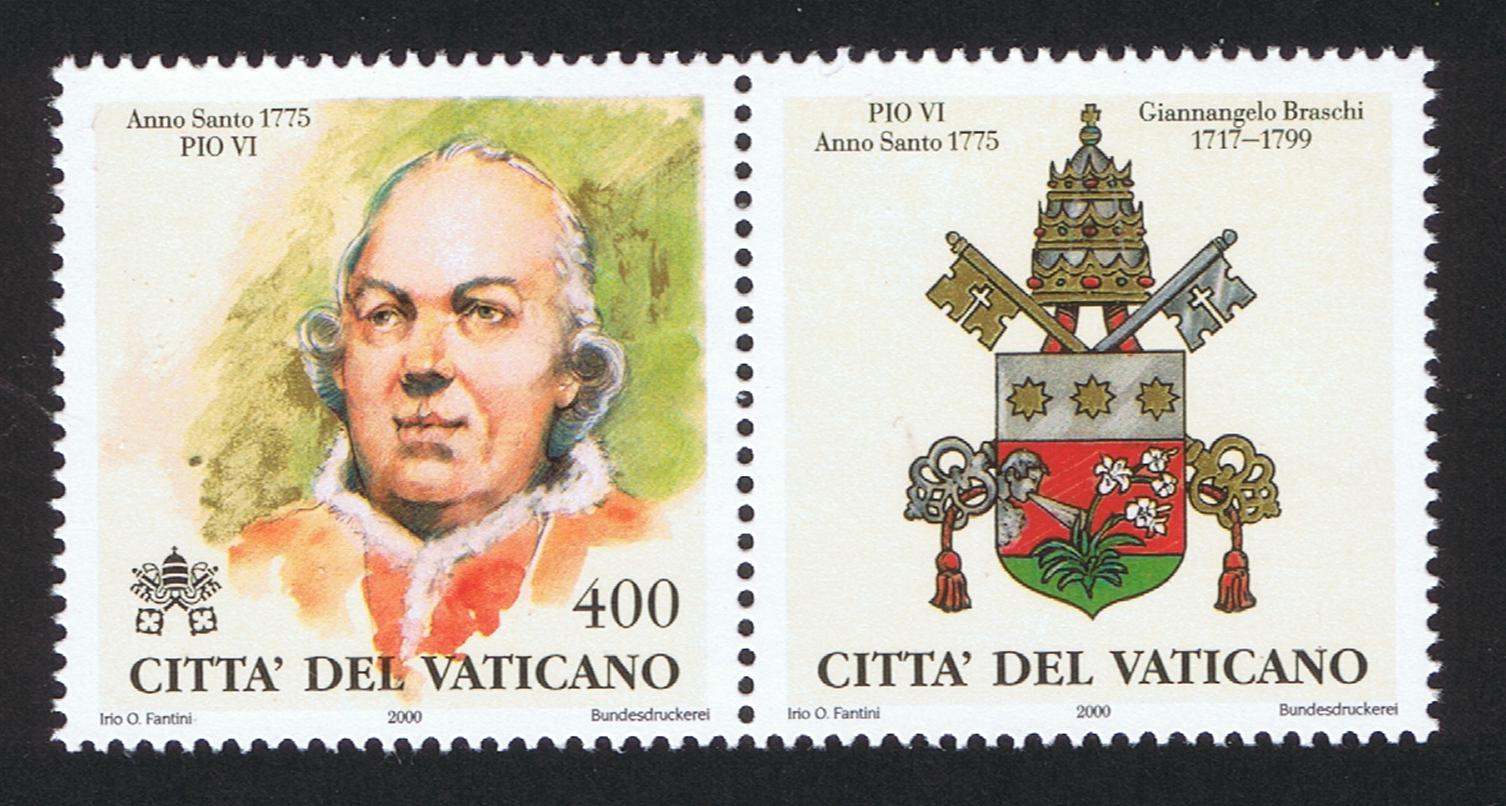





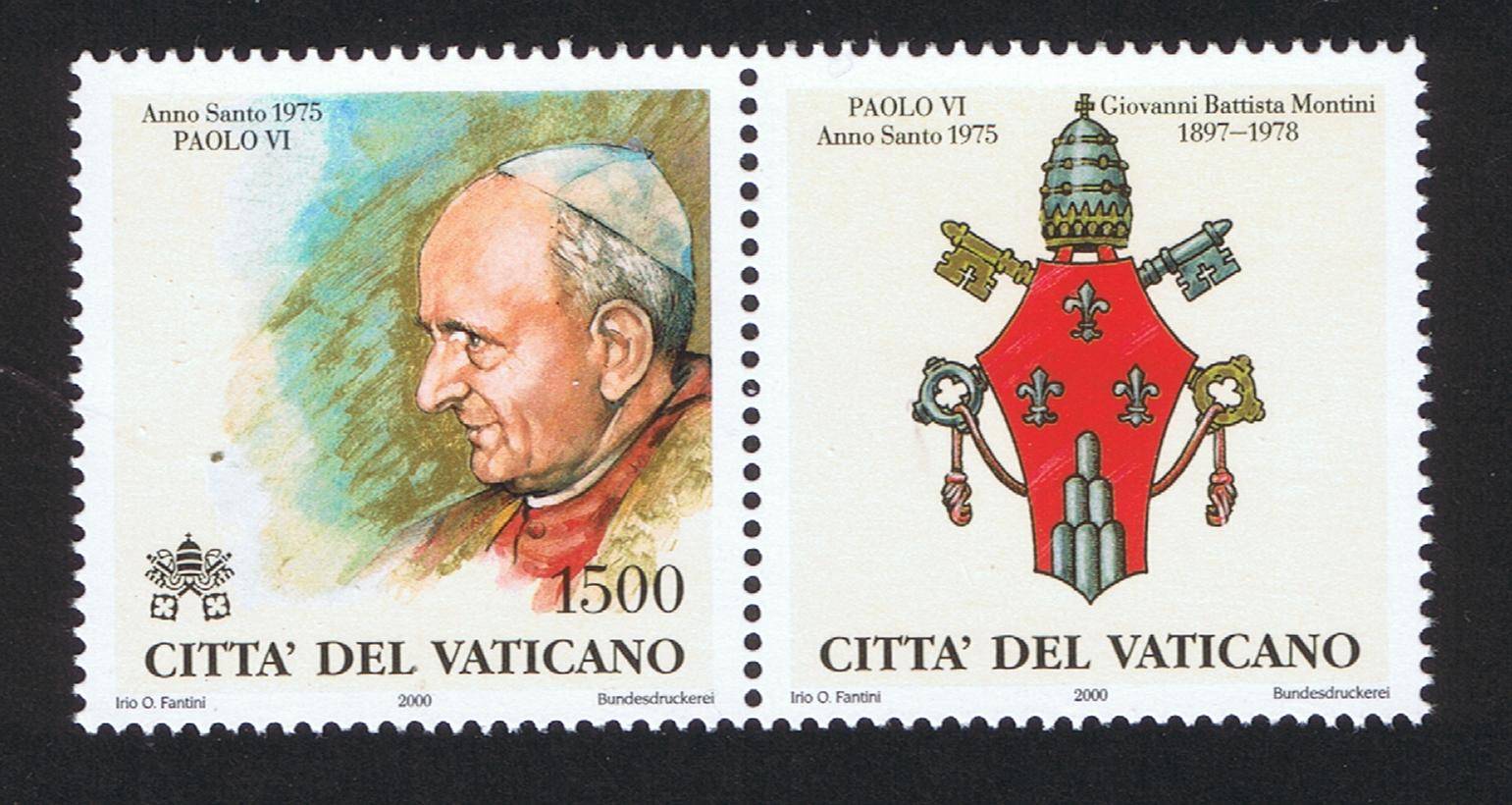

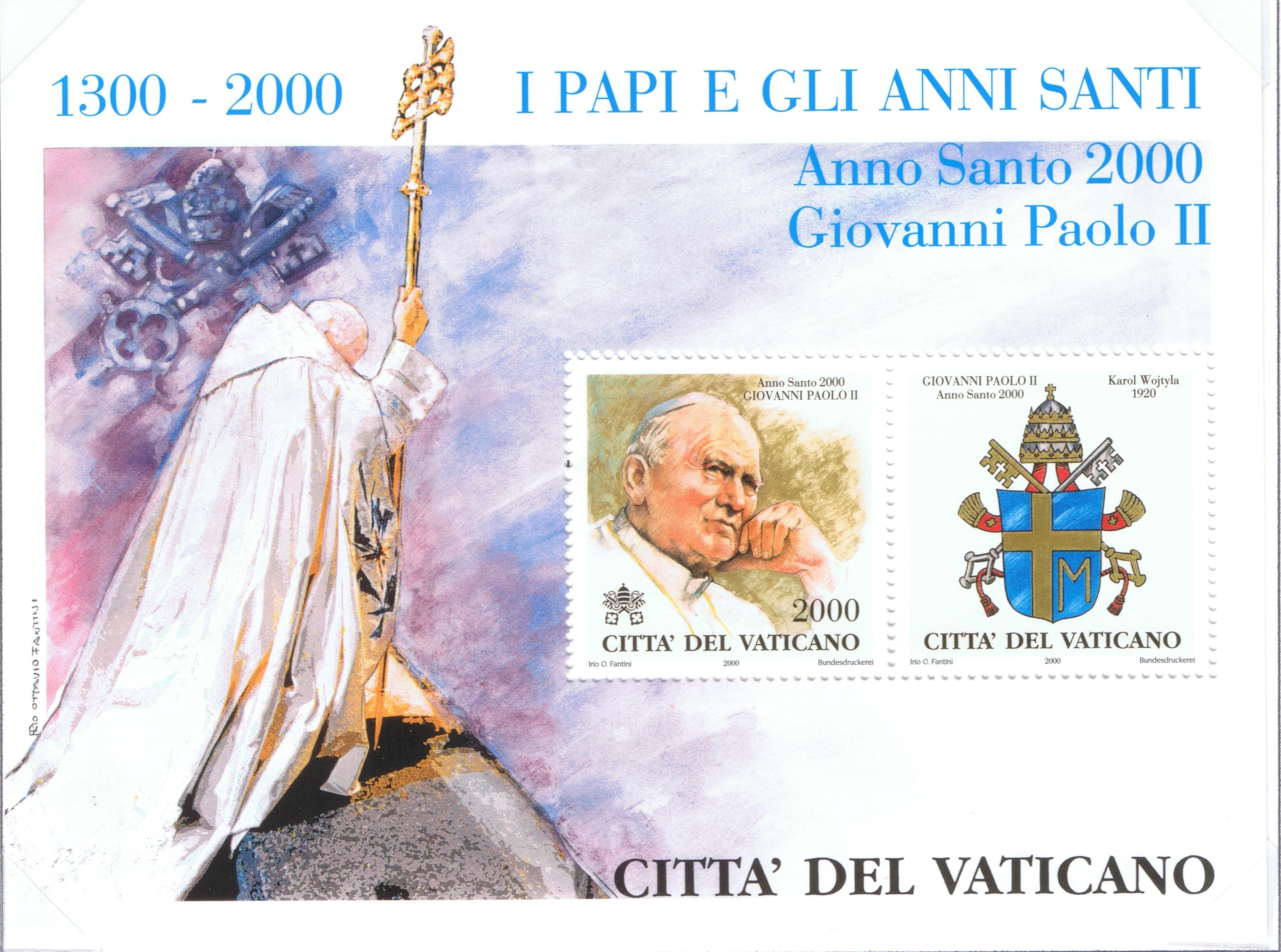


Included with 1141-1150


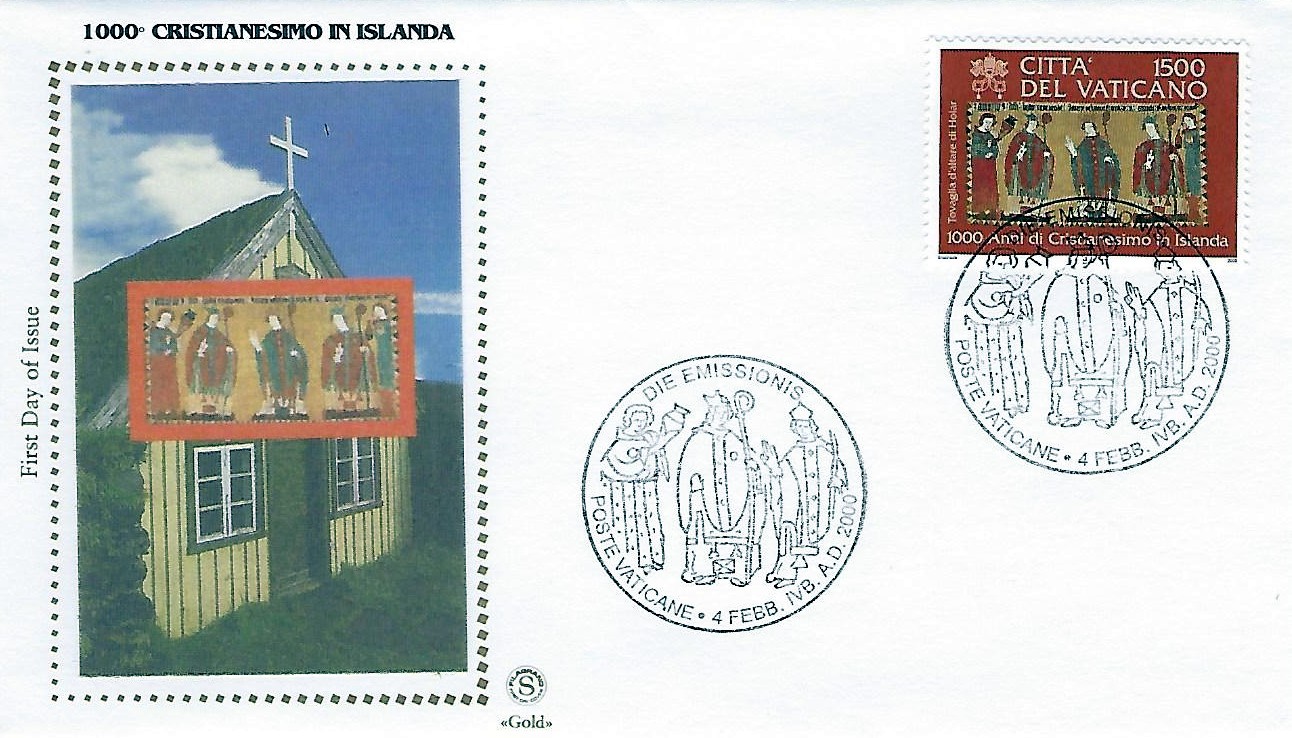







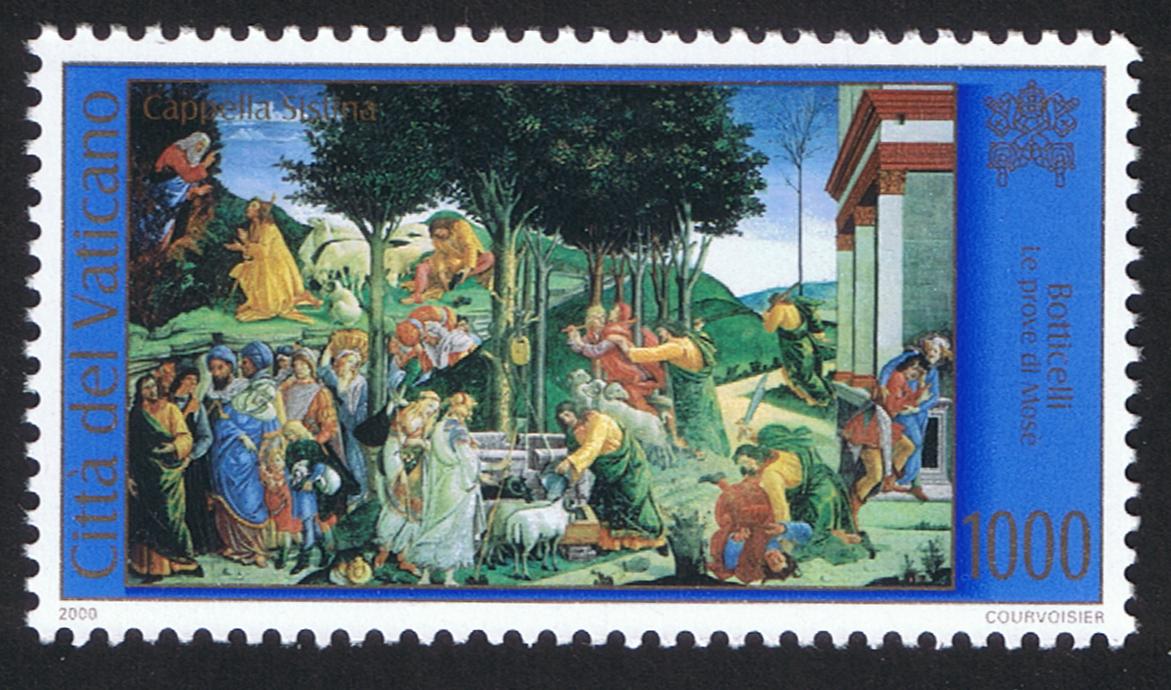
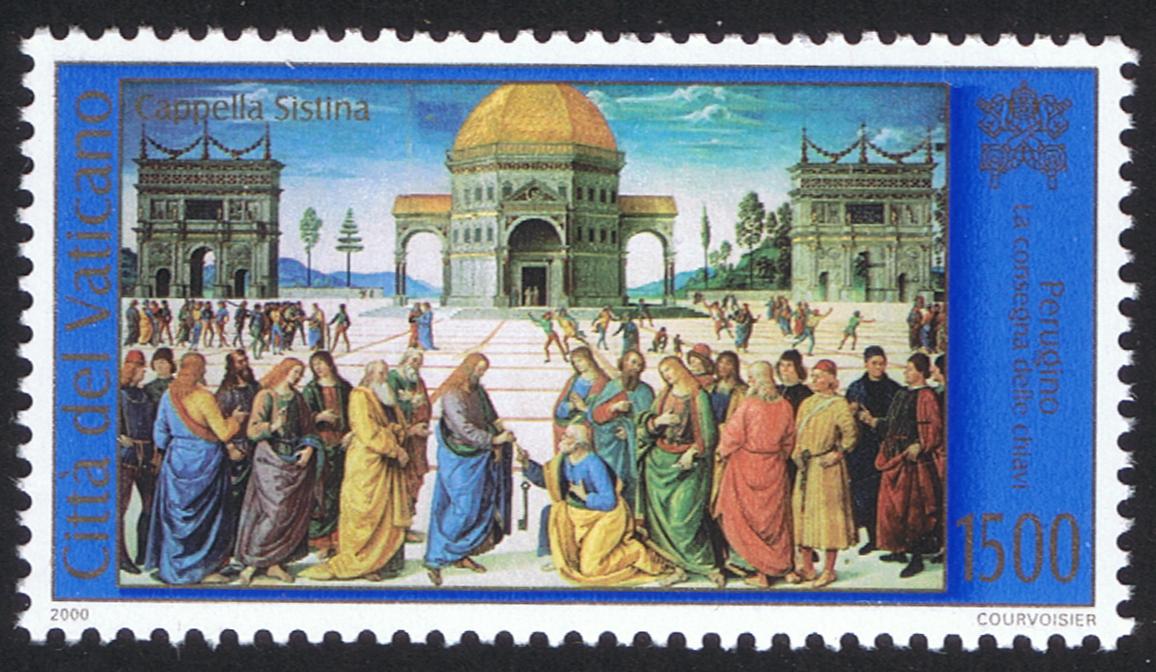
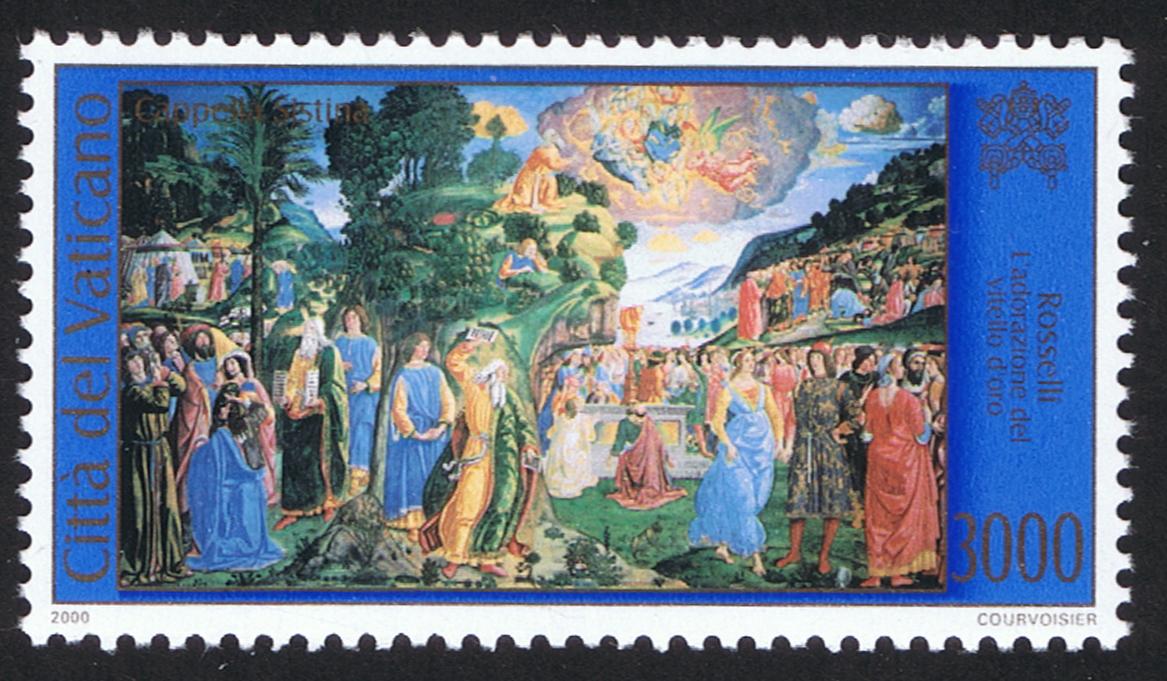









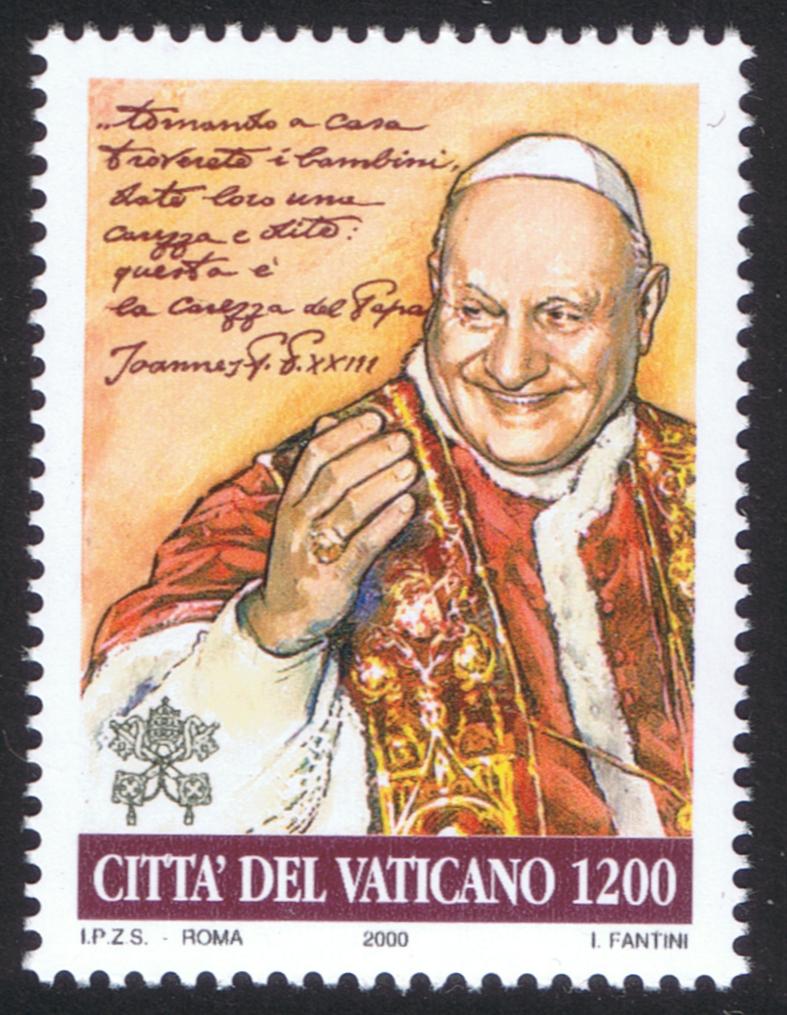

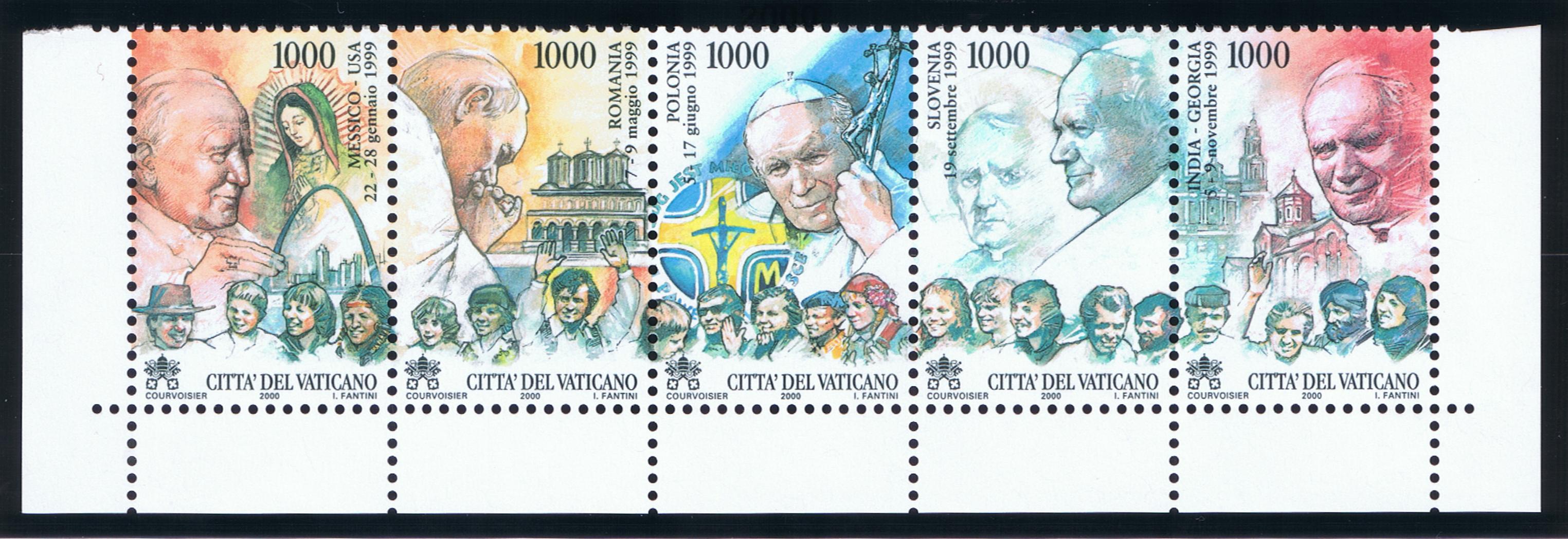



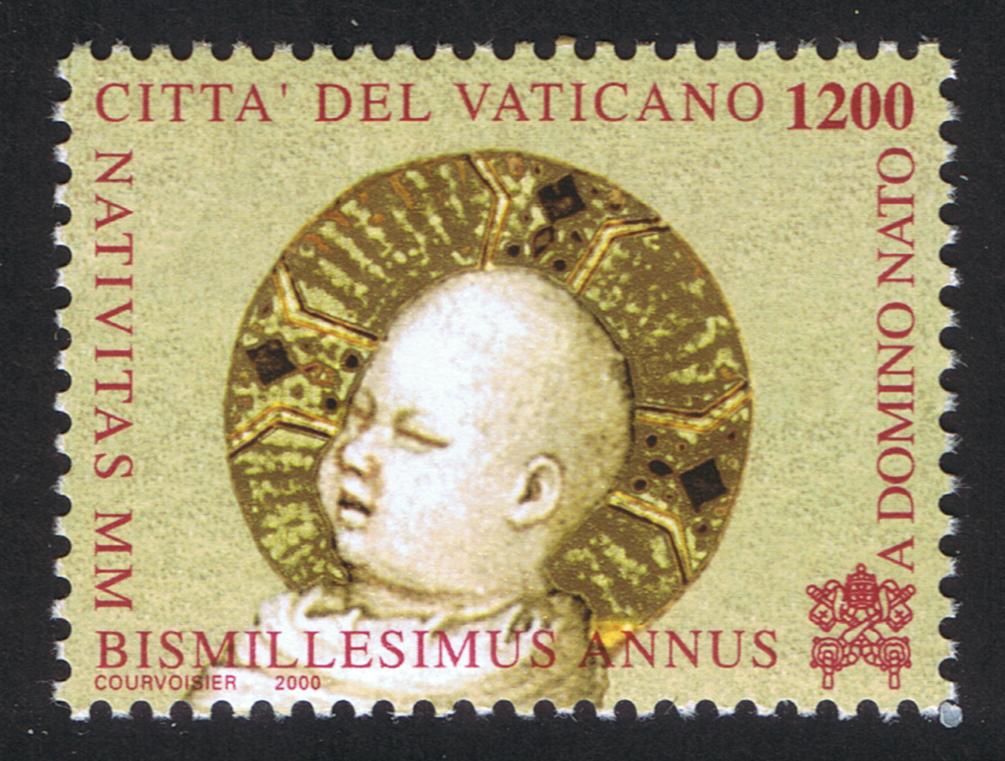












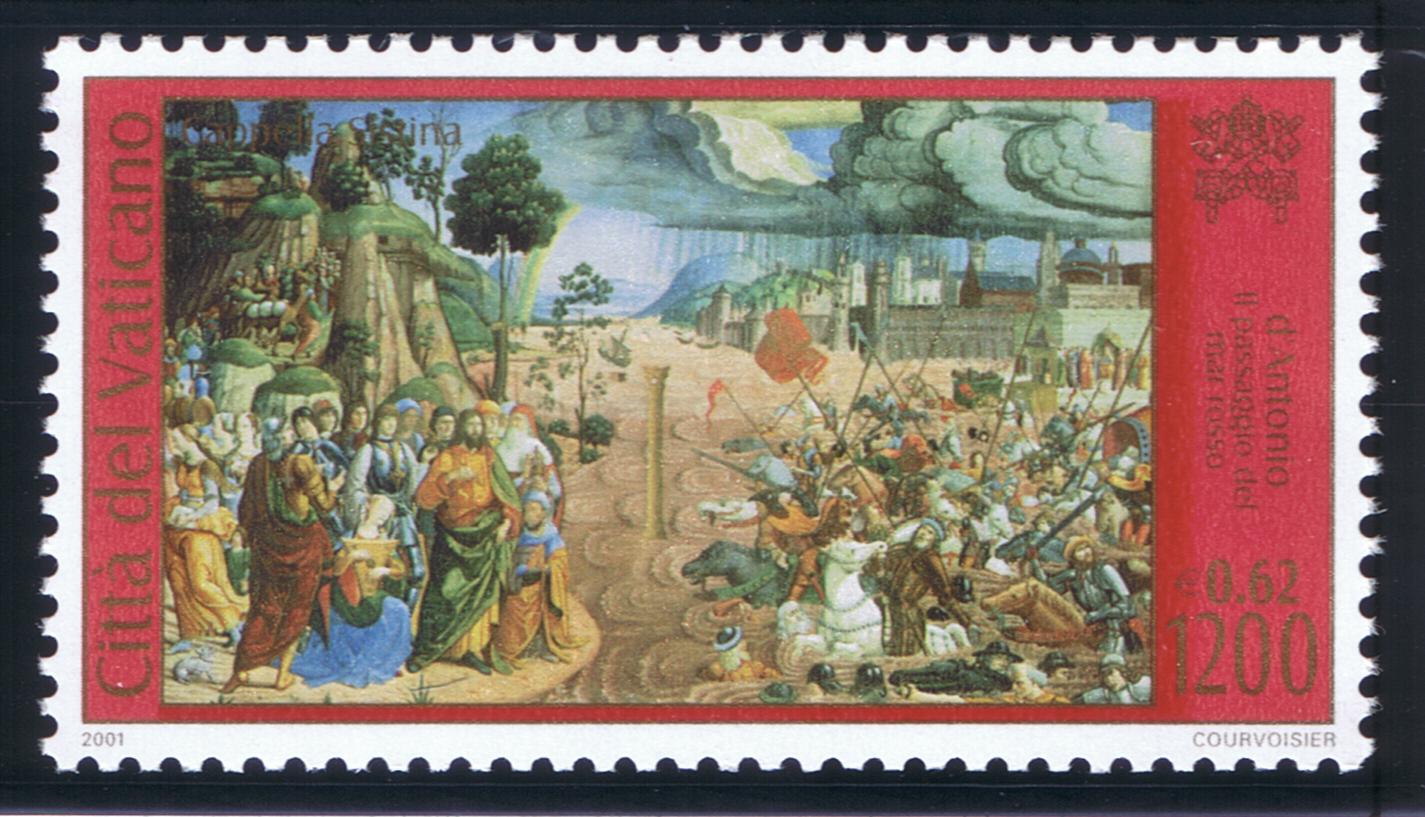
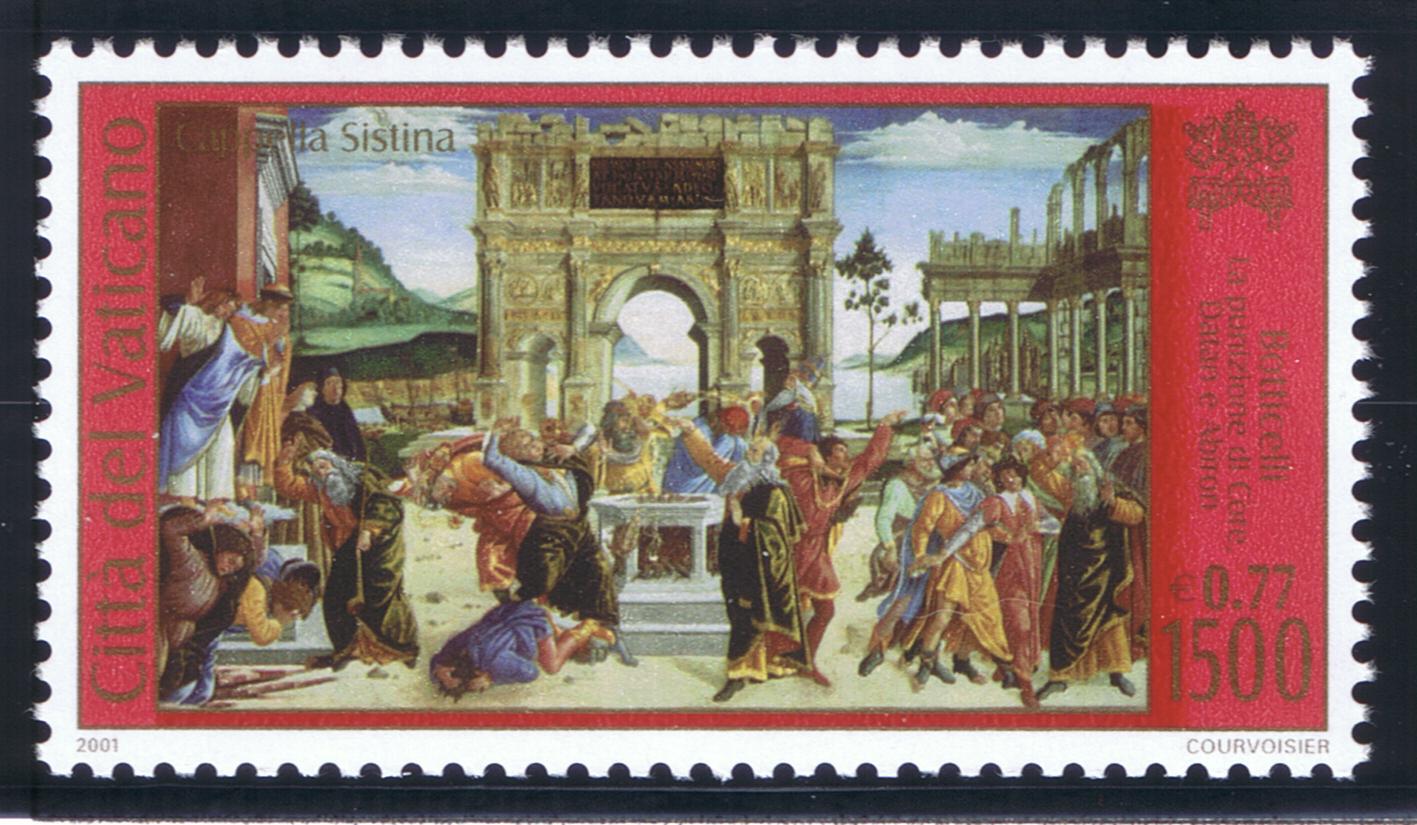
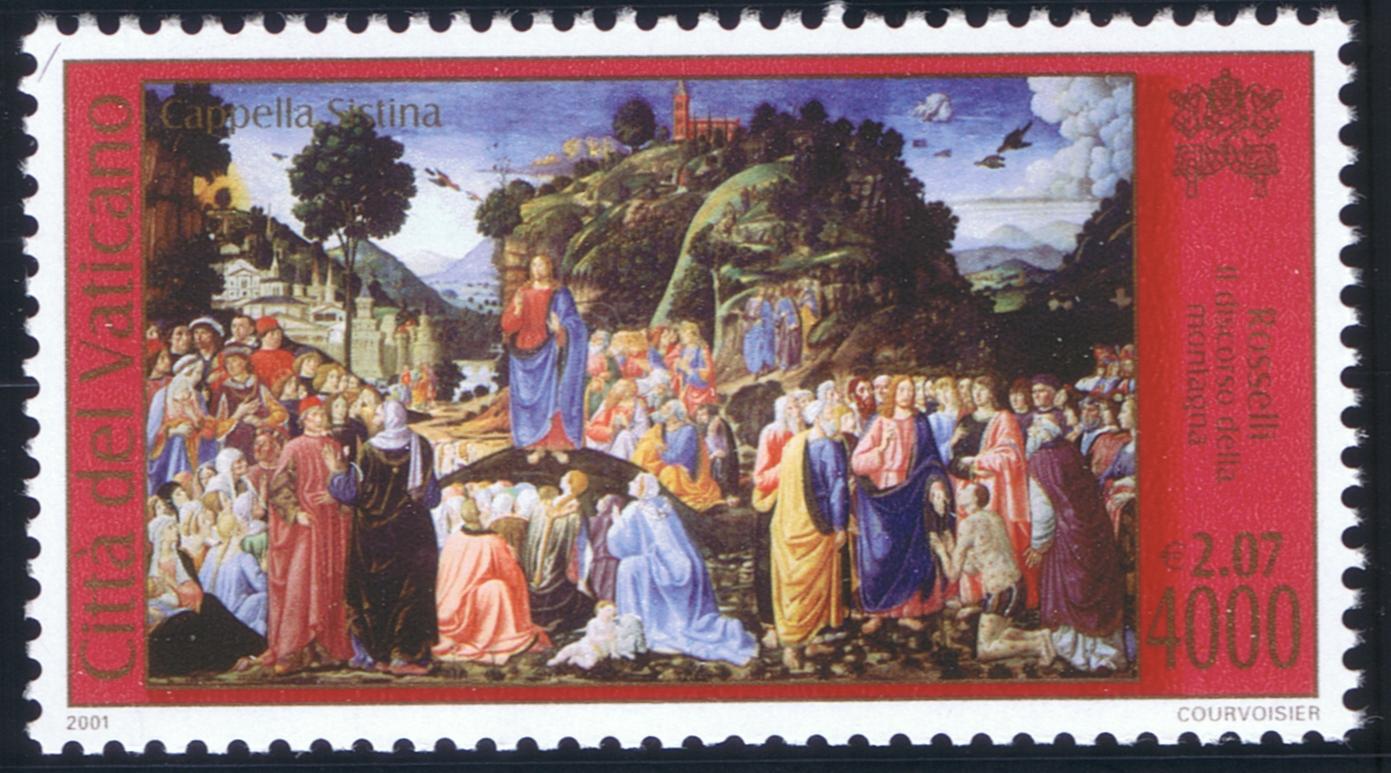










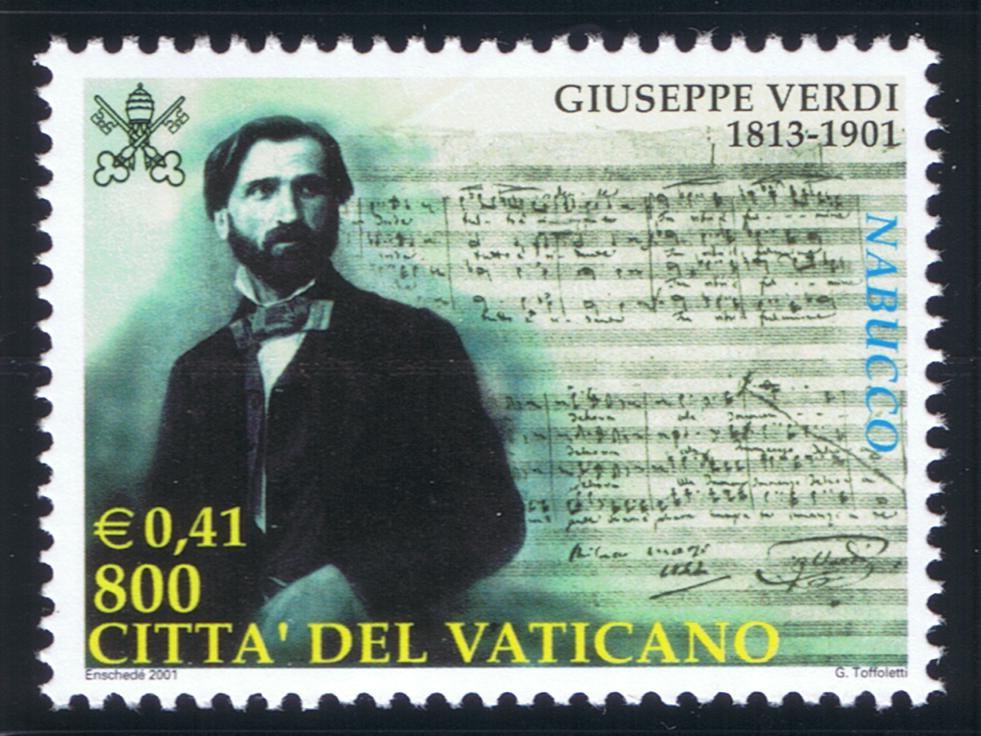
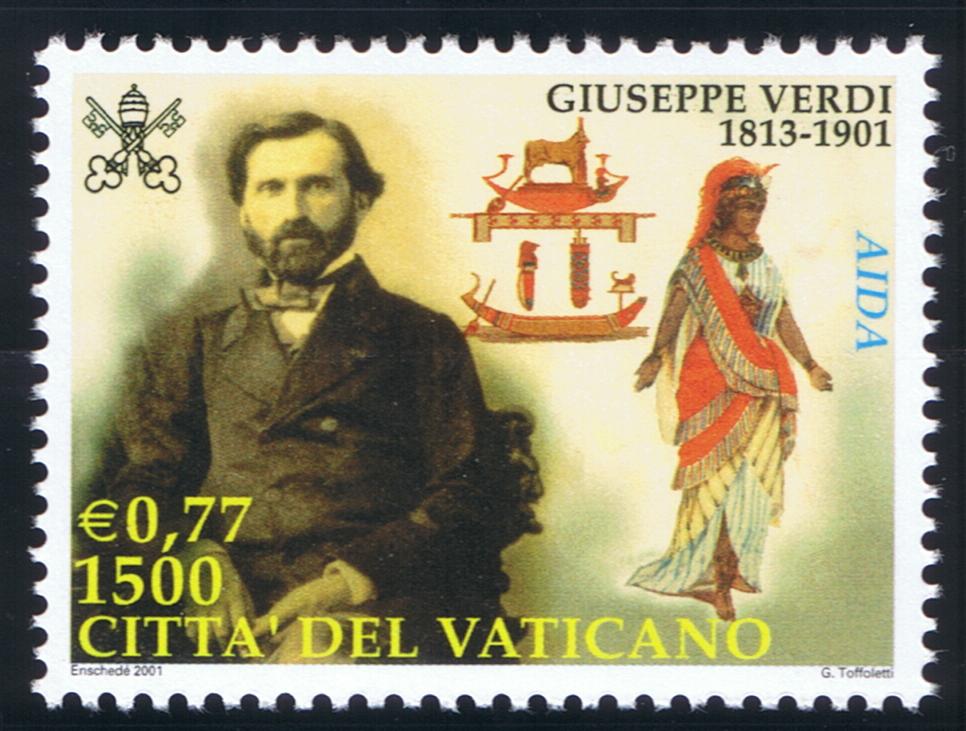
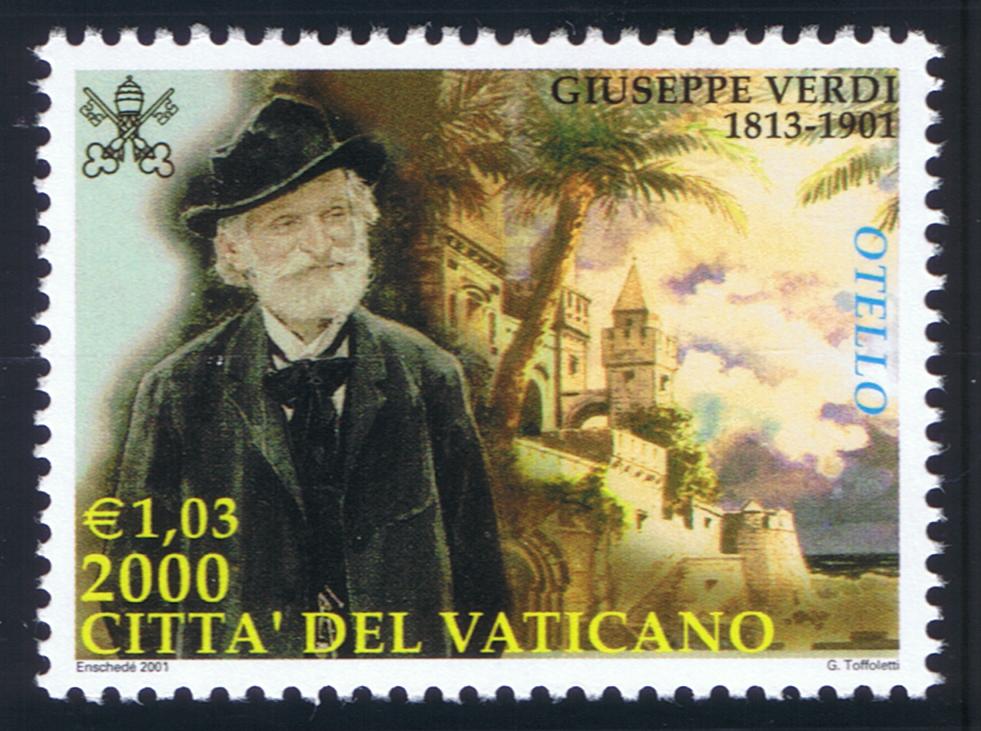



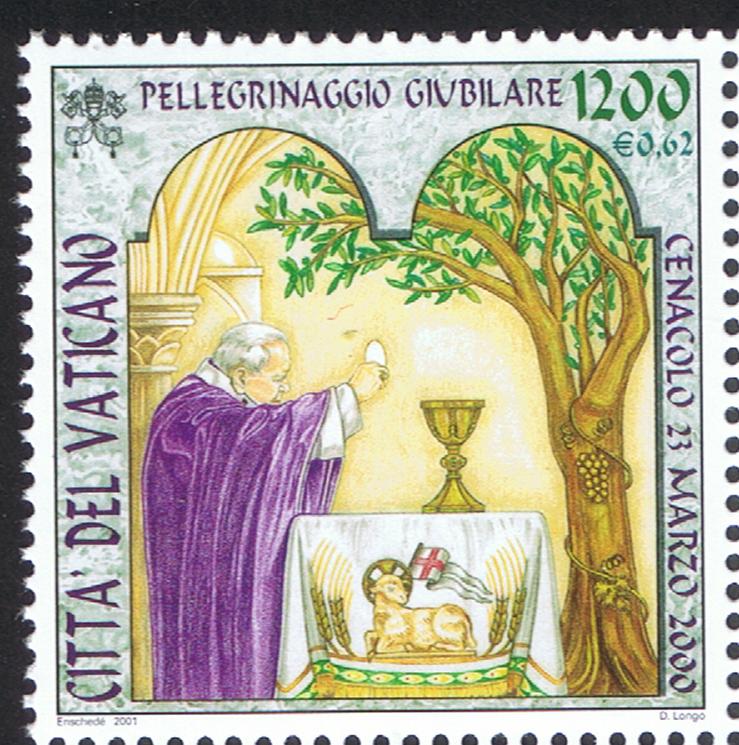


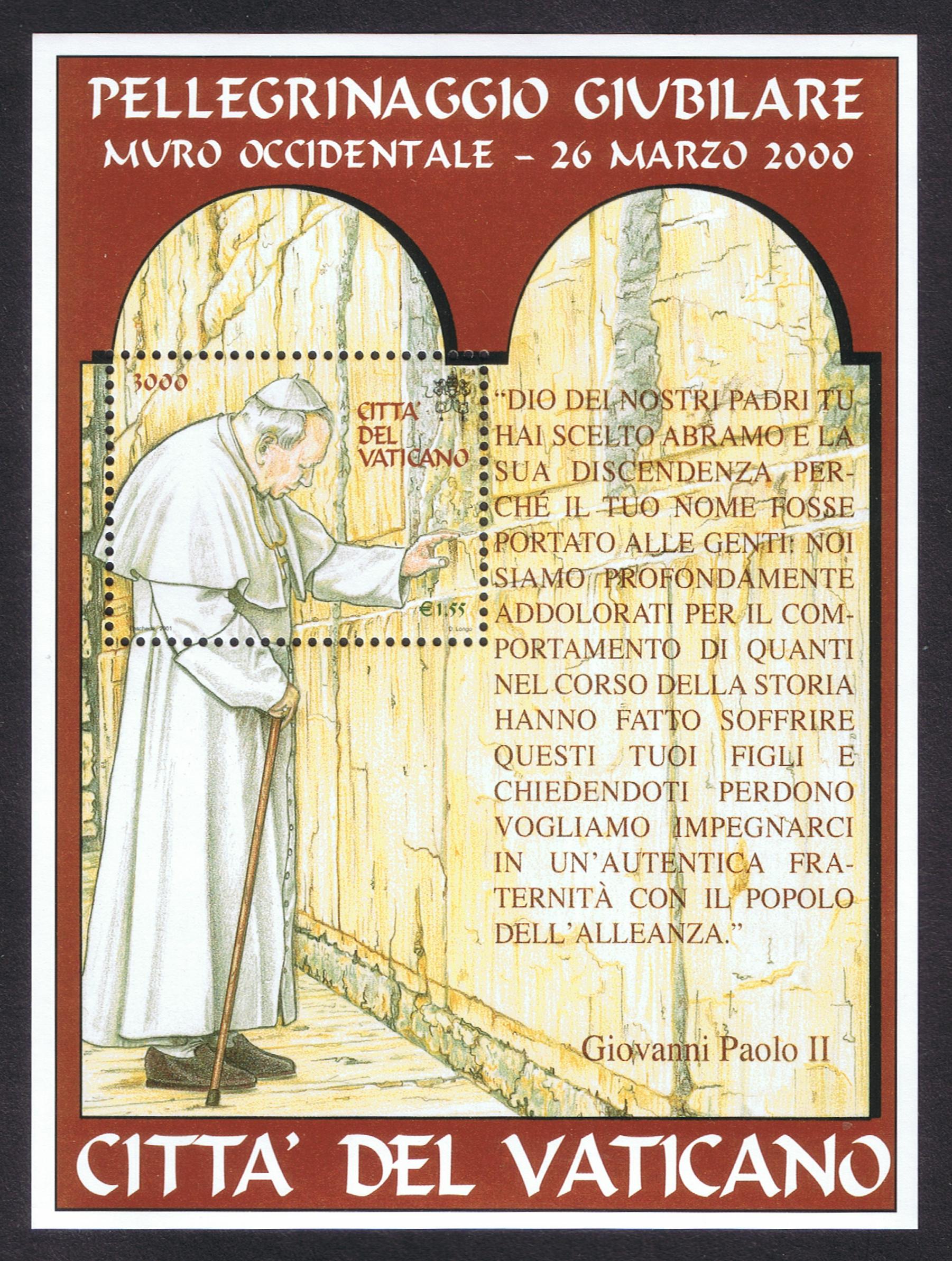

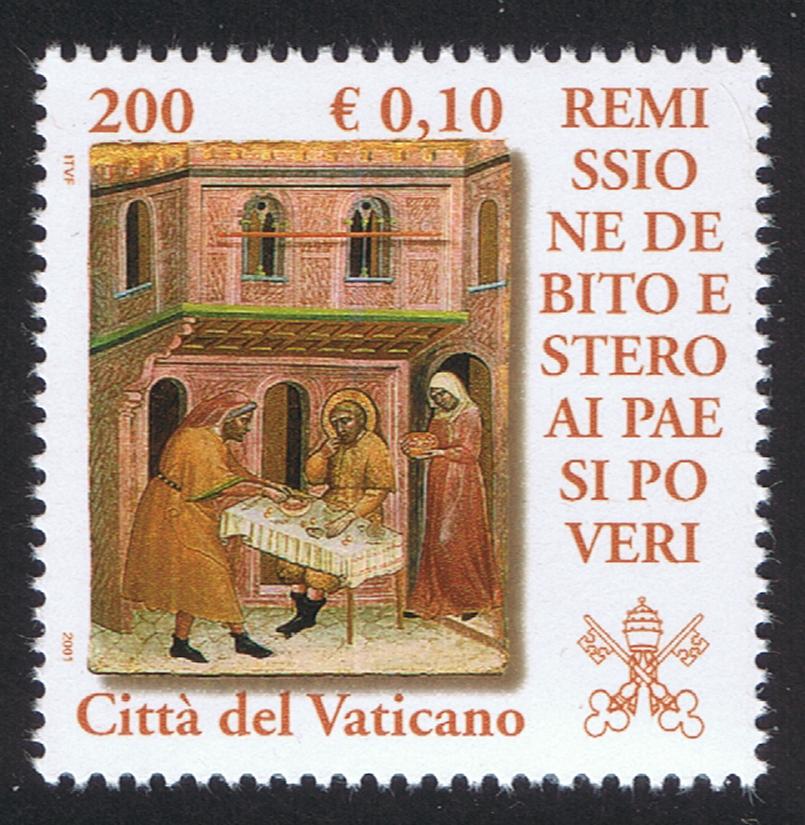
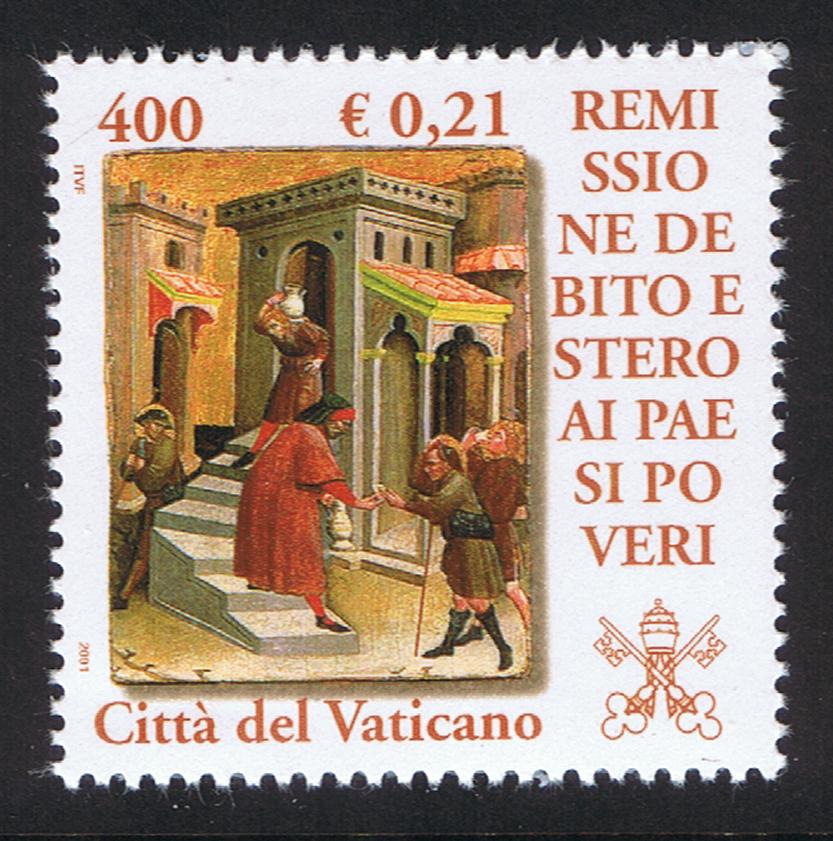
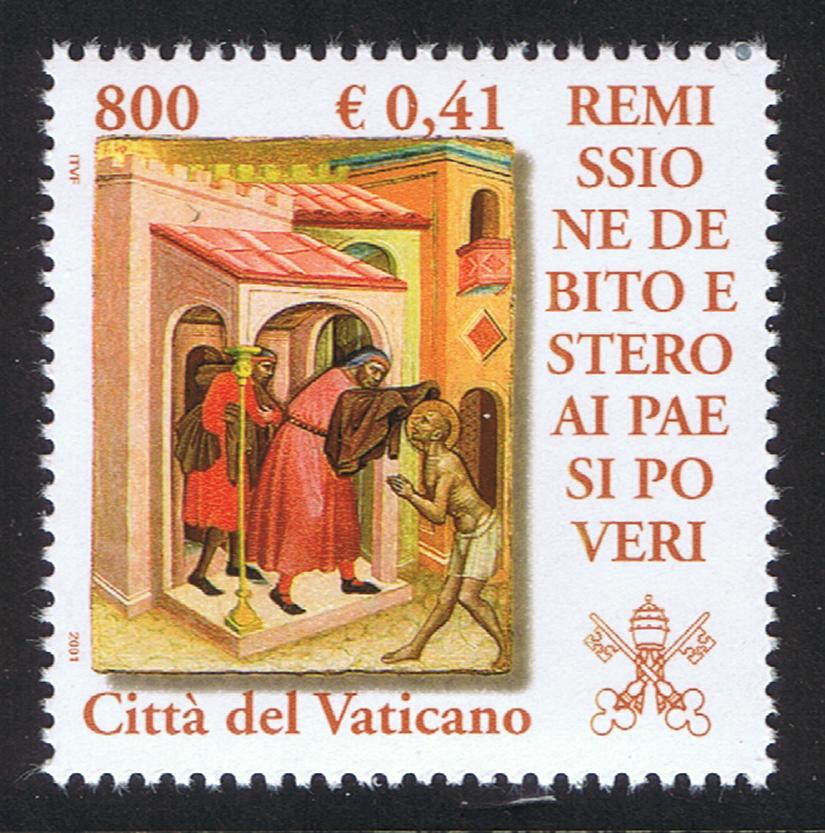
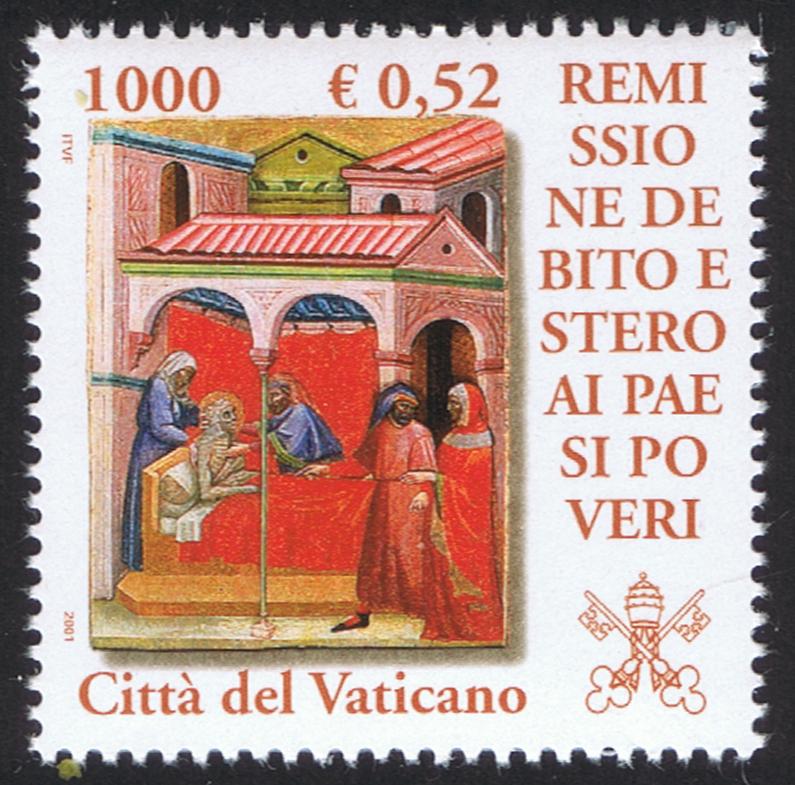





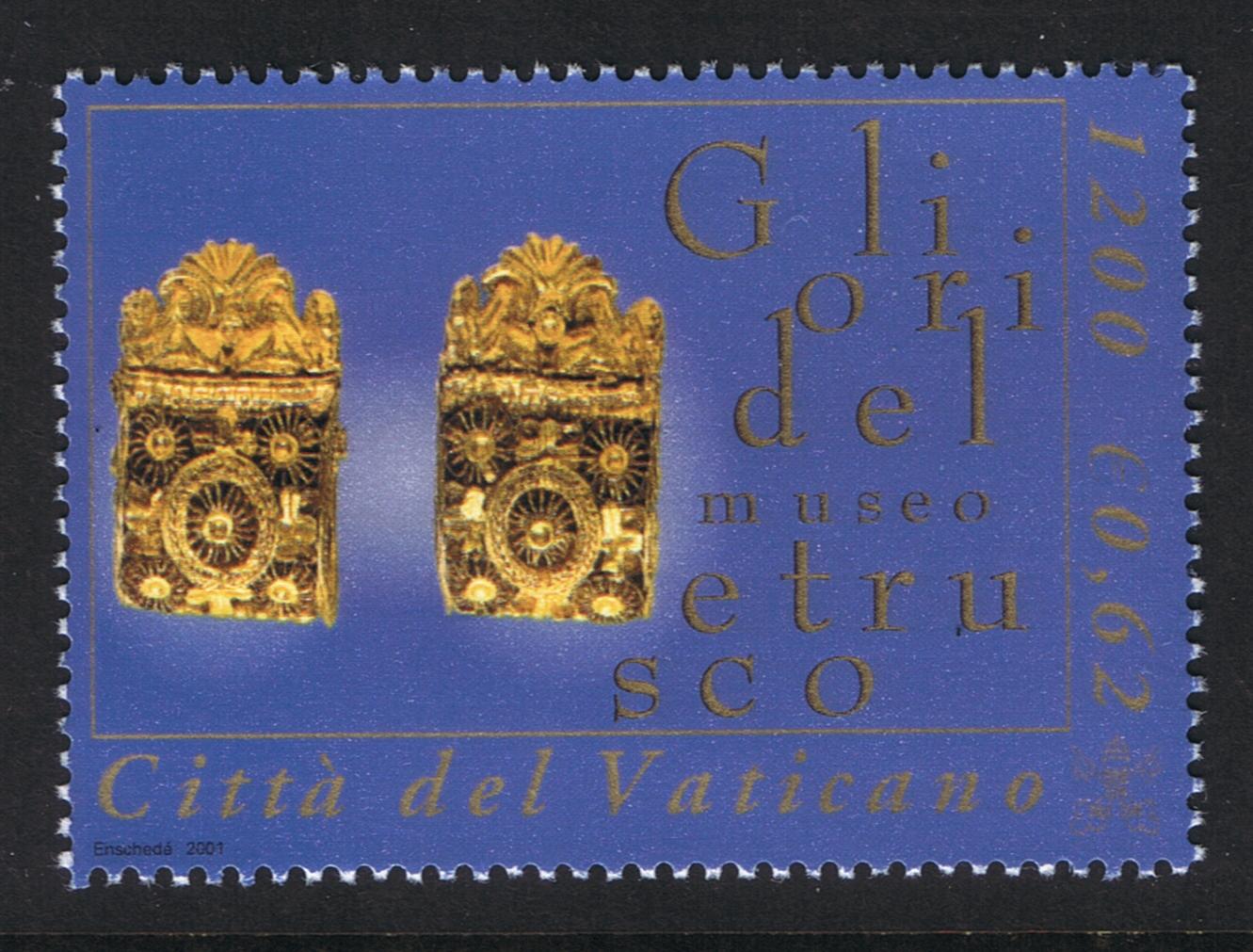

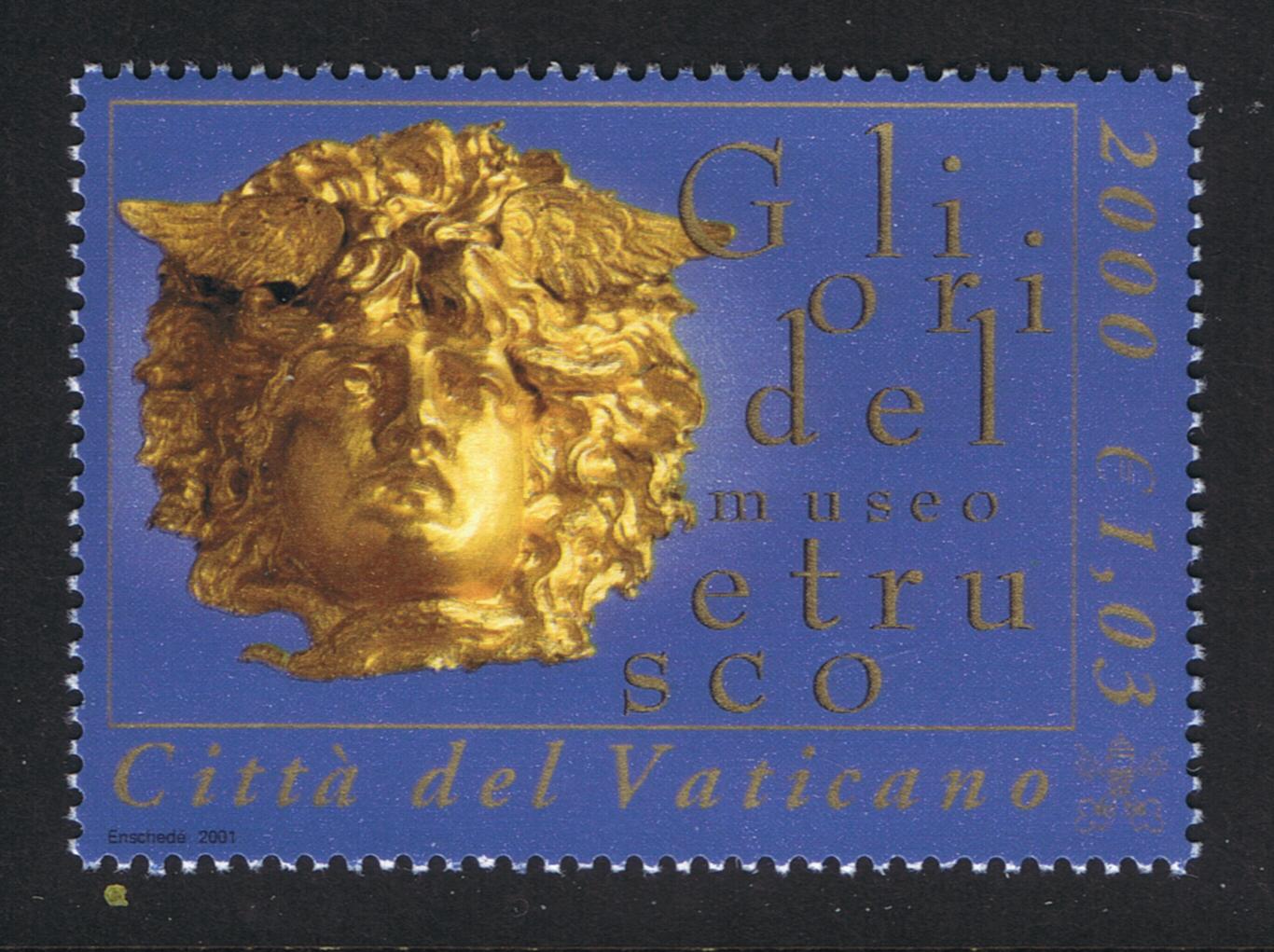




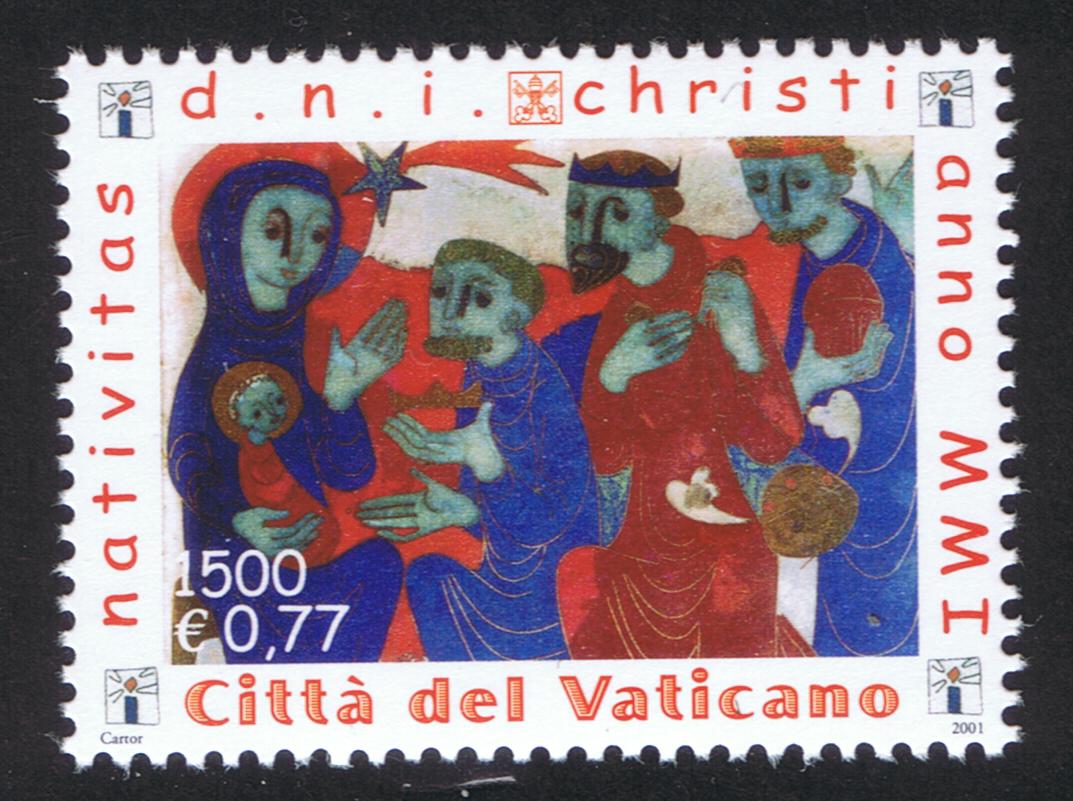



Our Lady in the Vatican Basilica
On March 12, 2002, Vatican City issued a 10-stamp set entitled Our Lady in the Vatican Basilica. This was a definitive mail series and was the first Vatican definitive set issued following the conversion of the currency to euros. The euro is the official currency for 20 of the 27 member states of the European Union (EU), including Vatican City. Physical euro coins and banknotes entered into circulation on January 1, 2002. By March of 2002, the euro had completely replaced the former currencies of the states choosing to convert to the euro.
The stamps illustrated represent a small sampling of the numerous pieces of art which venerate the Blessed Virgin Mary in the Vatican Basilica. The artwork represented is meant to
Pay a tribute of affection to the Mother of God in a selection of images of particular religious, artistic and historical importance.
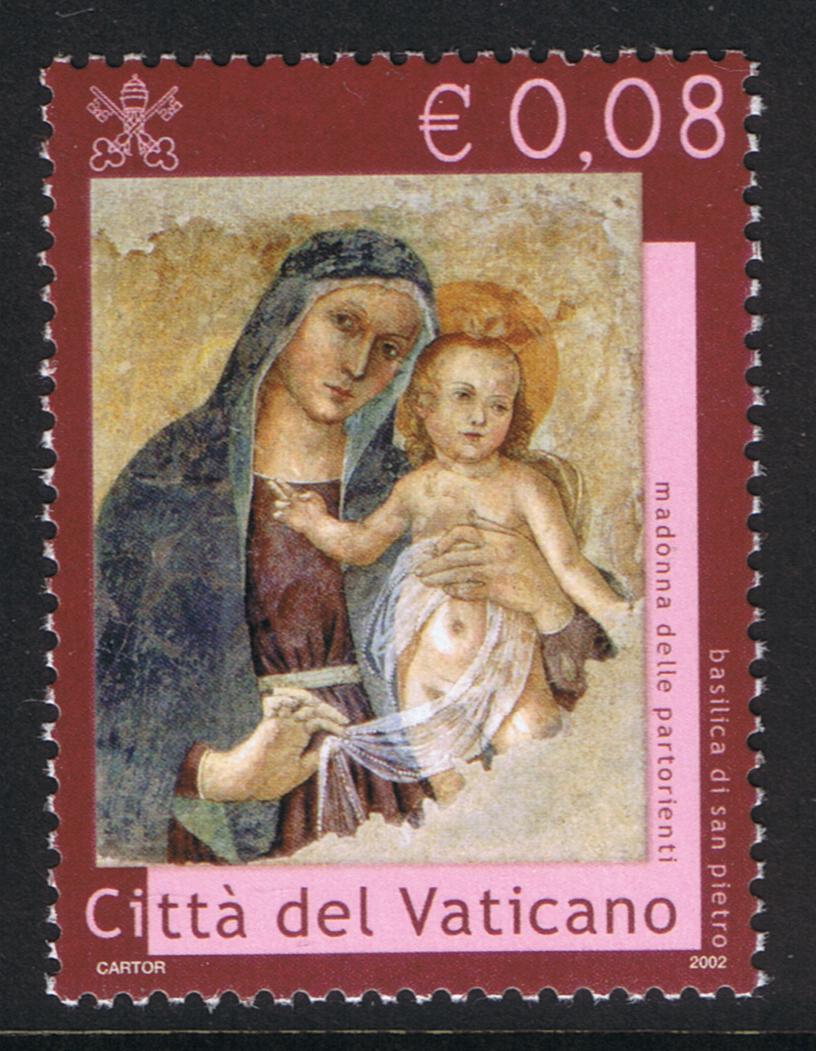

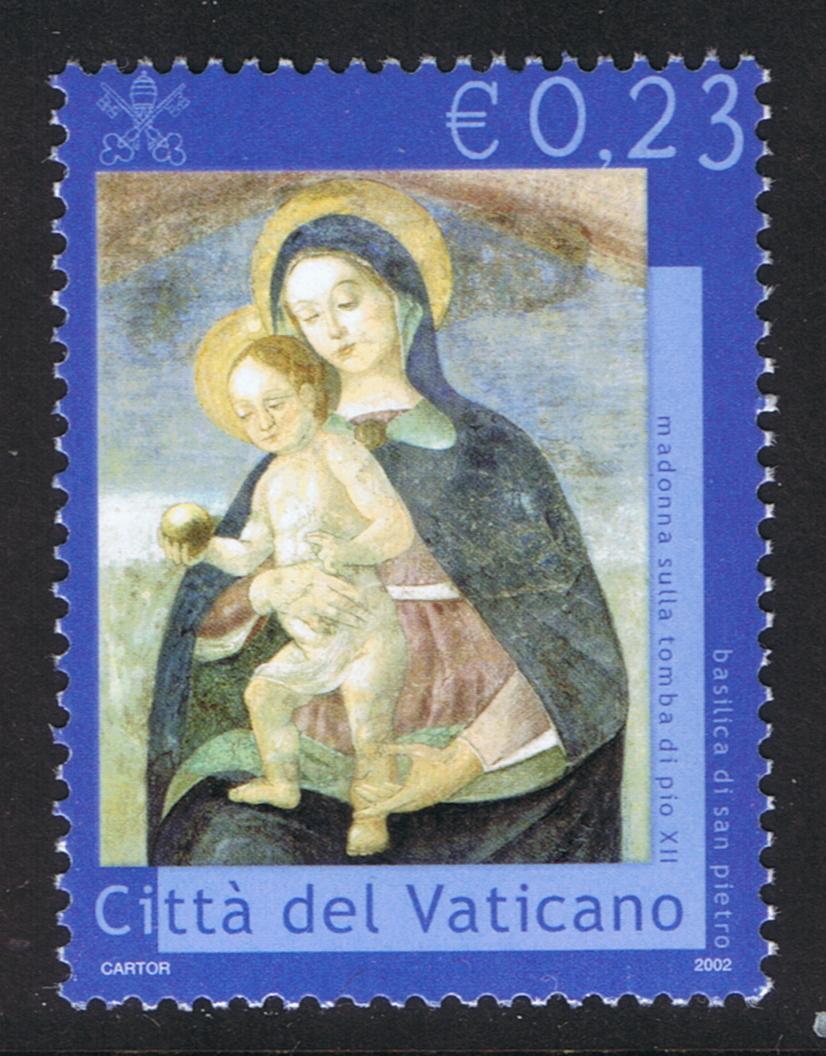

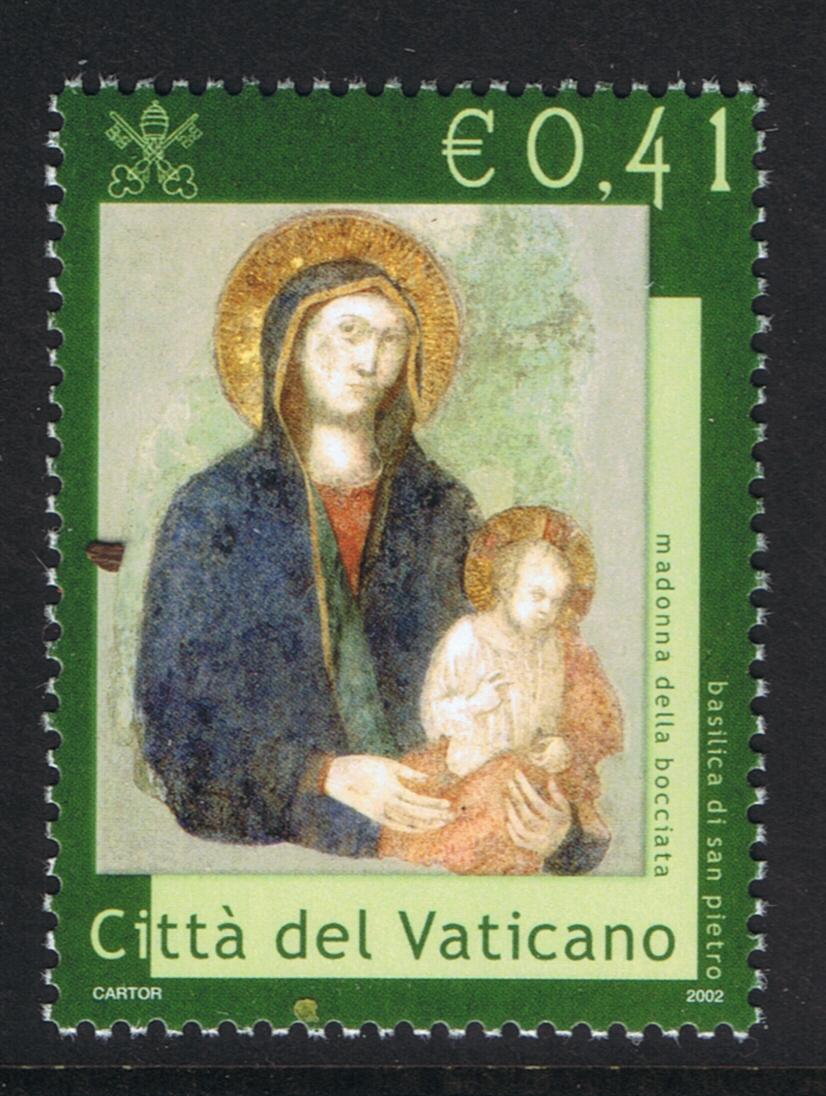


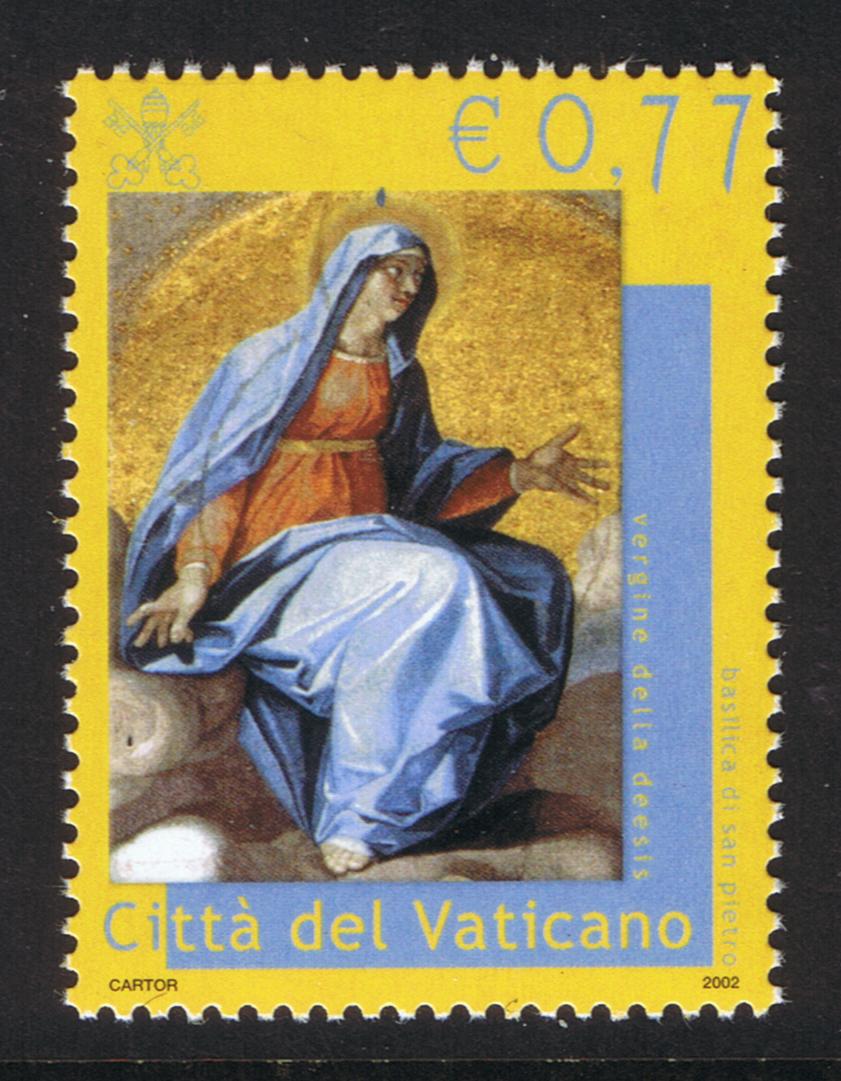
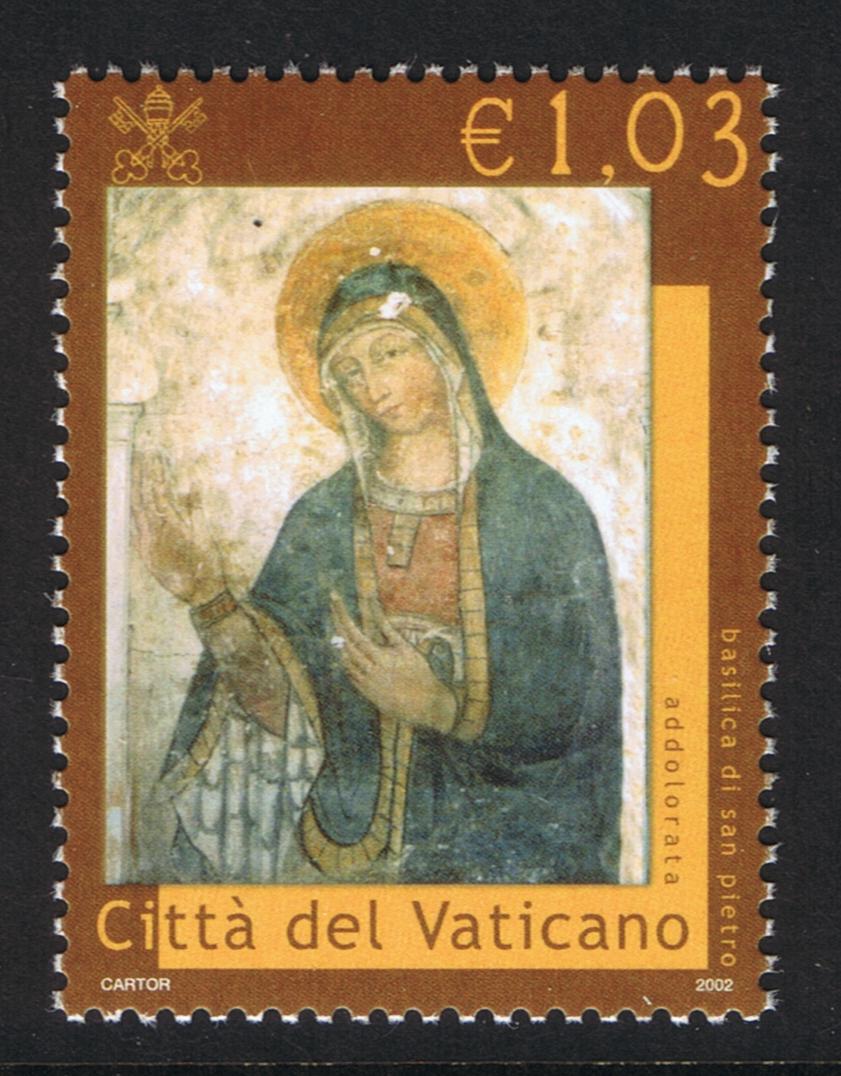
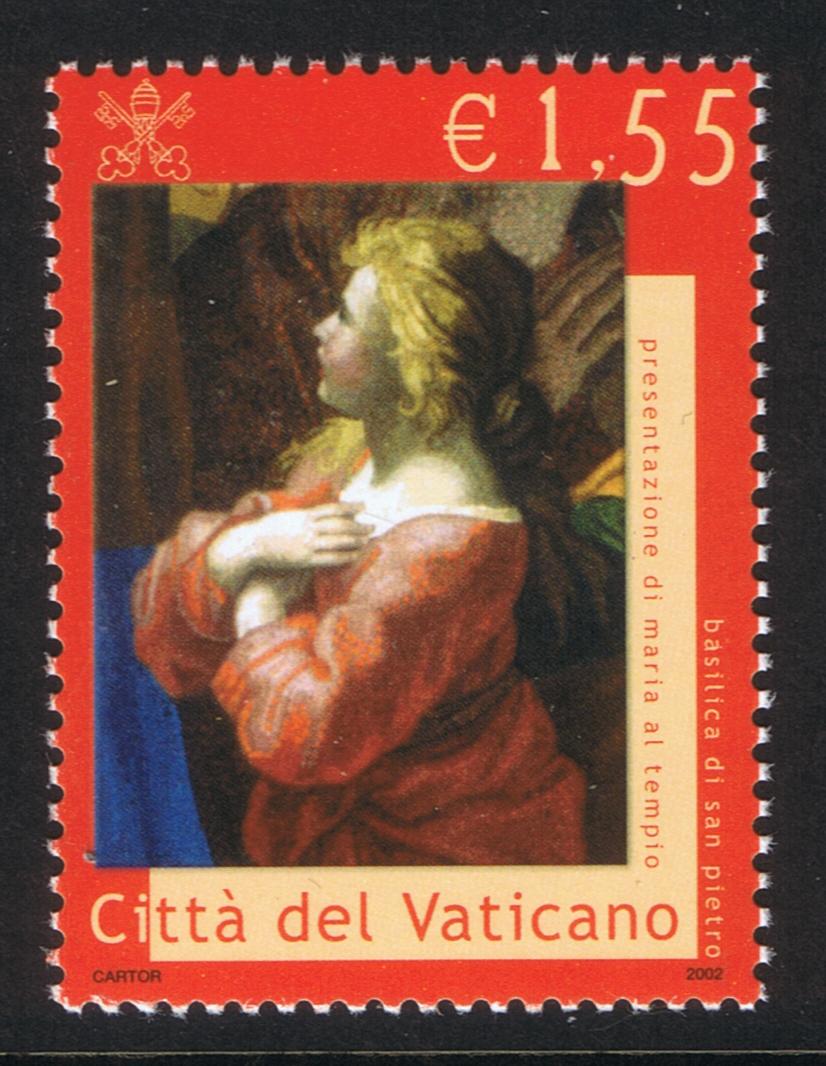


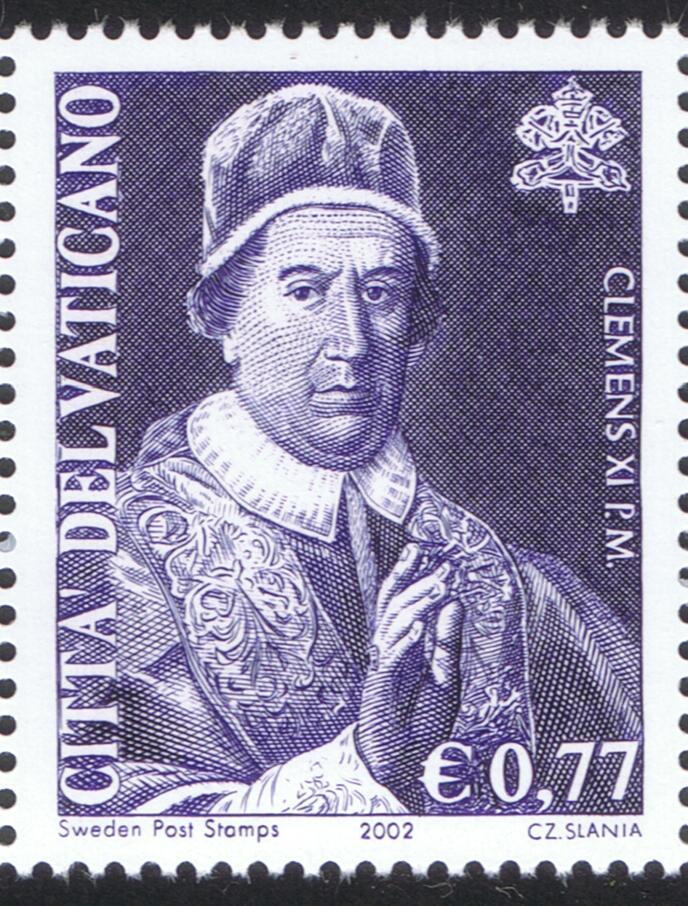
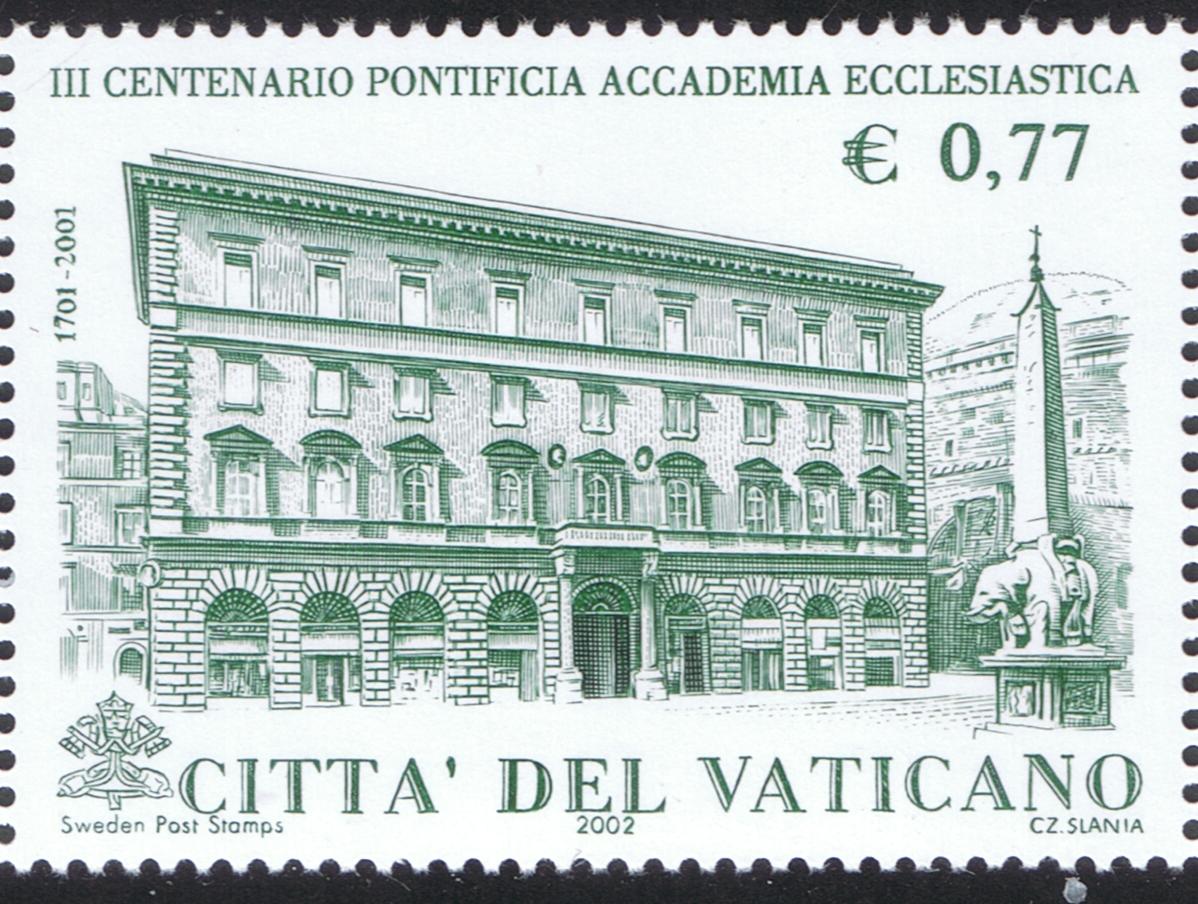
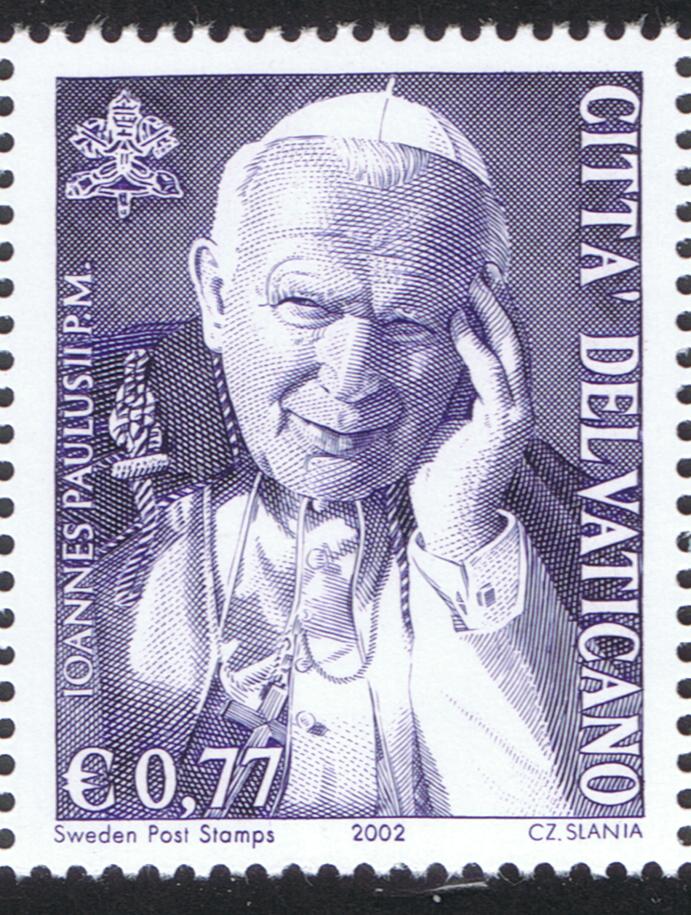

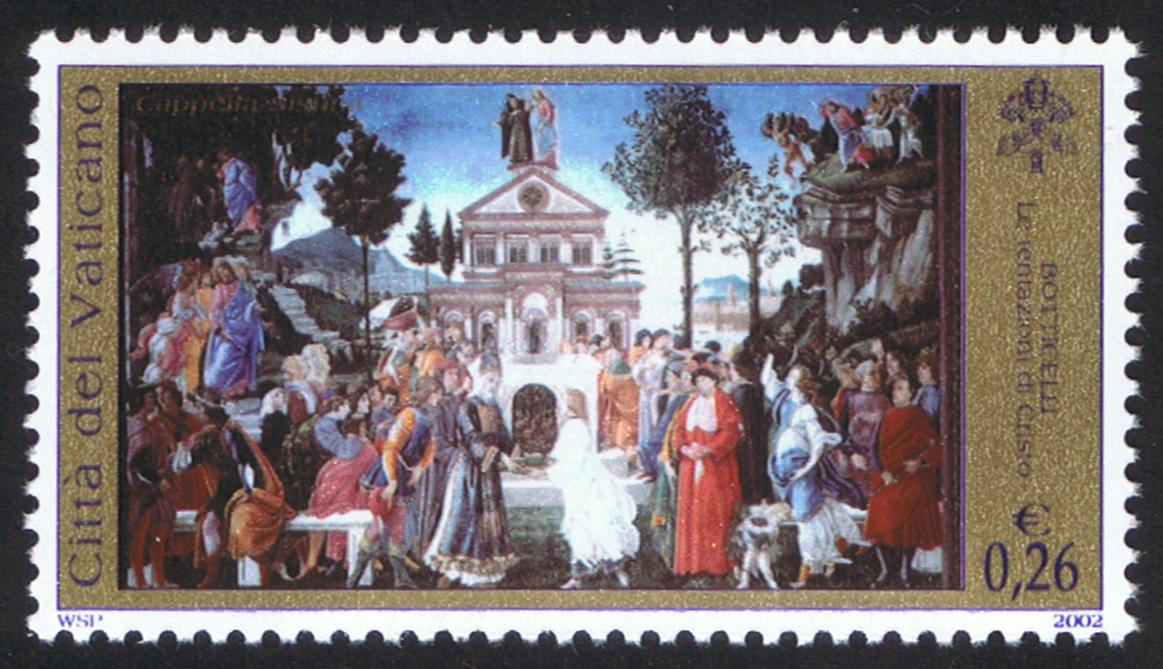

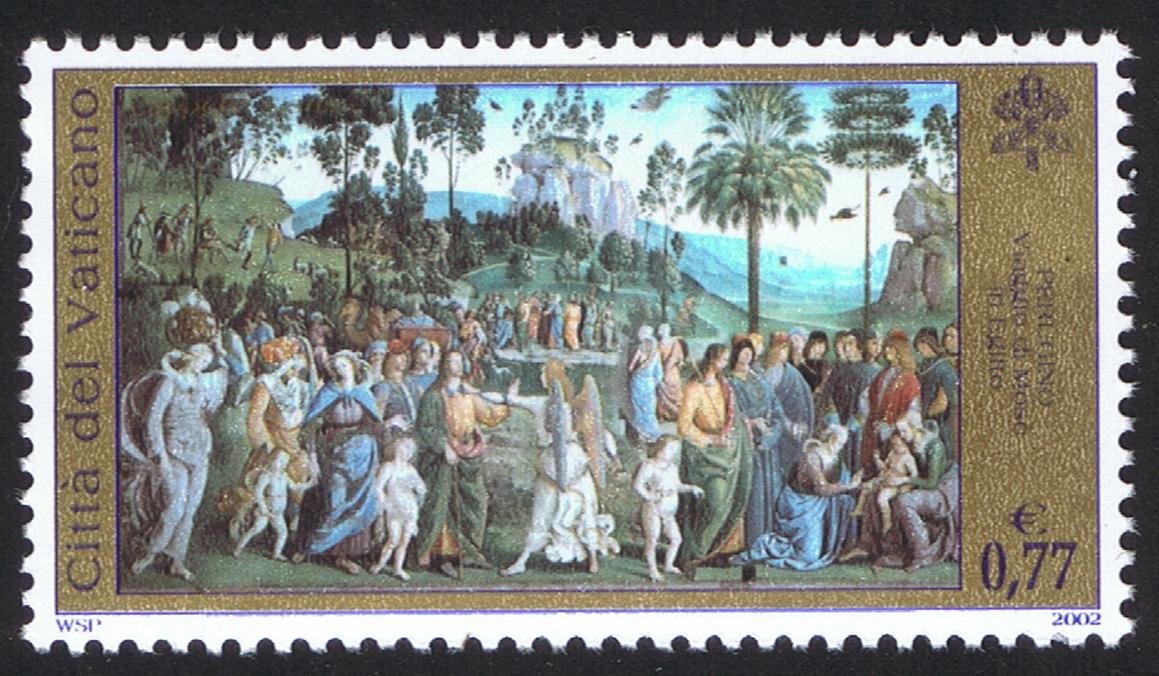
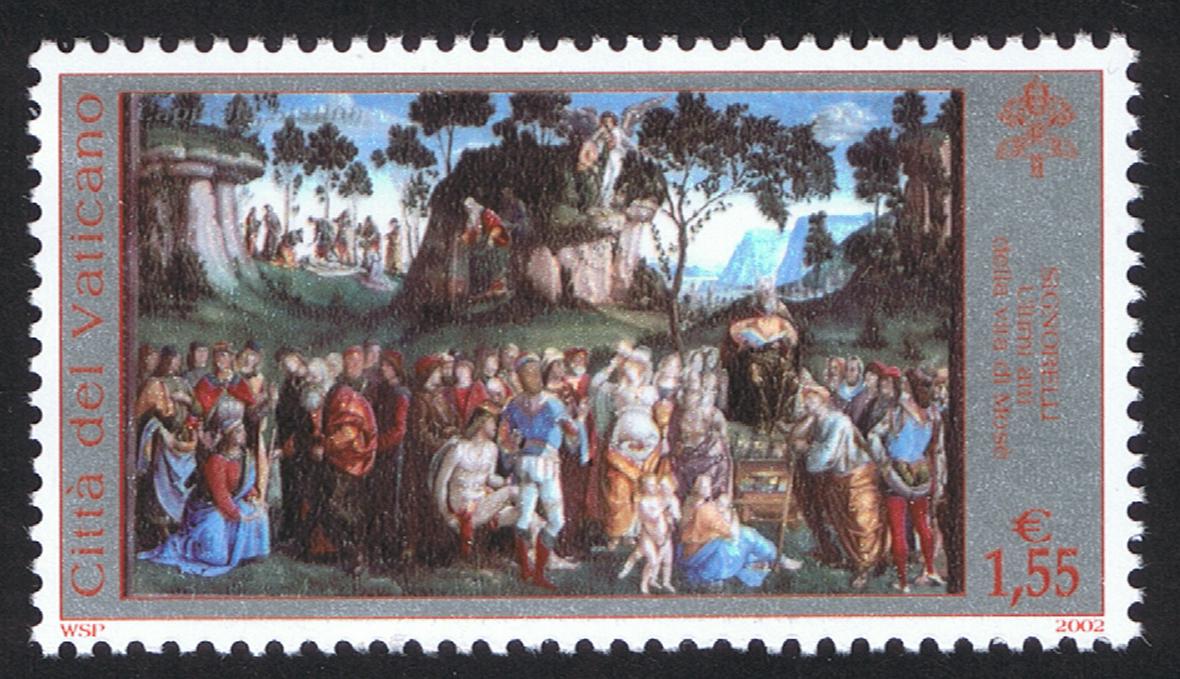













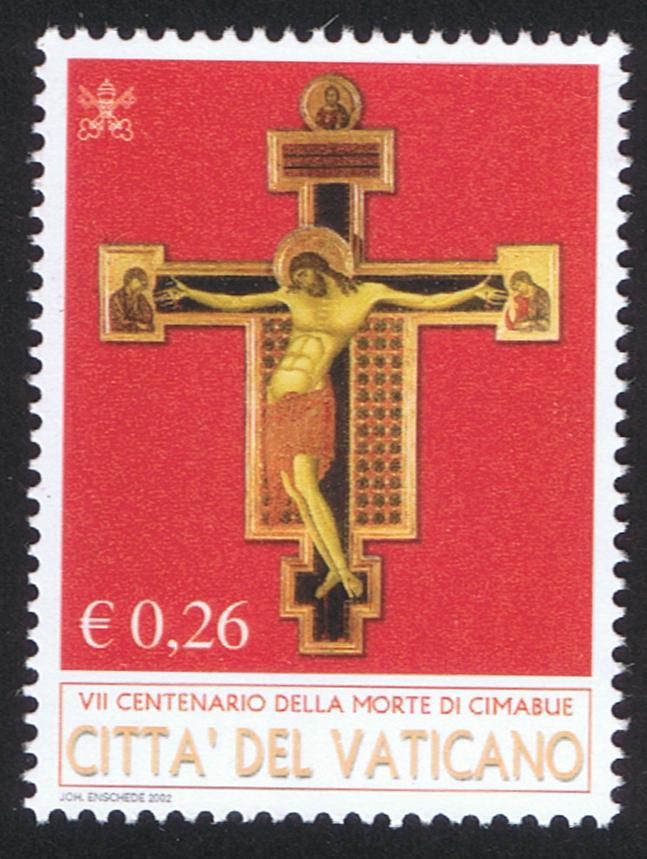


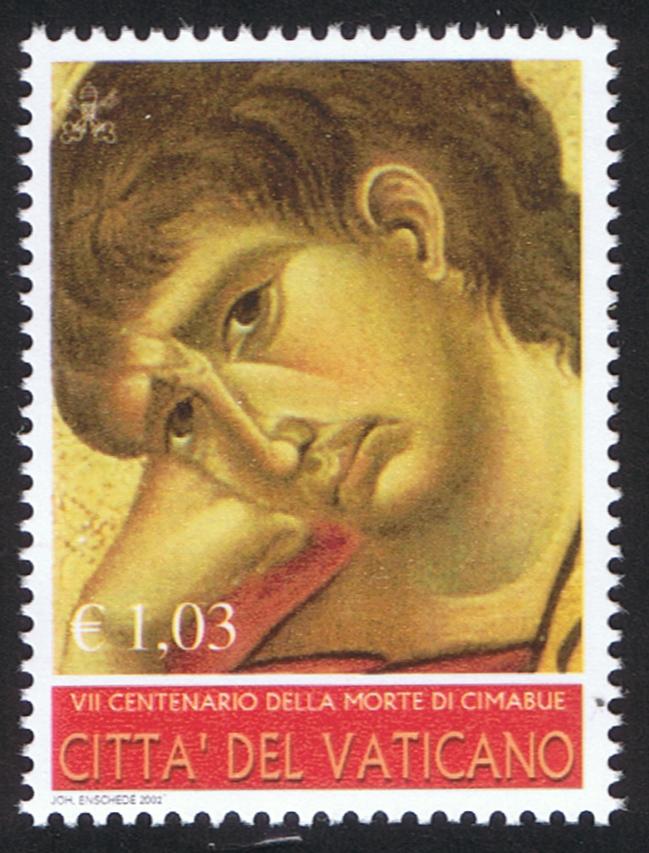



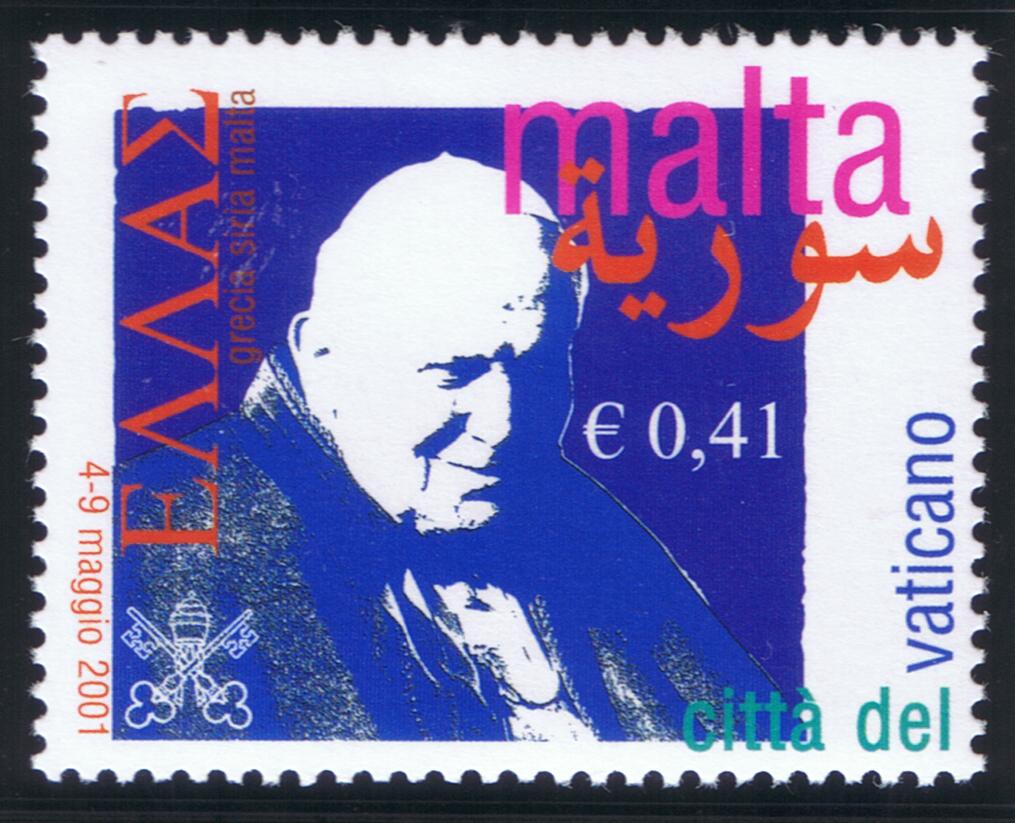






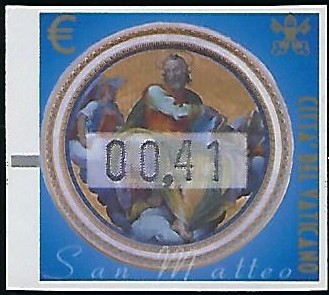

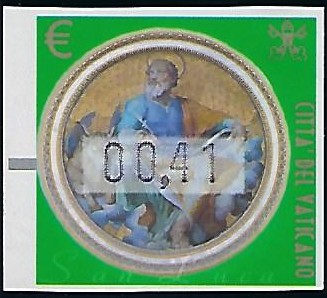
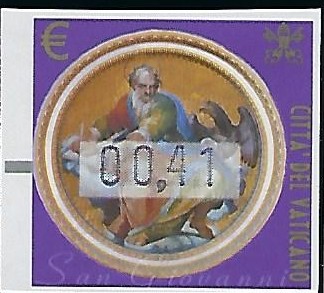

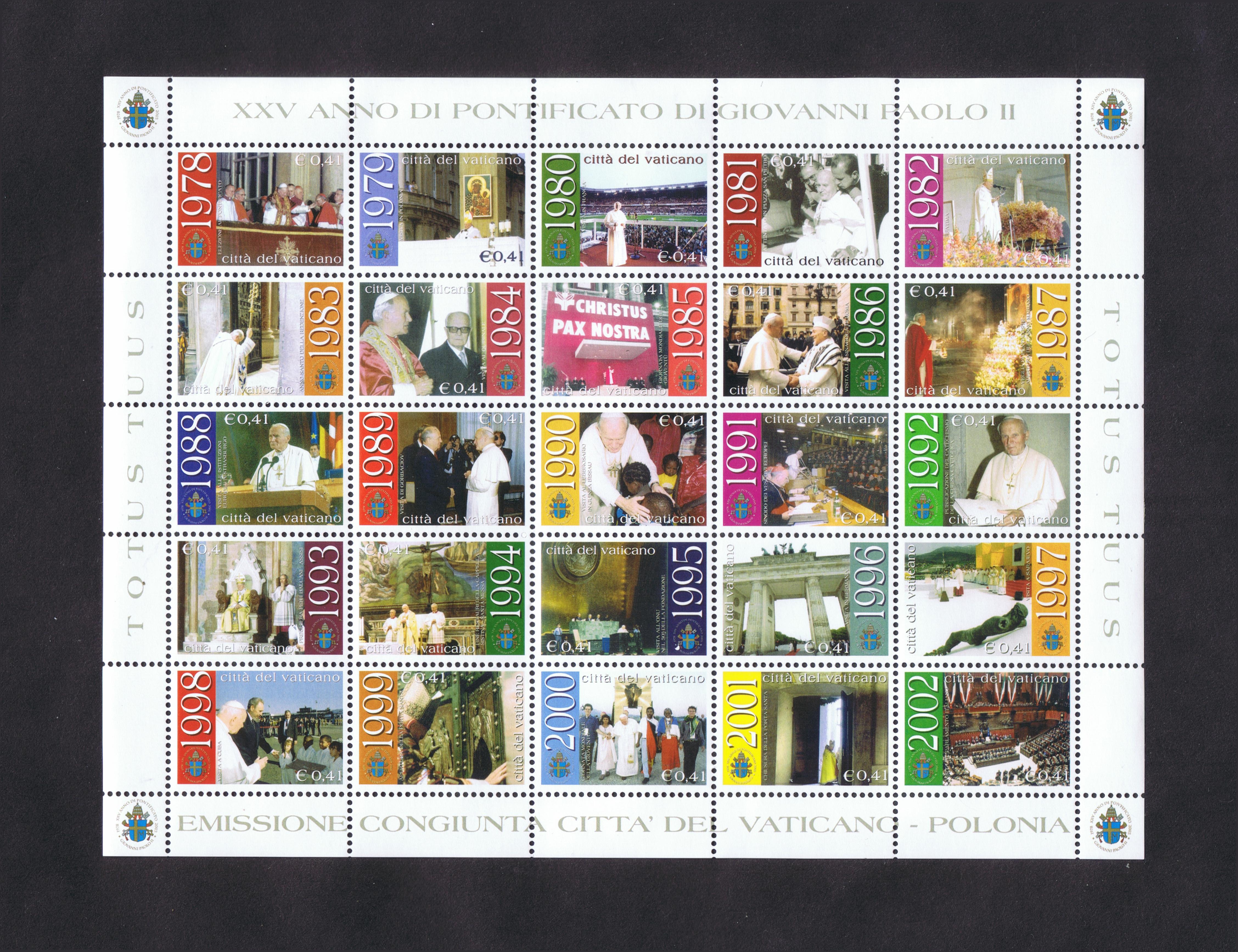








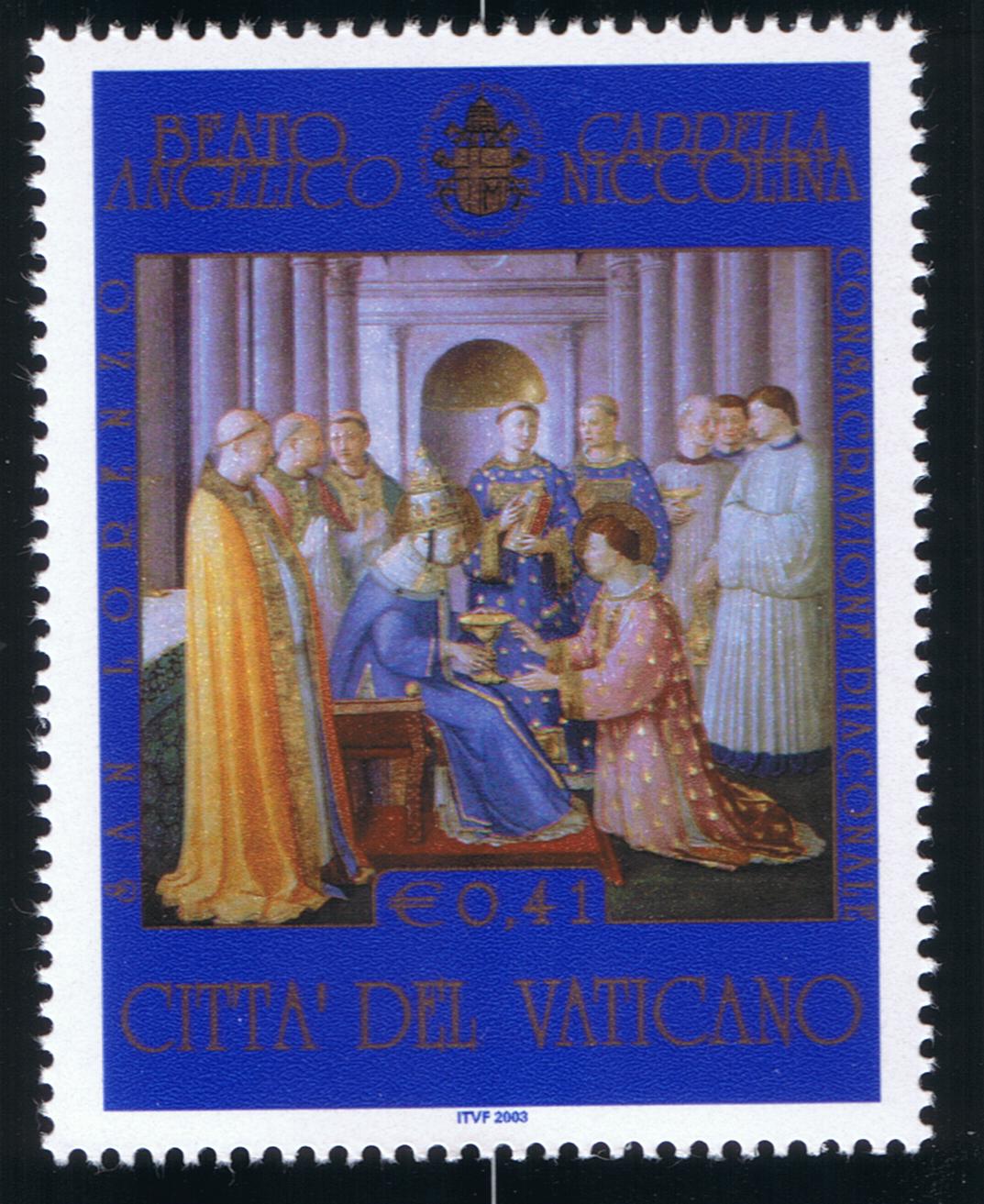

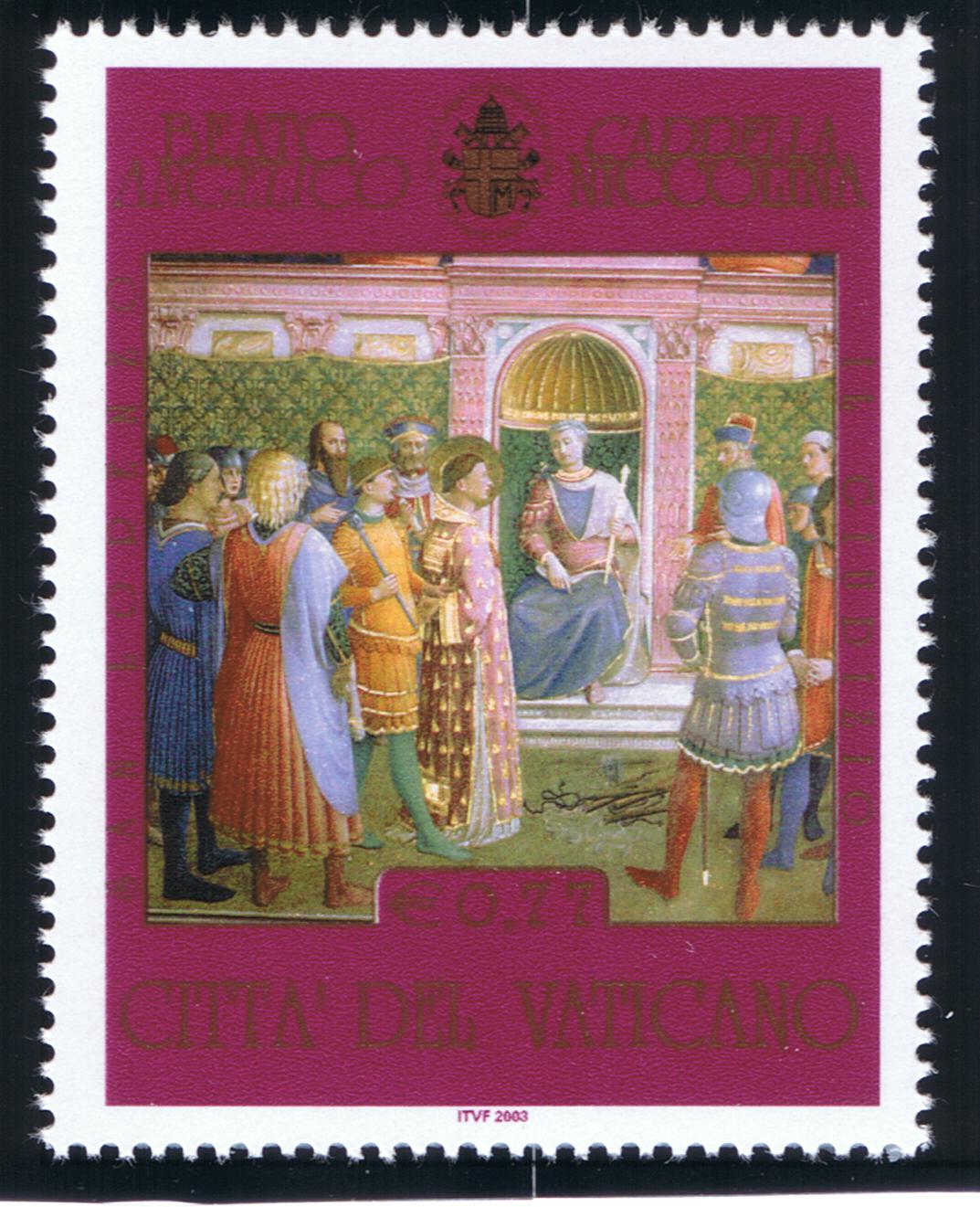


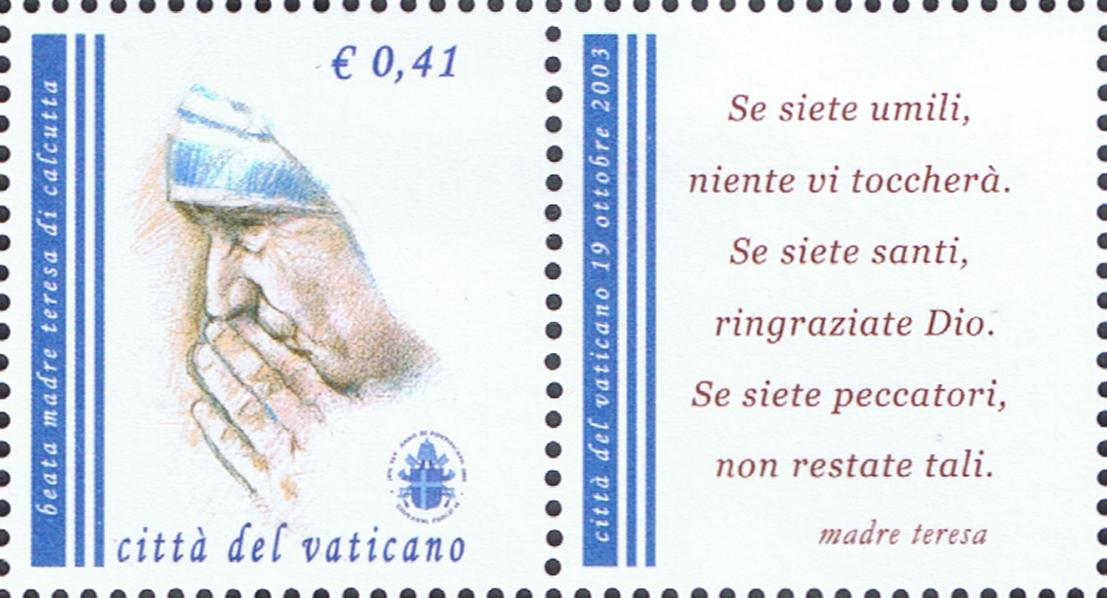
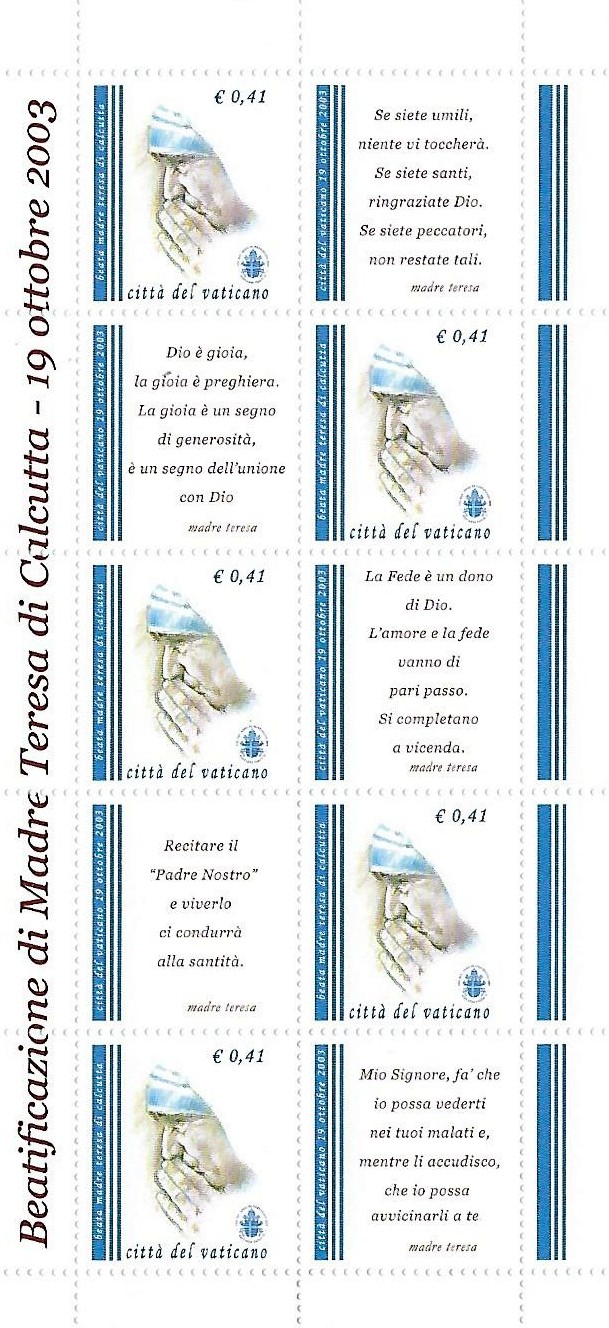













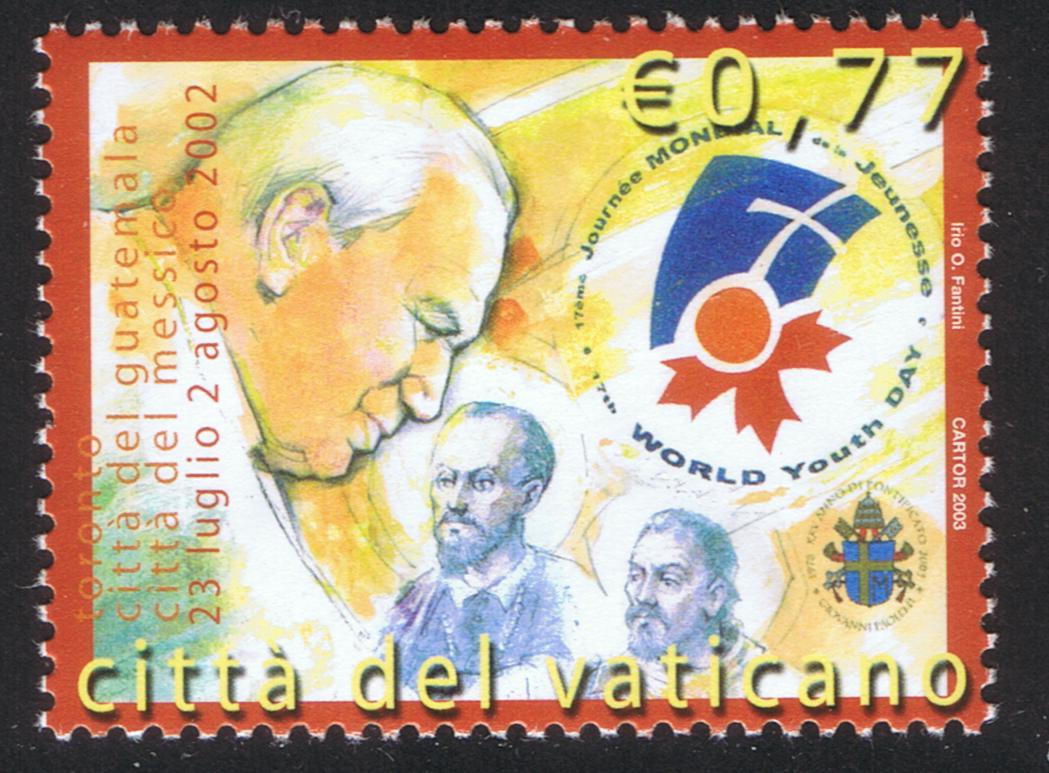




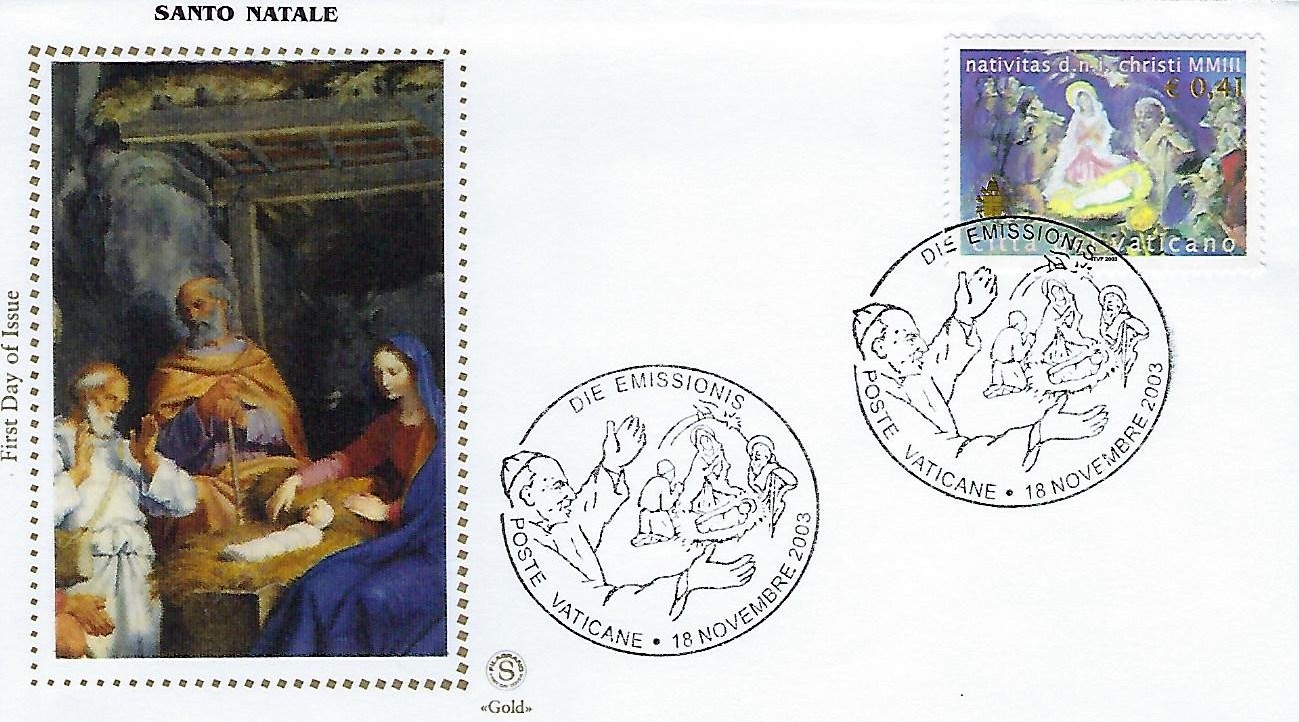


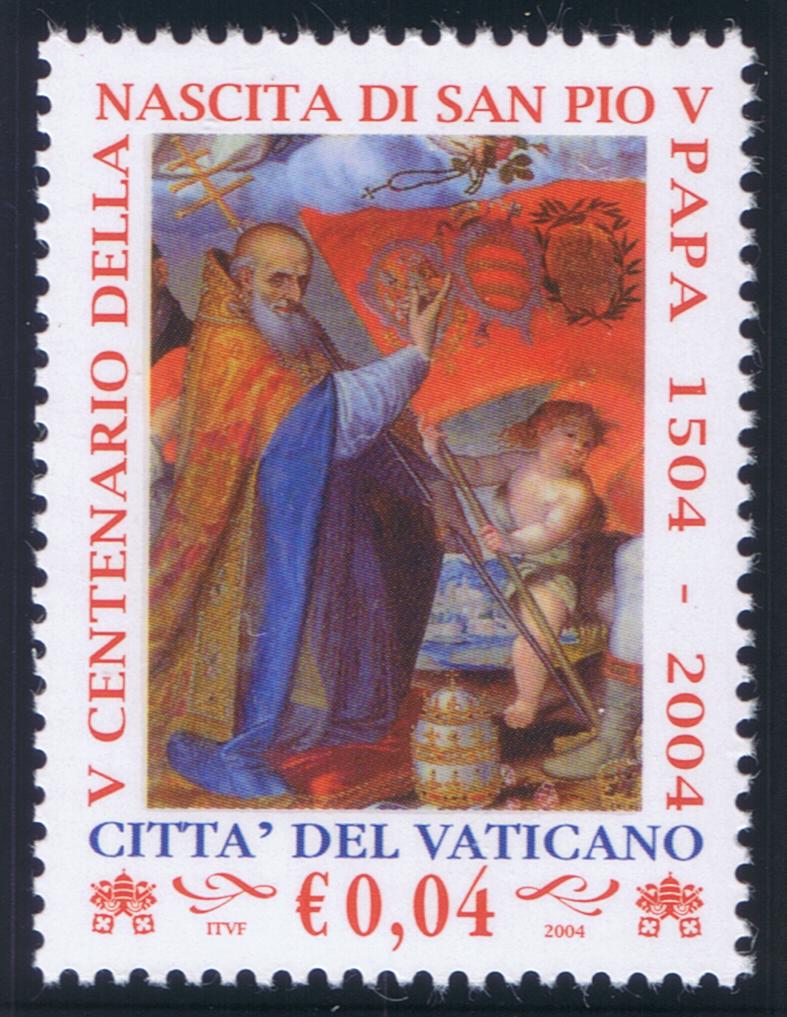
























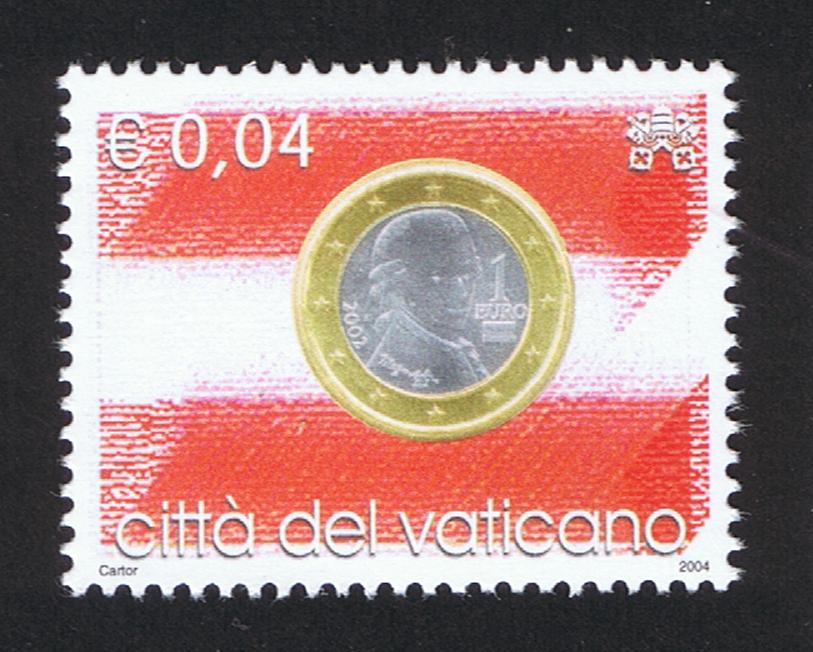

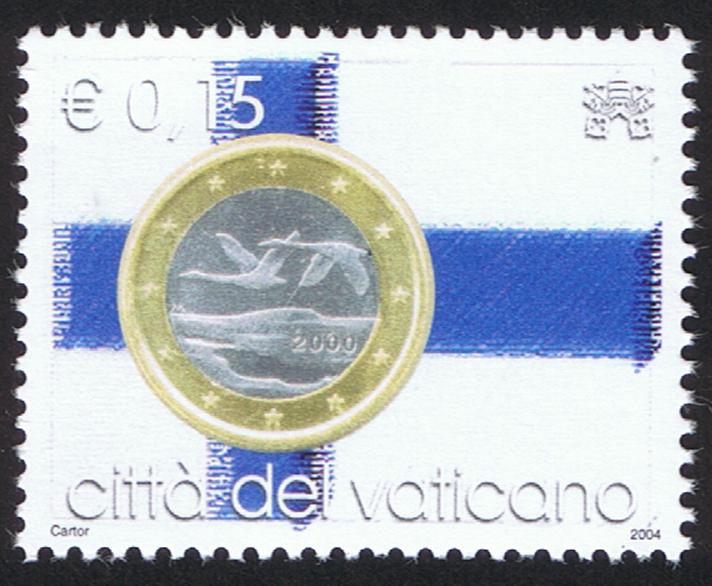
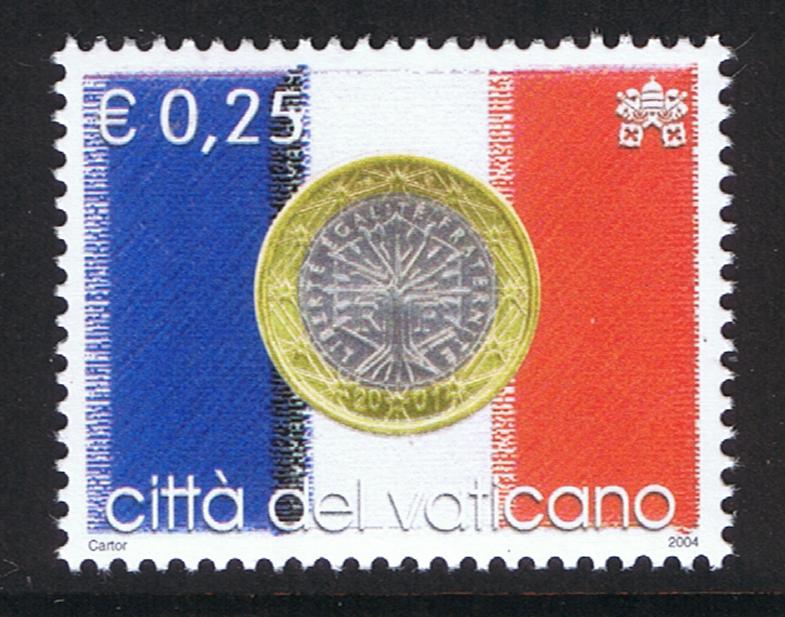







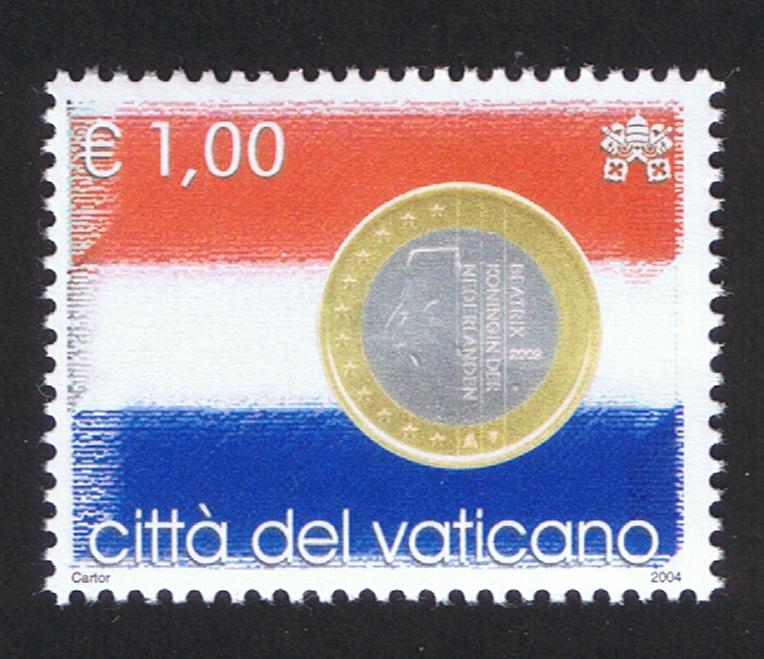







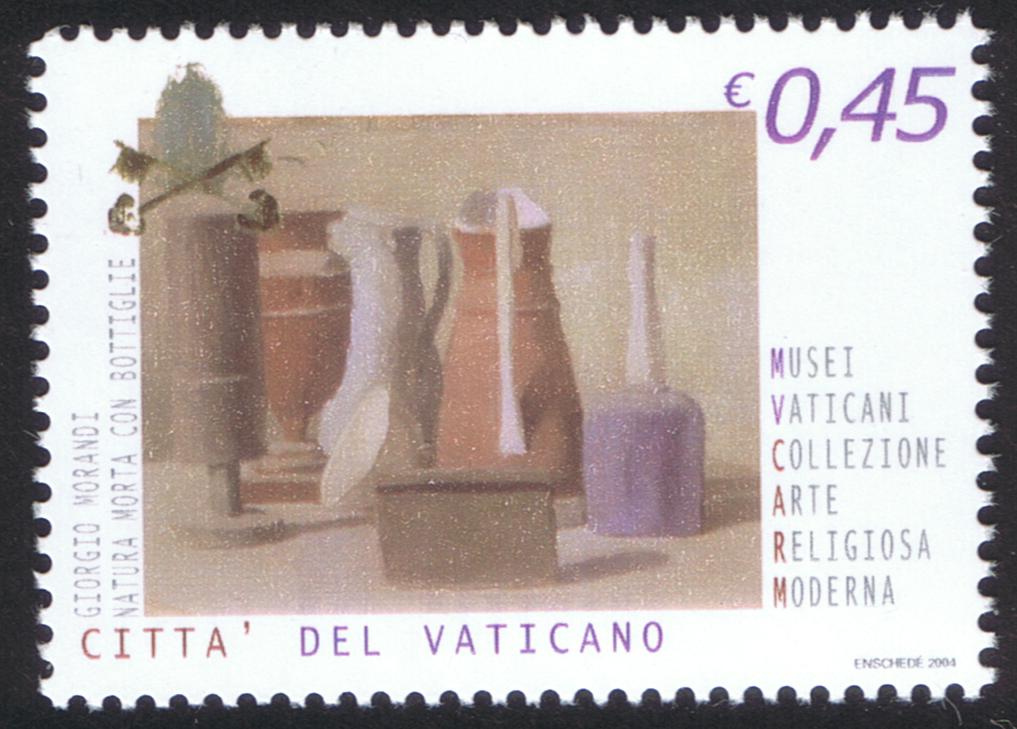

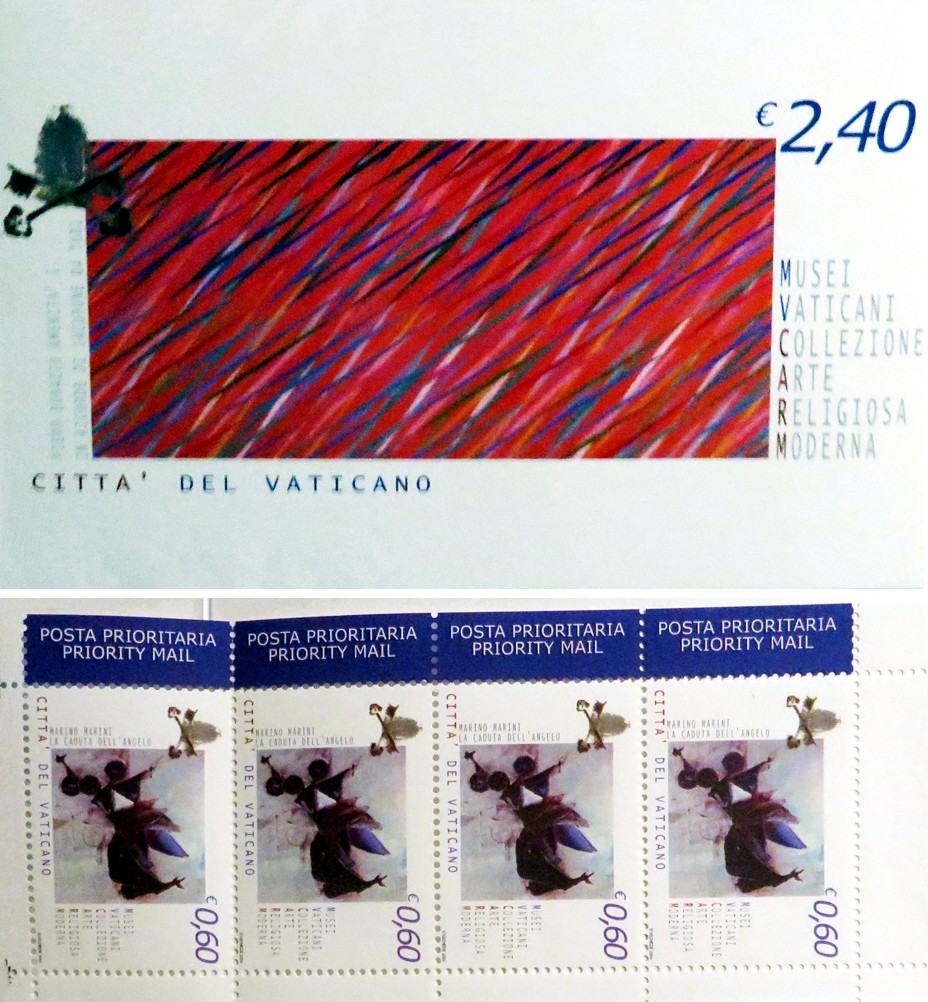




















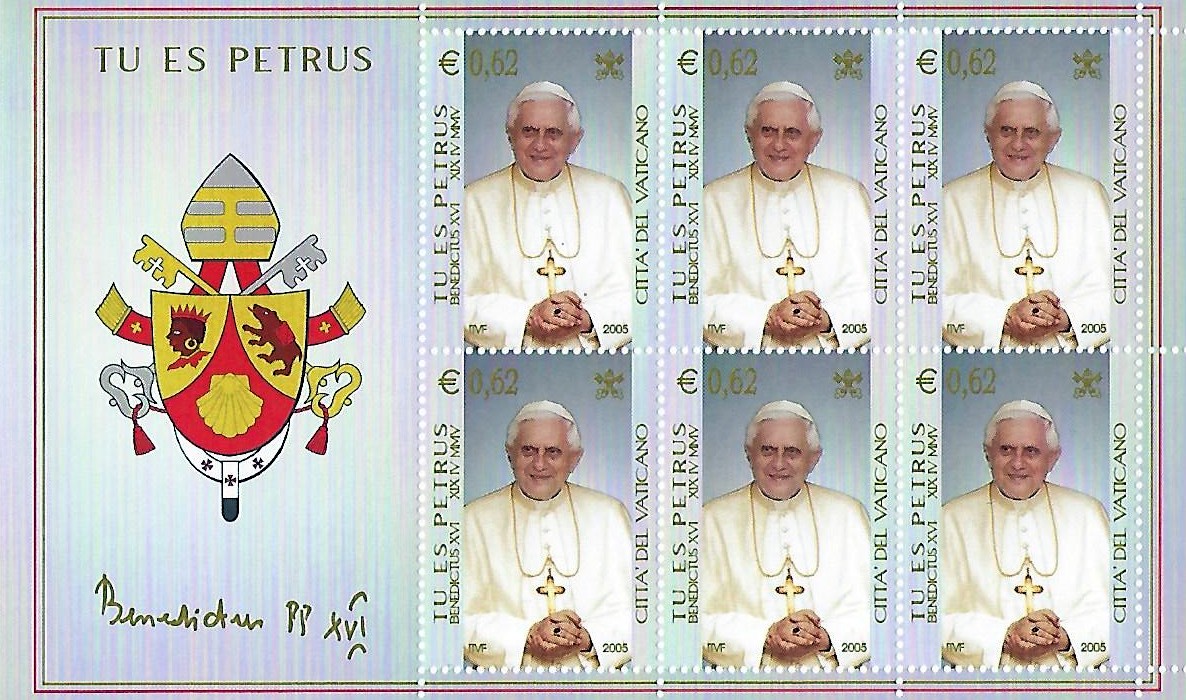

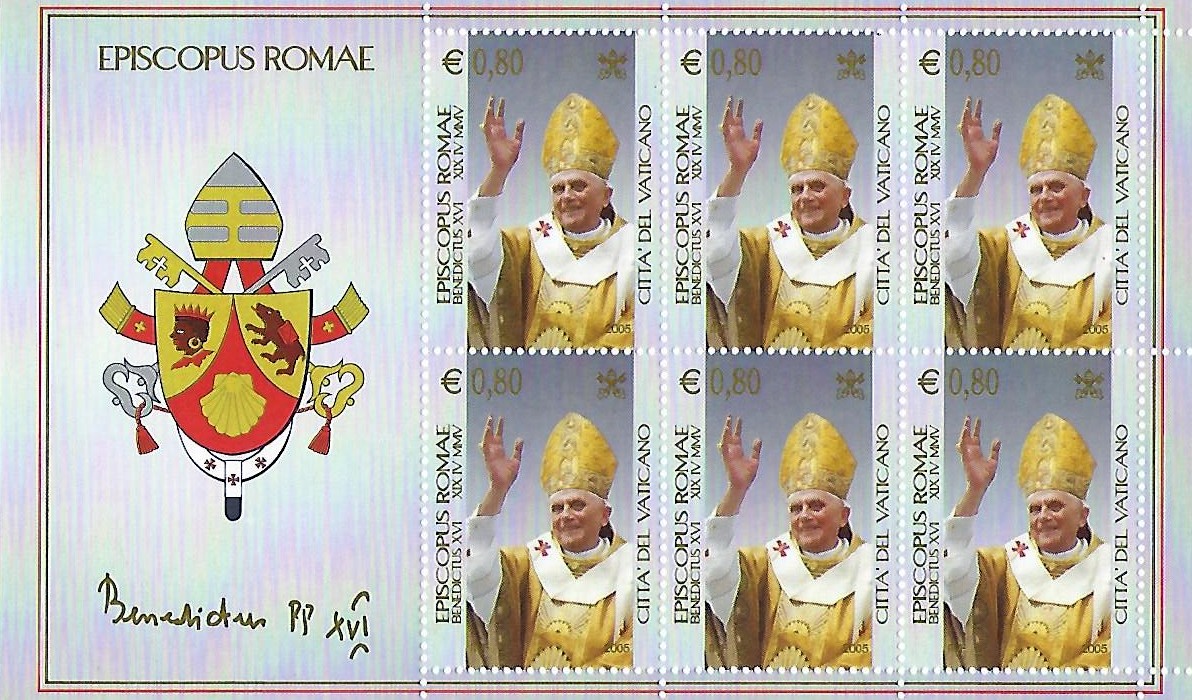
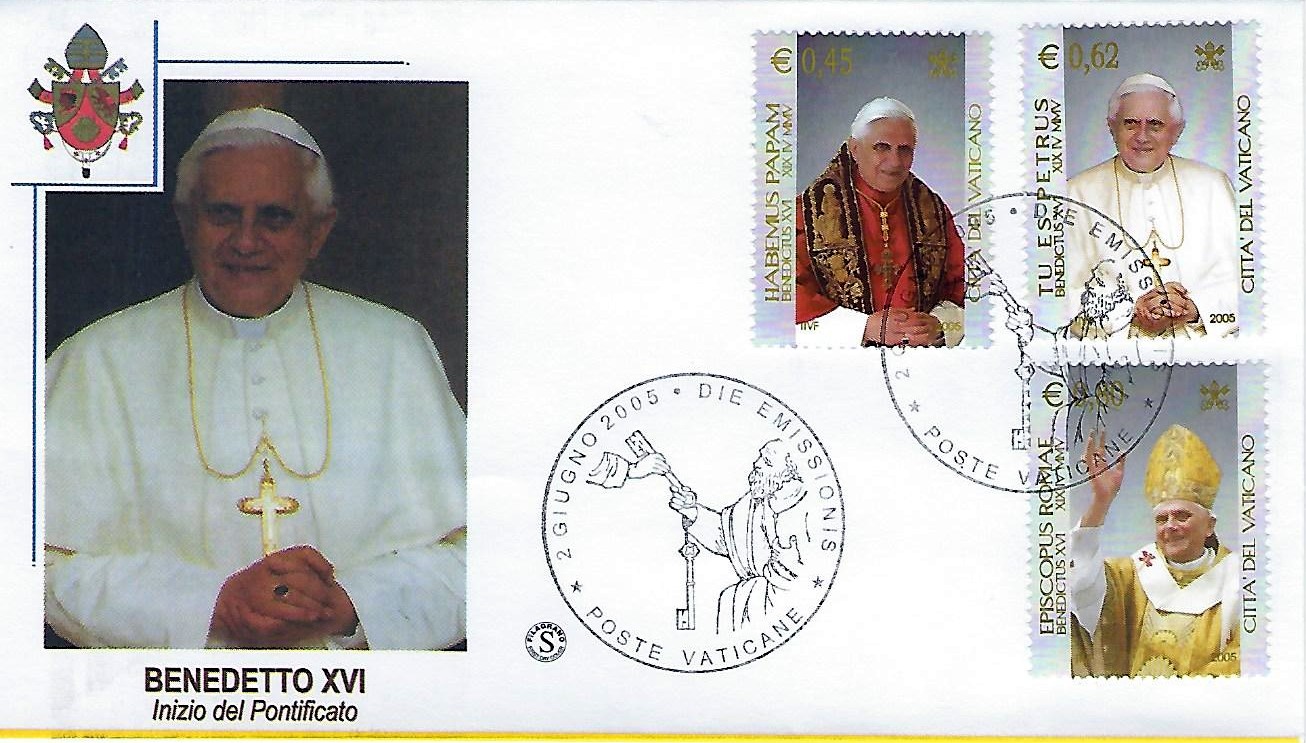







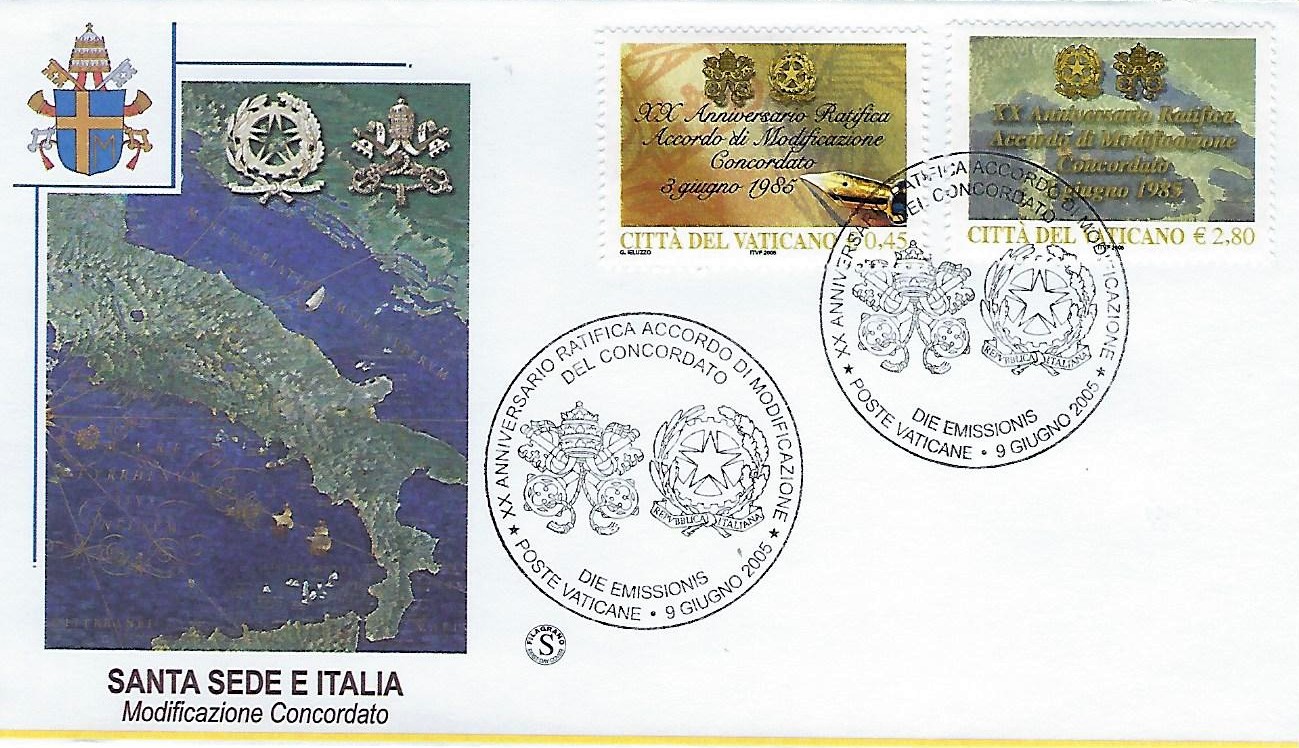
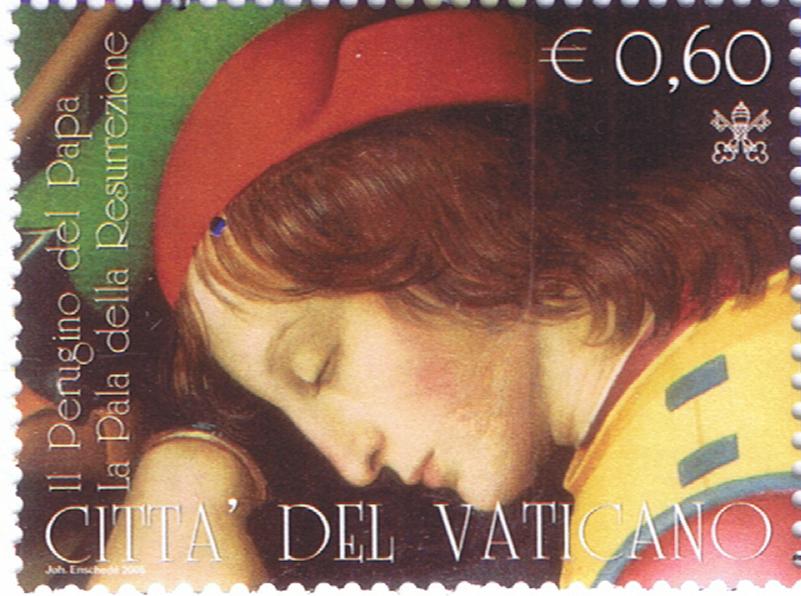
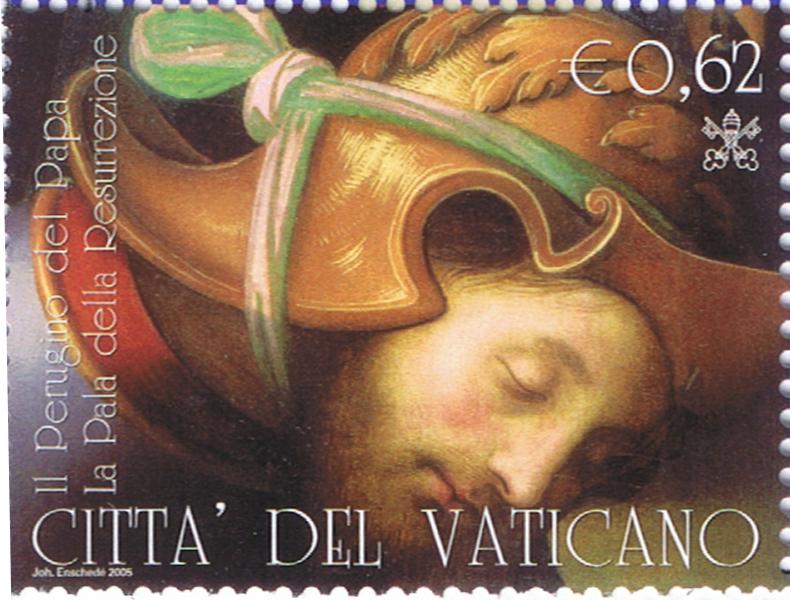

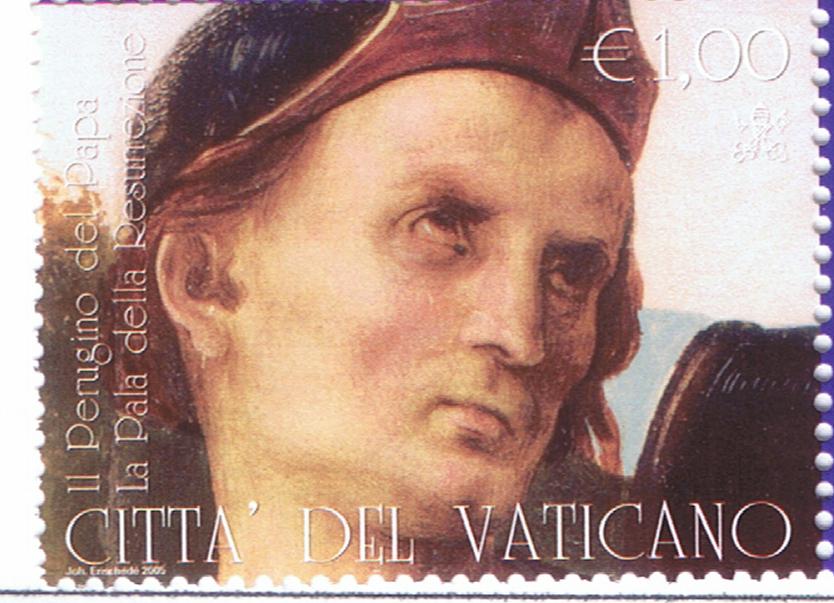

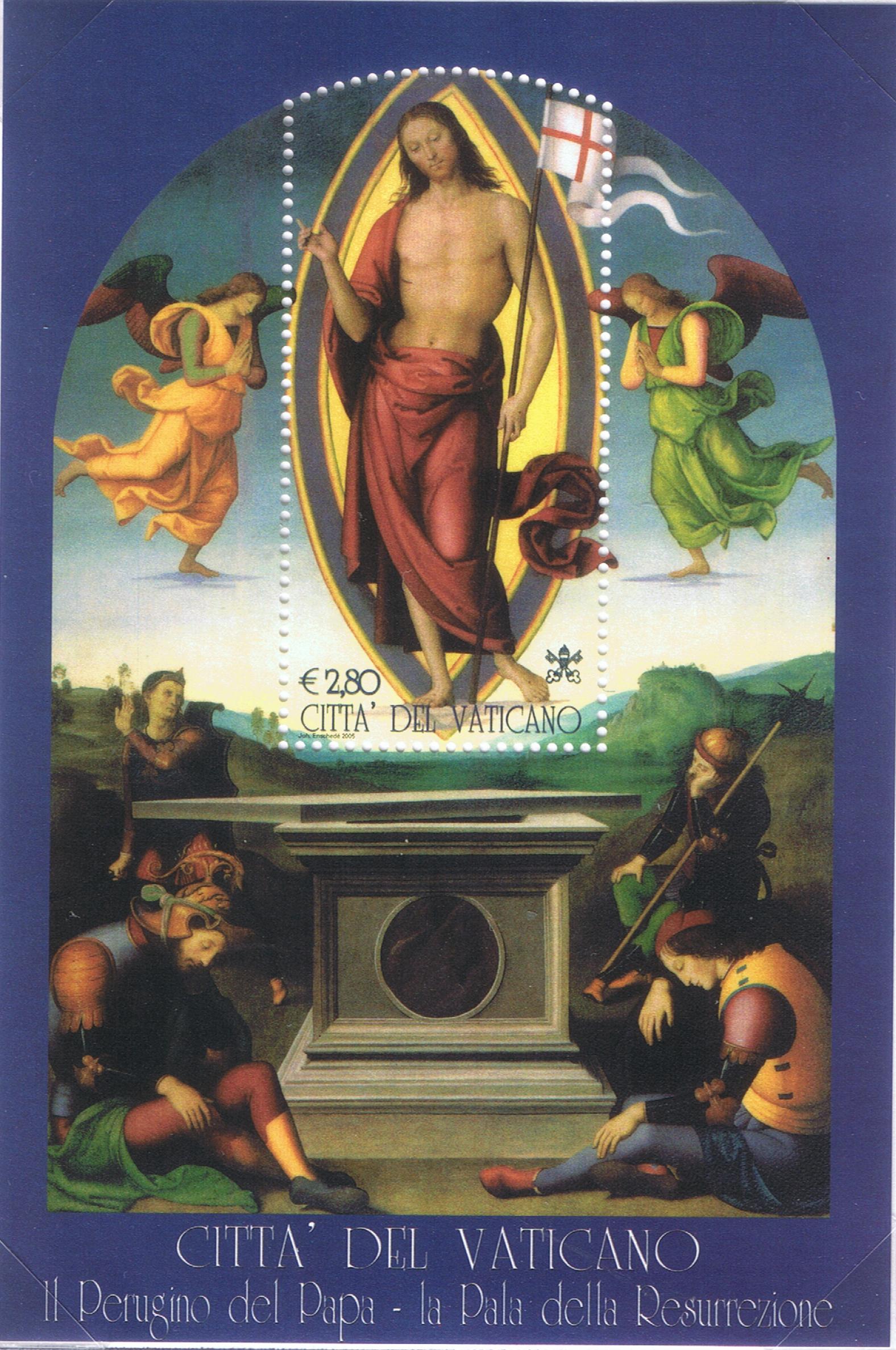


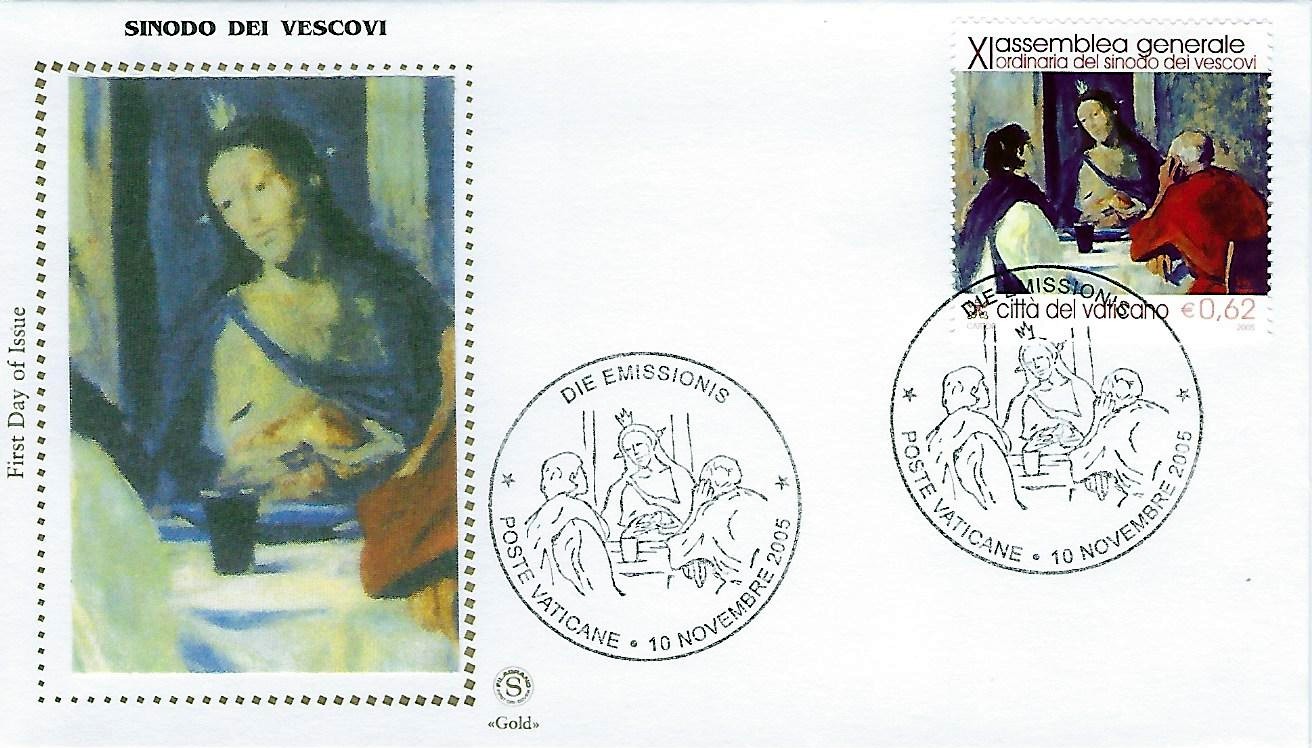


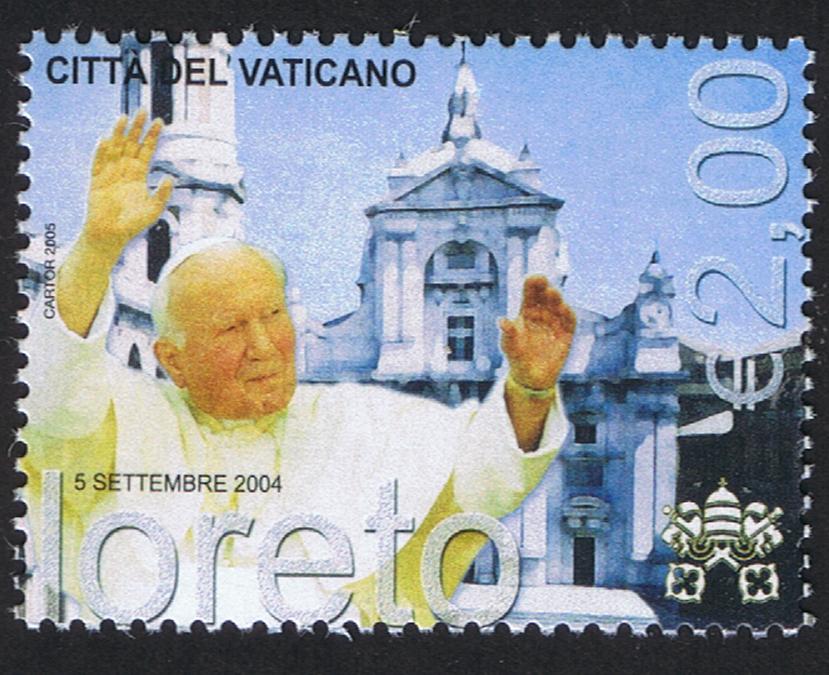
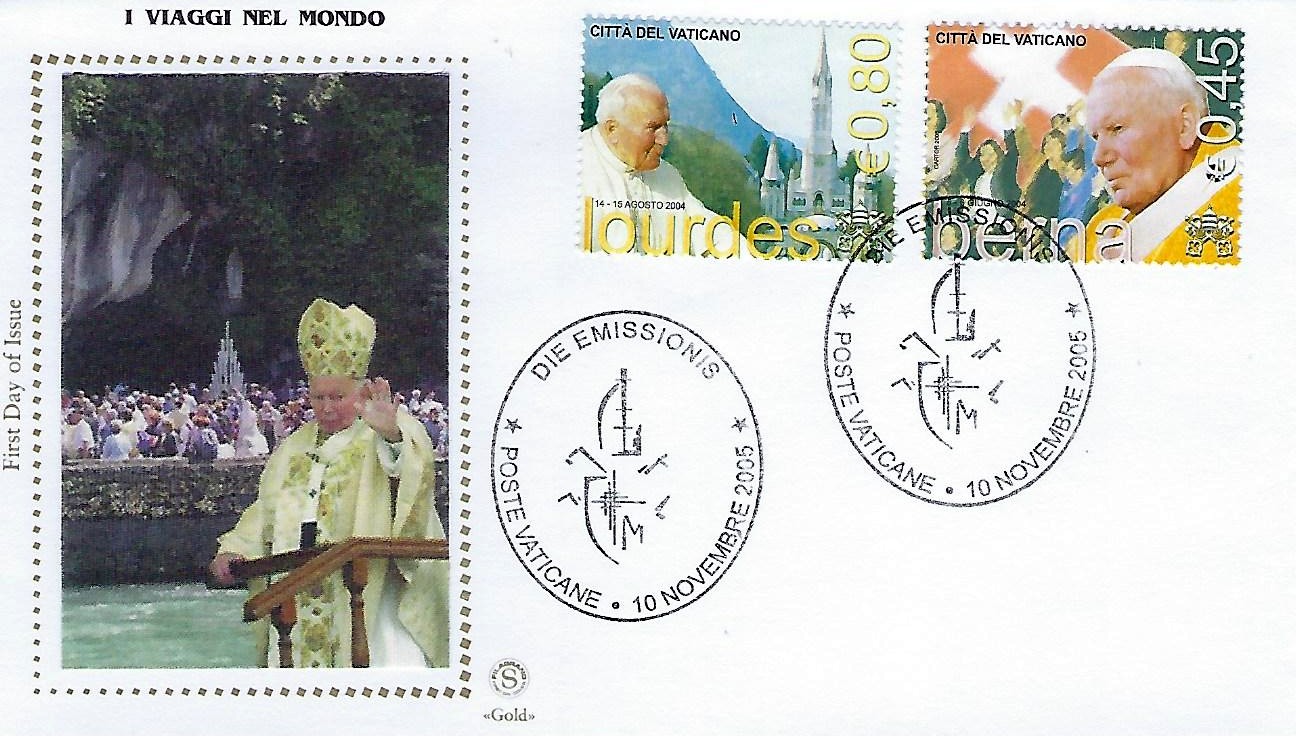

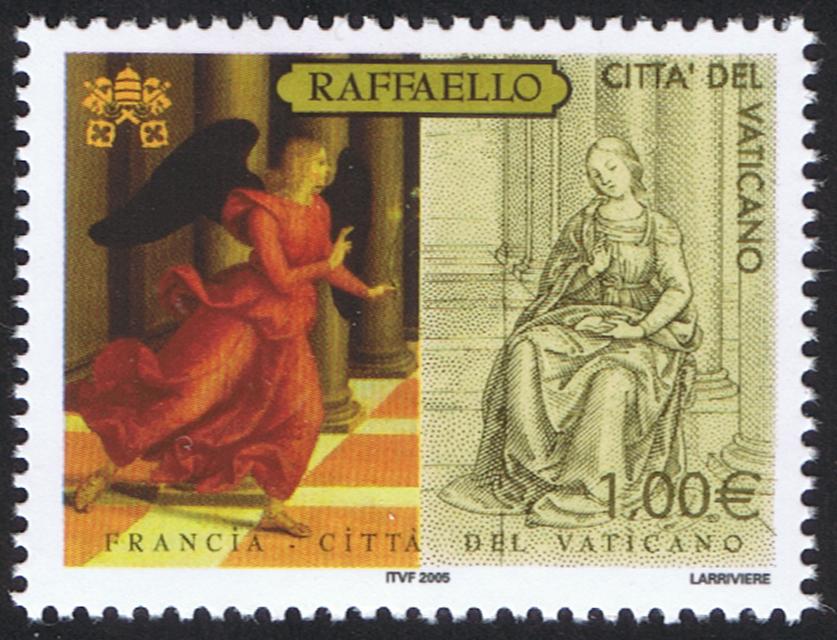




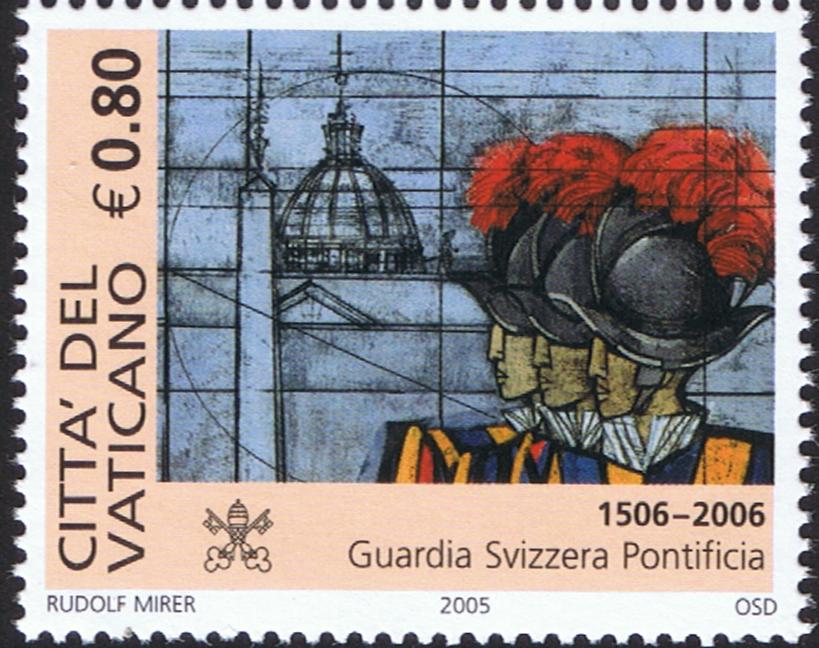
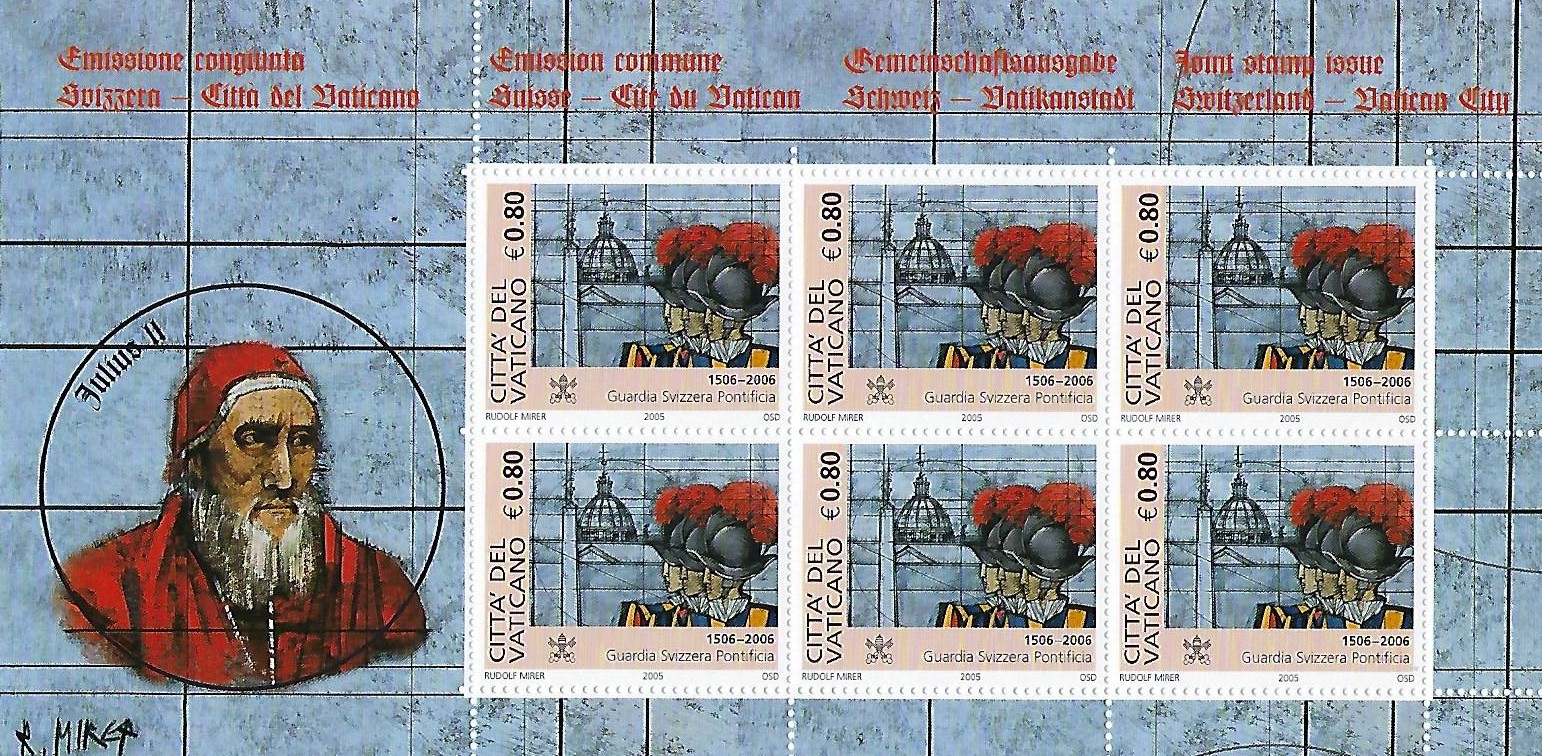
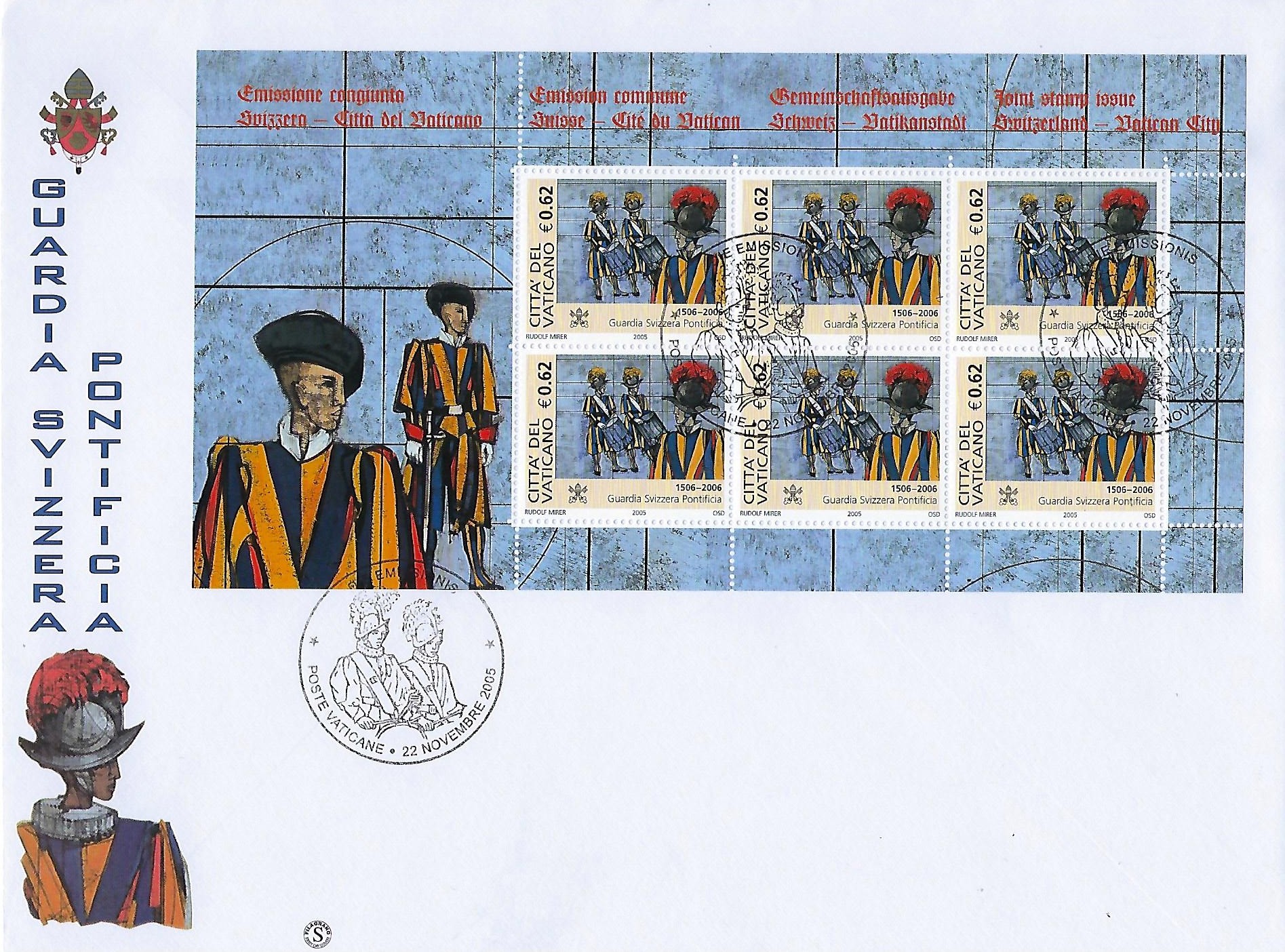


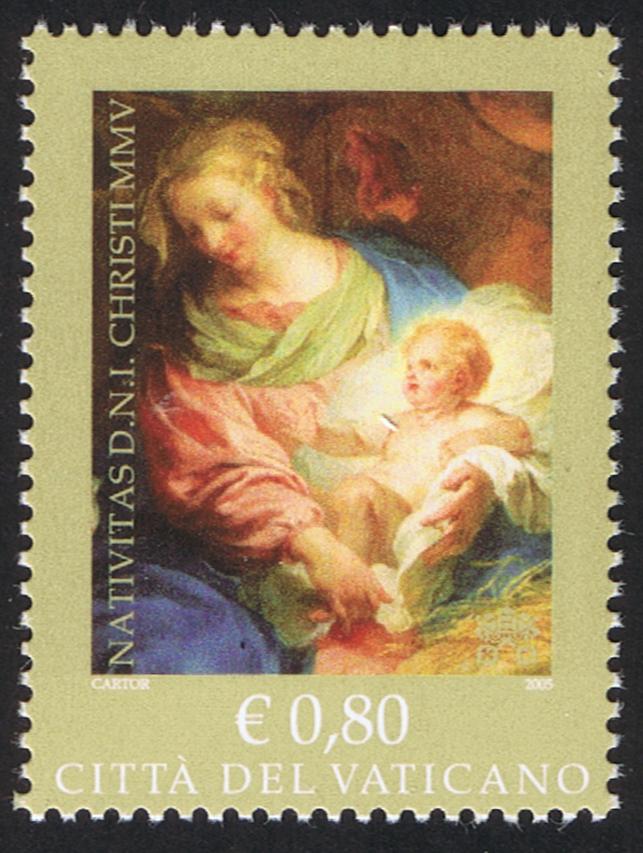











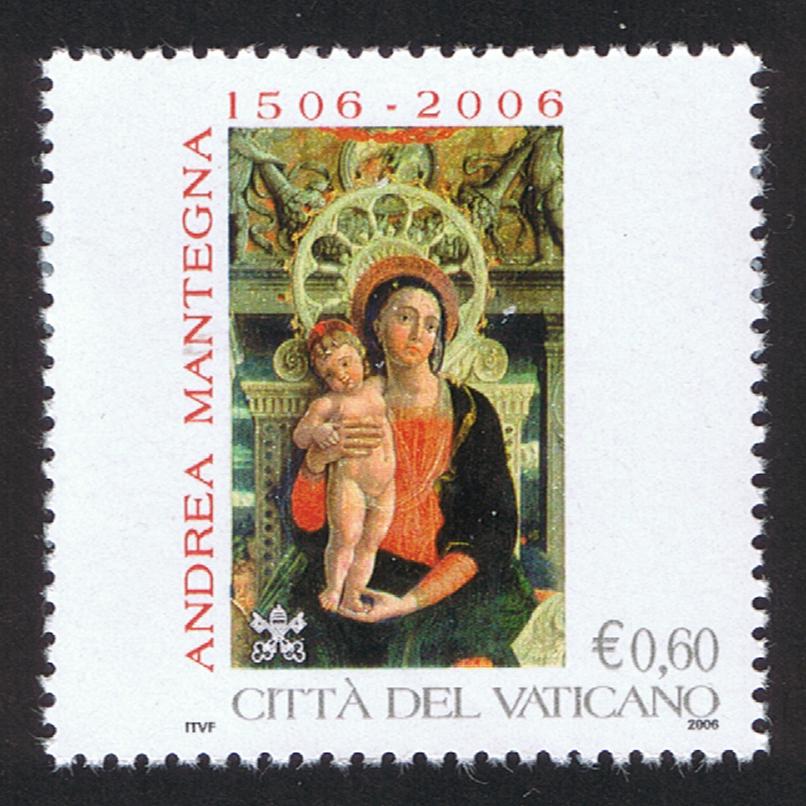

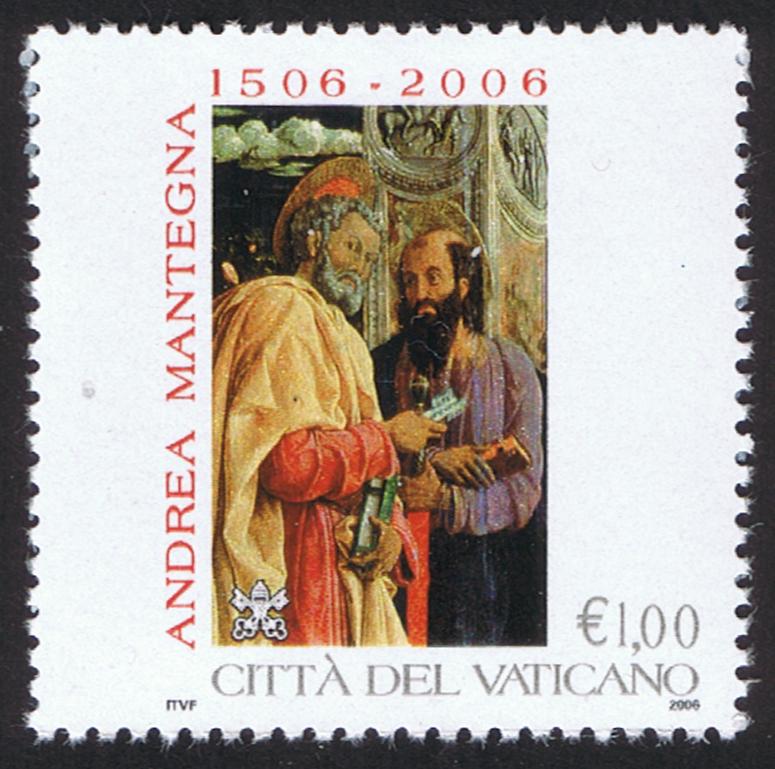
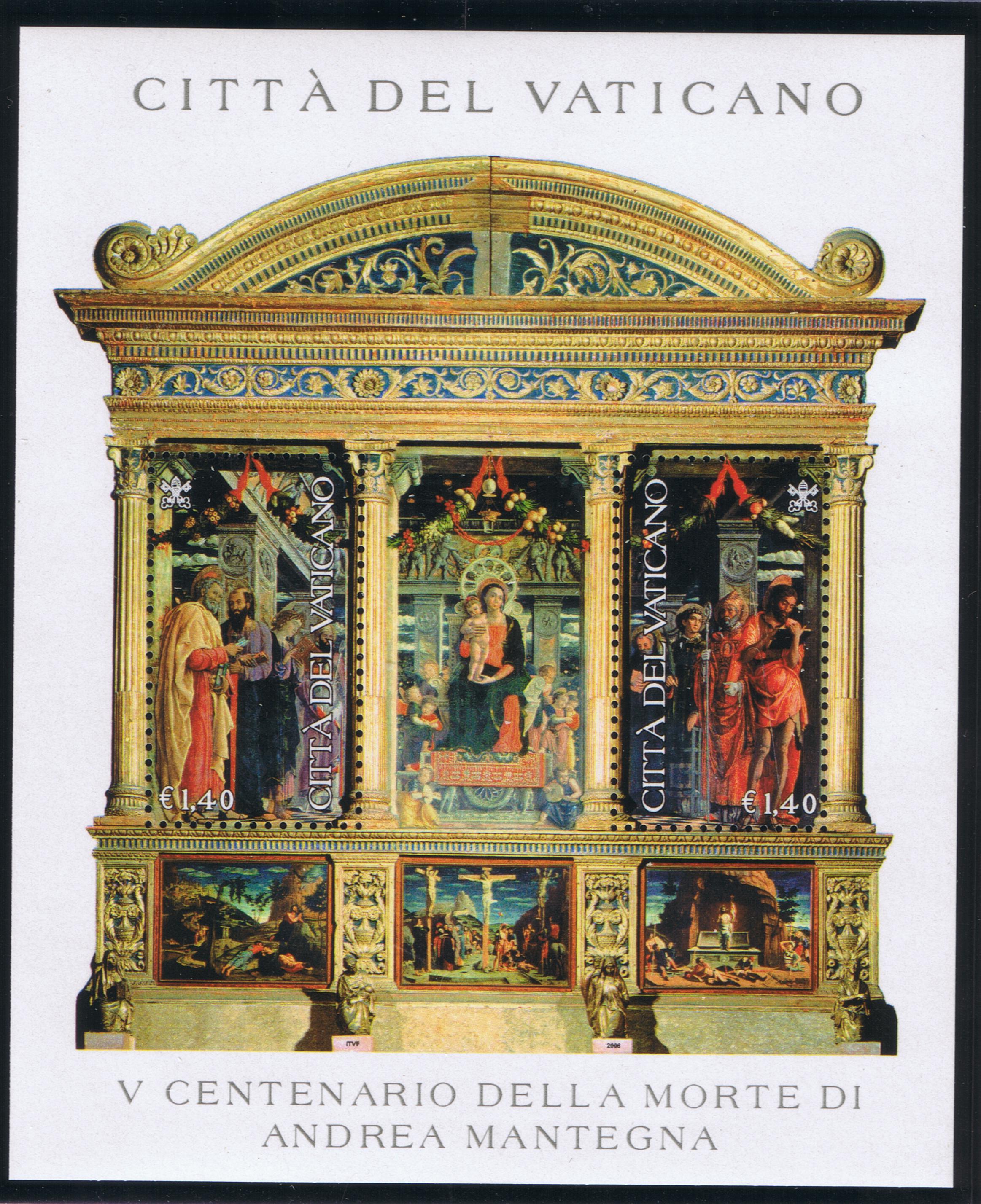

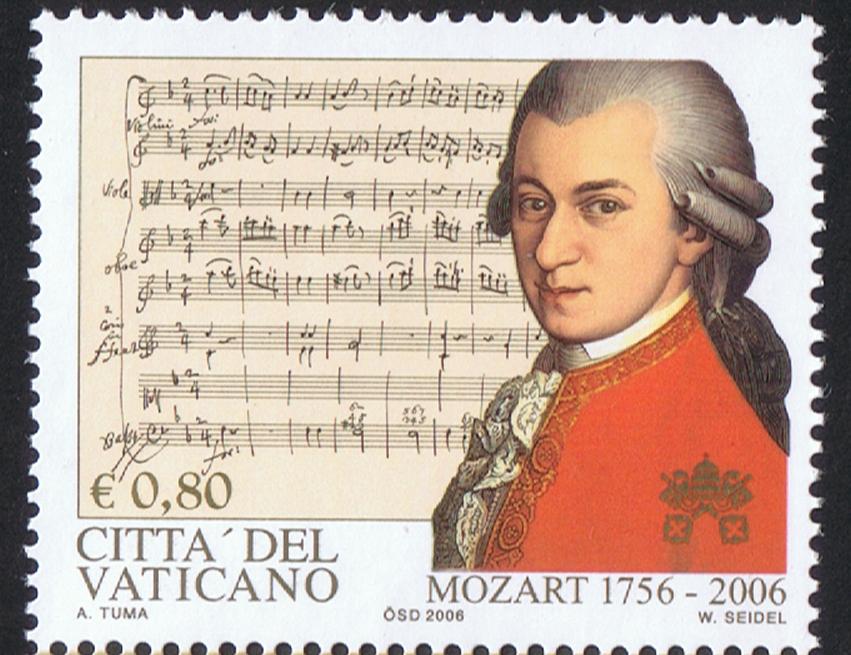



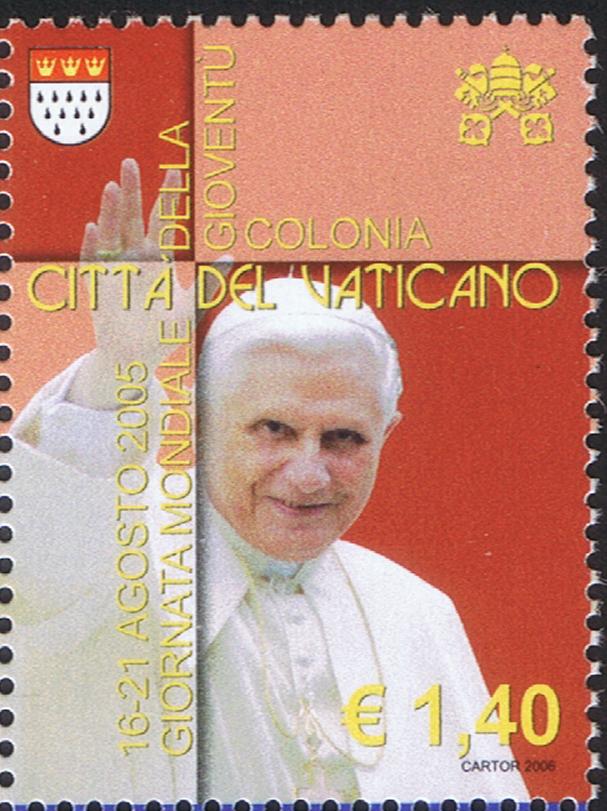

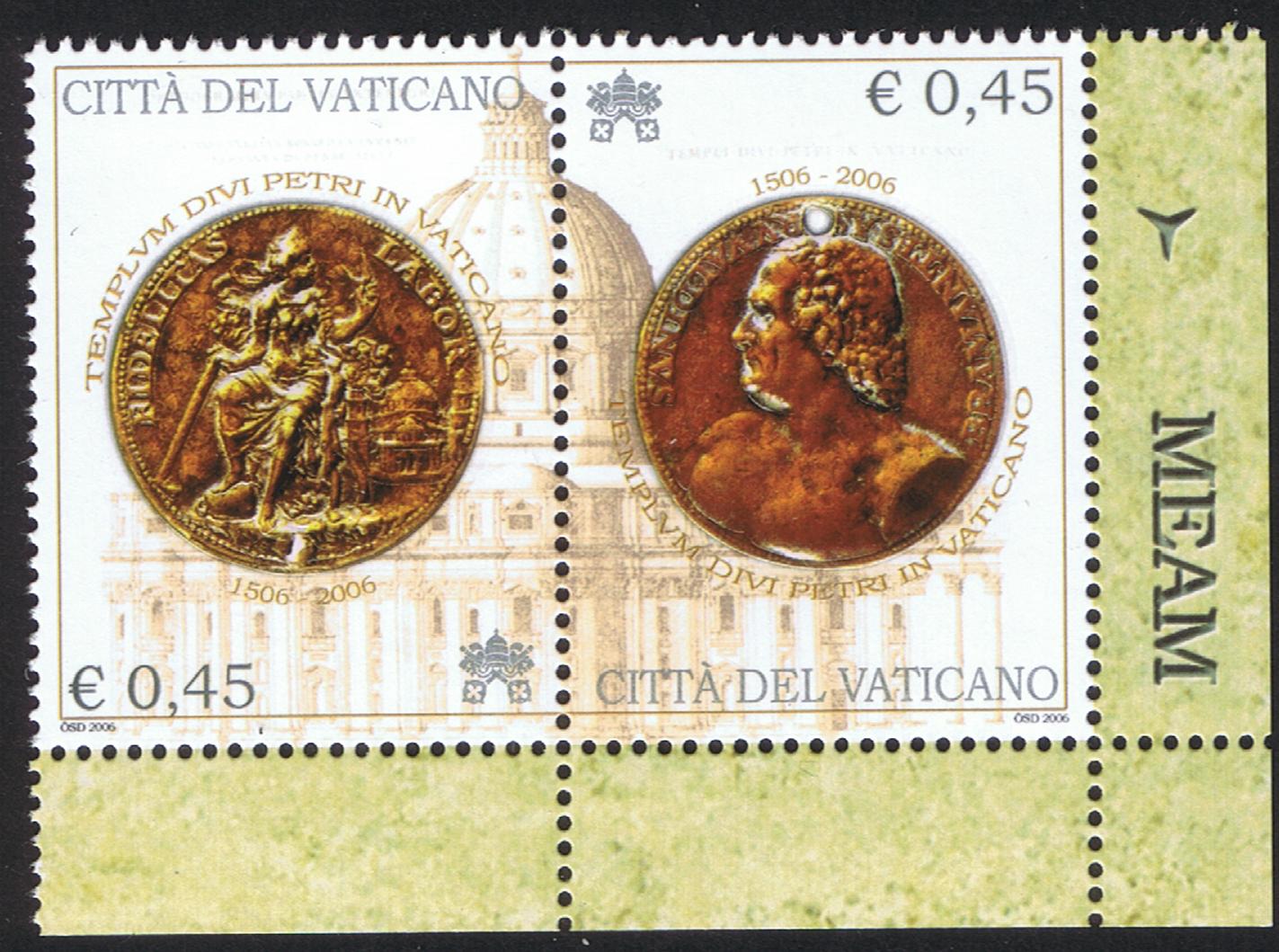
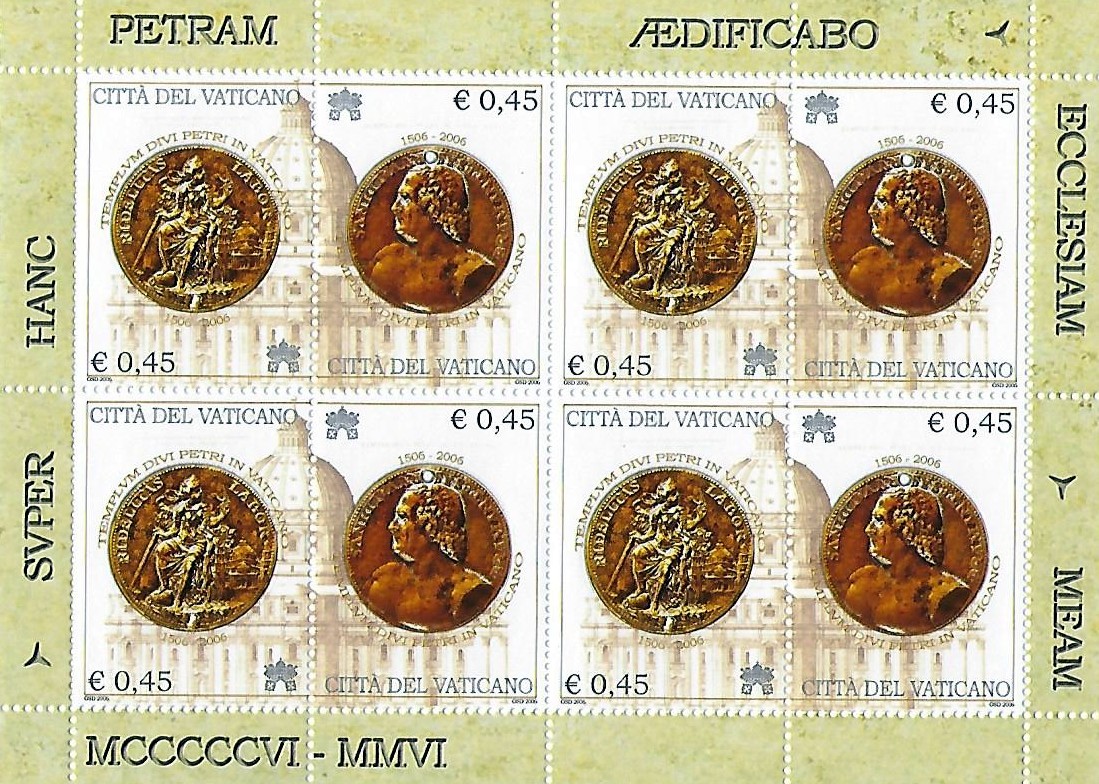
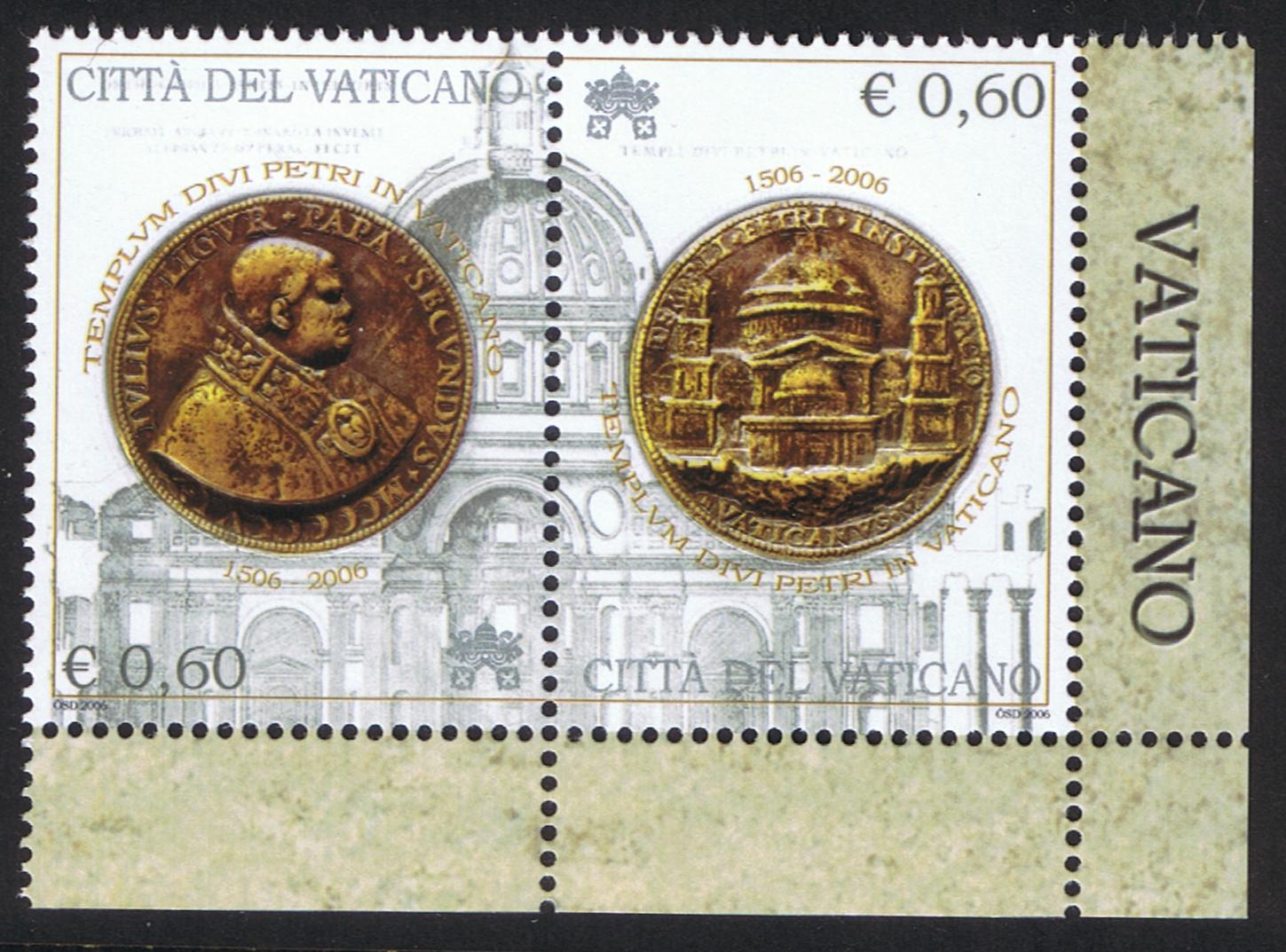
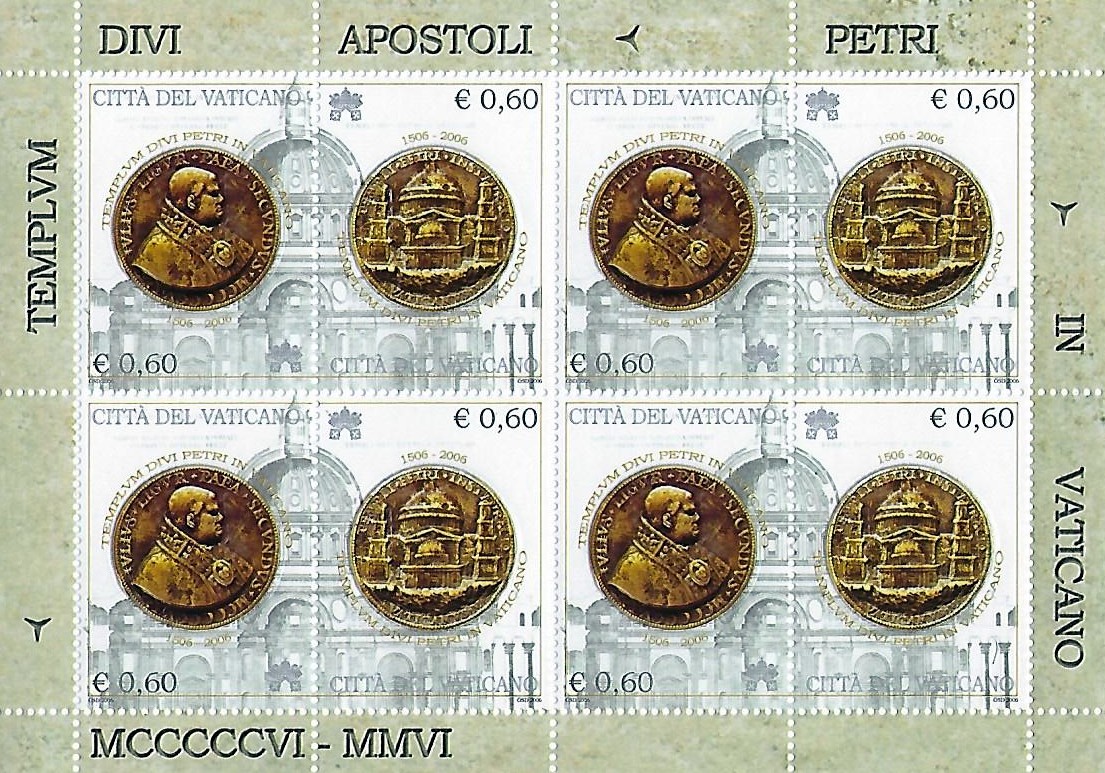










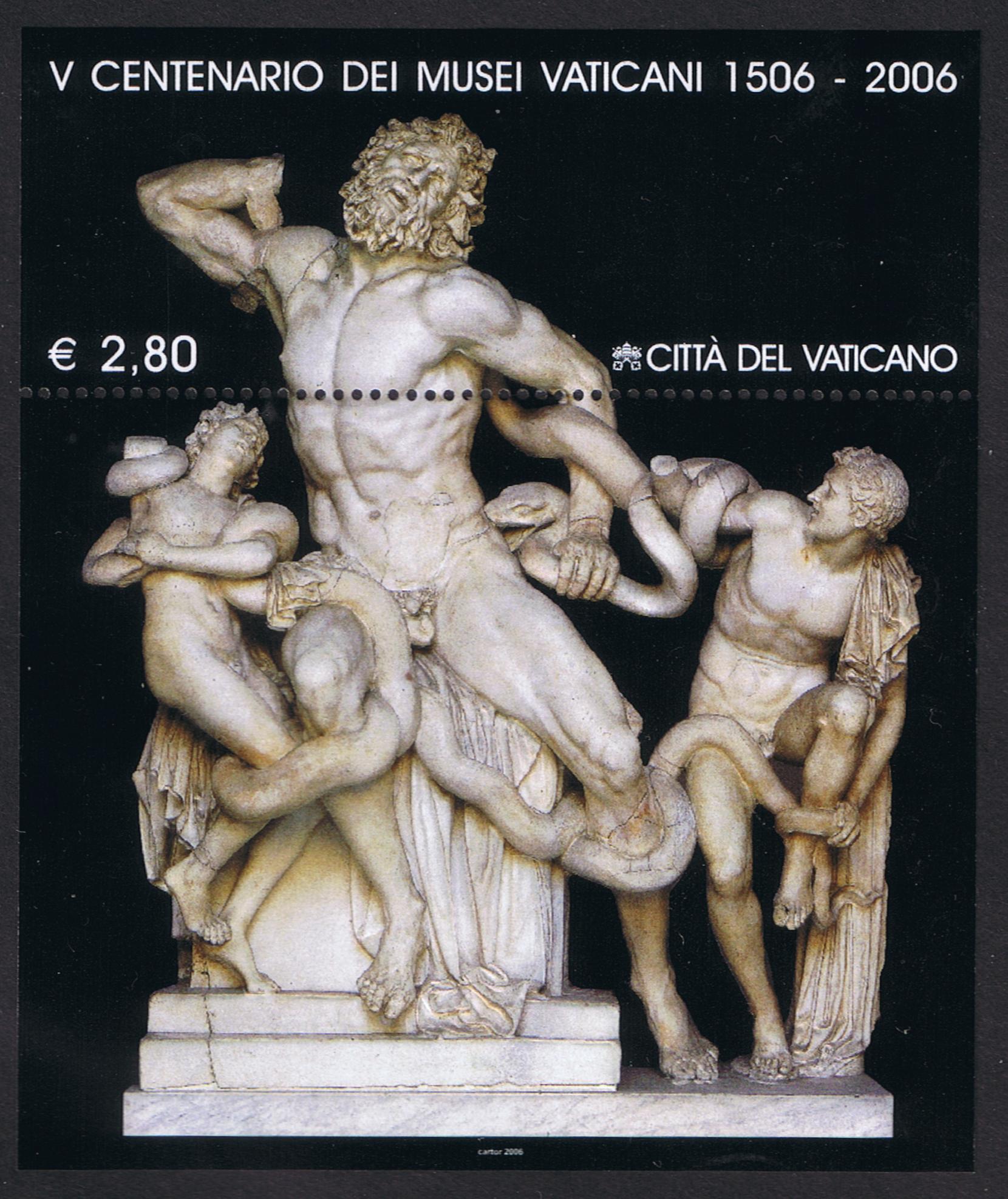



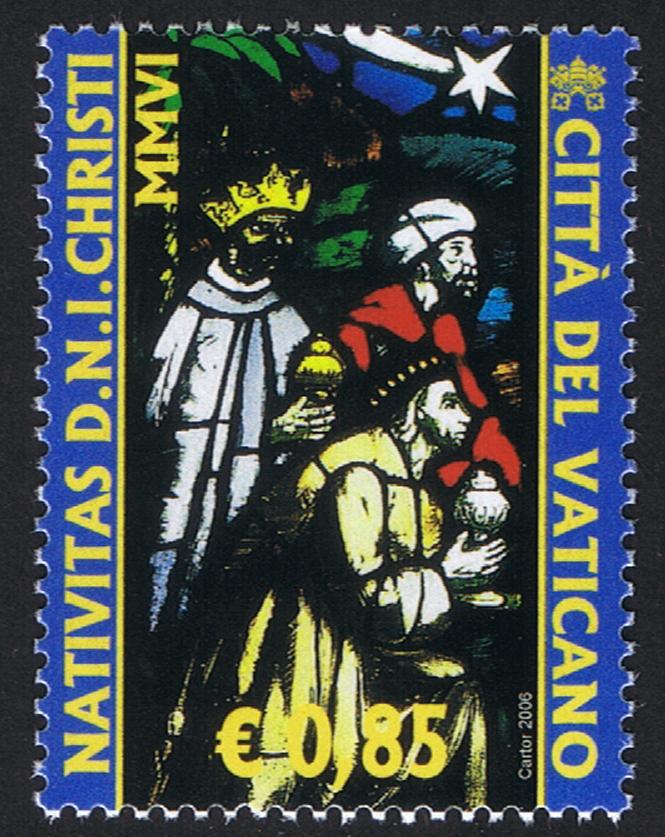








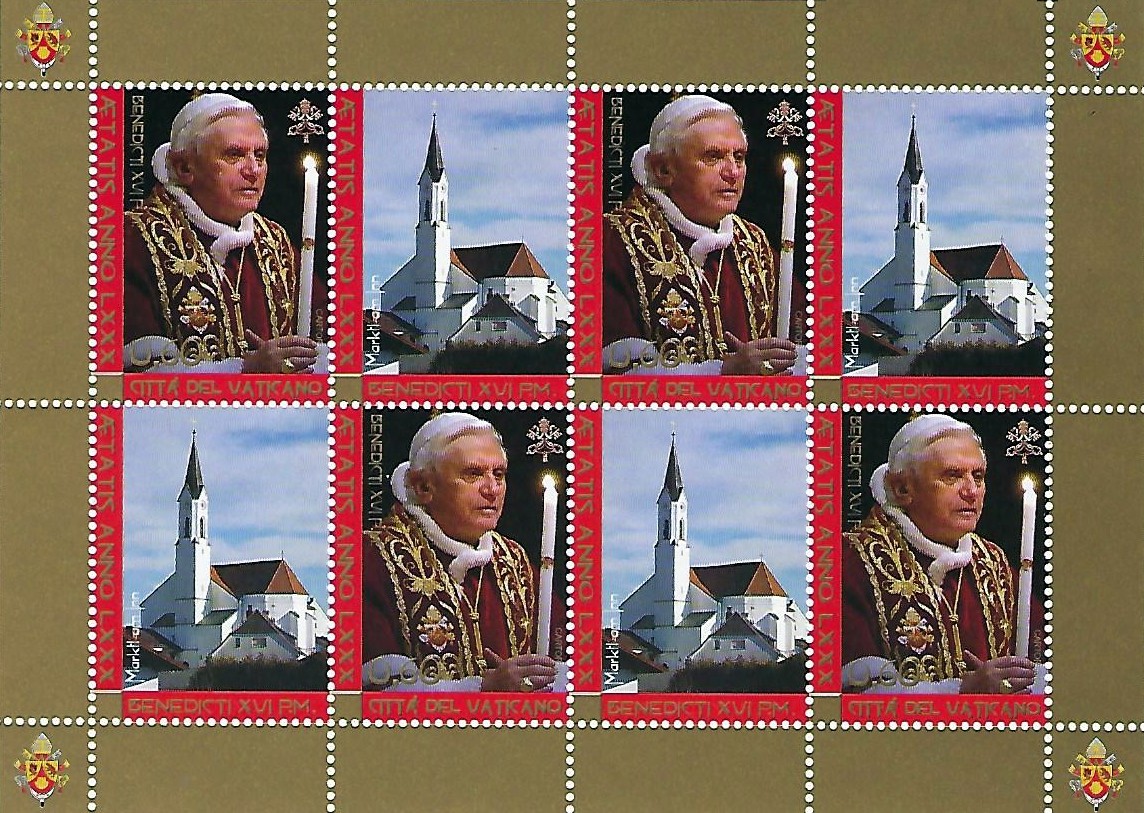

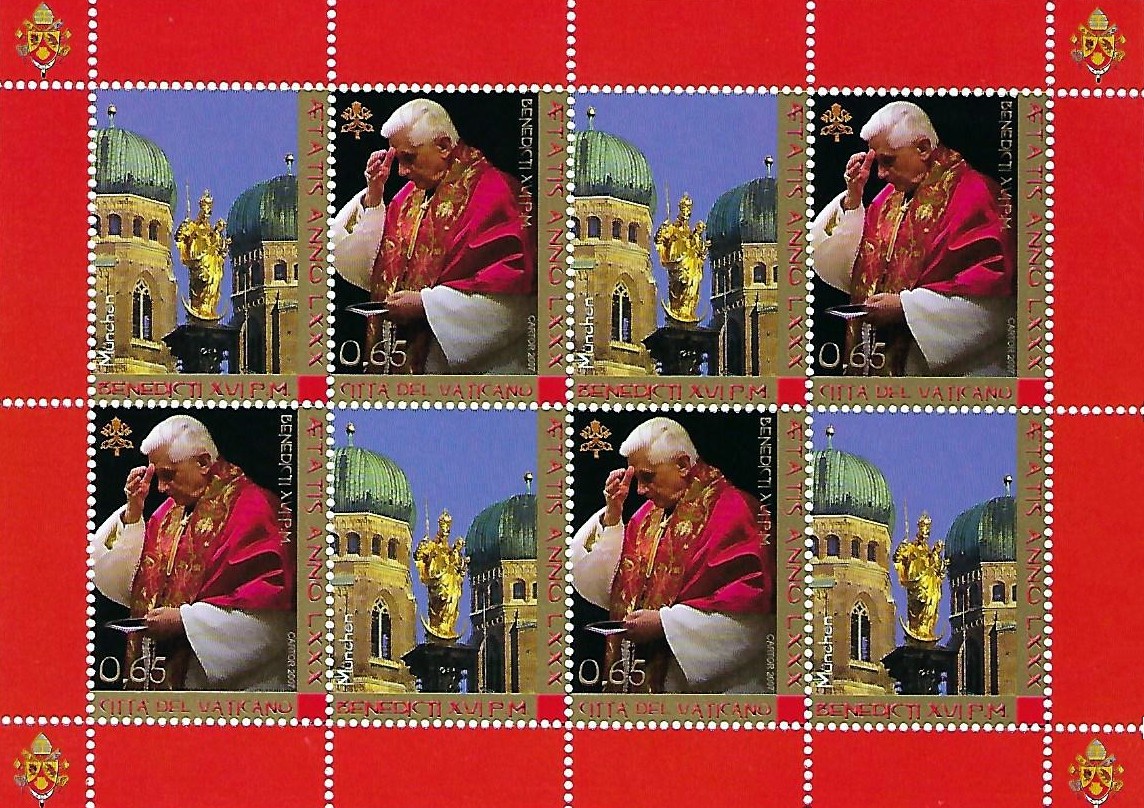







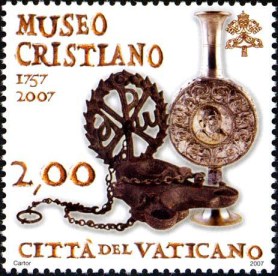

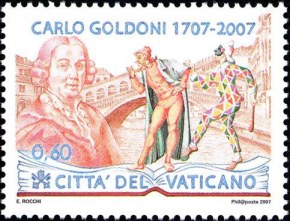
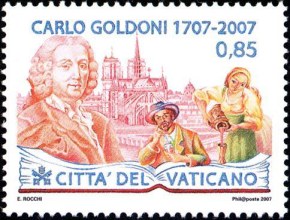
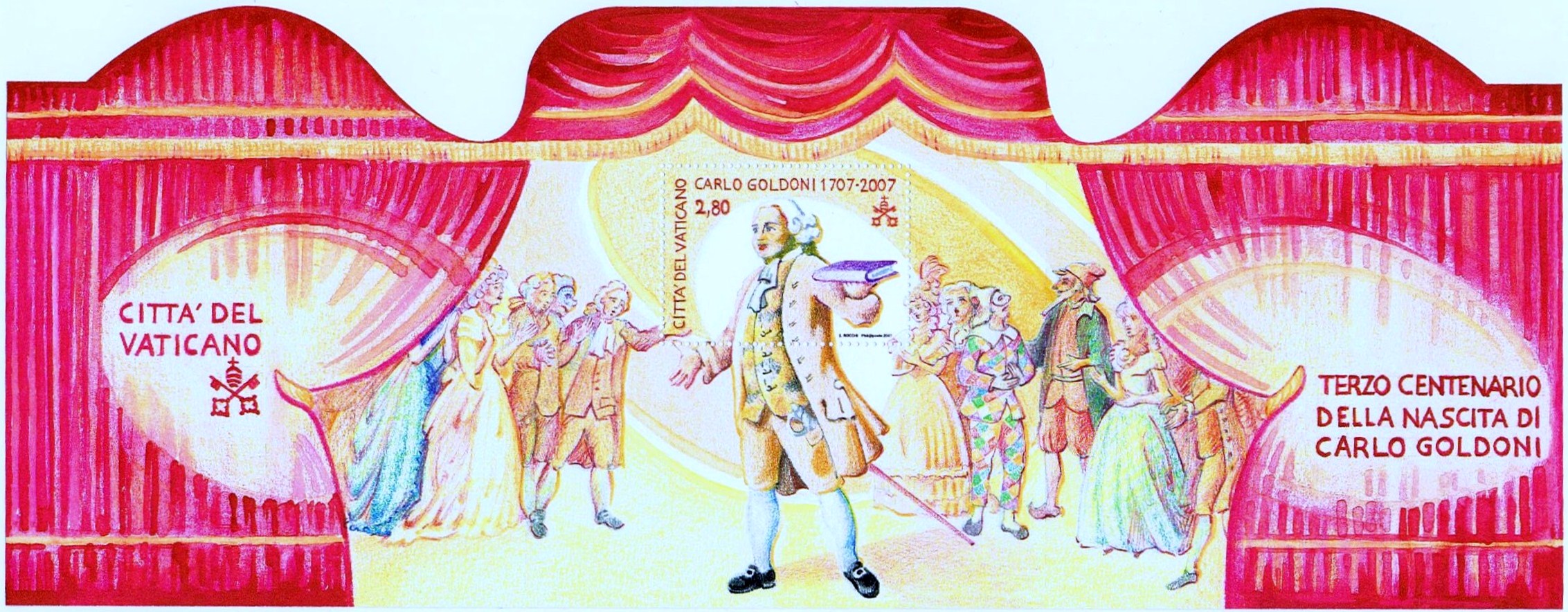

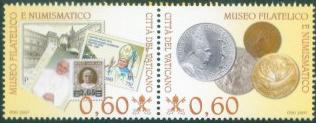
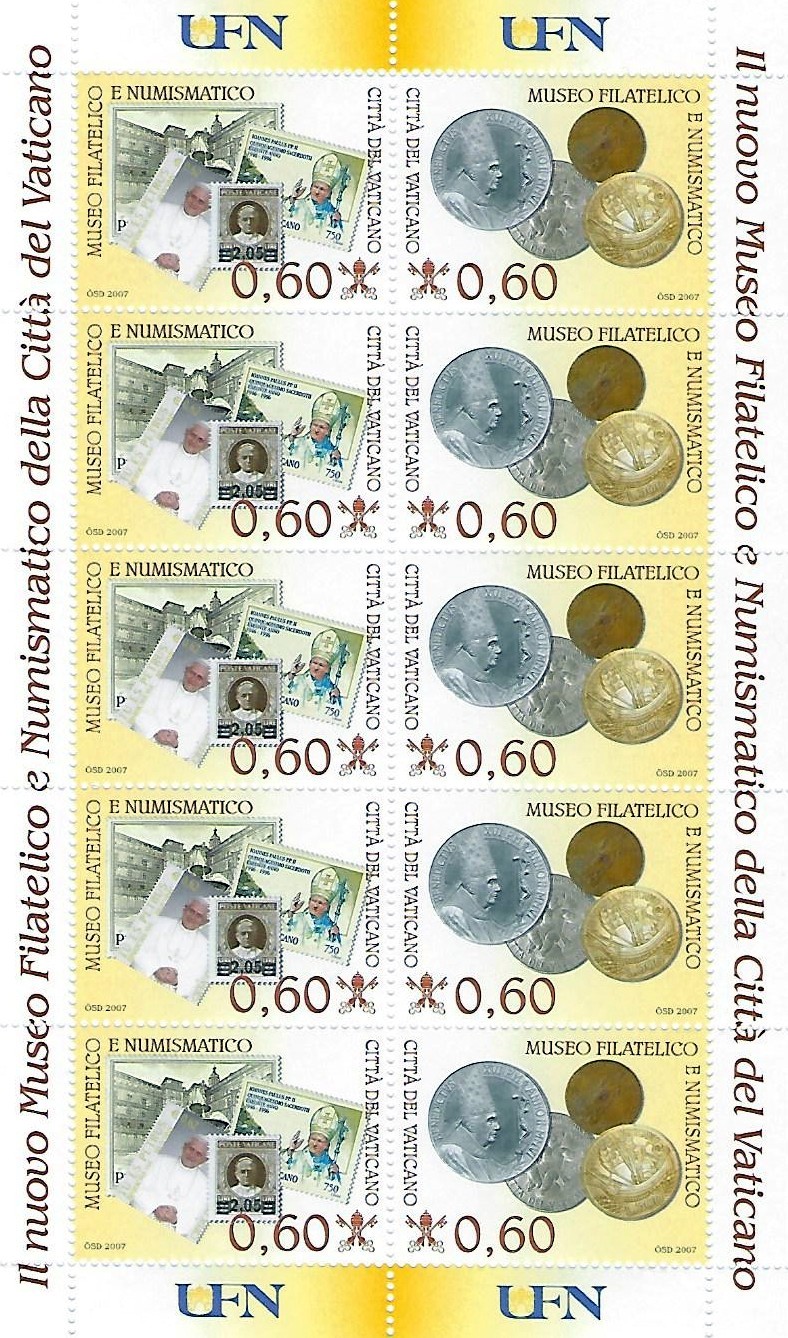



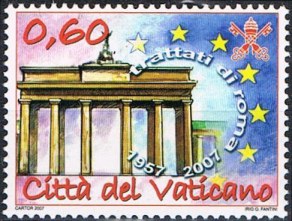

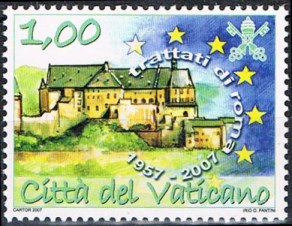






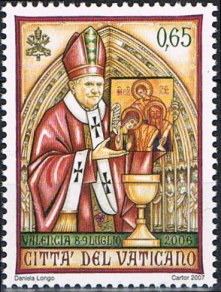


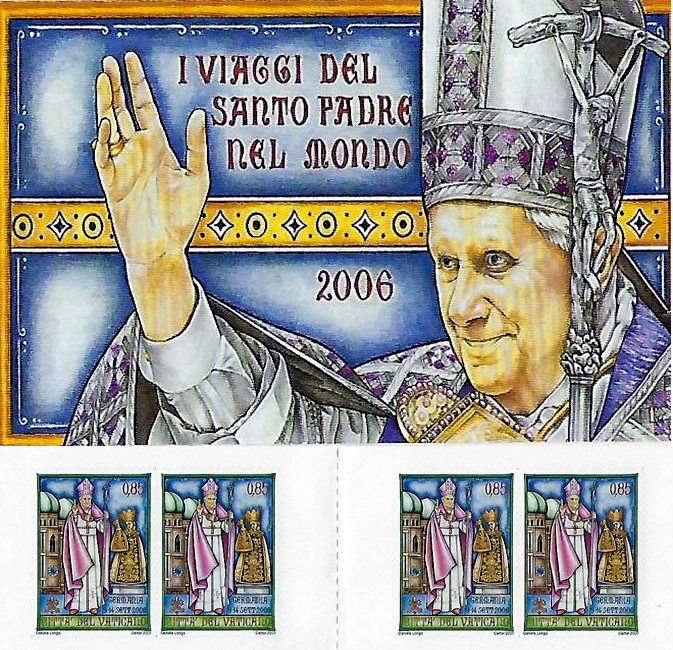















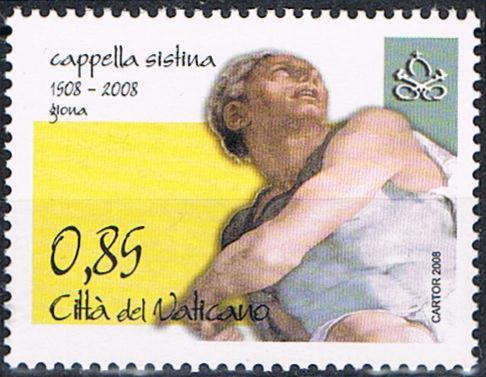
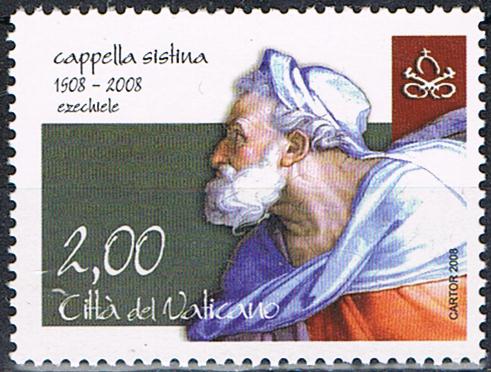

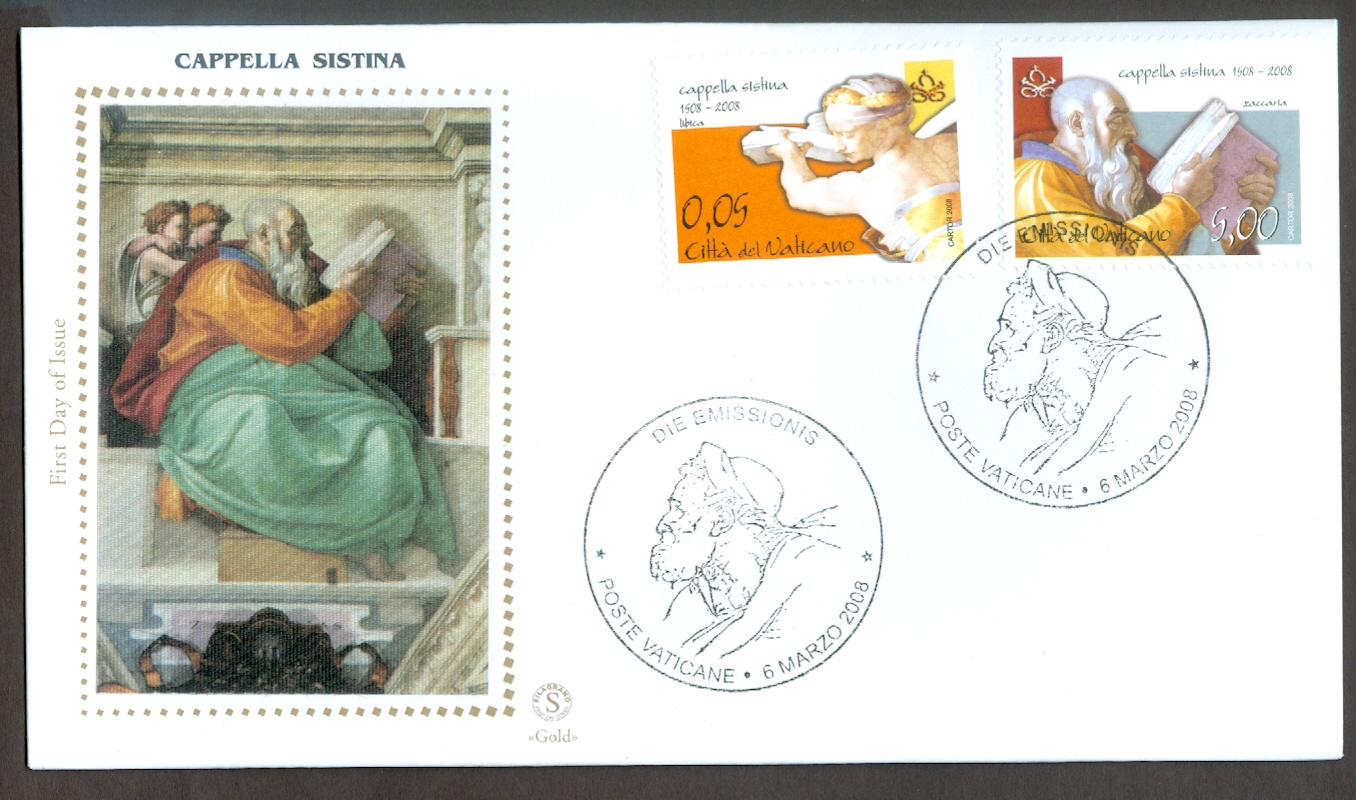









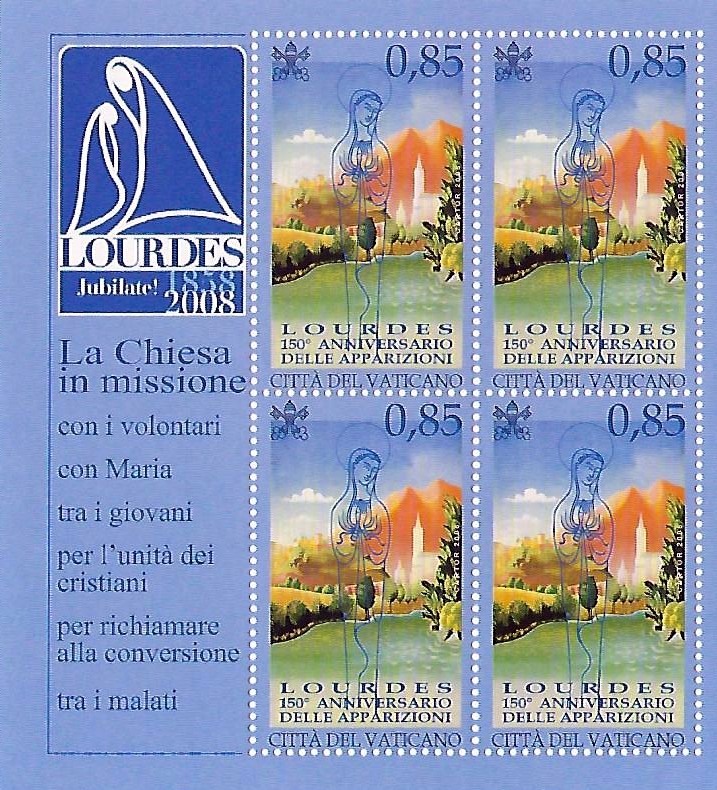


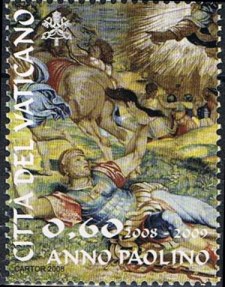


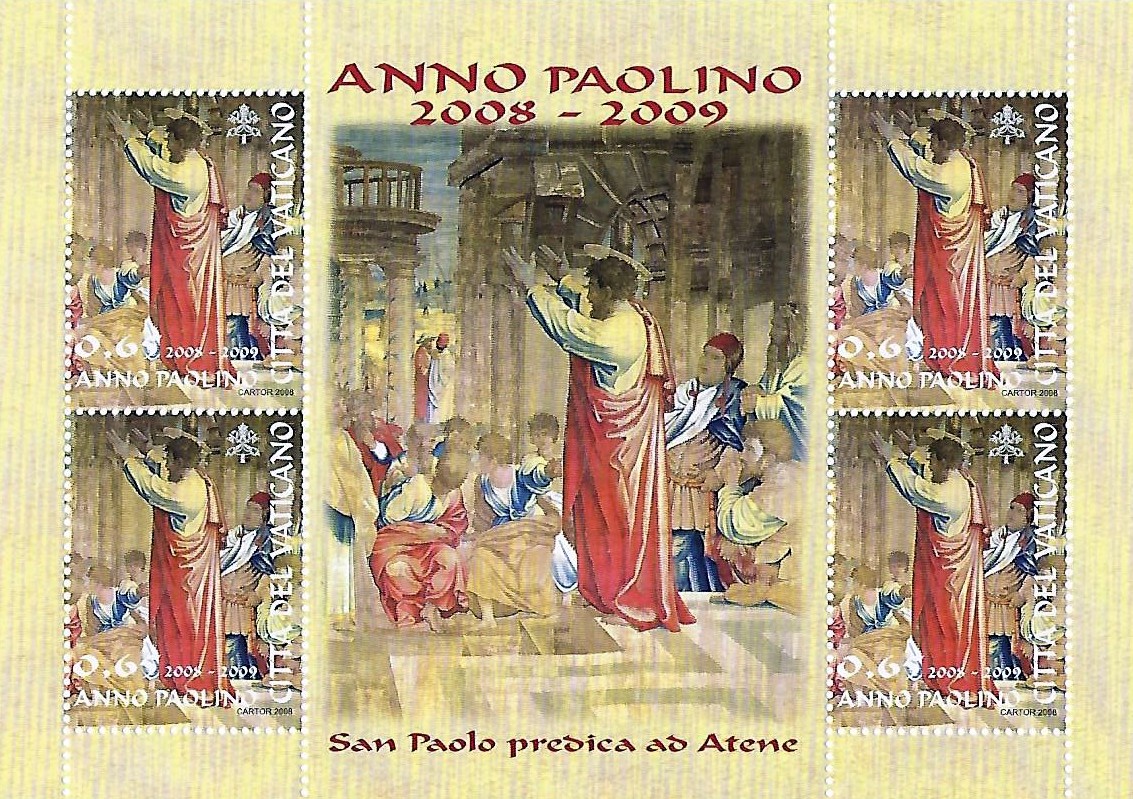
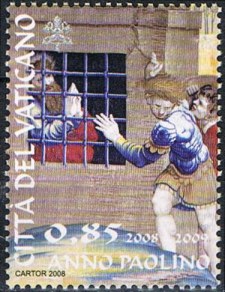
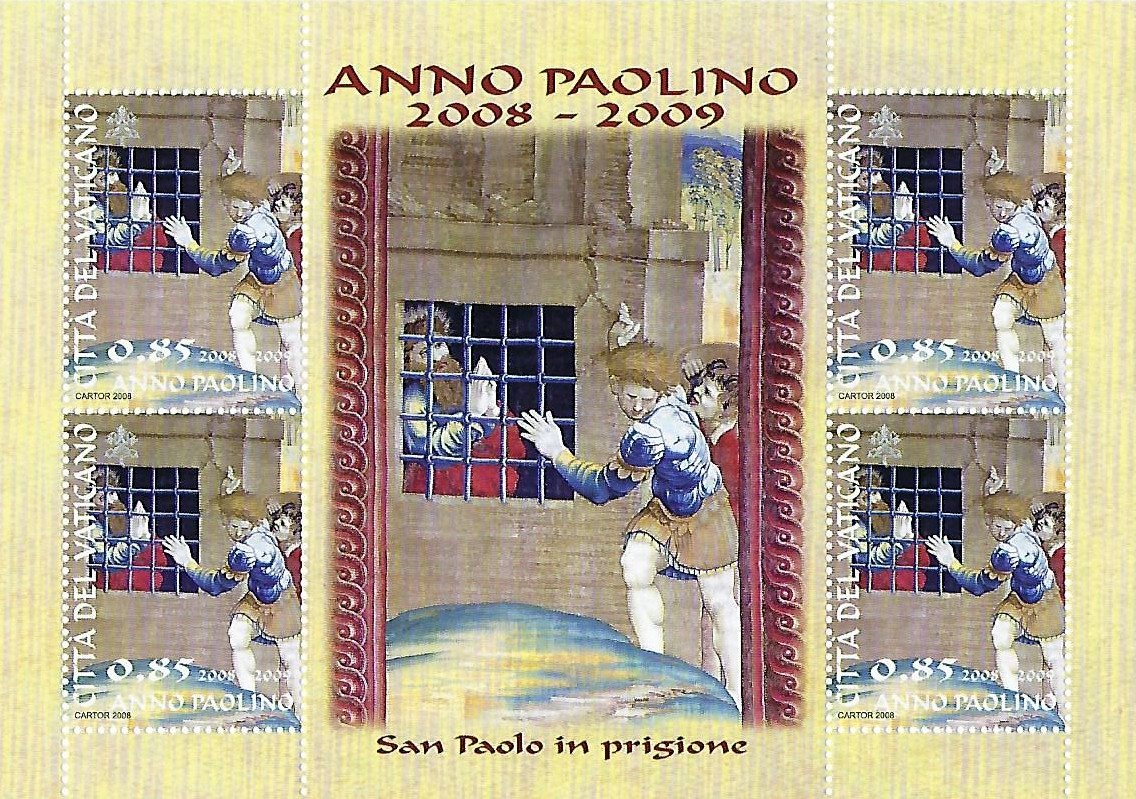


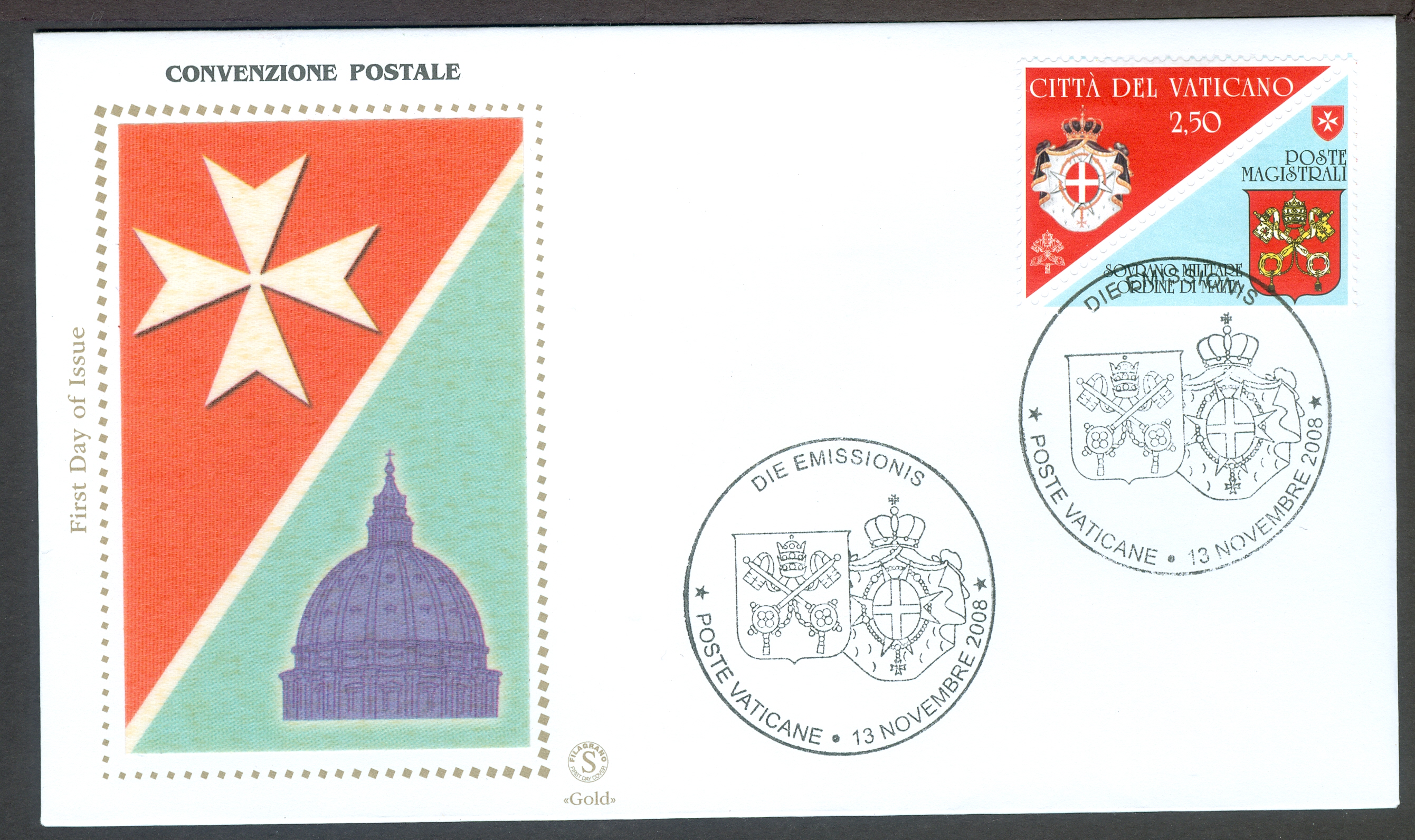



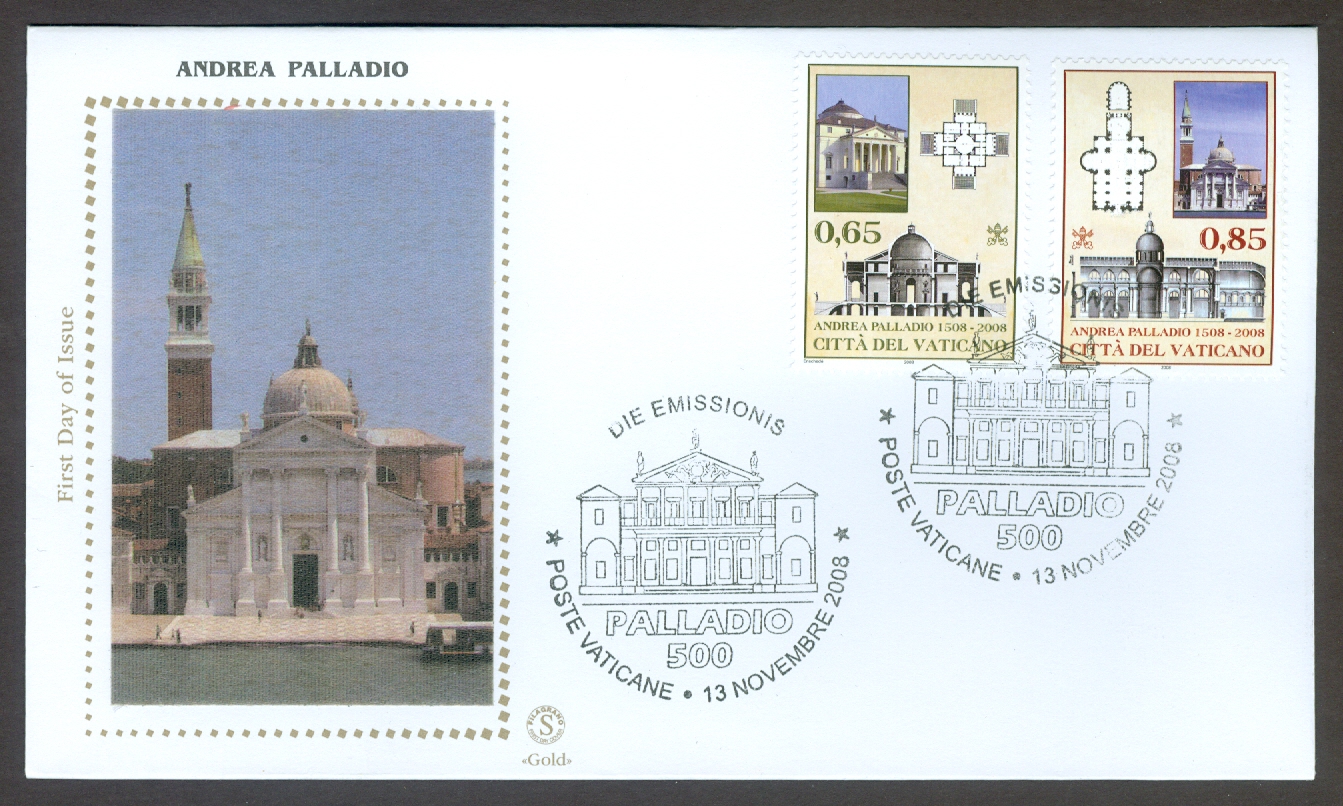















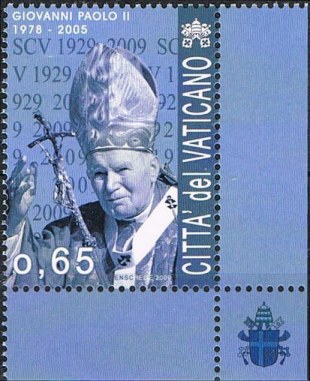






St. Francis of Rome
Born into a wealthy Roman family, Frances (1384-1440), wanted to become a nun but her family arranged a marriage with a military commander of papal troops in Rome, Lorenzo Ponziani. She possessed a zeal for the care of souls, the poor, and the sick. Her service occurred during years parts of Italy were devastated or neglected, during the tumultuous years of the Great Schism of the West and wars among various Roman states Rome. Her husband was wounded during one of these conflicts and she cared for him for the remainder of her life. Two of their children died from the plague. During this chaos, she and her hospital associates continued to care for the sick and poor in her change, often in her own home.
St Frances’ biography in the Catholic Encylcopedia describes her “advanced life of contemplation” and devotion, stating, “Her visions often assumed the form of drama enacted for her by heavenly personages. She had the gifts of miracles and ecstasy, as well as the bodily vision of her guardian angel, had revelations concerning purgatory and hell, and foretold the ending of the Western Schism. She could read the secrets of consciences and detect plots of diabolical origin. She was remarkable for her humility and detachment, her obedience and patience….”
In 1425 she founded the Olivetan Oblates of Mary, a confrateernity of pious women who did not take vows but servied the needs of the poor and sick. In 1433 this became a religious congregation with private vows under papal approval, and later known as the Oblates of St. Francis of Rome. She was canonized in 1608. St. Frances is known as the patron saint of ambulance drivers because of a legend that an angel held a latern to light her path while seeking out caring for the sick. She is also the patron of Benedictine Oblates.
Stamp Link:
Scott 1413-1414 (2009) which depict miracles of healing and the ‘miracle of the grapes’, events during her life.
Article Links:
• James Hamilton,“2009 Vatican New Issues: A Look Back” :
Vatican Notes, Vol. 58, No. 345 pp. 10-11 (2010)
(Author - James C. Hamilton, )



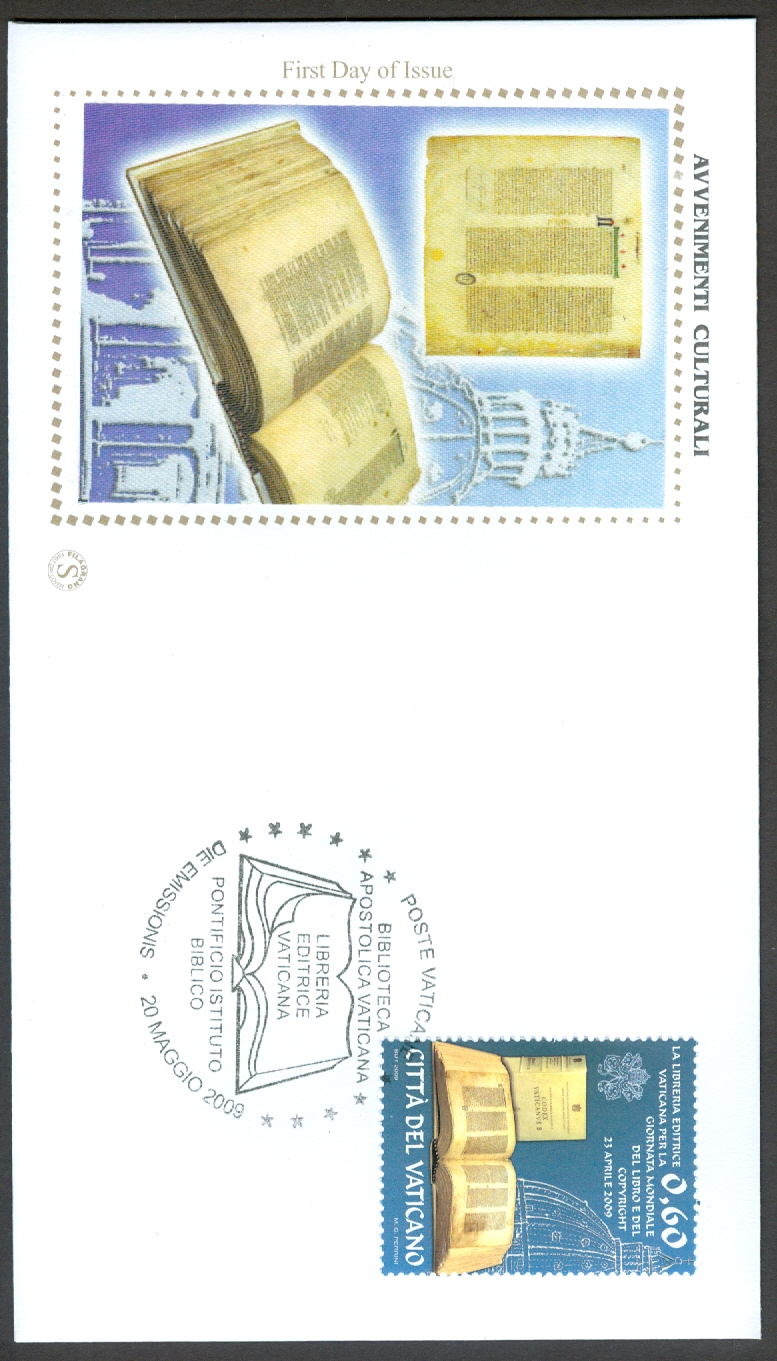

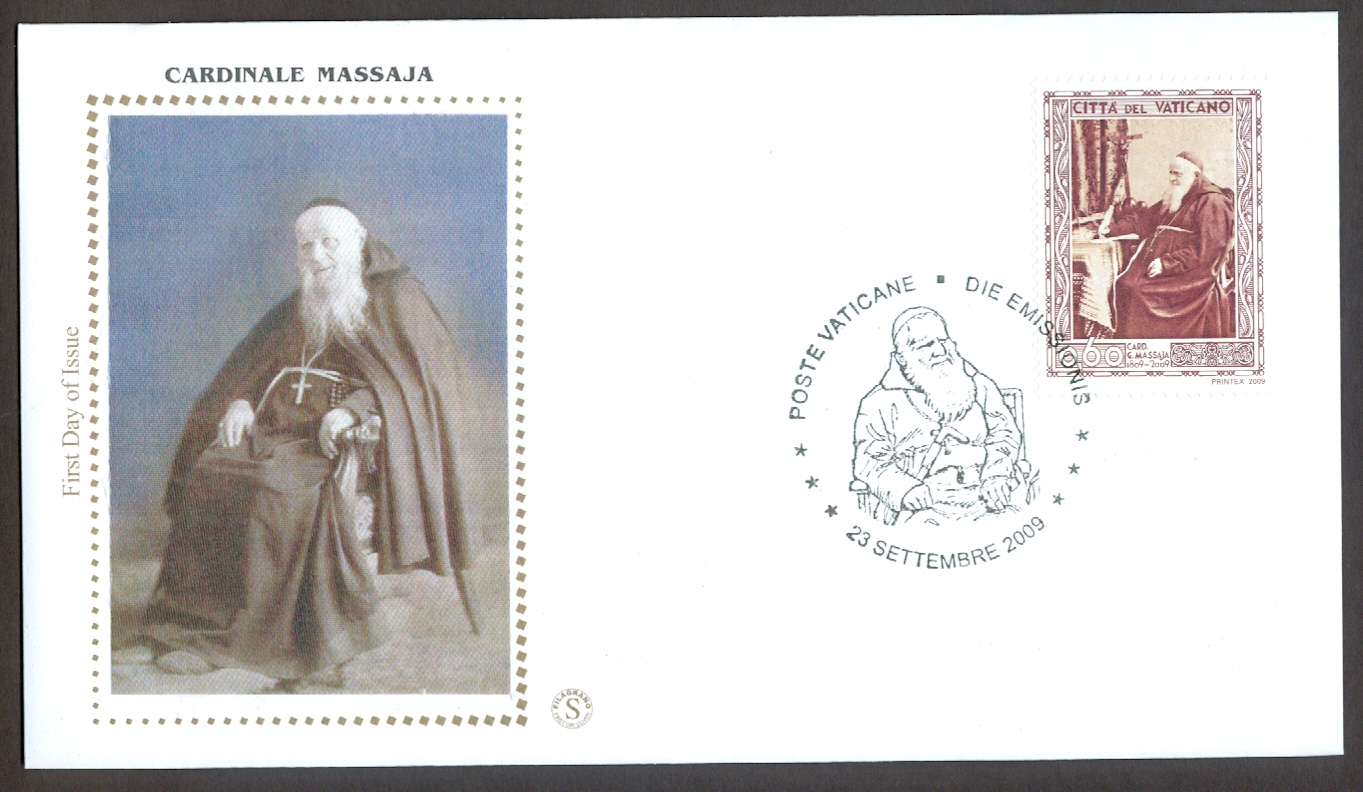

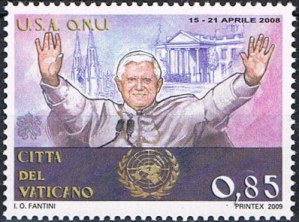

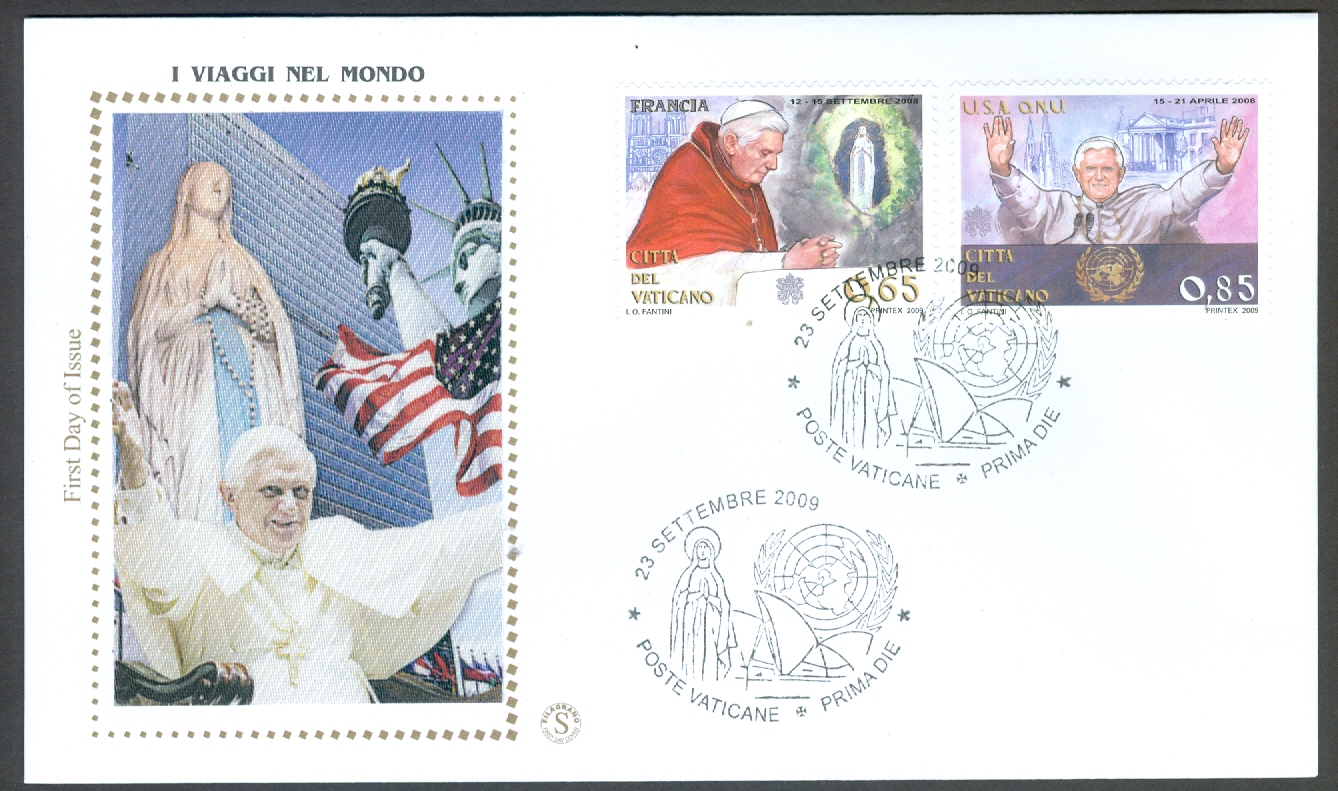






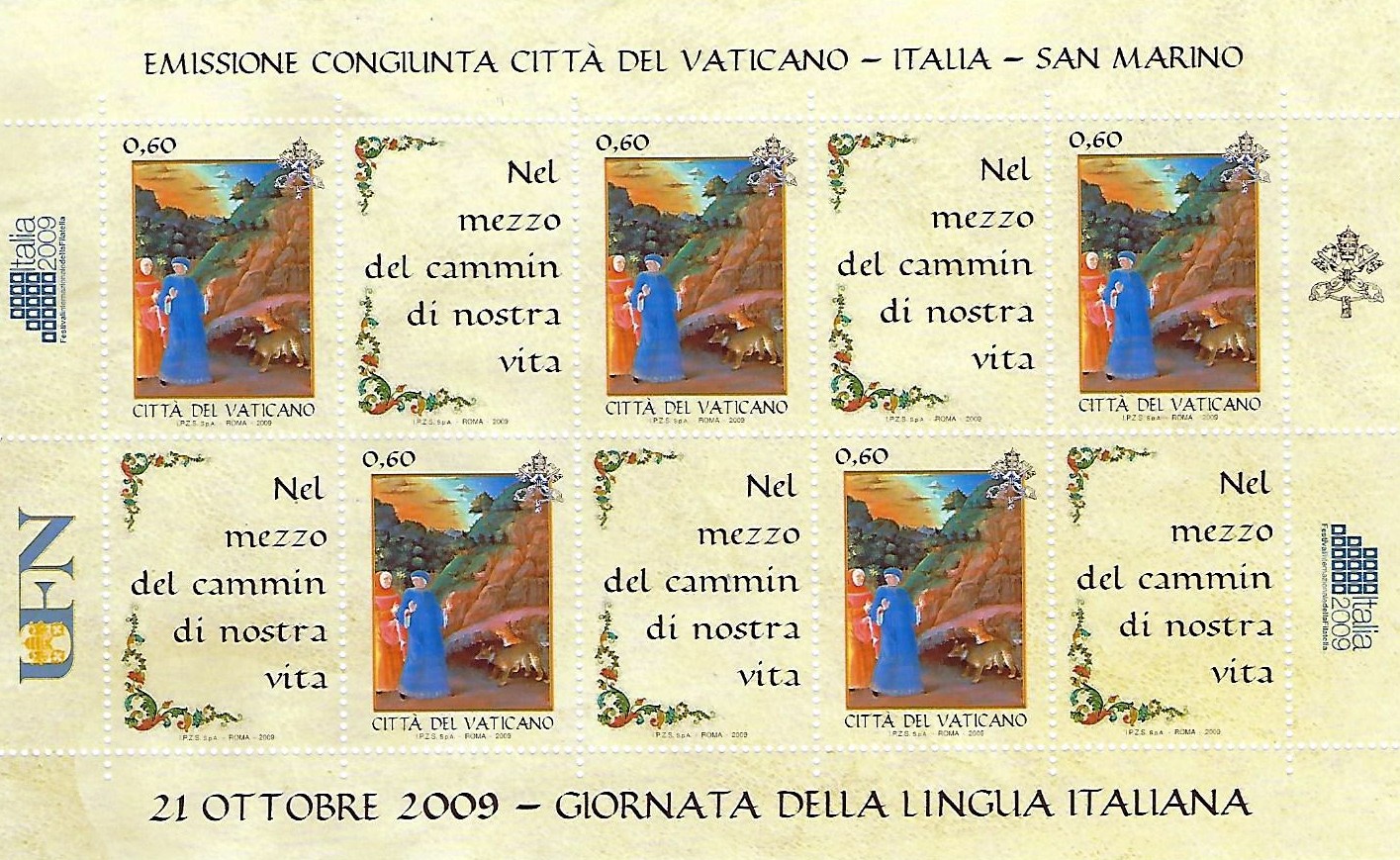

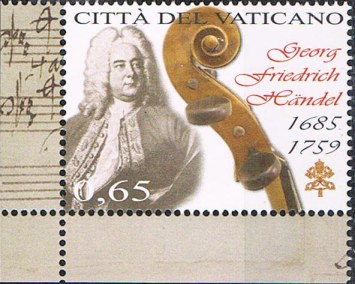
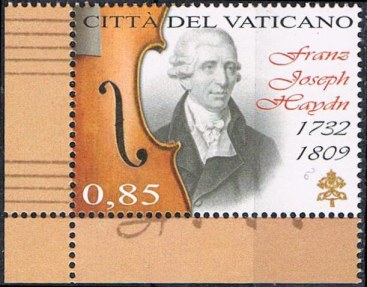
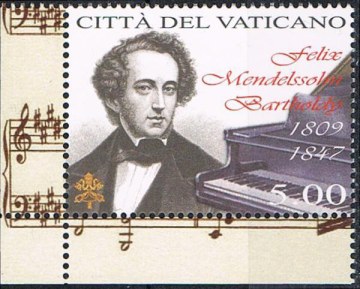











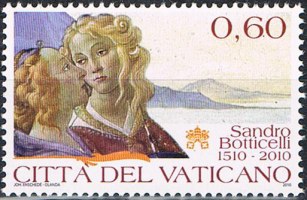



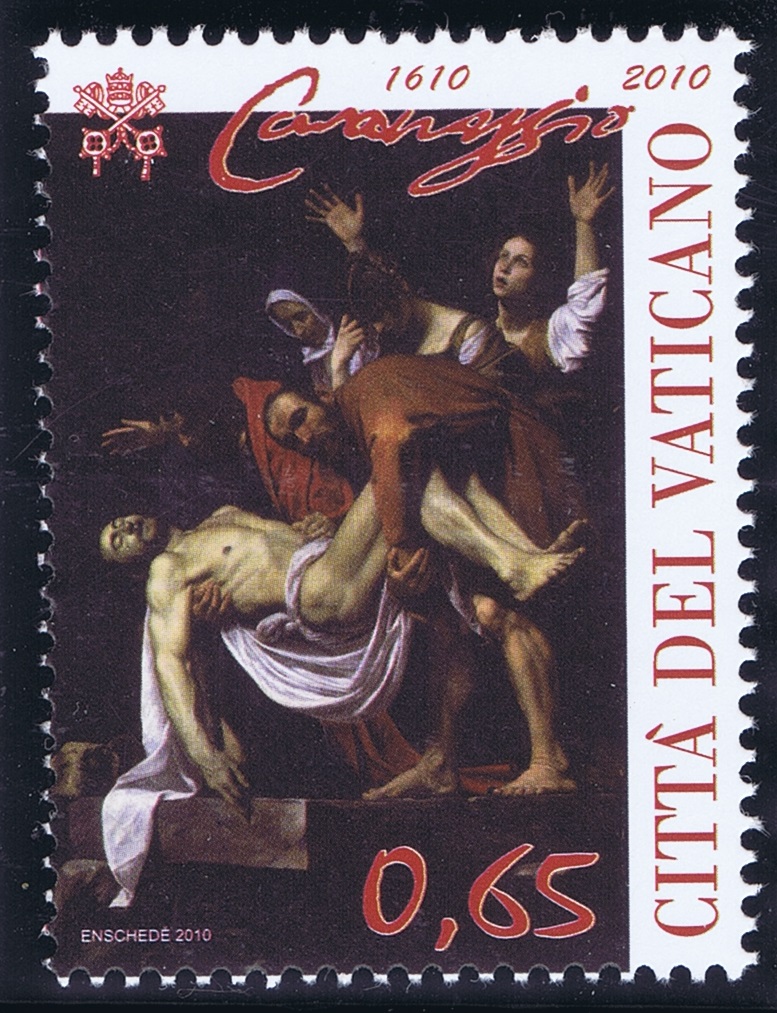









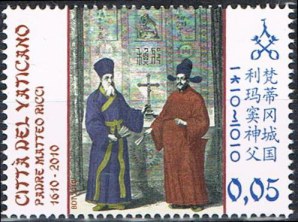



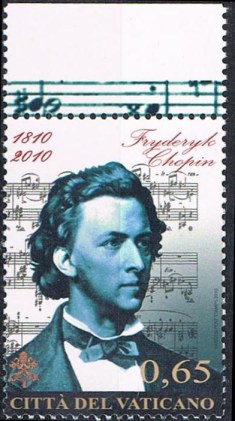
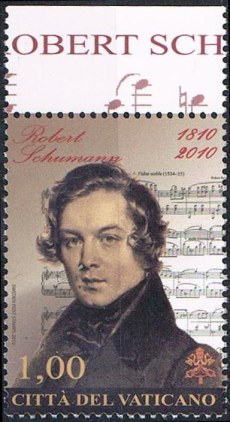
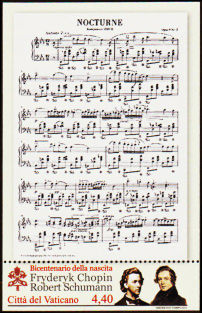
Frederyk Chopin And Robert Schumann
Vatican City made an annual music issue to celebrate the centenaries of notable composers. The 2010 issue recognized the bicentennial of the birth of Frederic Chopin and Robert Schumann. two of the nineteenth-century greatest composers of the Romantic era. In addition to individual postage stamps, the Philatelic Office released a leaflet consisting of a stamp depicting both composers as well as a portion of a Chopin Nocturne (E4.40). and a compact disc containing selections of music by Chopin and Schumann (the philatelic set, leaflet, and CD is offered at E9,90). The E0.65 Chopin and the E1,00 Schumann postal issues contain contemporary photographs of each composer superimposed over a sheet of music. The Schumann image is from an 1839 lithograph by Josef Krichuber. The Philatelic Office issued the first CD in this format in 2009.
Fryderyk Franciszek Chopin (1810-1849) was born in a small Polish village in the Duchy of Warsaw, the son of a Polish mother and a French father. Chopin, a child prodigy by age 8, is widely recognized as one of the most significant composers of the Romantic era and composed exclusively for the piano: waltzes, nocturnes, preludes, mazurkas, and polonaises. Chopin spent two summers of his youth in the Polish countryside and portions of his compositions include folk music themes. Chopin was a fervent Polish nationalist. In the later eighteenth century. Prussia. Austria. and Russia absorbed Poland. and as a political entity, Poland was restored after World War I. Although he departed Poland for Paris at age twenty. Chopin is considered not only a national hero but also the greatest of Polish composers. From 1837-1847 Chopin carried on a romantic relationship with novelist George Sand (Amandine Aurore Lucile Dupin) at times wintering in Majorca. Plagued with tuberculosis, the poet of the piano died in Paris in 1849. Visitors today find his tomb at the Parisian Prue Lachaise Cemetery frequently adorned with flowers!
Robert Alexander Schumann (1810-1856) was born in Zwickau. Saxony, a north German kingdom then recently dissolved by Napoleonic conquest into the Confederation of the Rhine. At a young age, he injured a finger on his right hand so that an intended career as a concert pianist Was set aside for that of a composer of works for the piano and, later. lieder and works for orchestra. Schumann composed exclusively for the piano during most of the 1830s. His song cycles, four symphonies, and other works occupied later years. He conducted a long romantic relationship with Clara Weick. also an accomplished pianist, and daughter of Chopin's piano teacher Friedrich Weick. who opposed their relationship. His later years of varying productivity were plagued by illness (perhaps mercury poisoning, syphilis, or bipolar disorder). Suffering from dramatic mood swings, in 1854 he attempted suicide by leaping into the Rhine River and spent his final Iwo years in a Bonn sanatorium, at his request. Robert and Clara Schumann's tomb is found at the Zentralfriedhof (Central Cemetery) in Bonn. Germany.
(Author - James C. Hamilton, From - Vatican Notes Volume 59, Issue 347, Q1 2010 pages 19-20)

